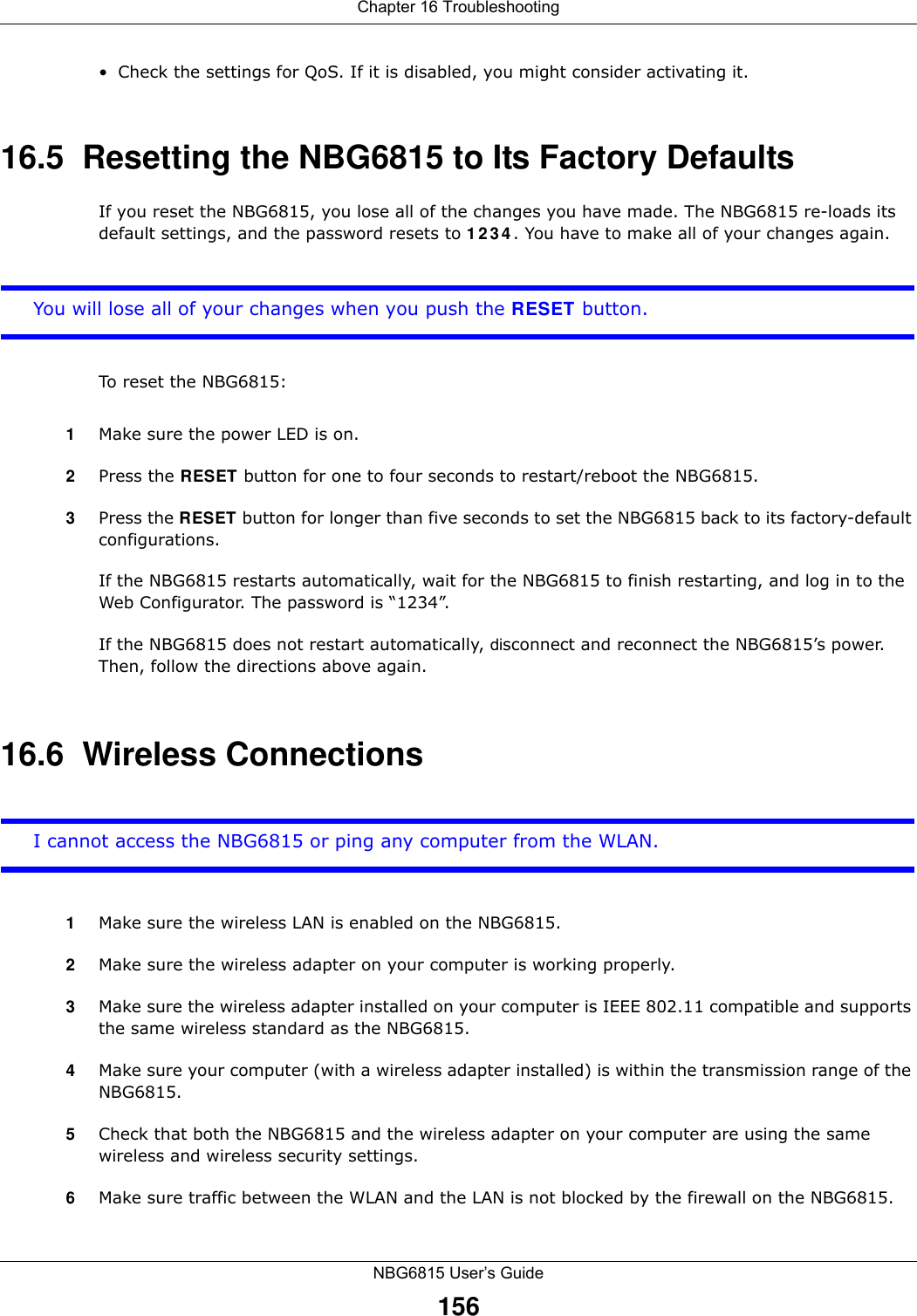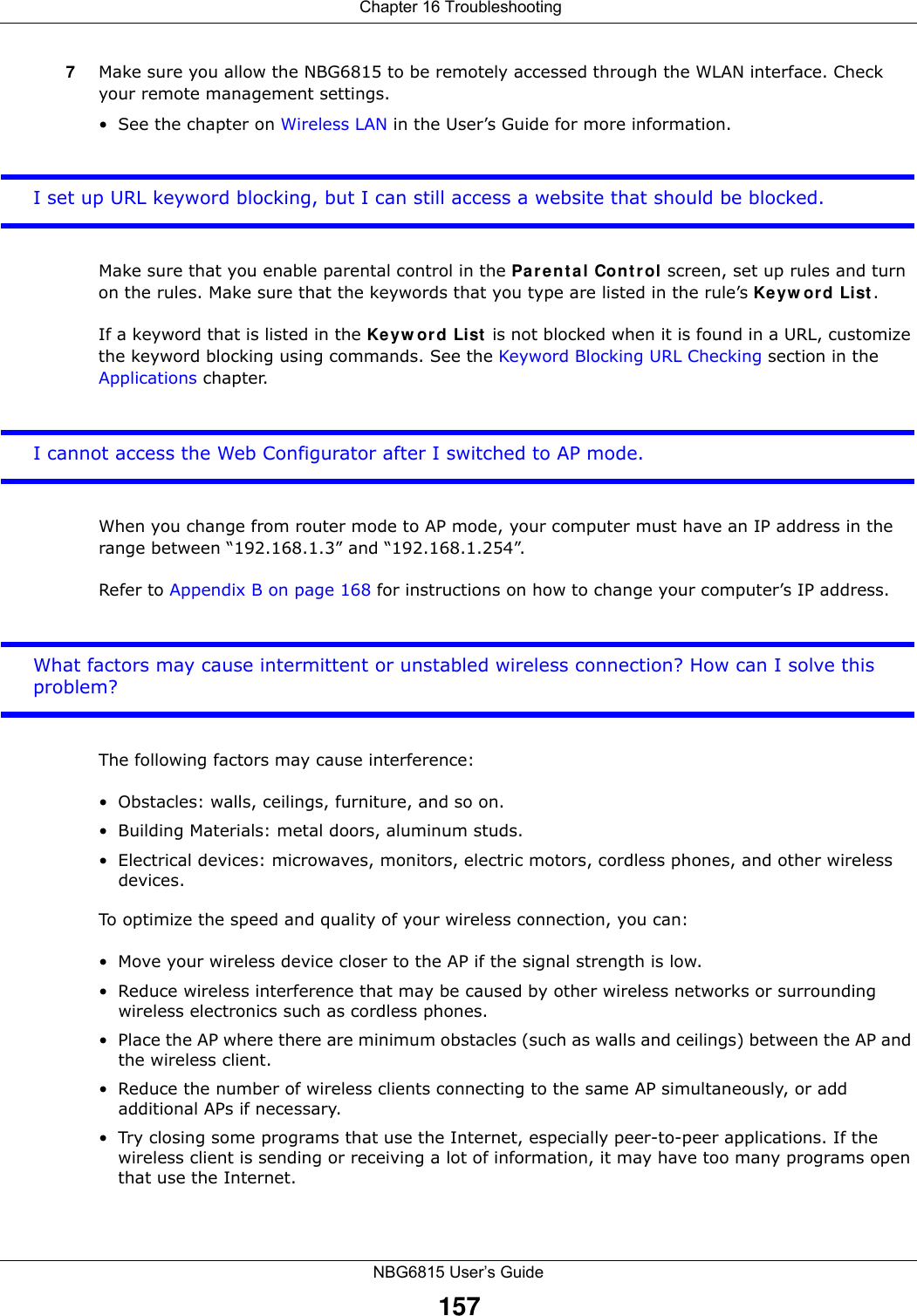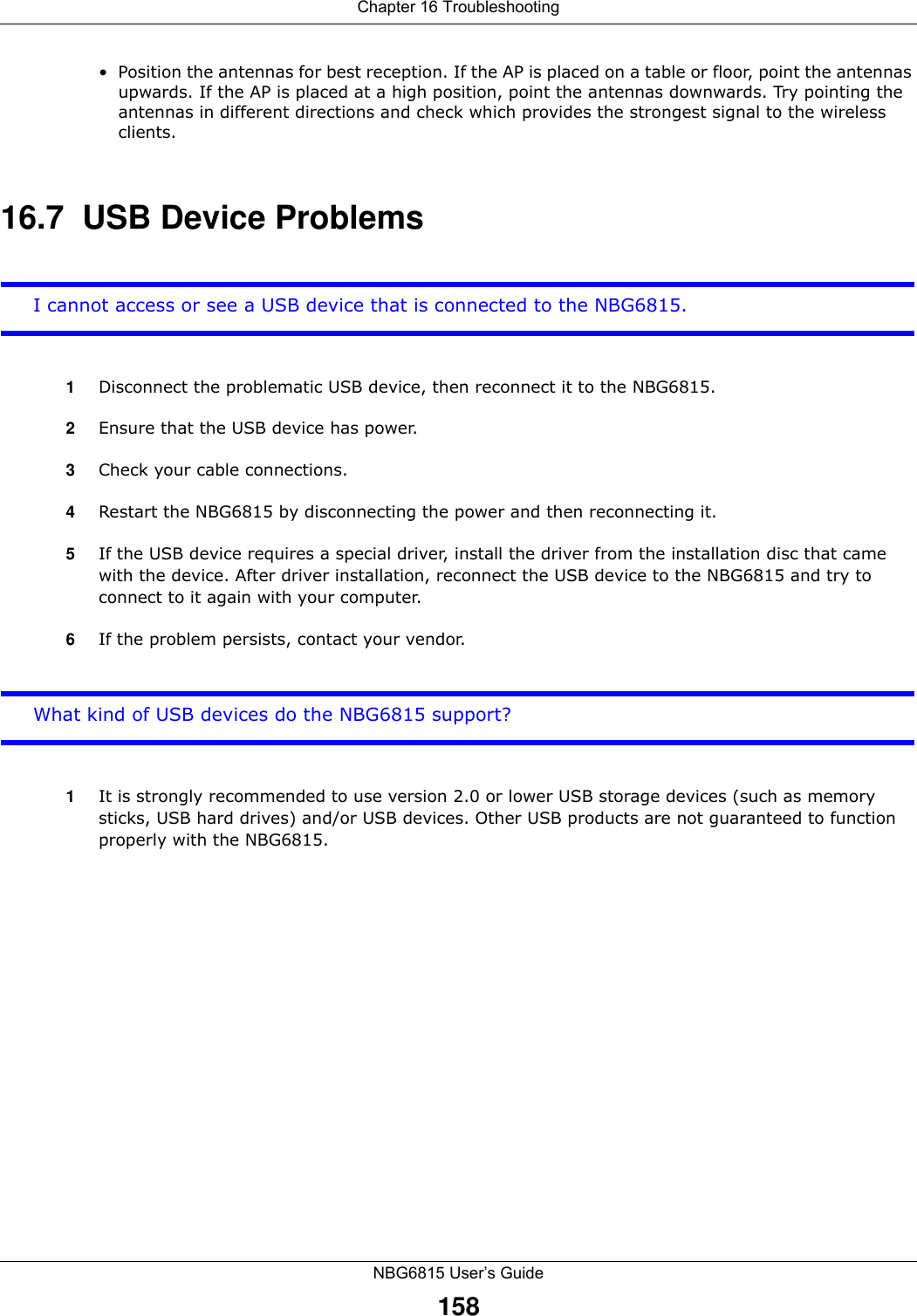ZyXEL Communications NBG6815 Simultaneous Dual-Band Wireless AC2200 Gigabit Ethernet Gateway User Manual Book
ZyXEL Communications Corporation Simultaneous Dual-Band Wireless AC2200 Gigabit Ethernet Gateway Book
Contents
- 1. User manual-1
- 2. User manual-2
User manual-1
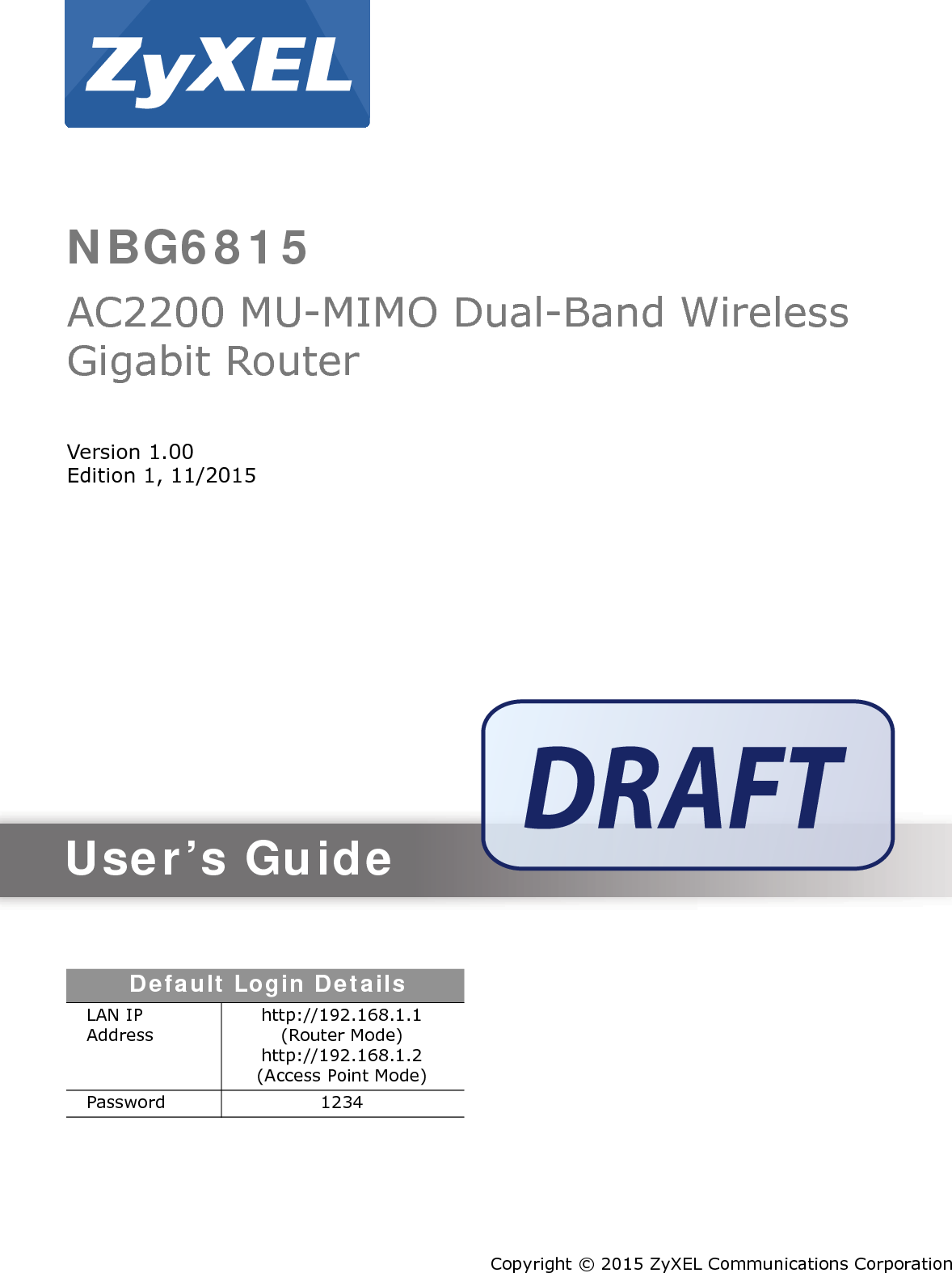
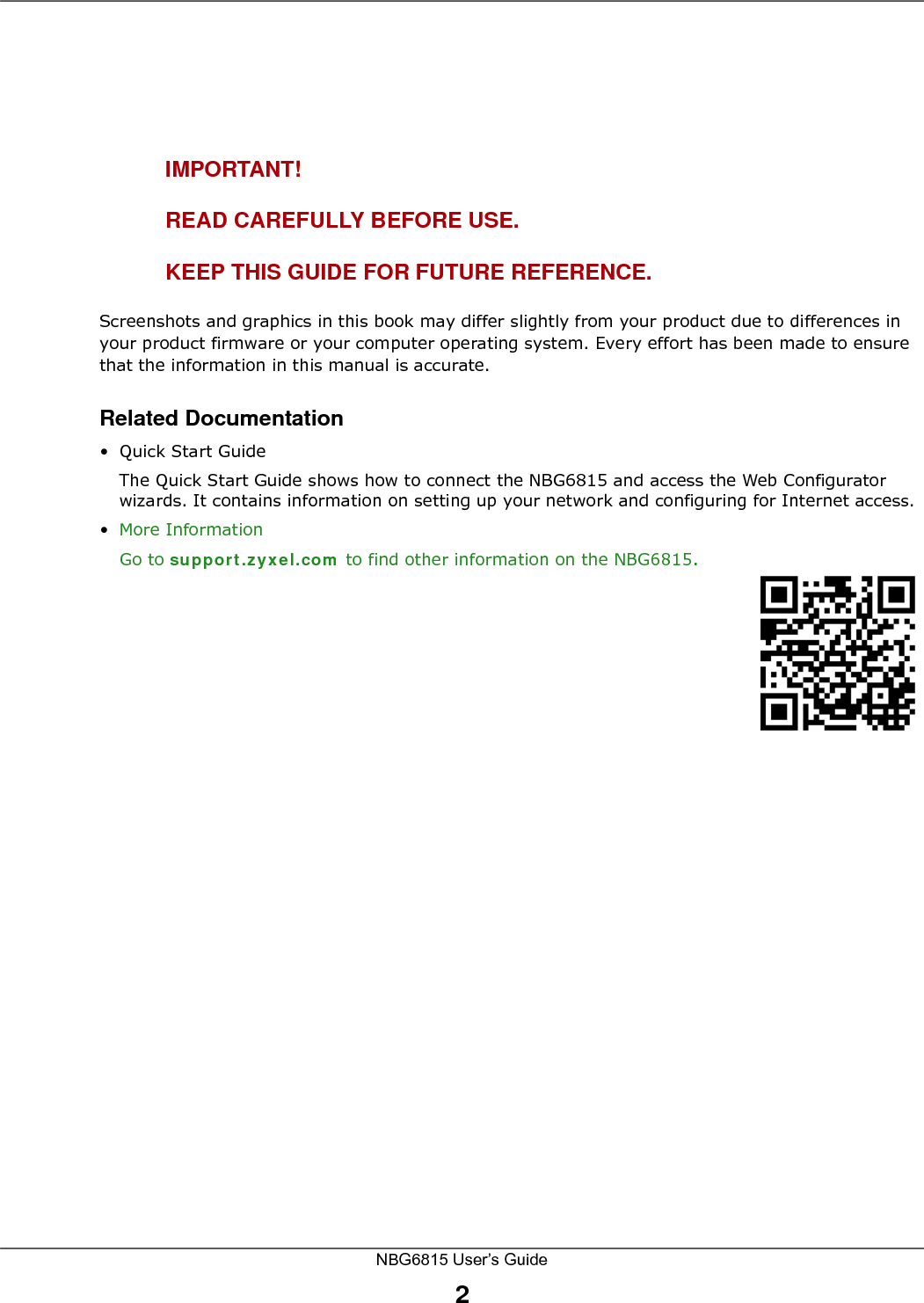
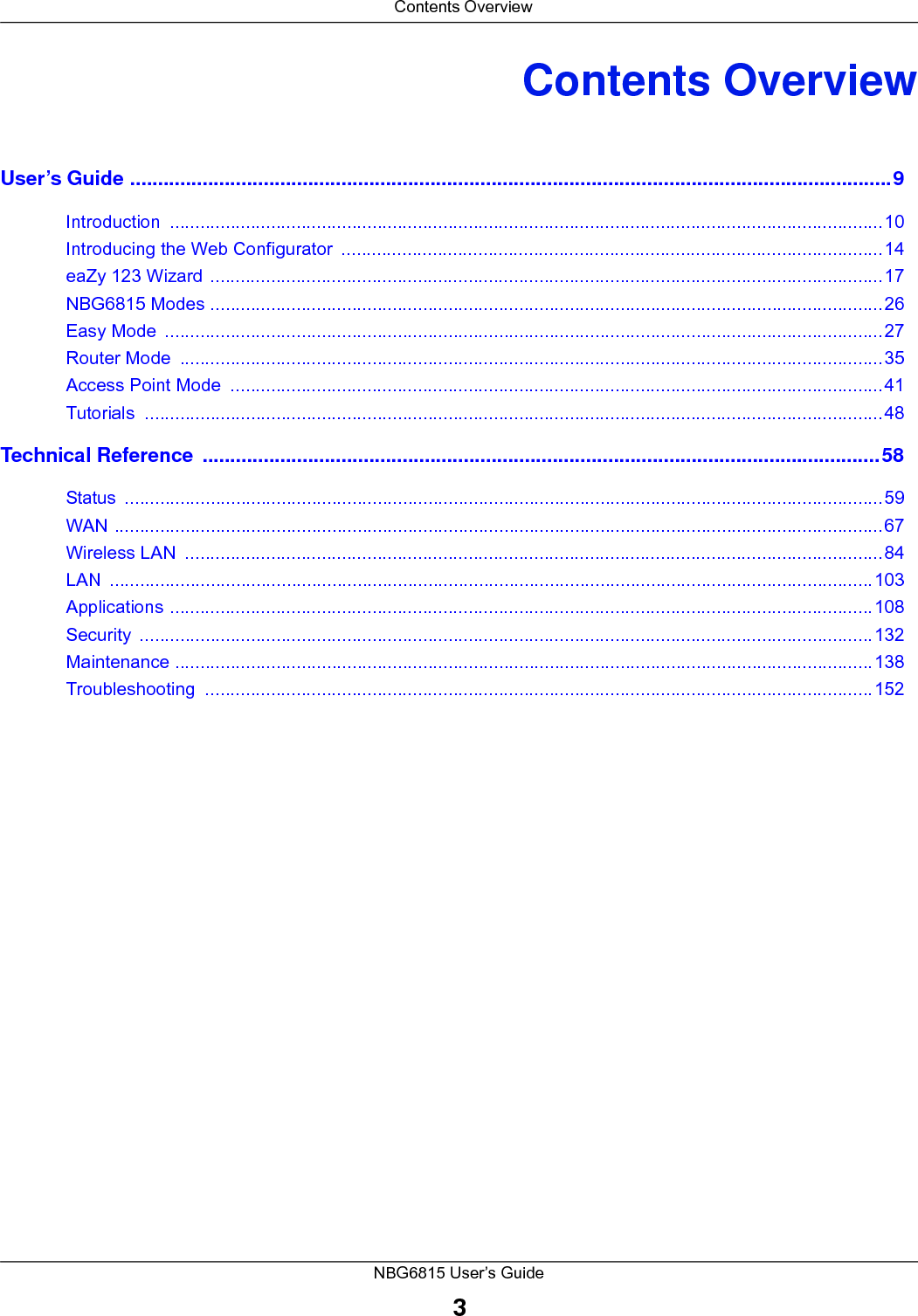
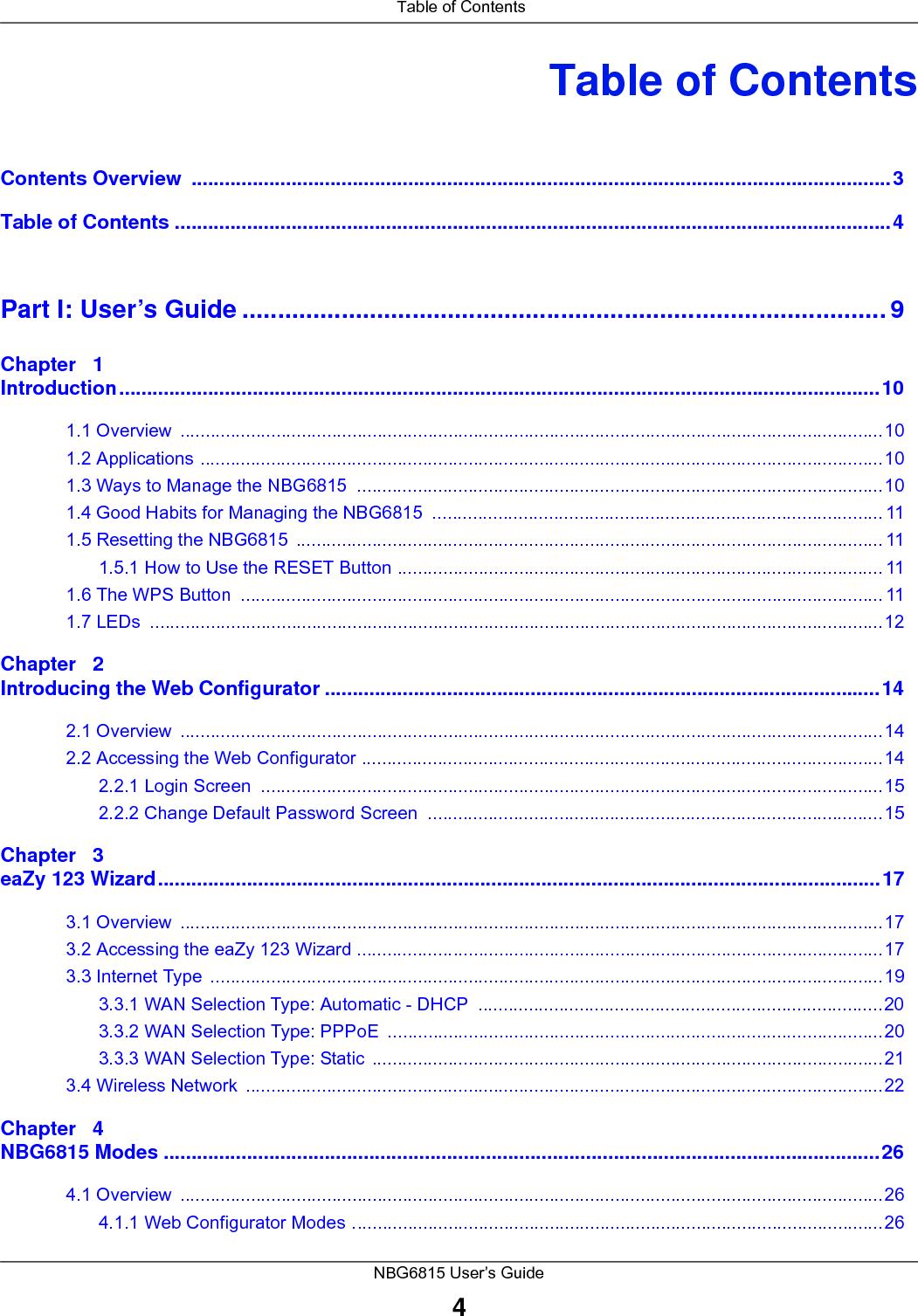
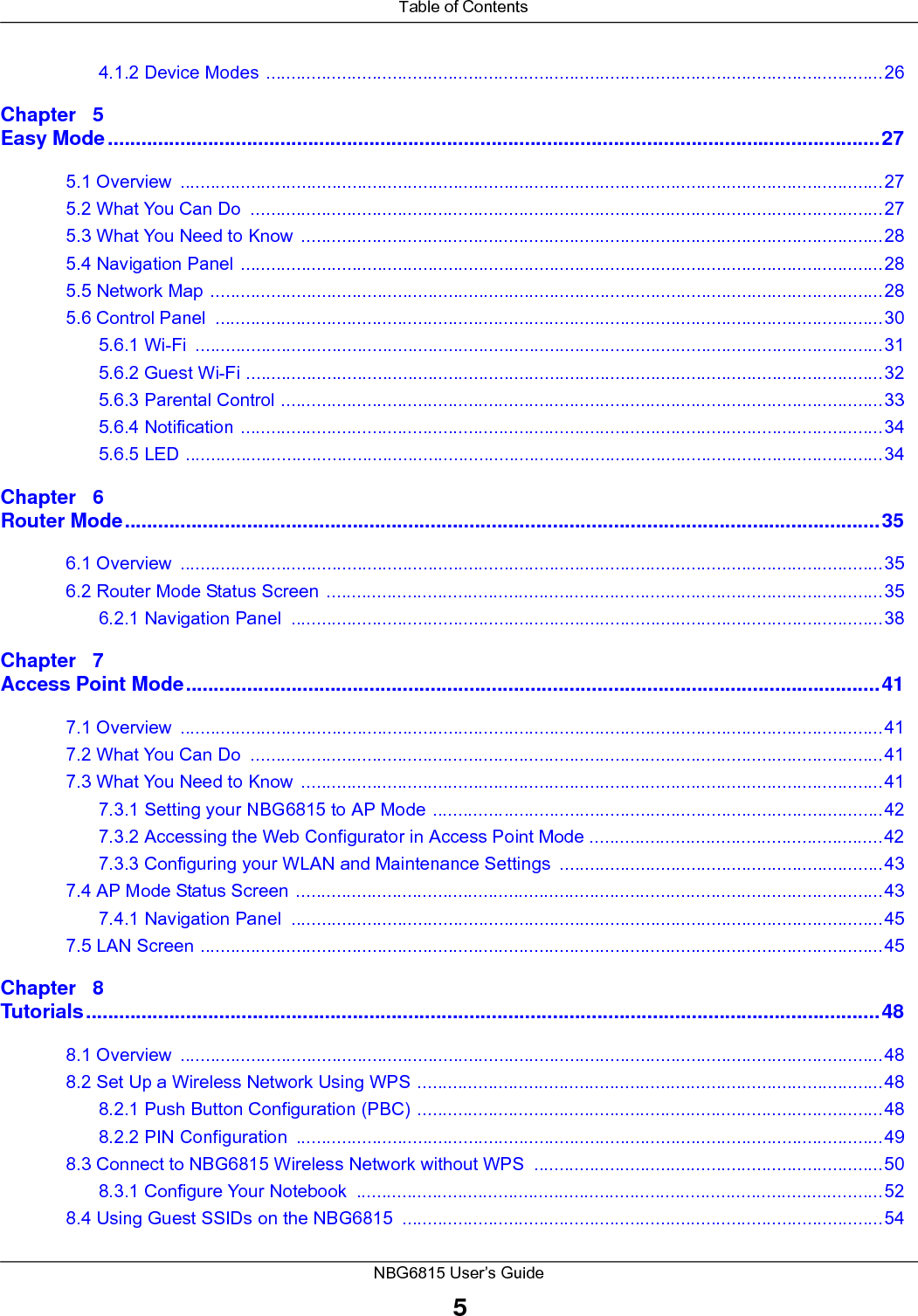
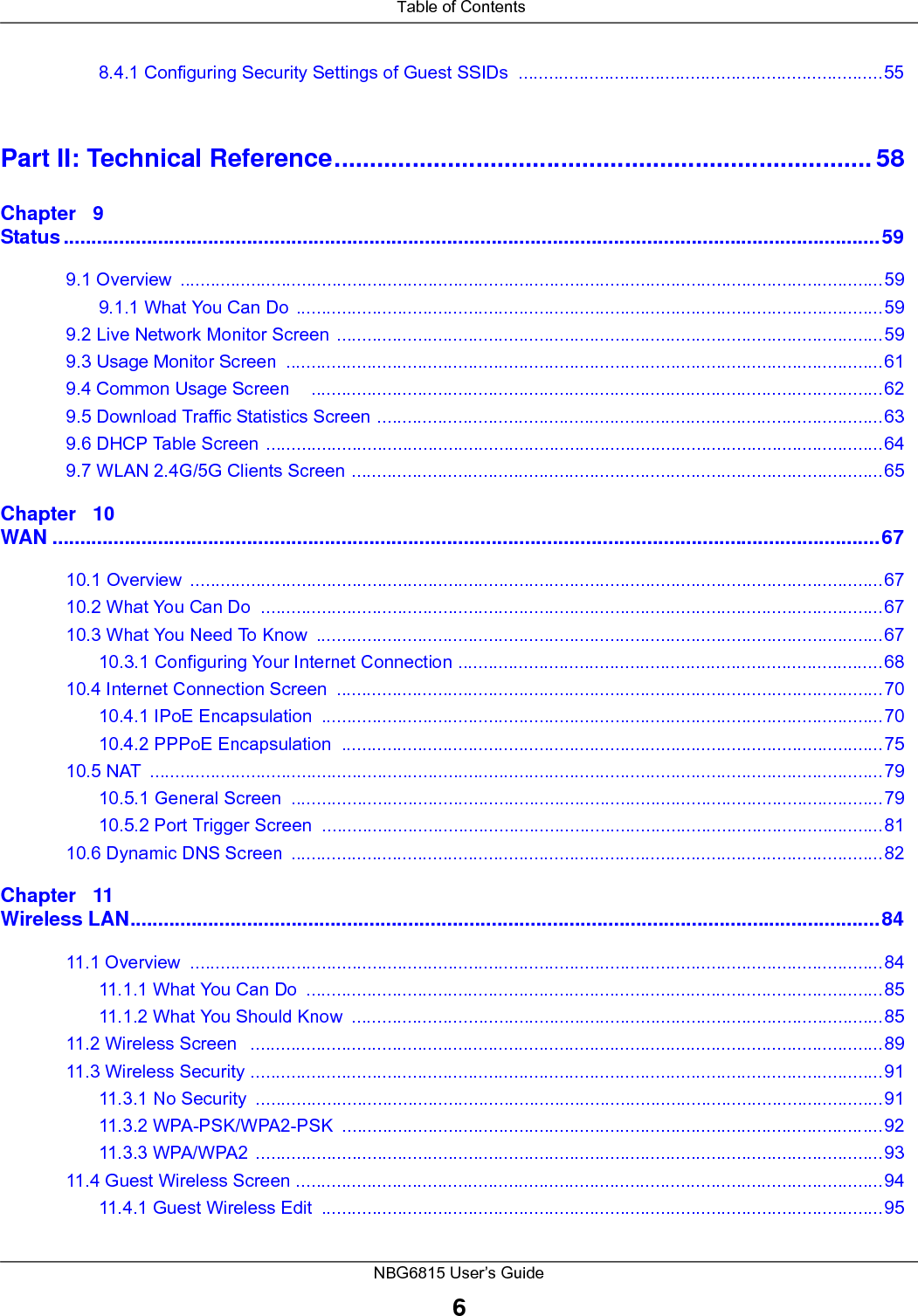
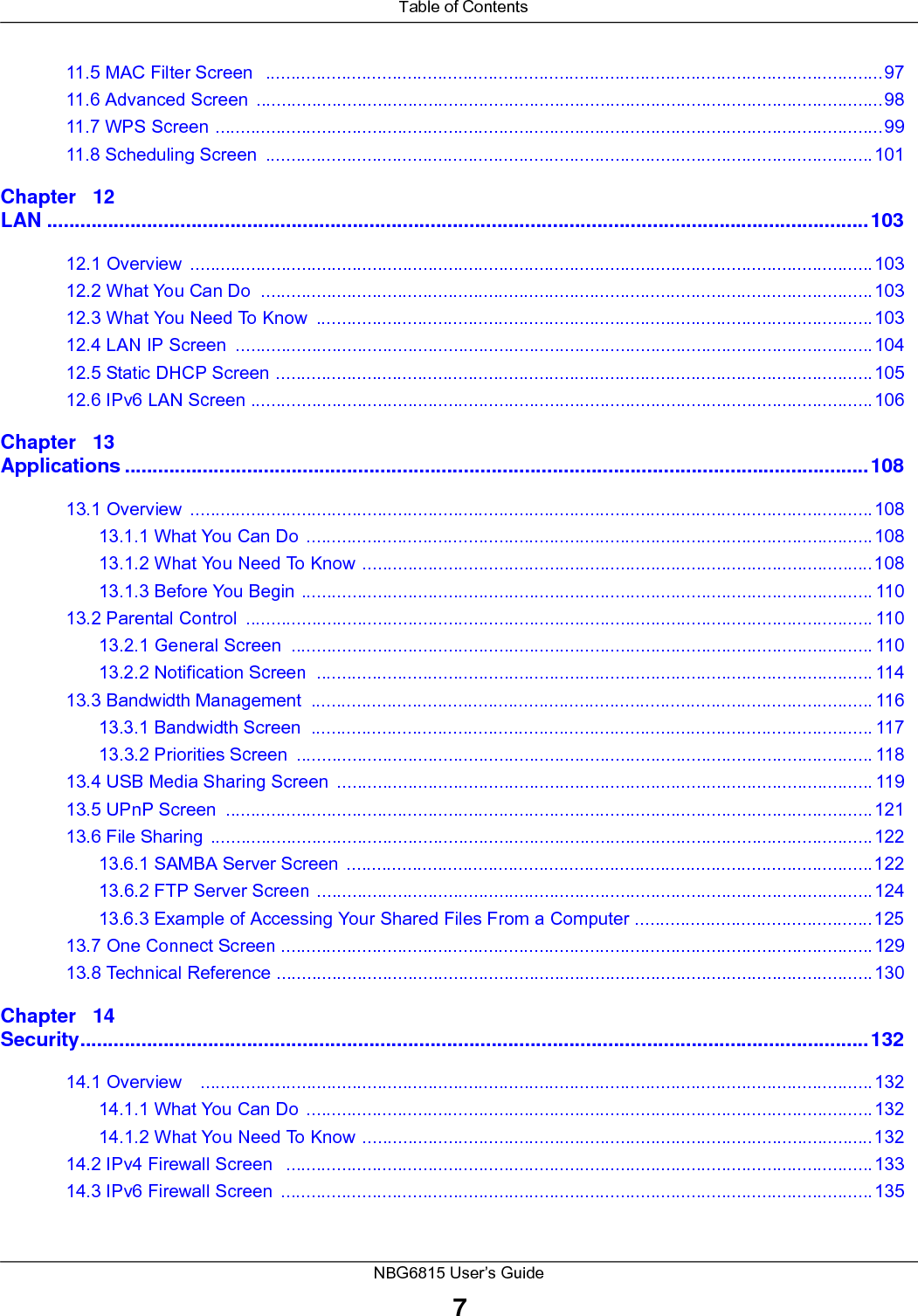
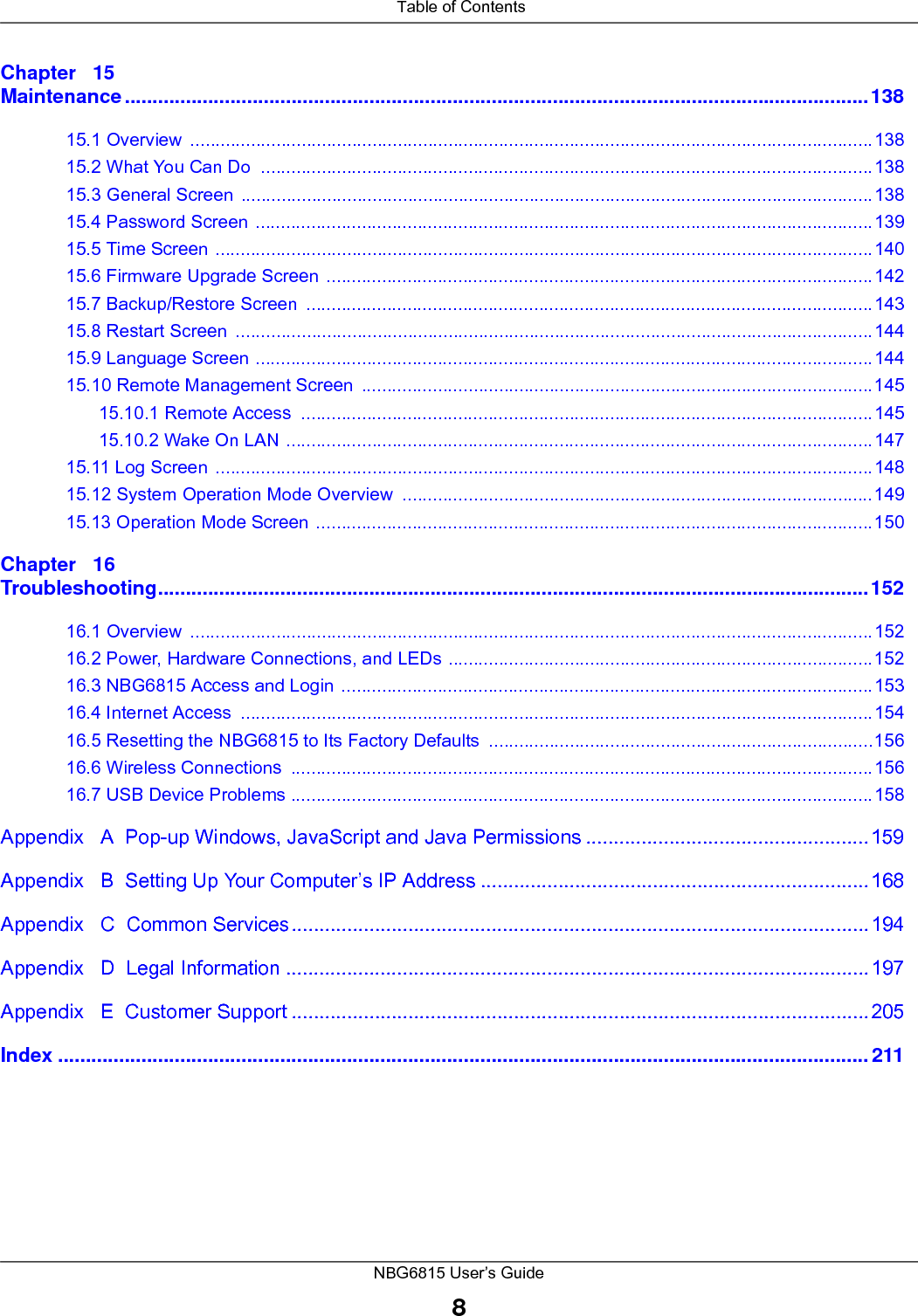

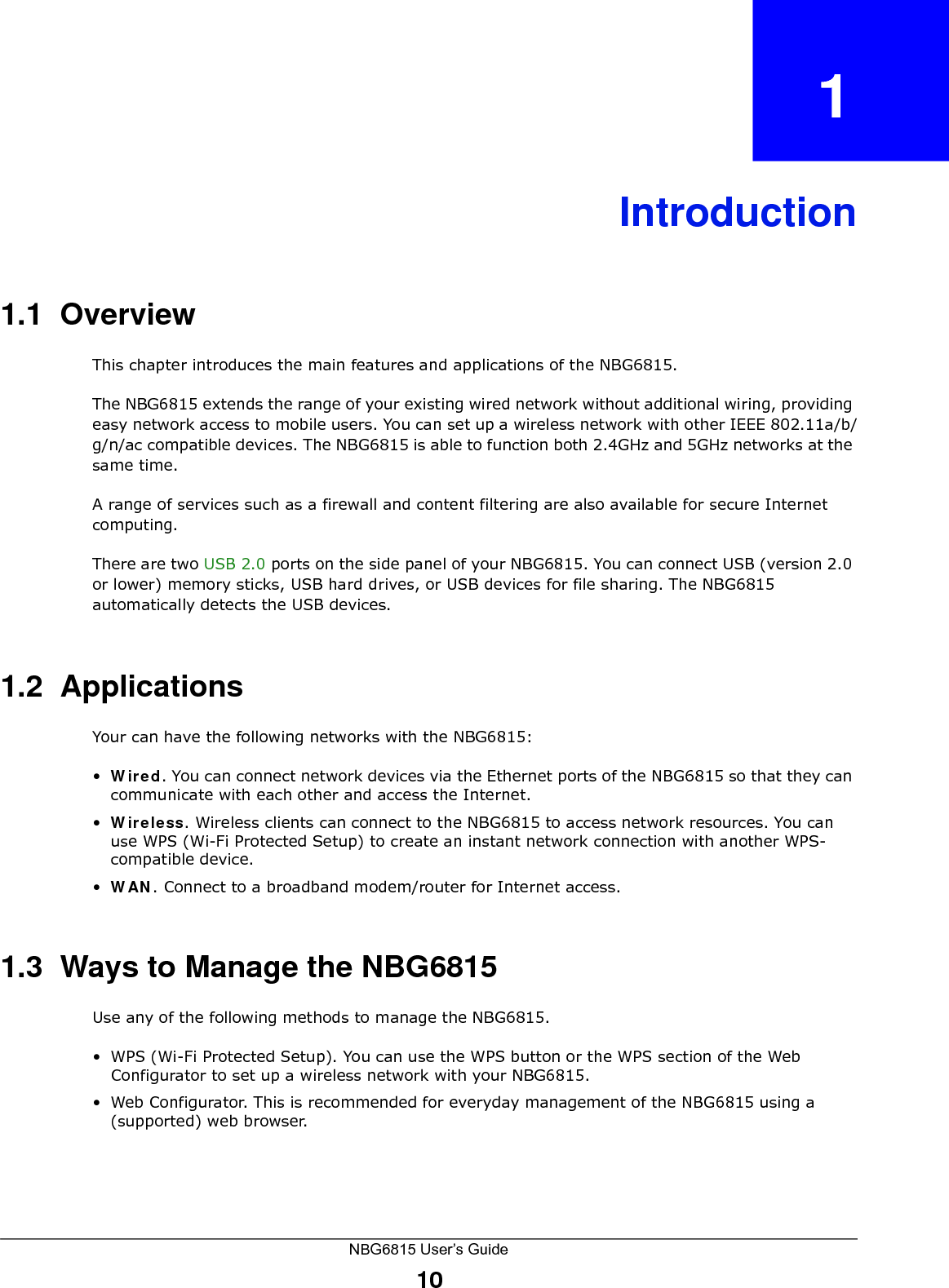
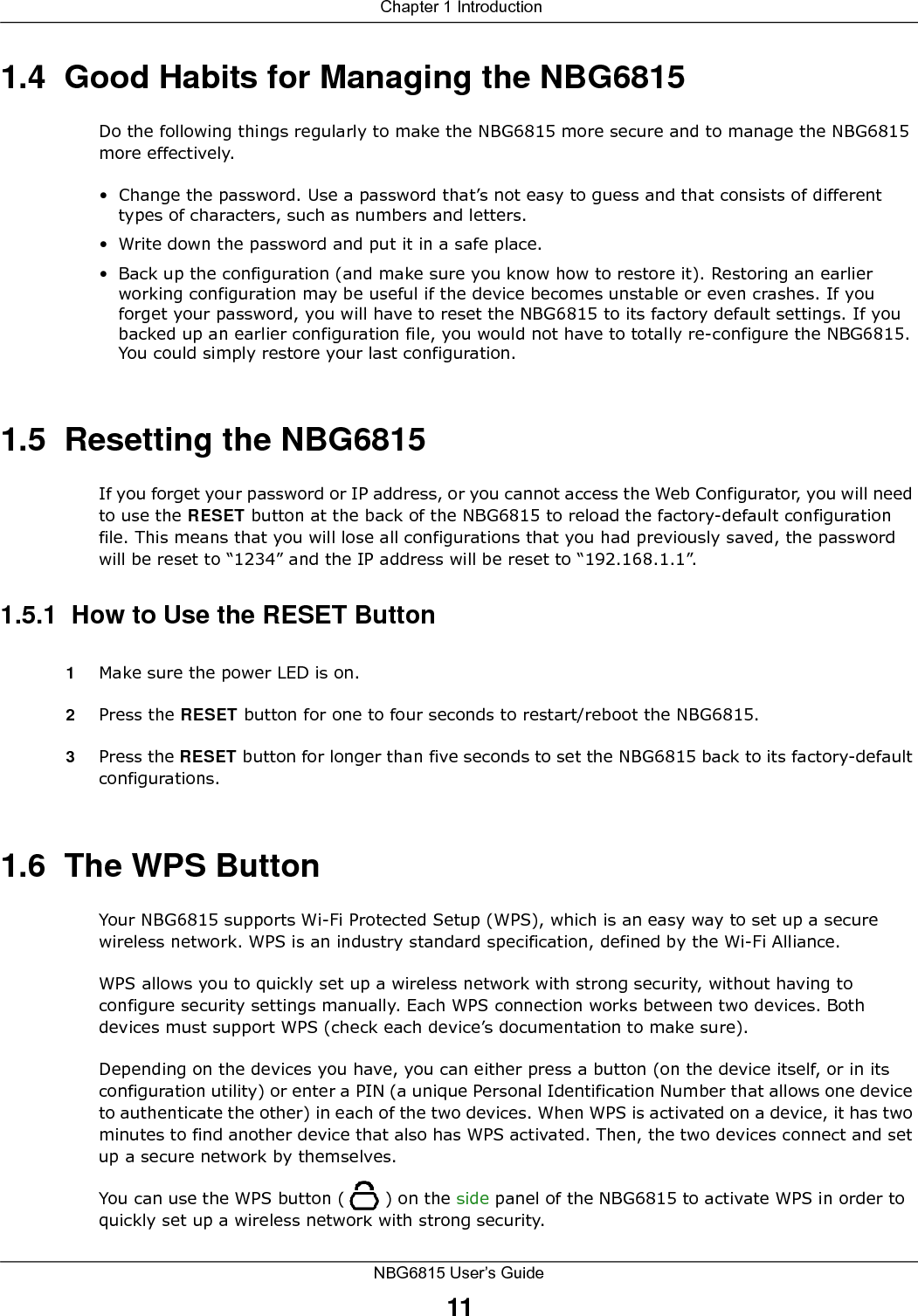
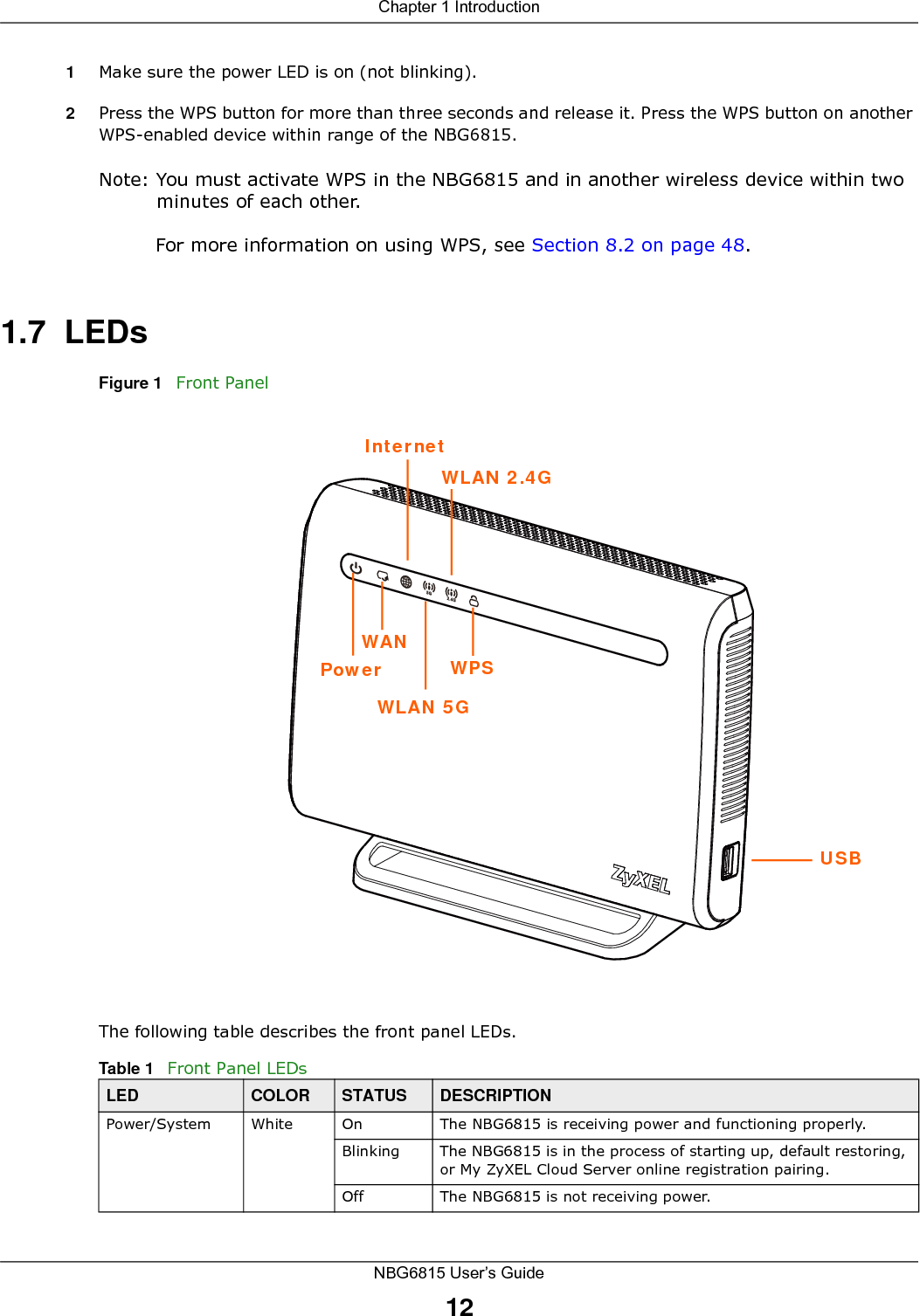
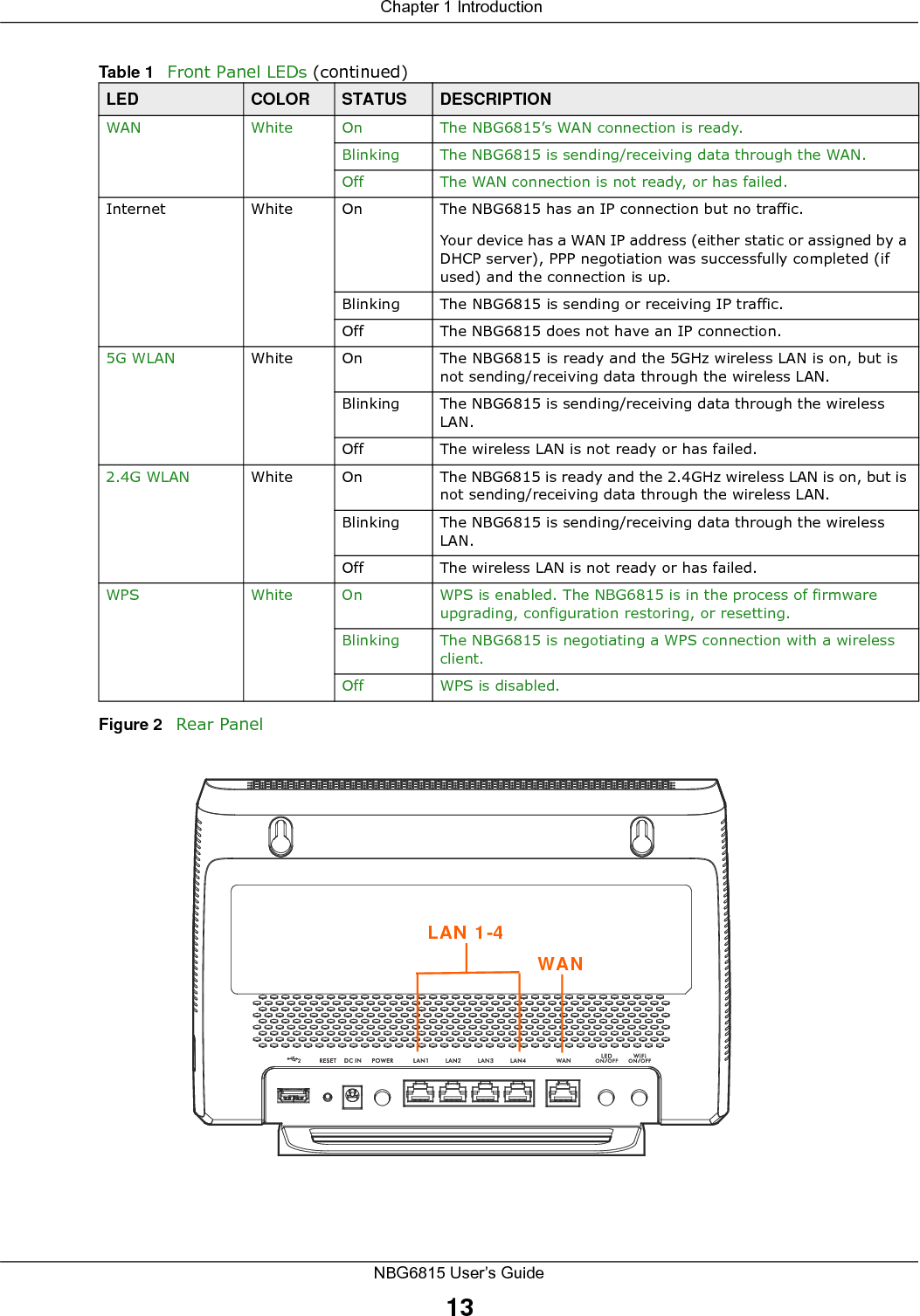
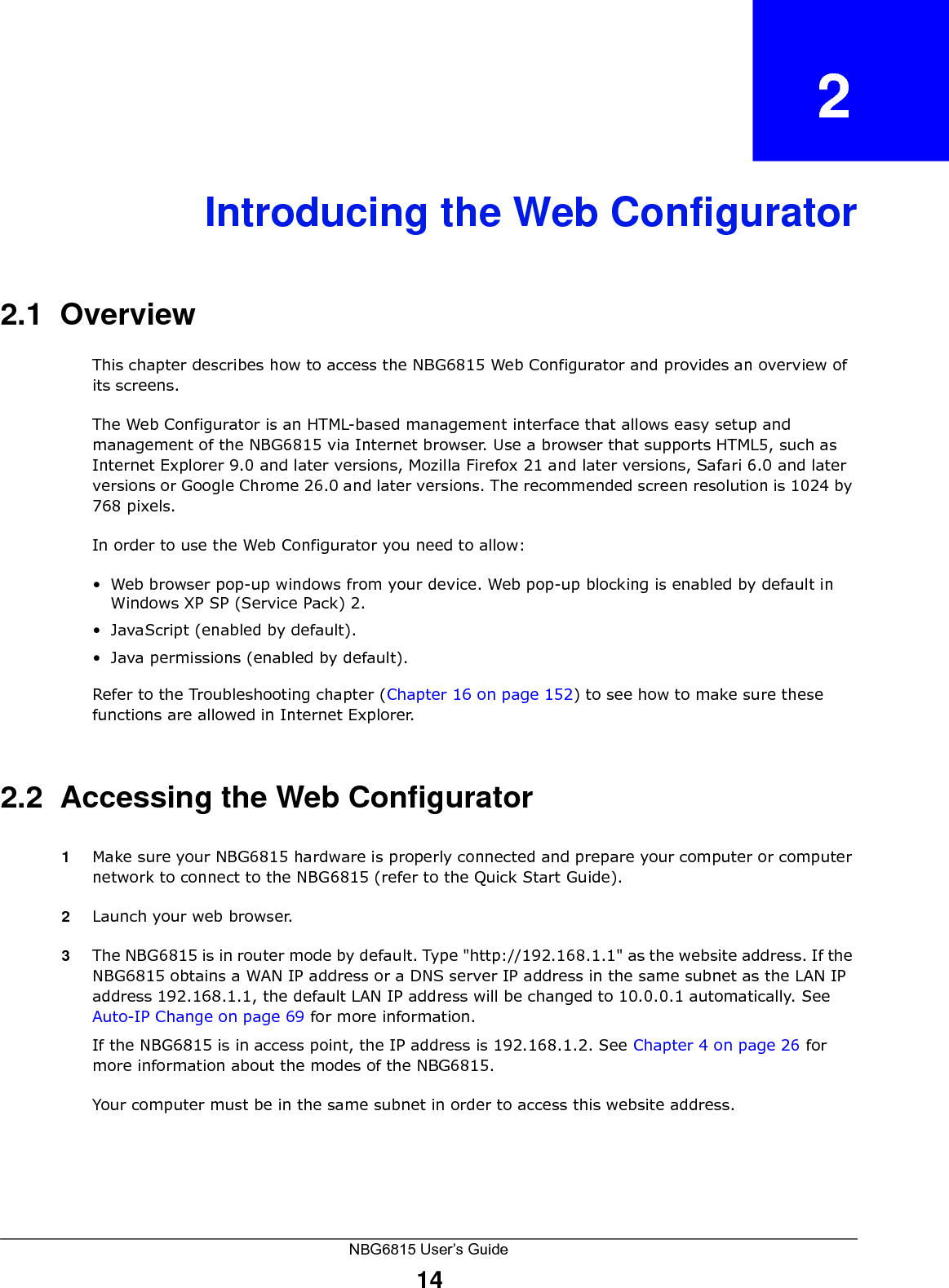
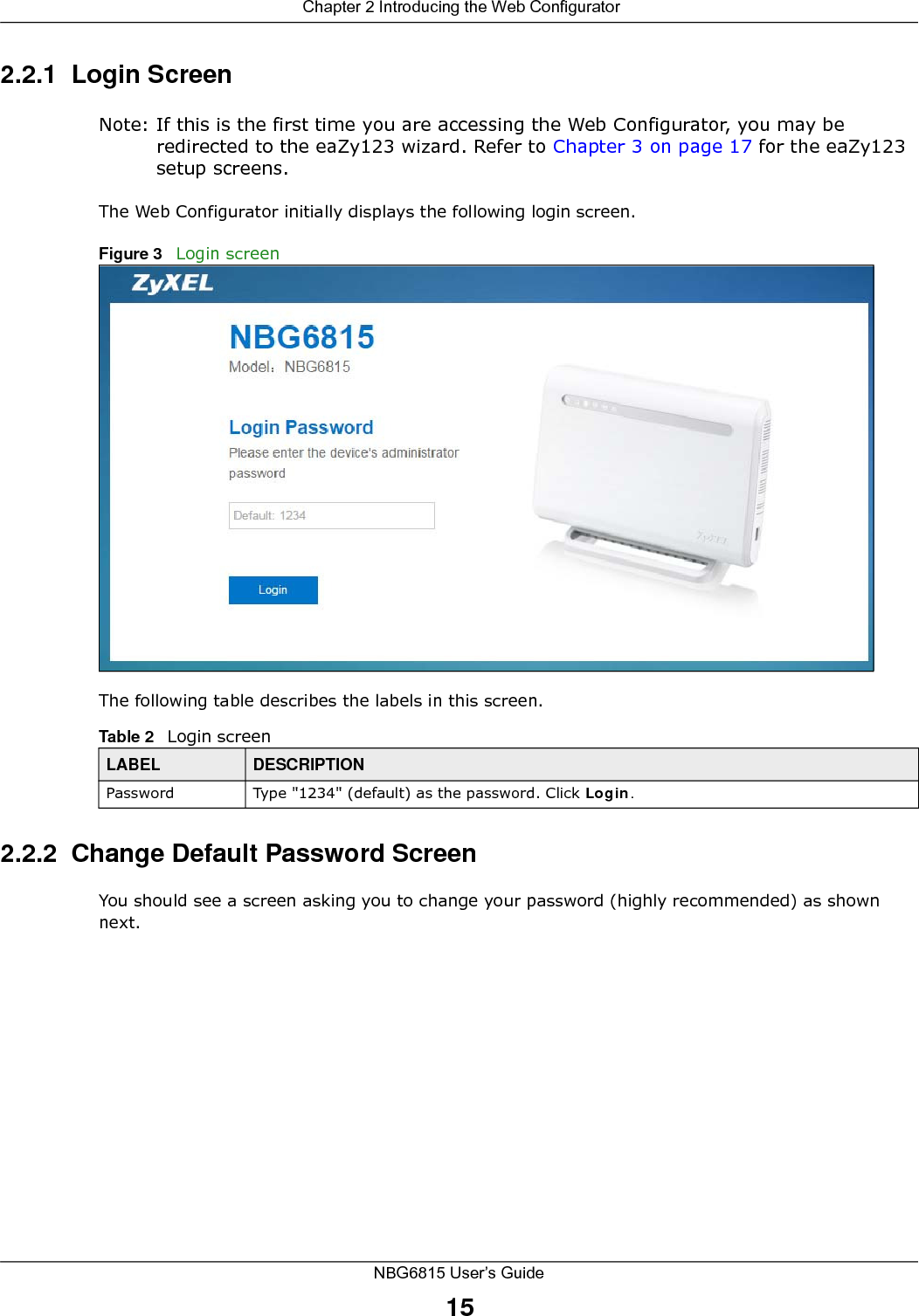
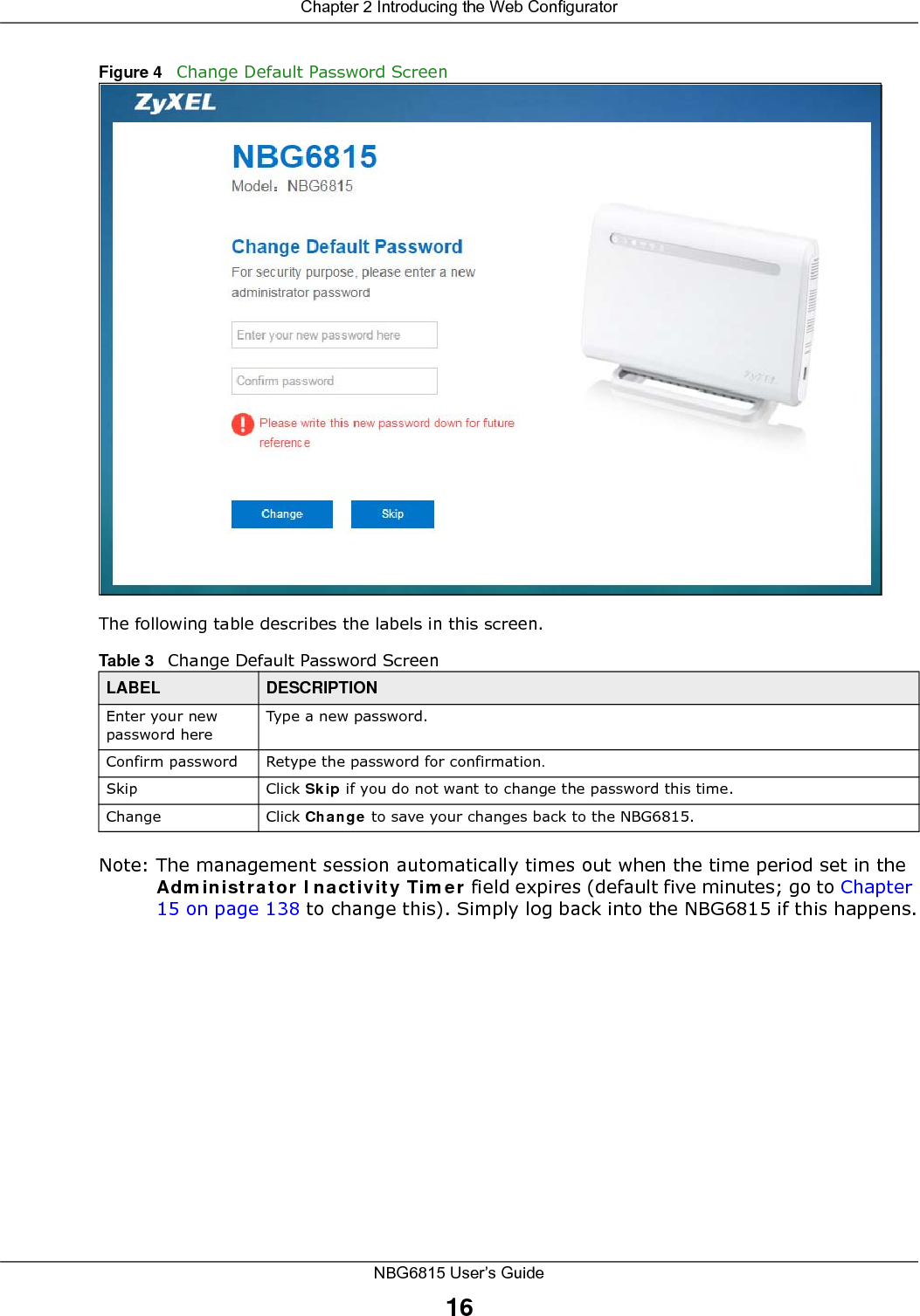
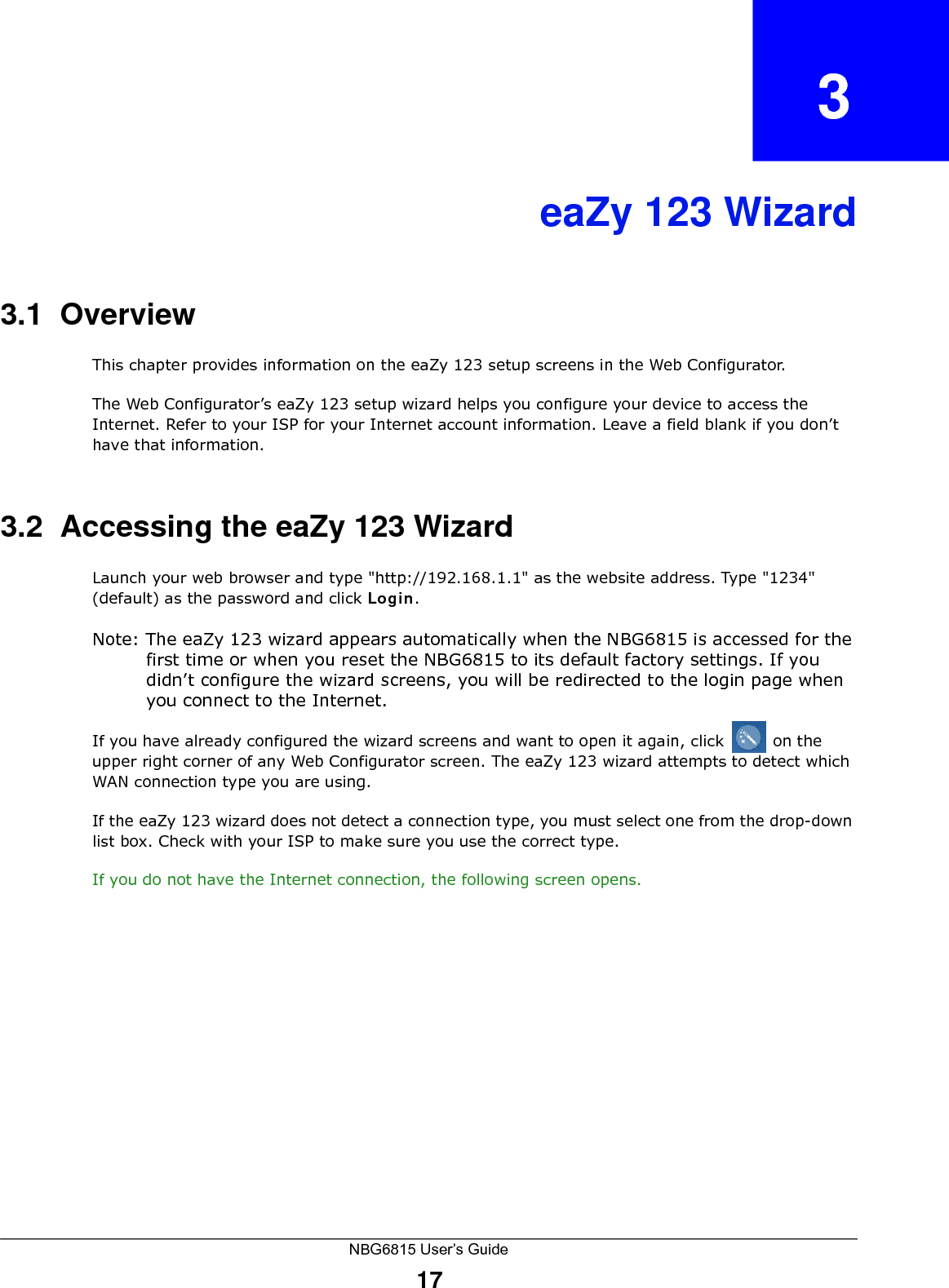
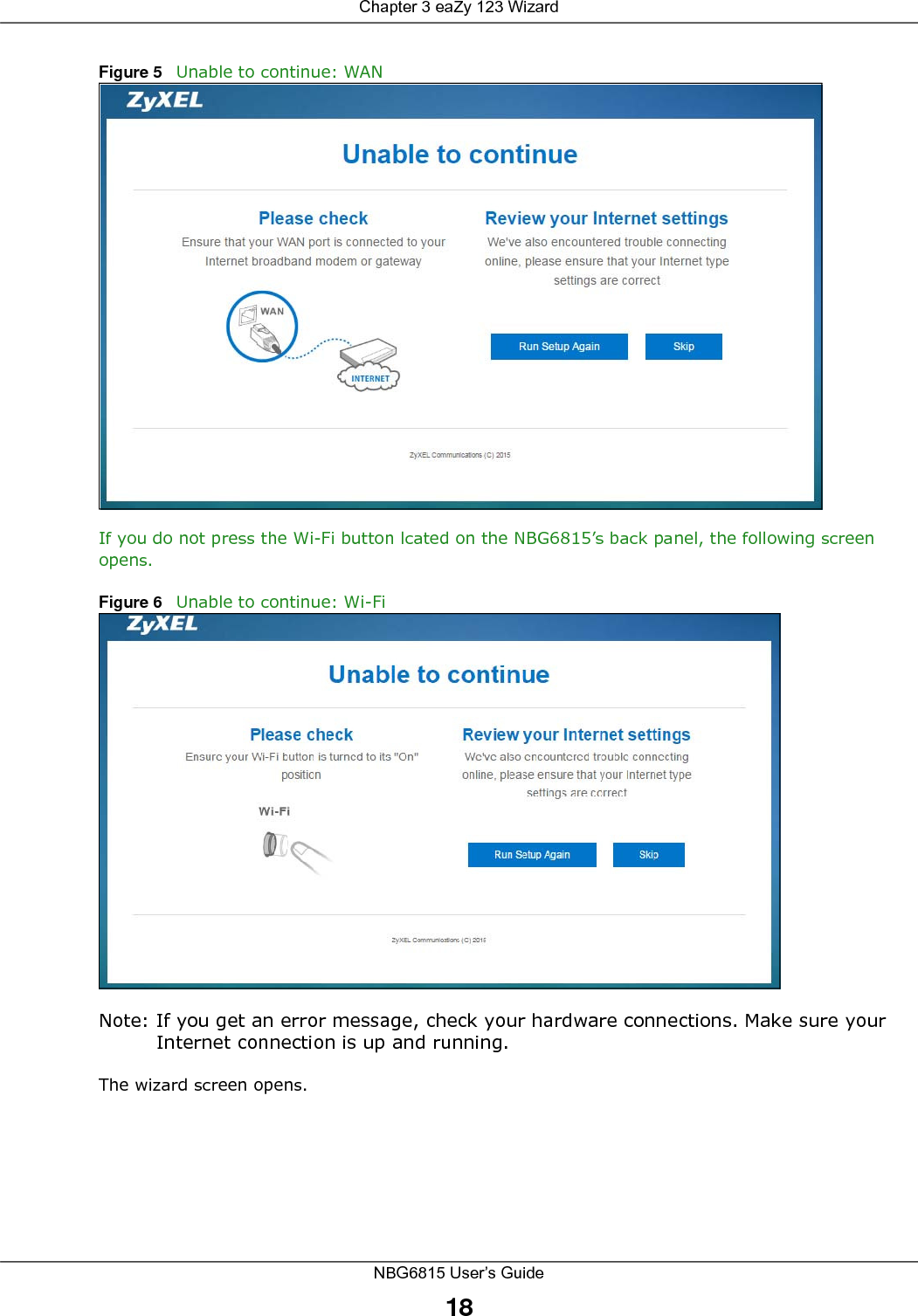
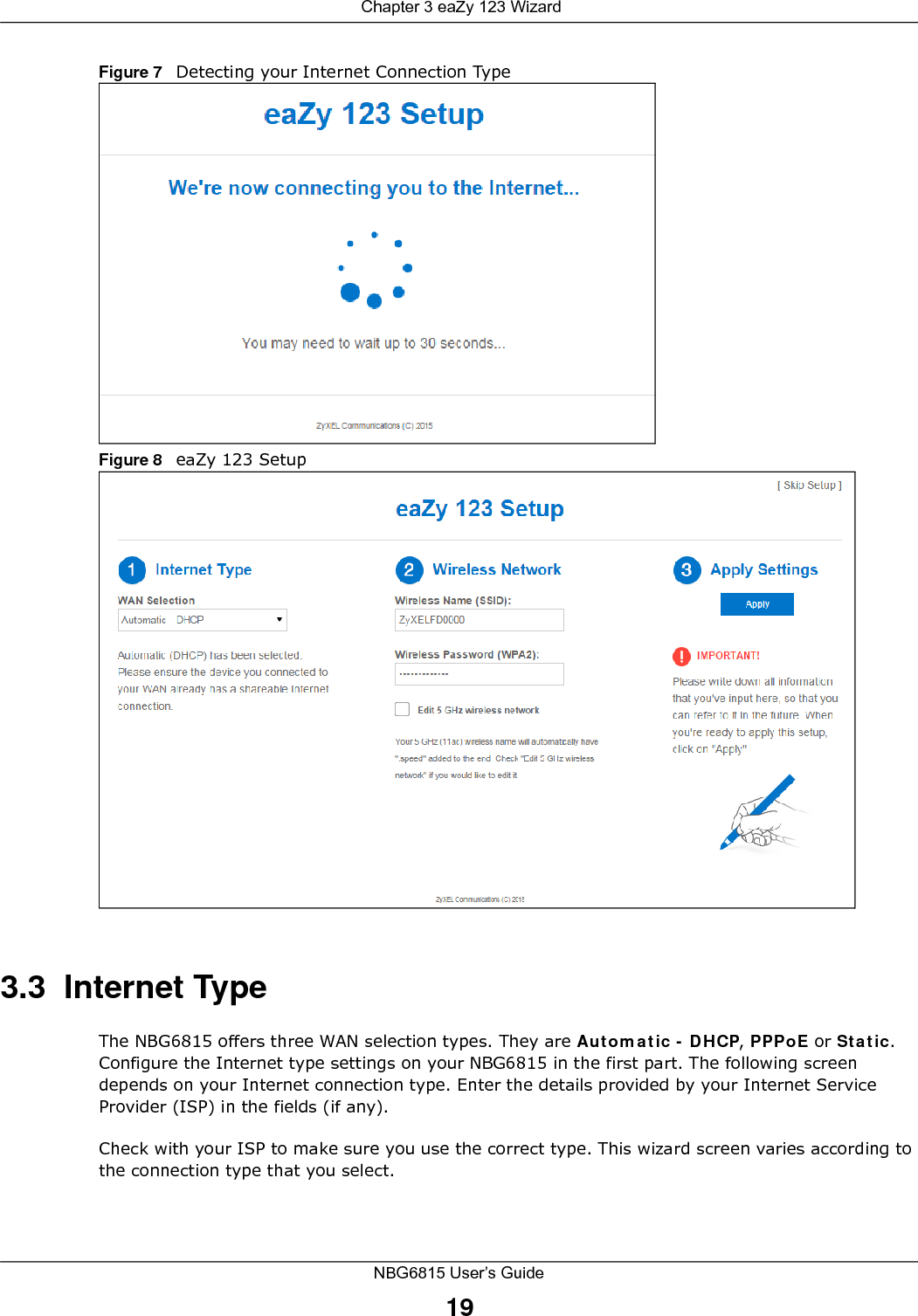
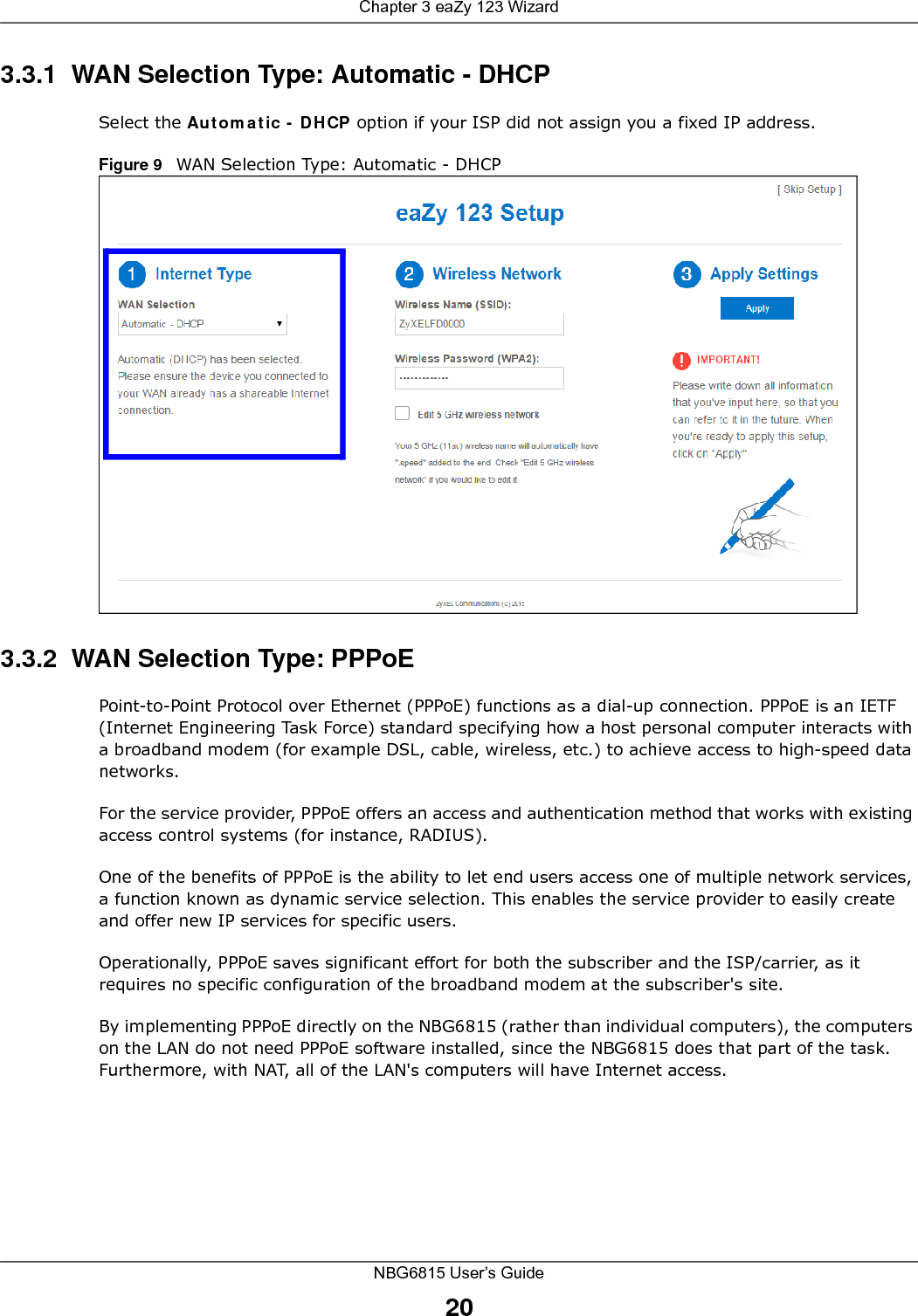
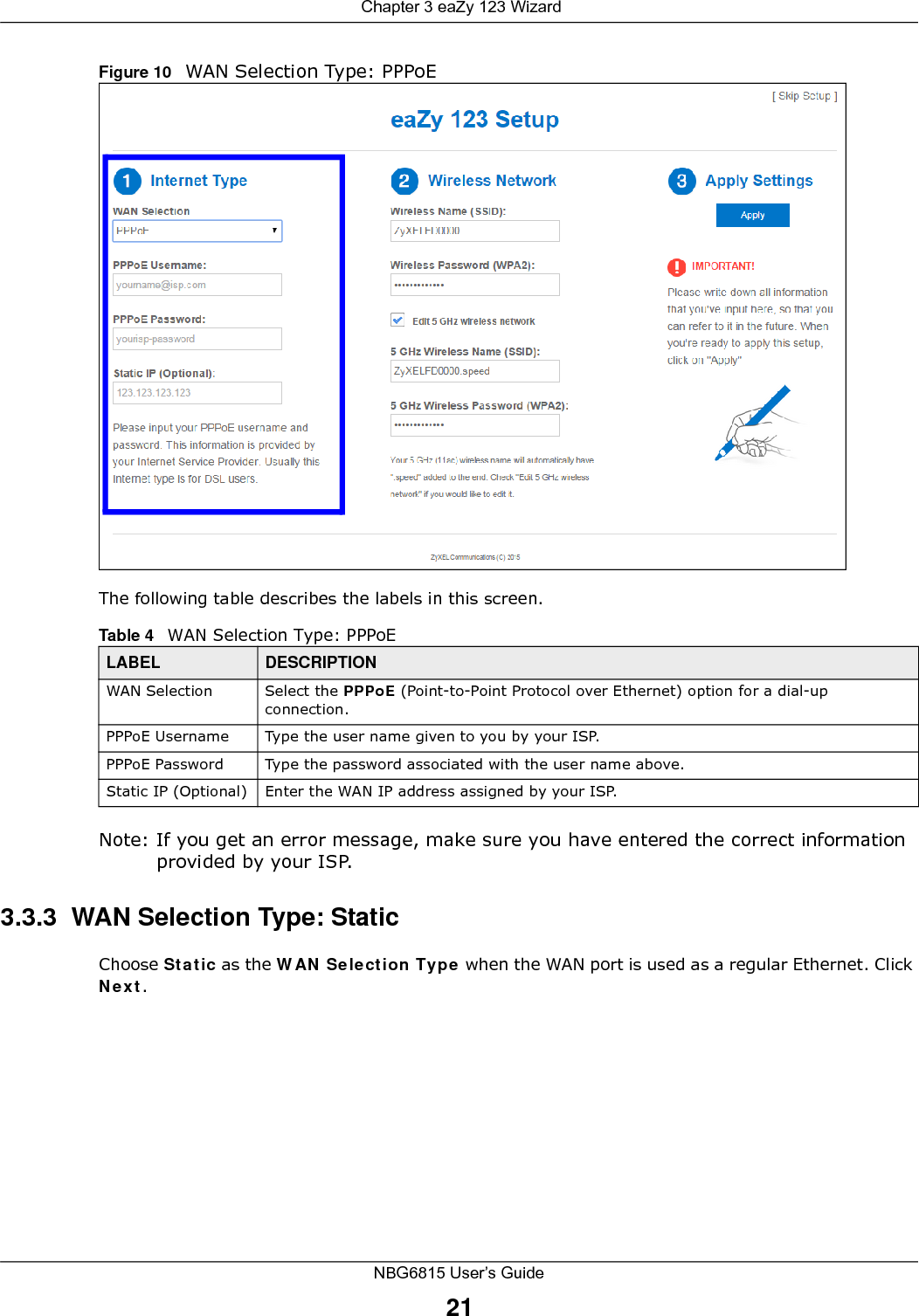
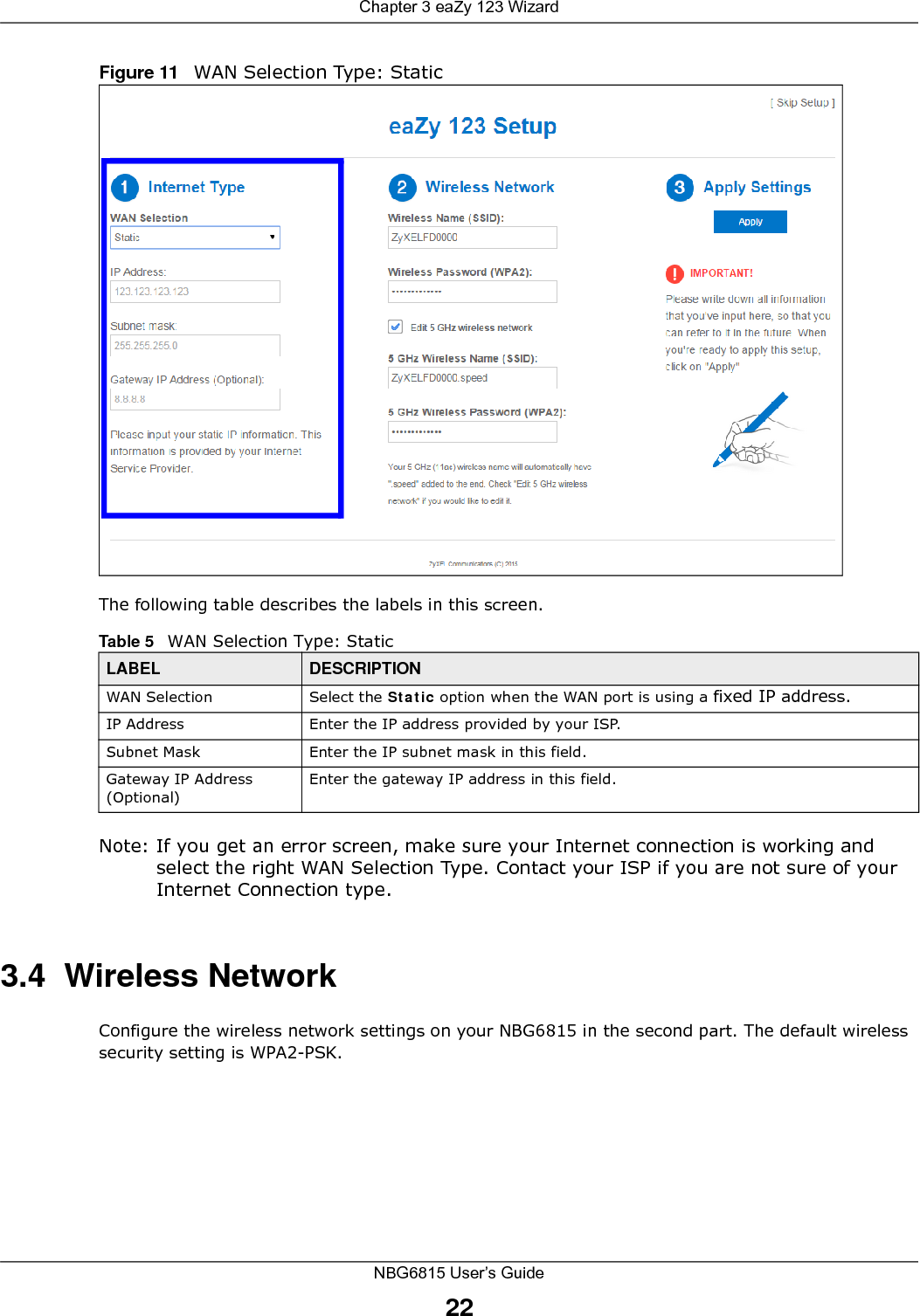
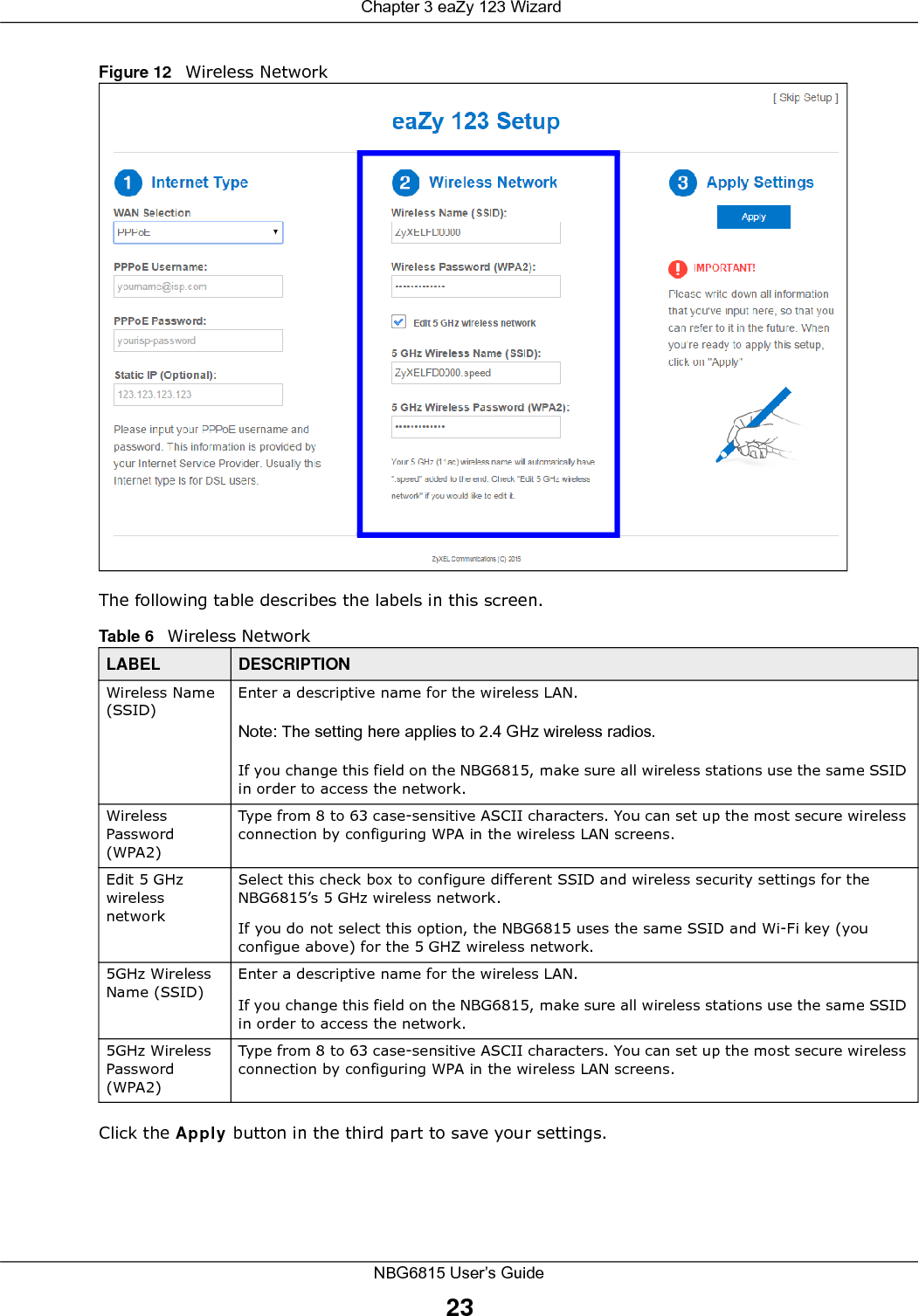
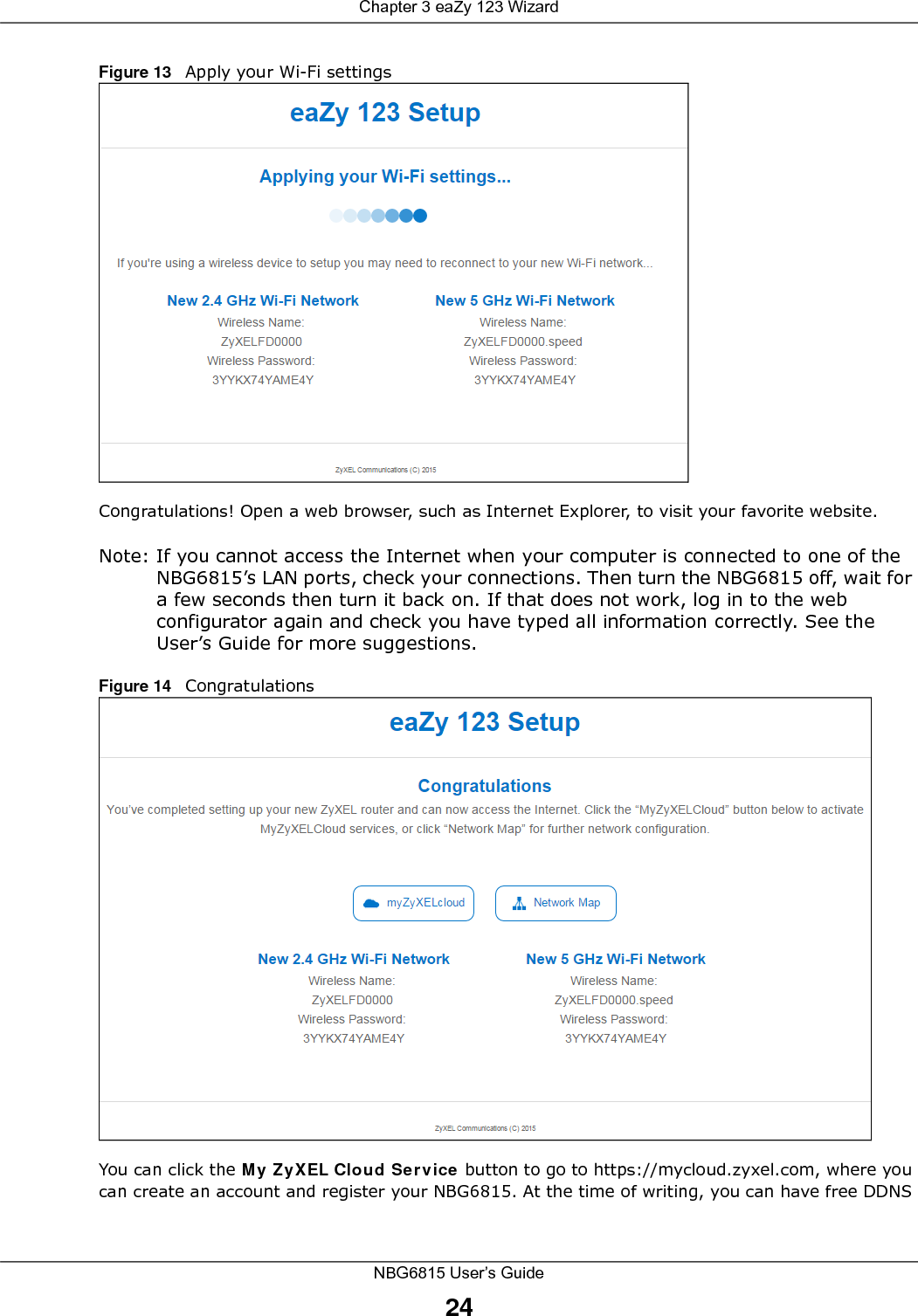
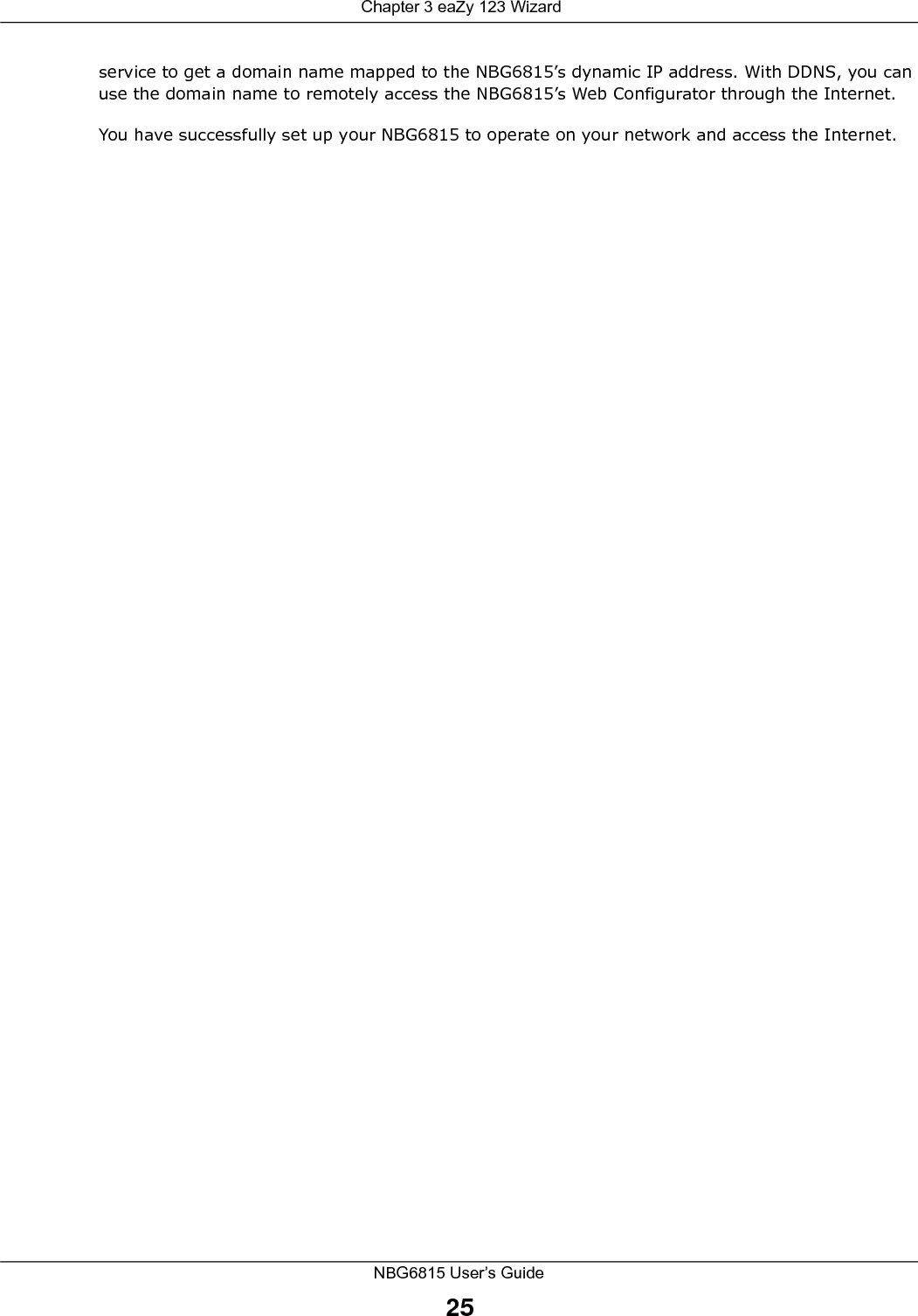
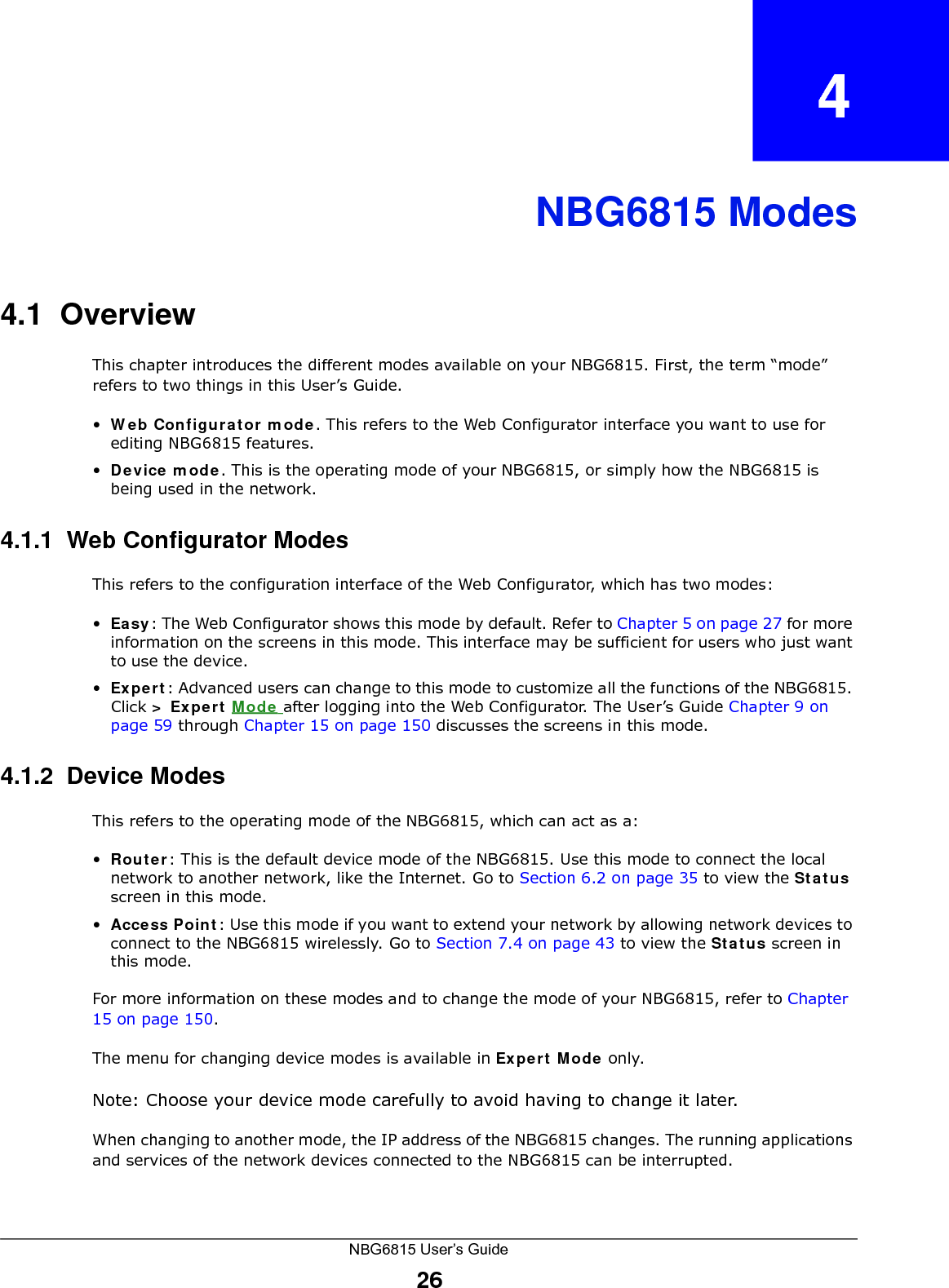
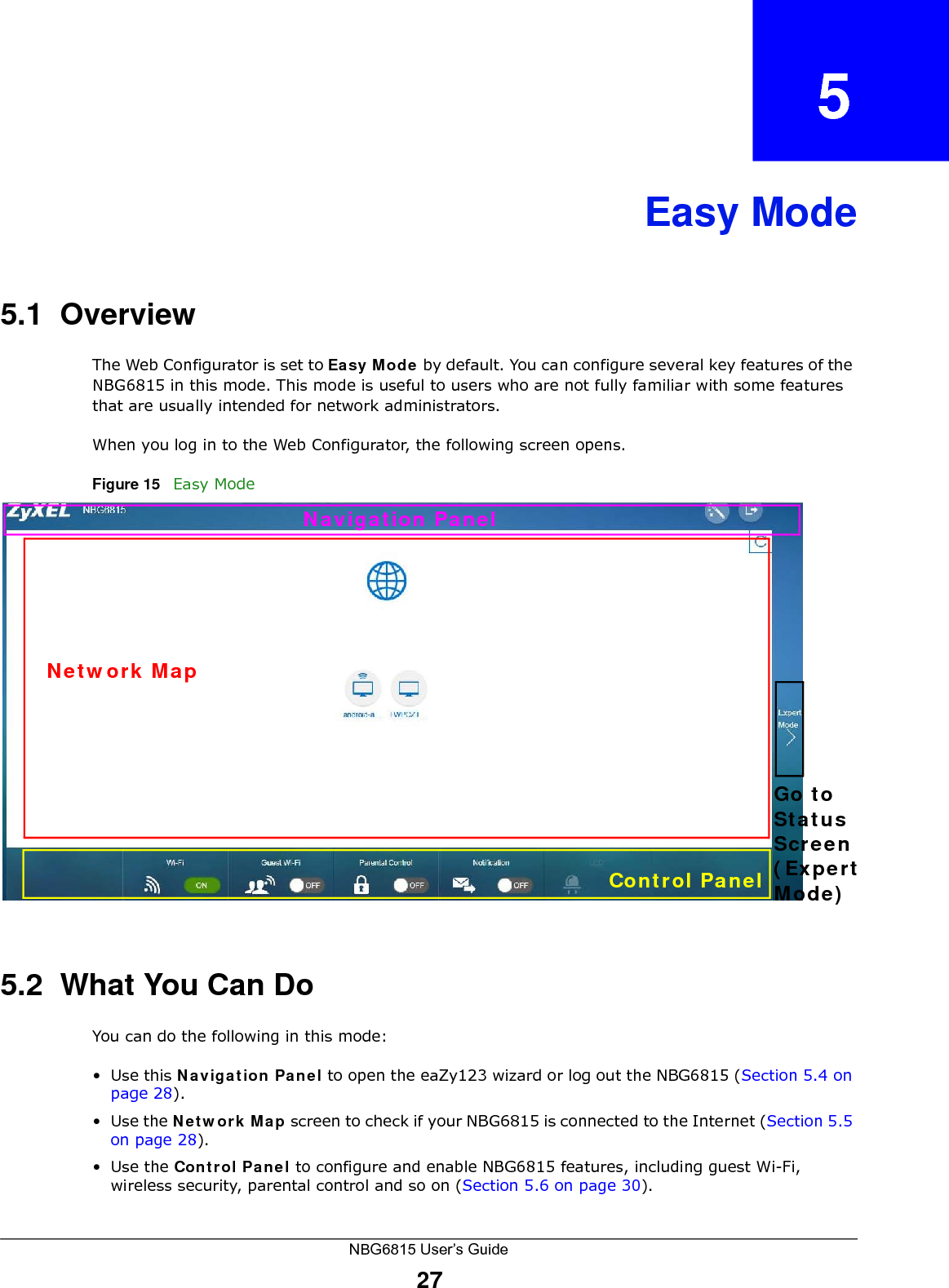
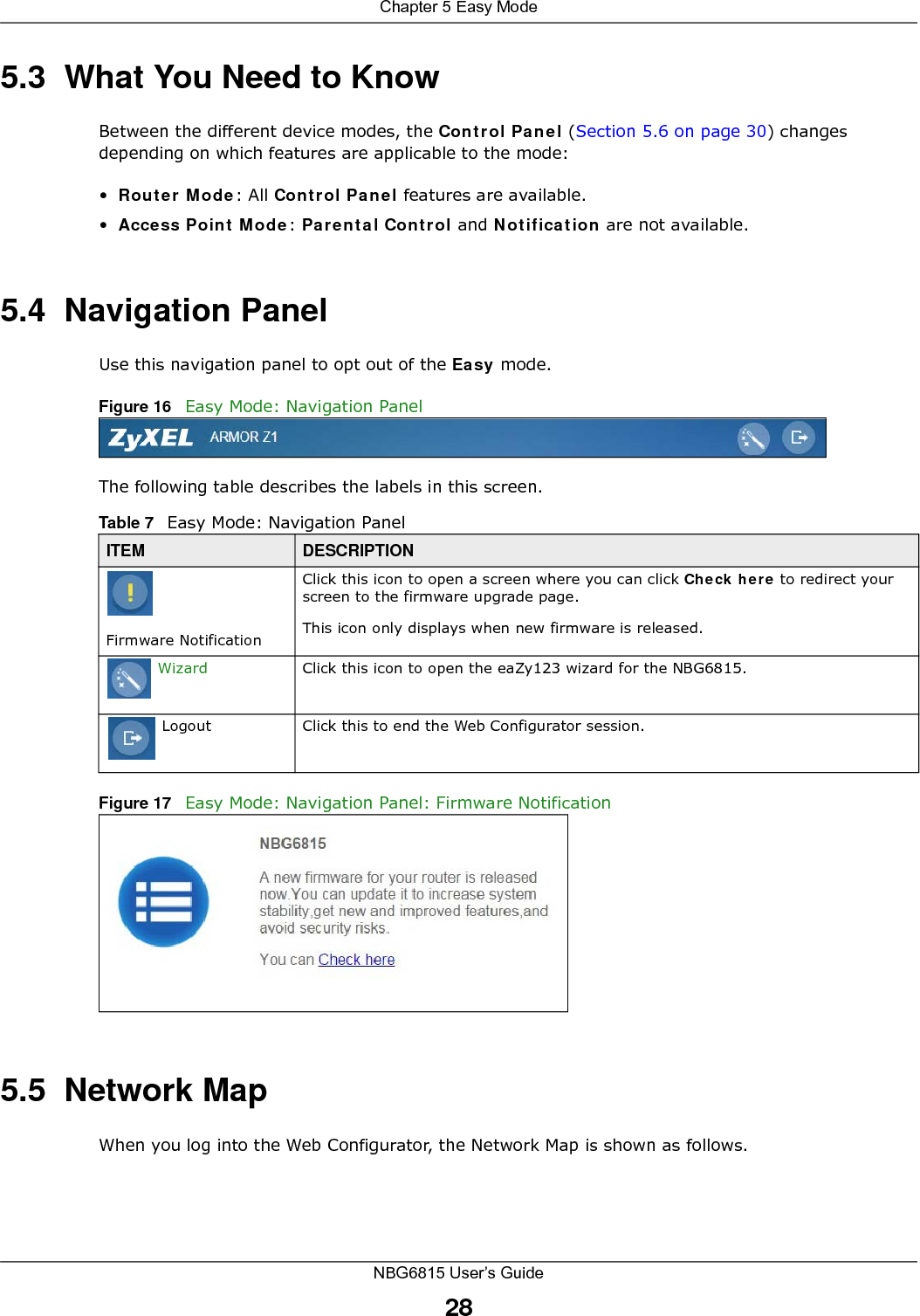
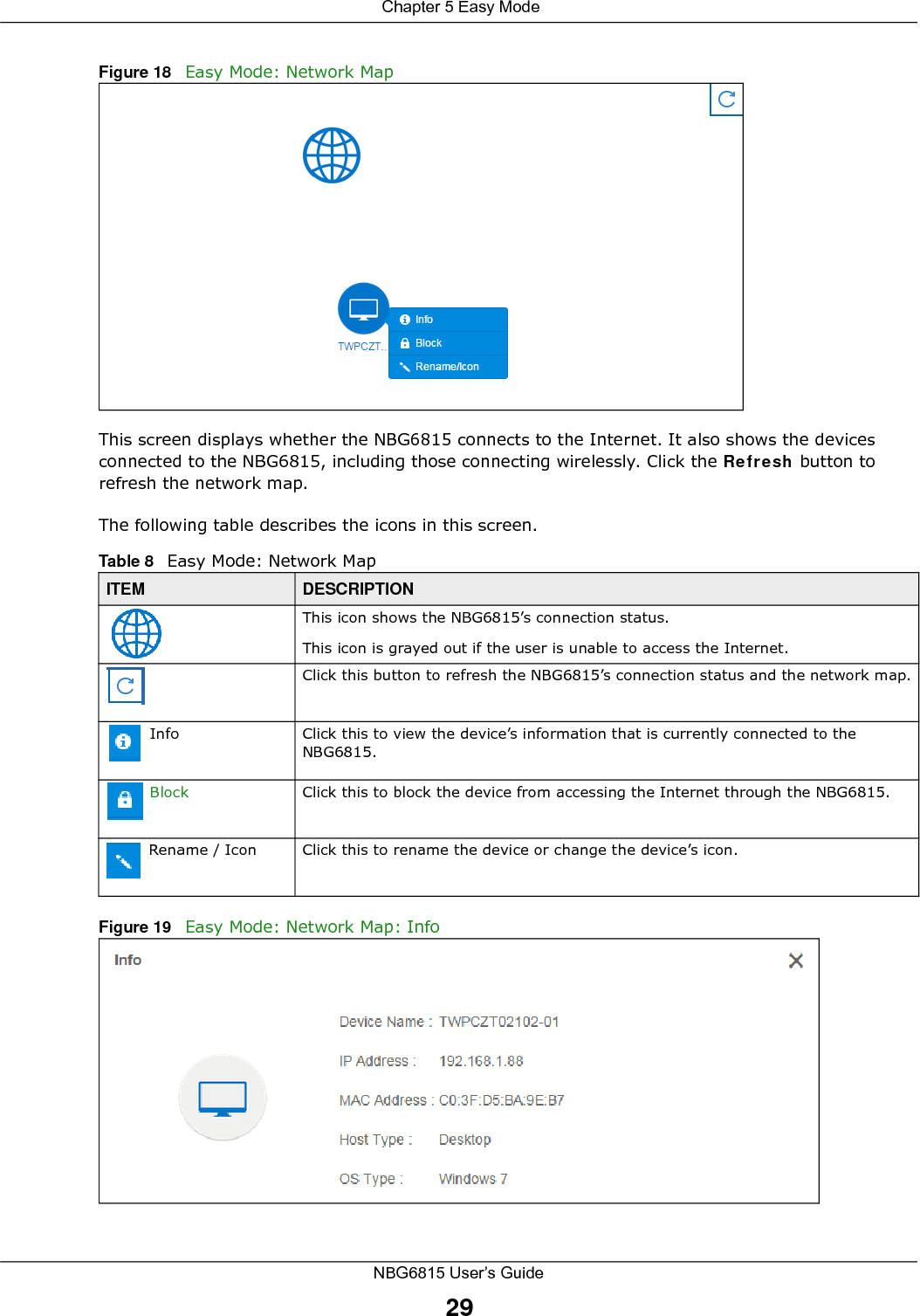
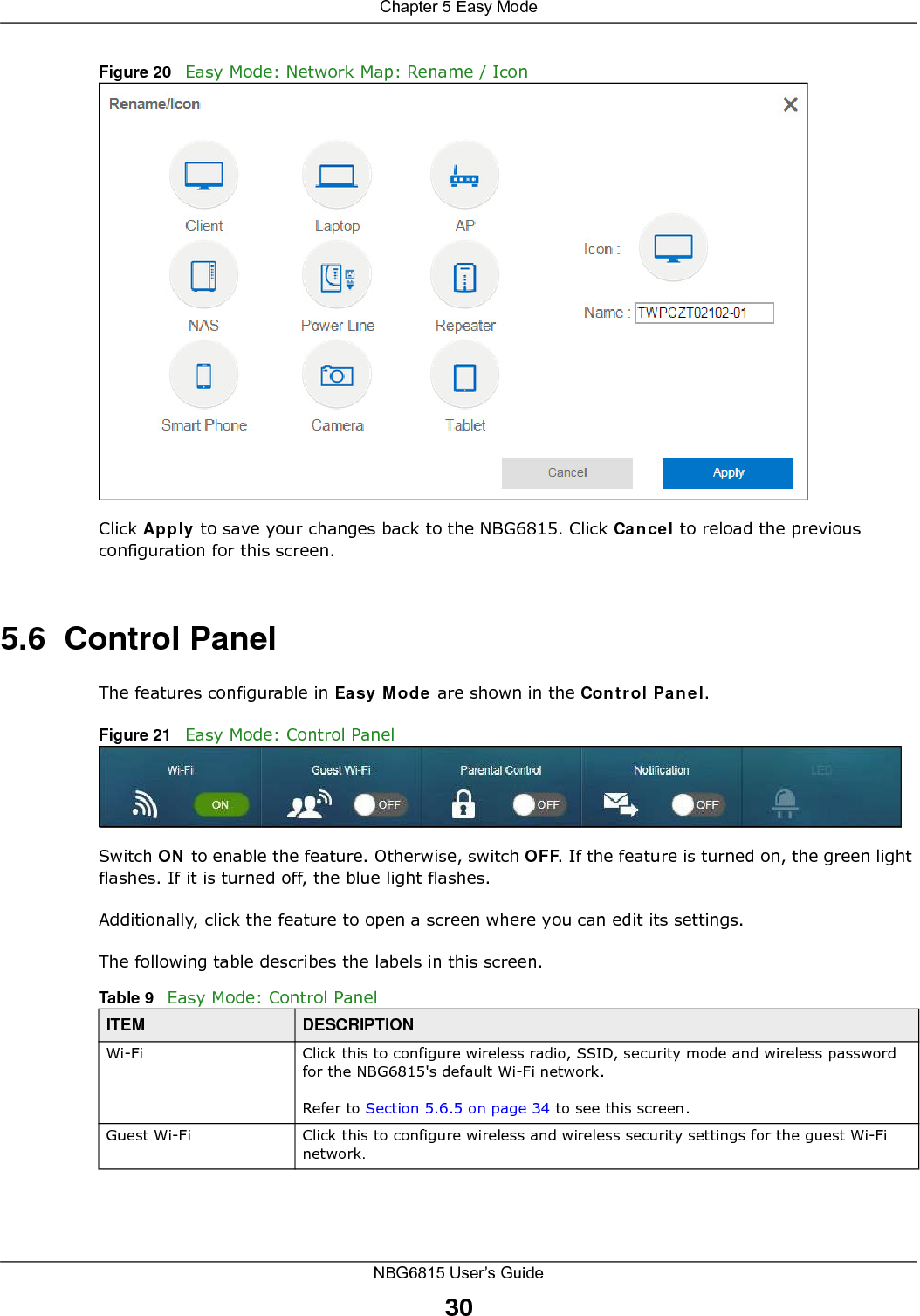
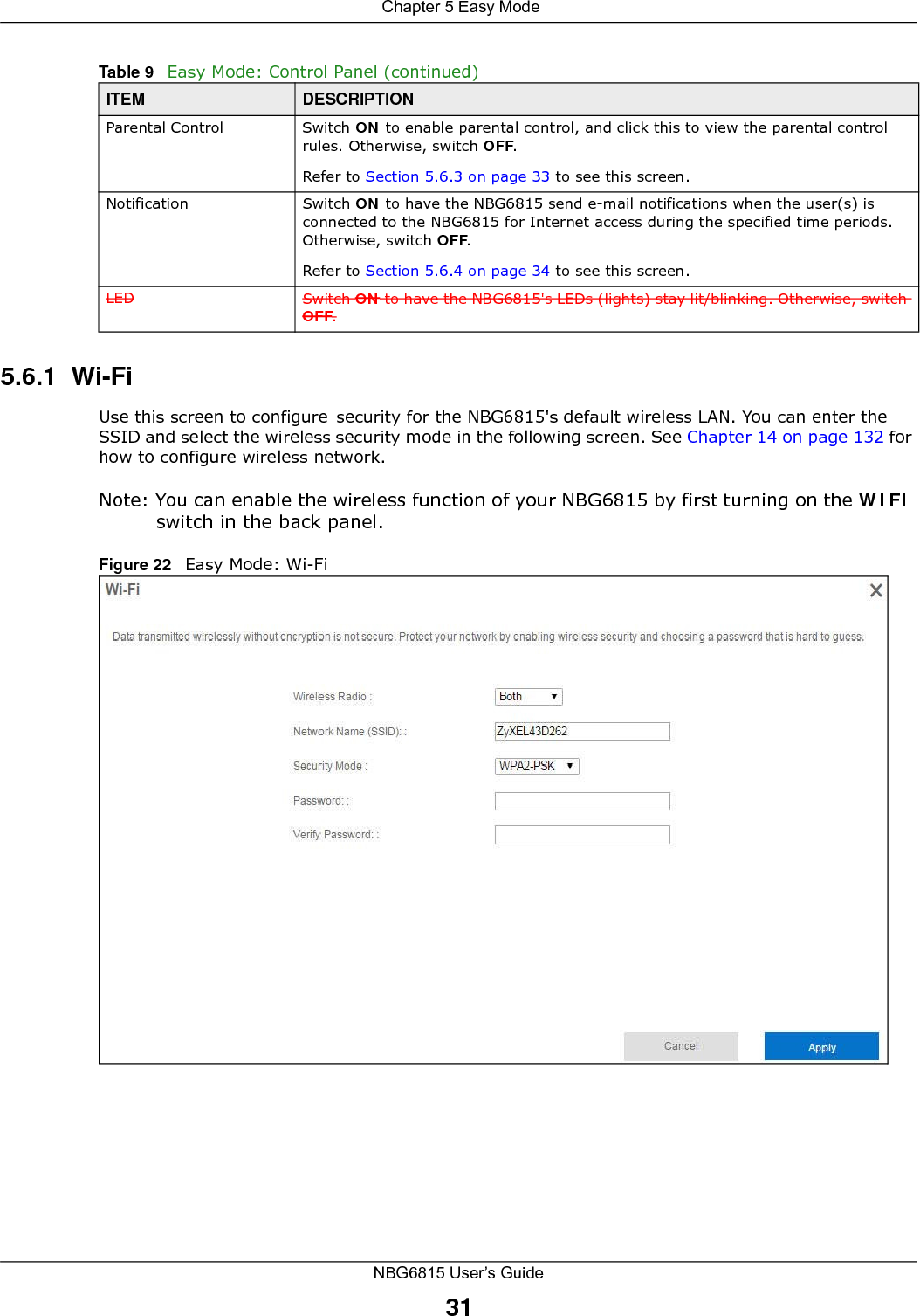
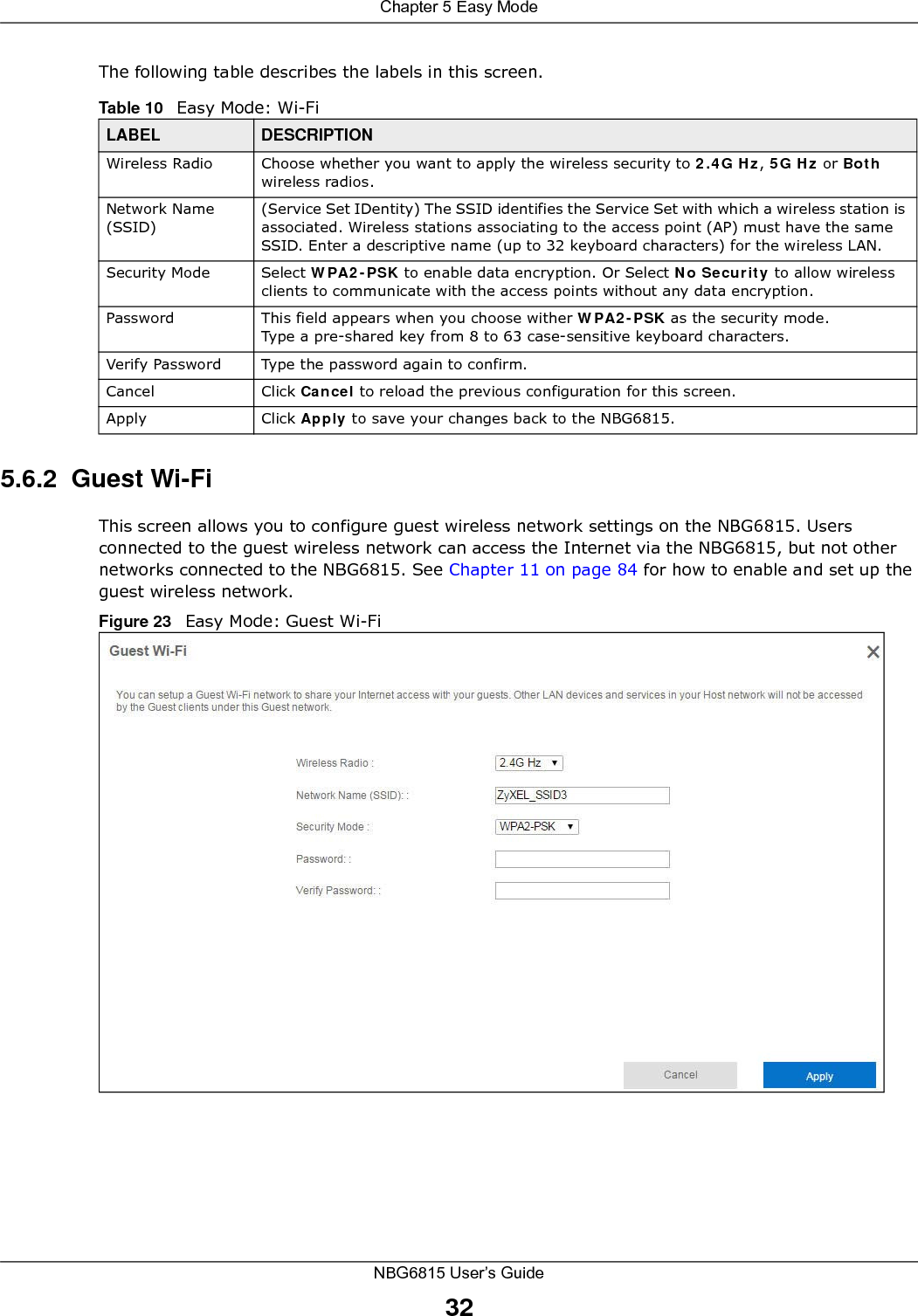
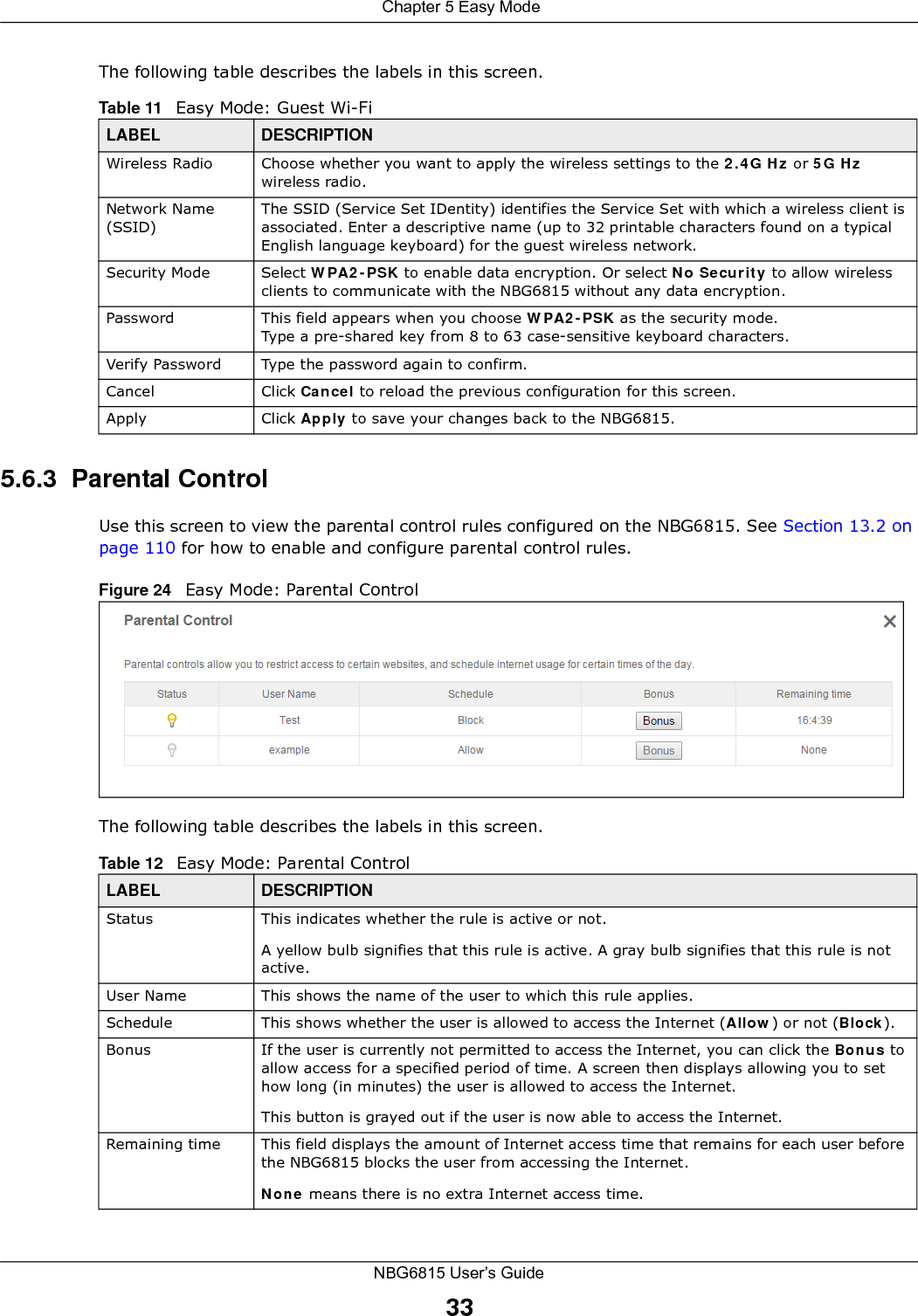
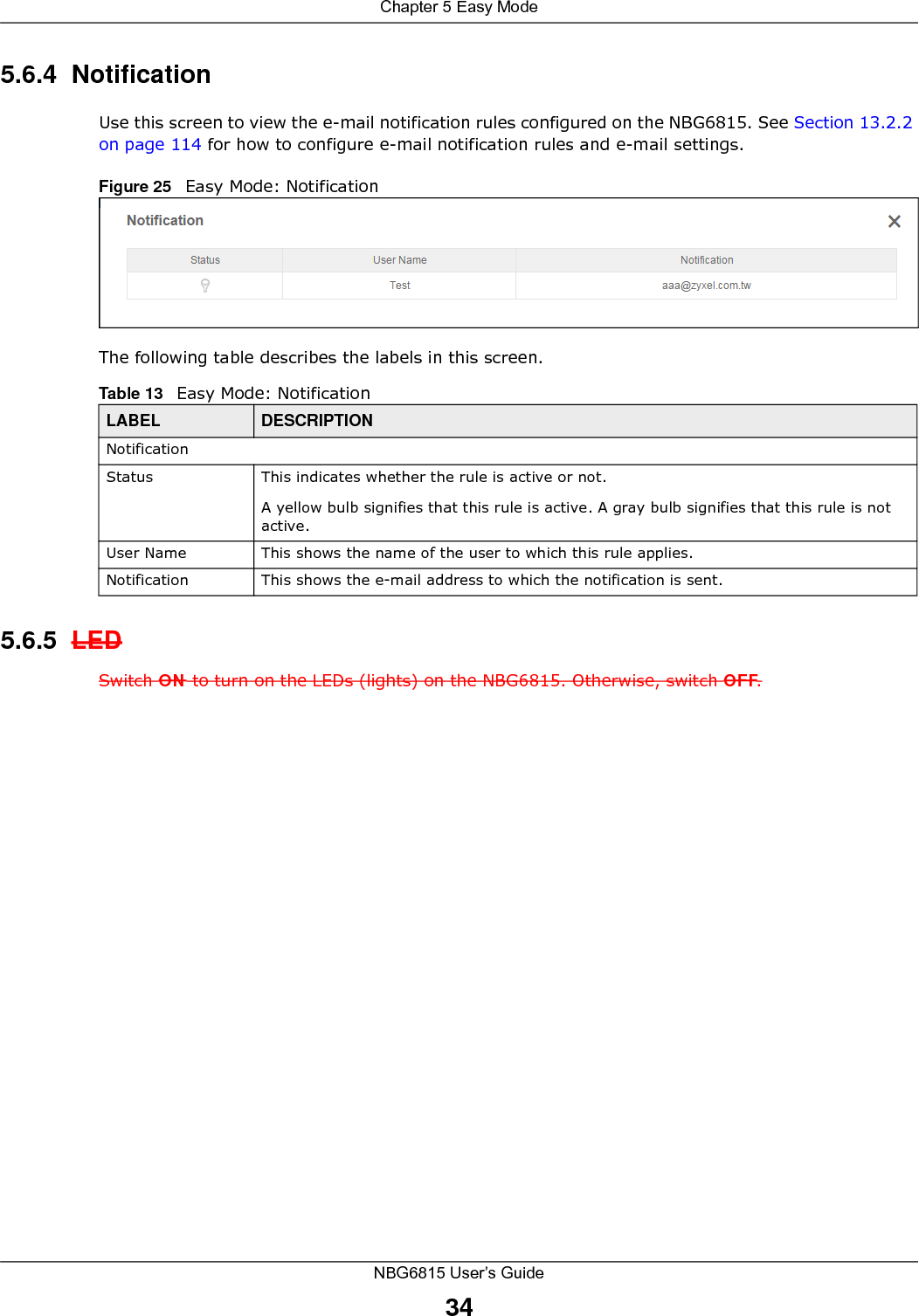
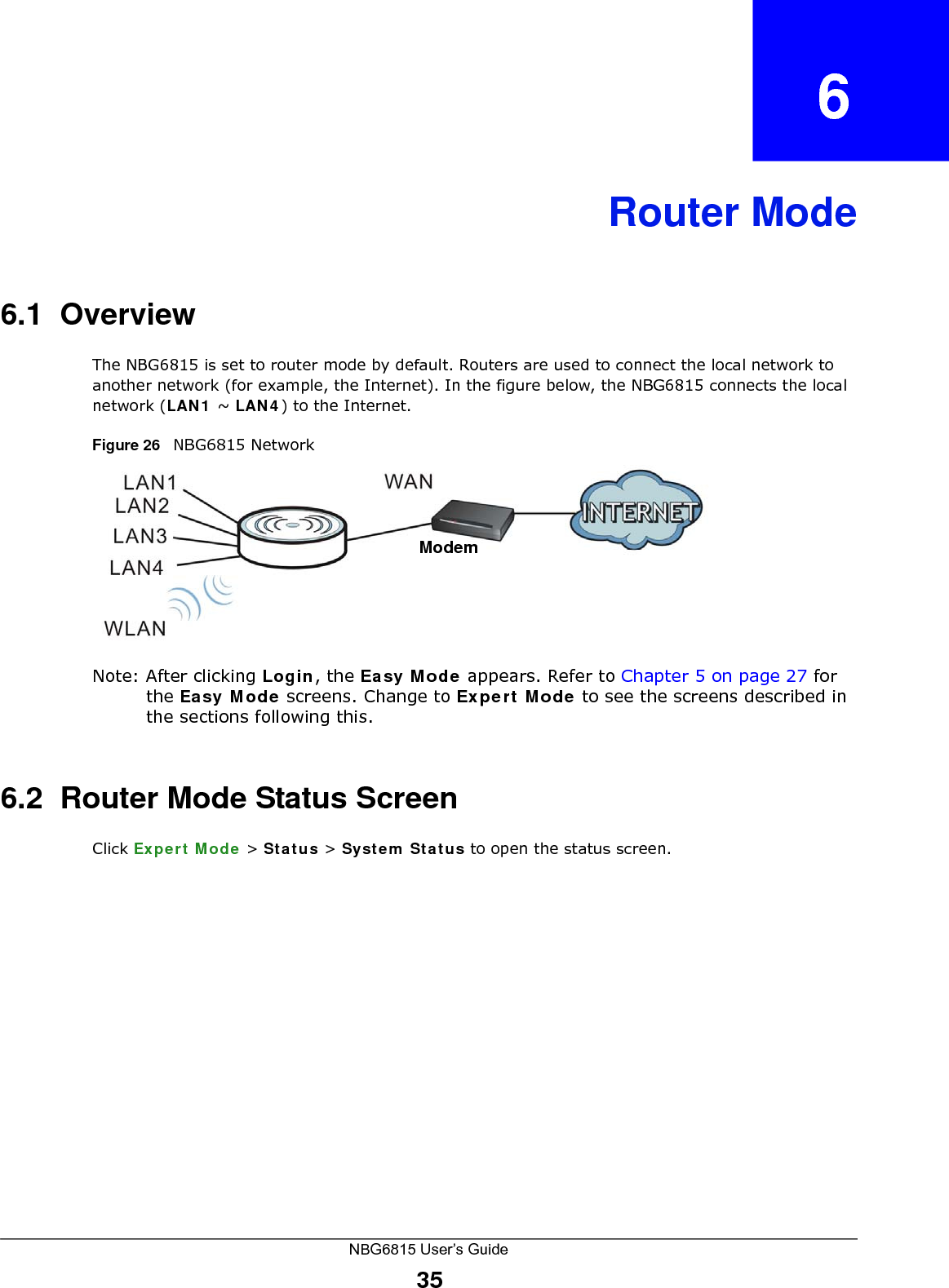
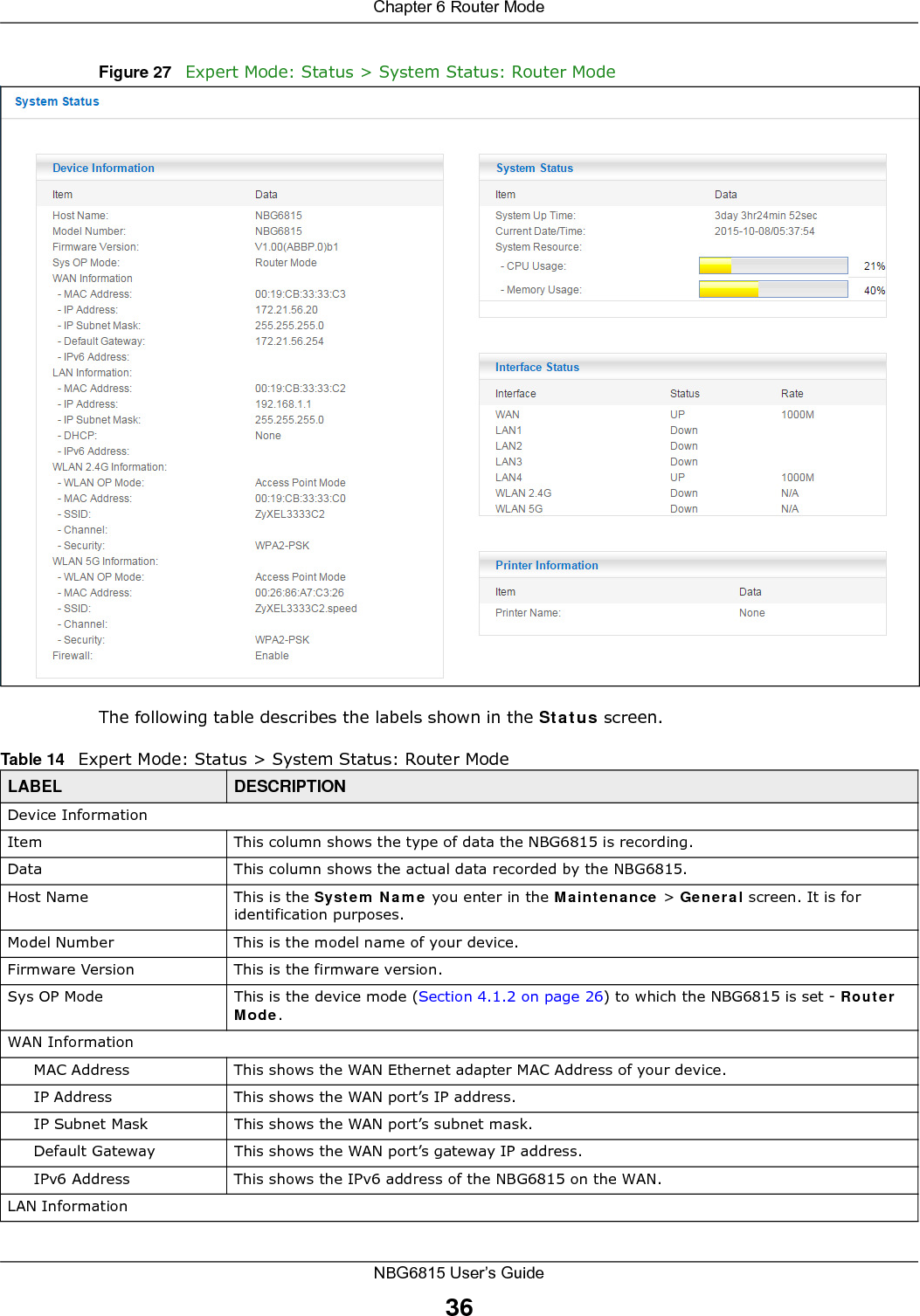
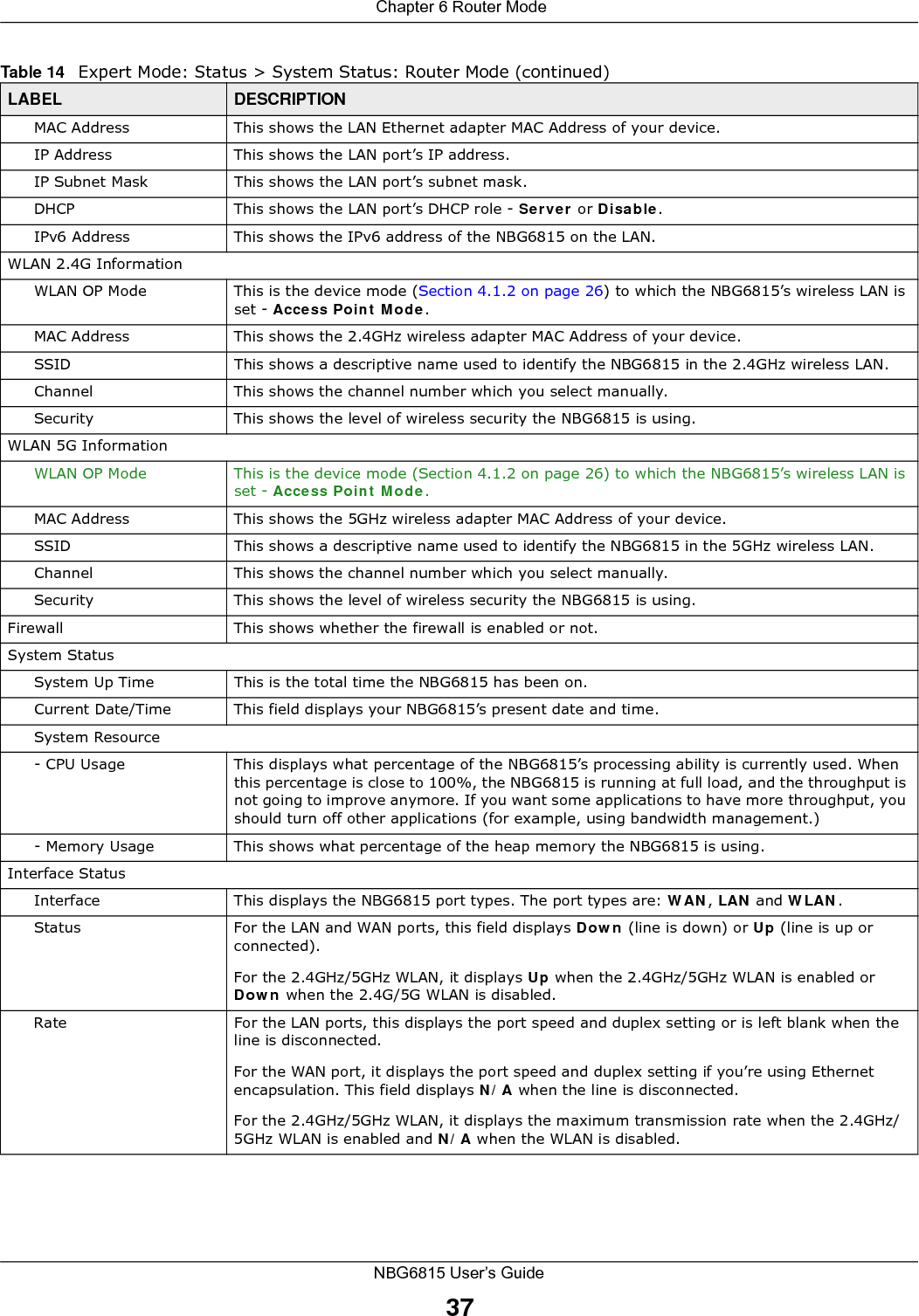
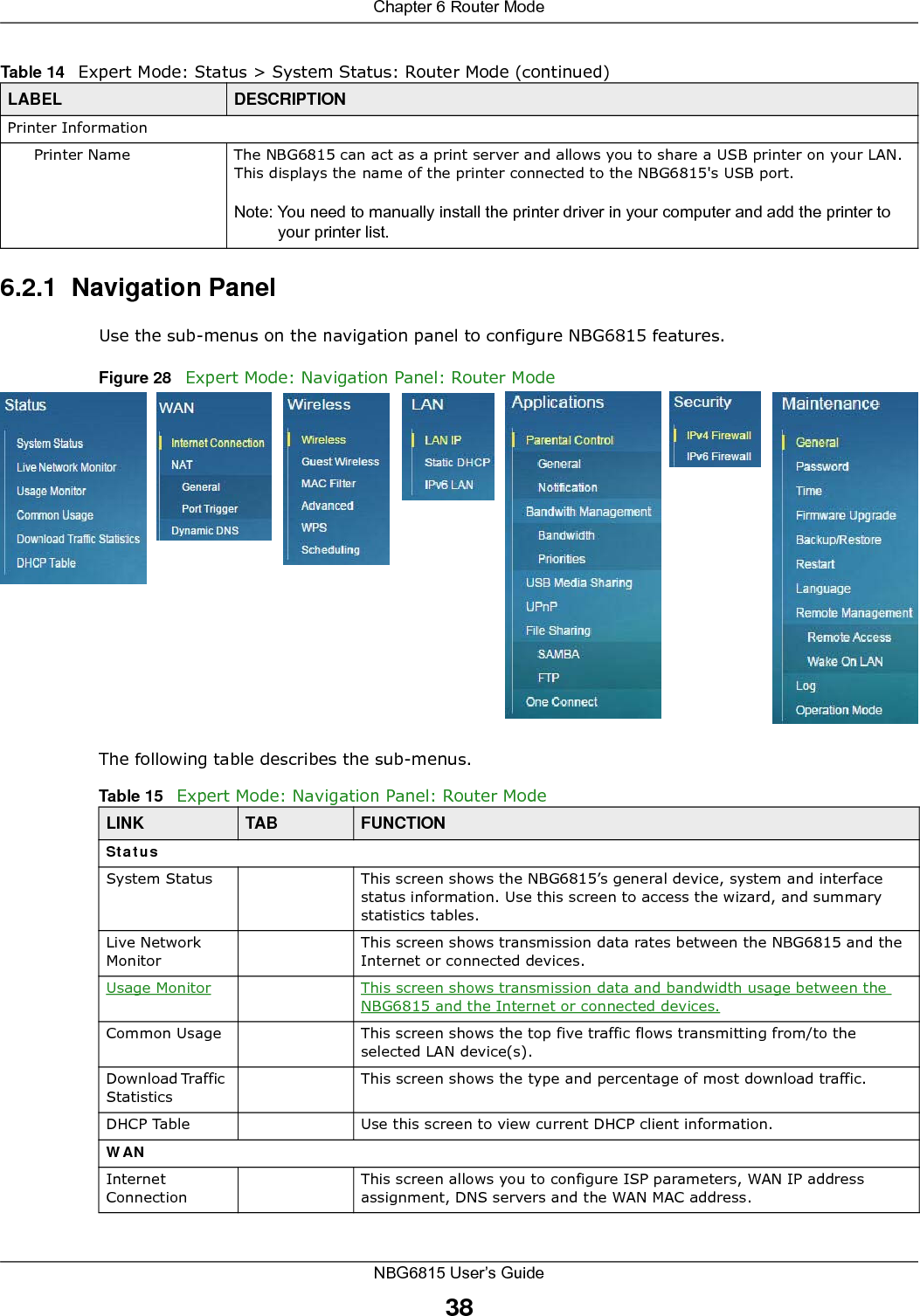
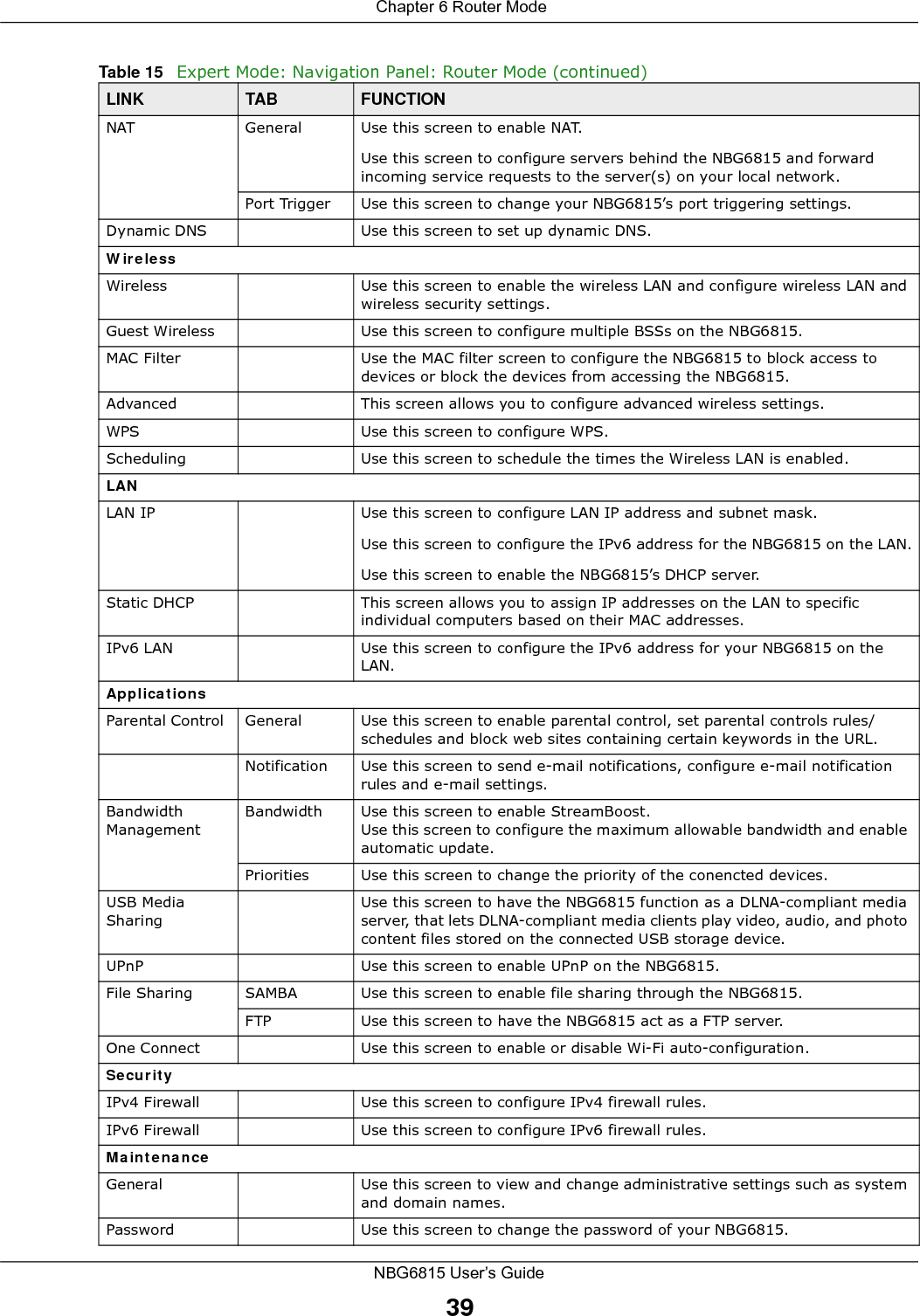
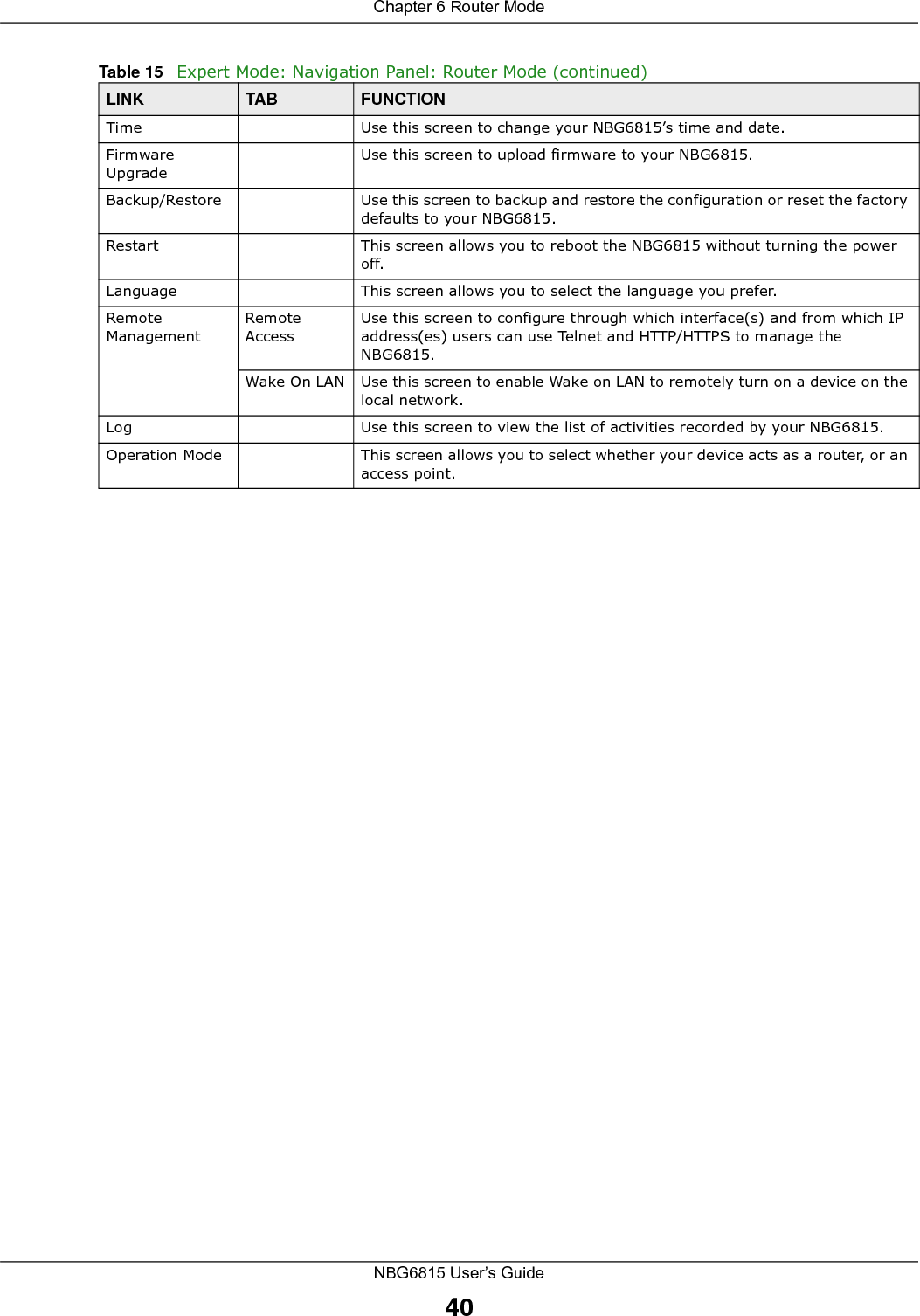
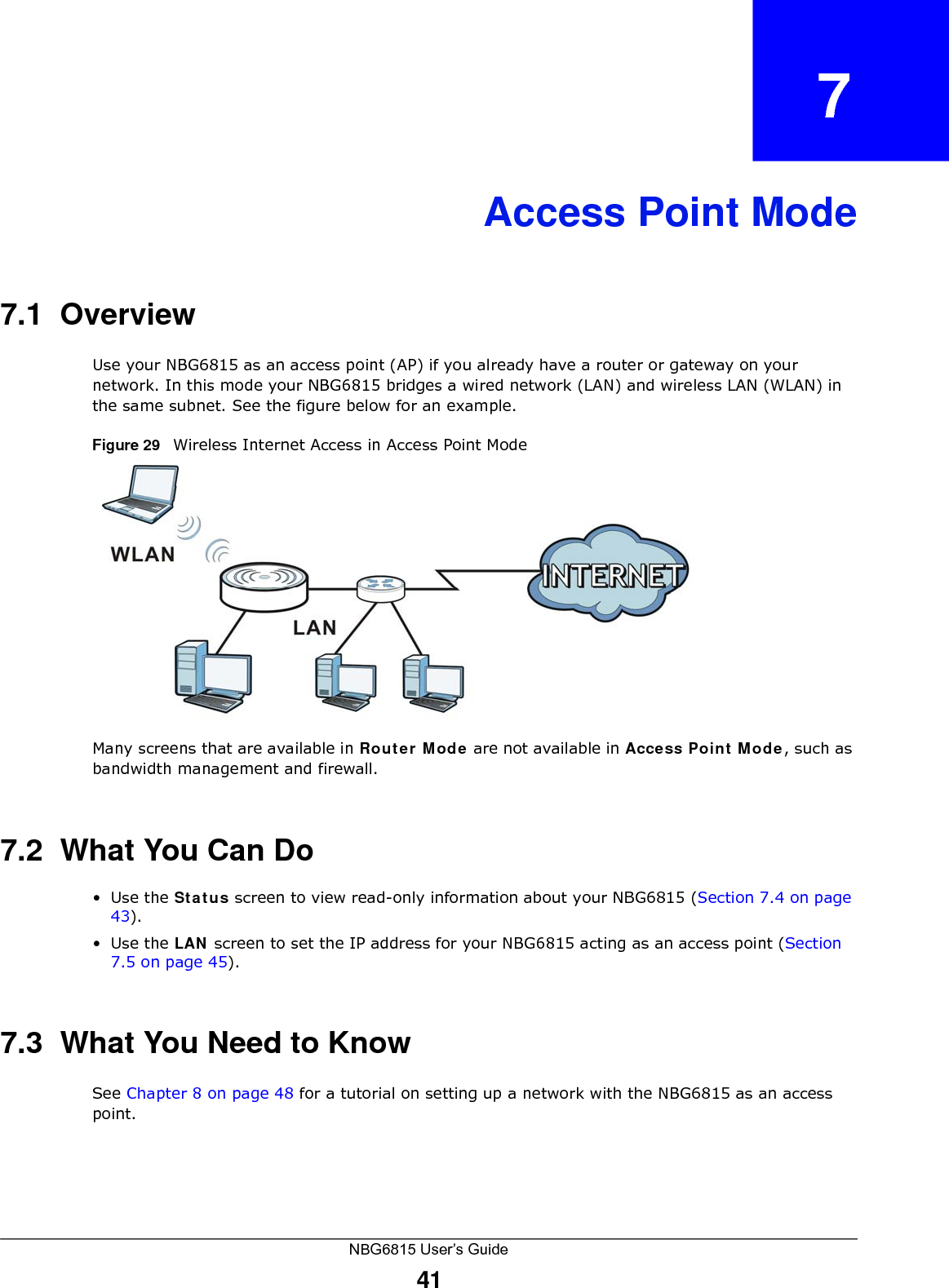
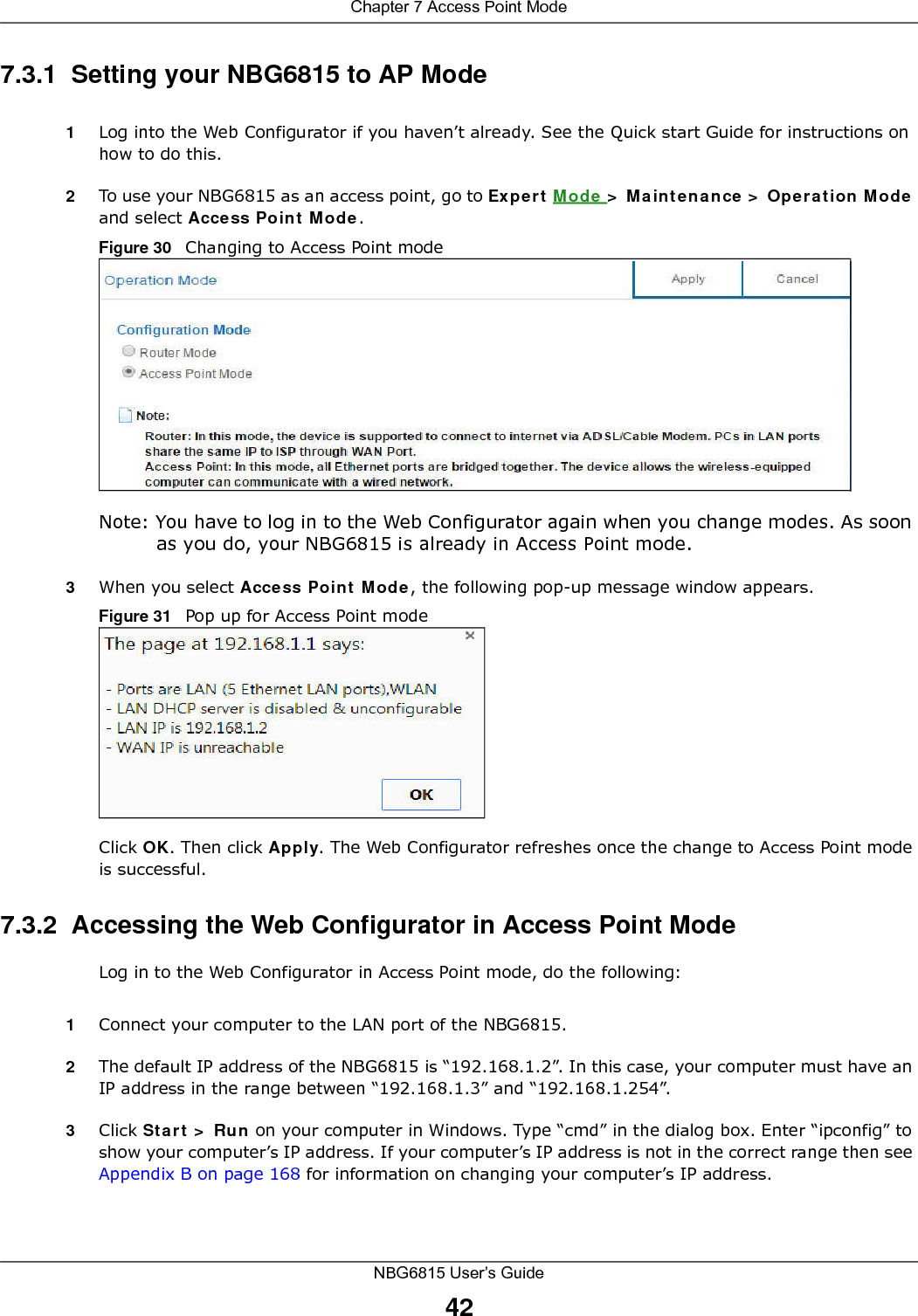
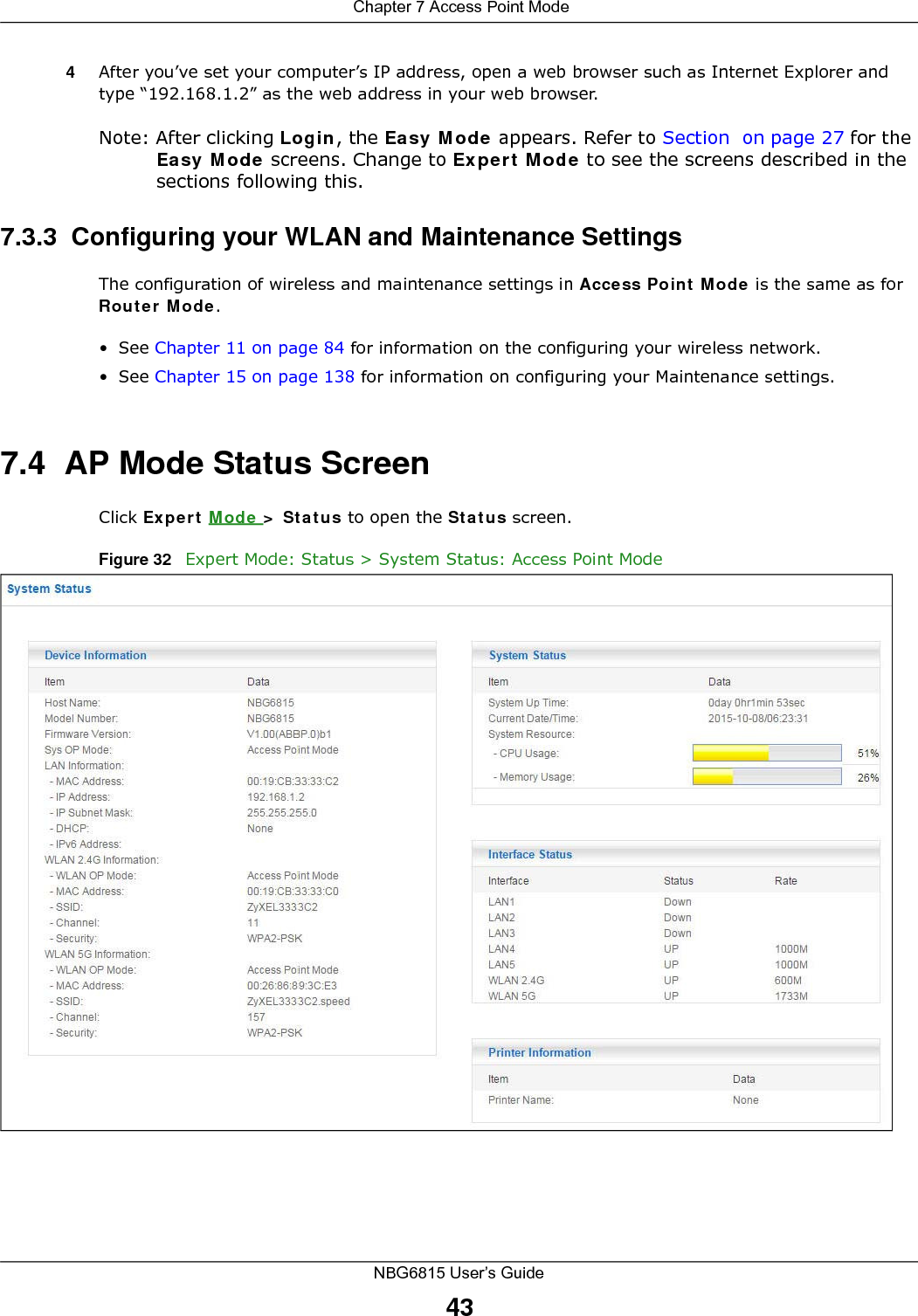
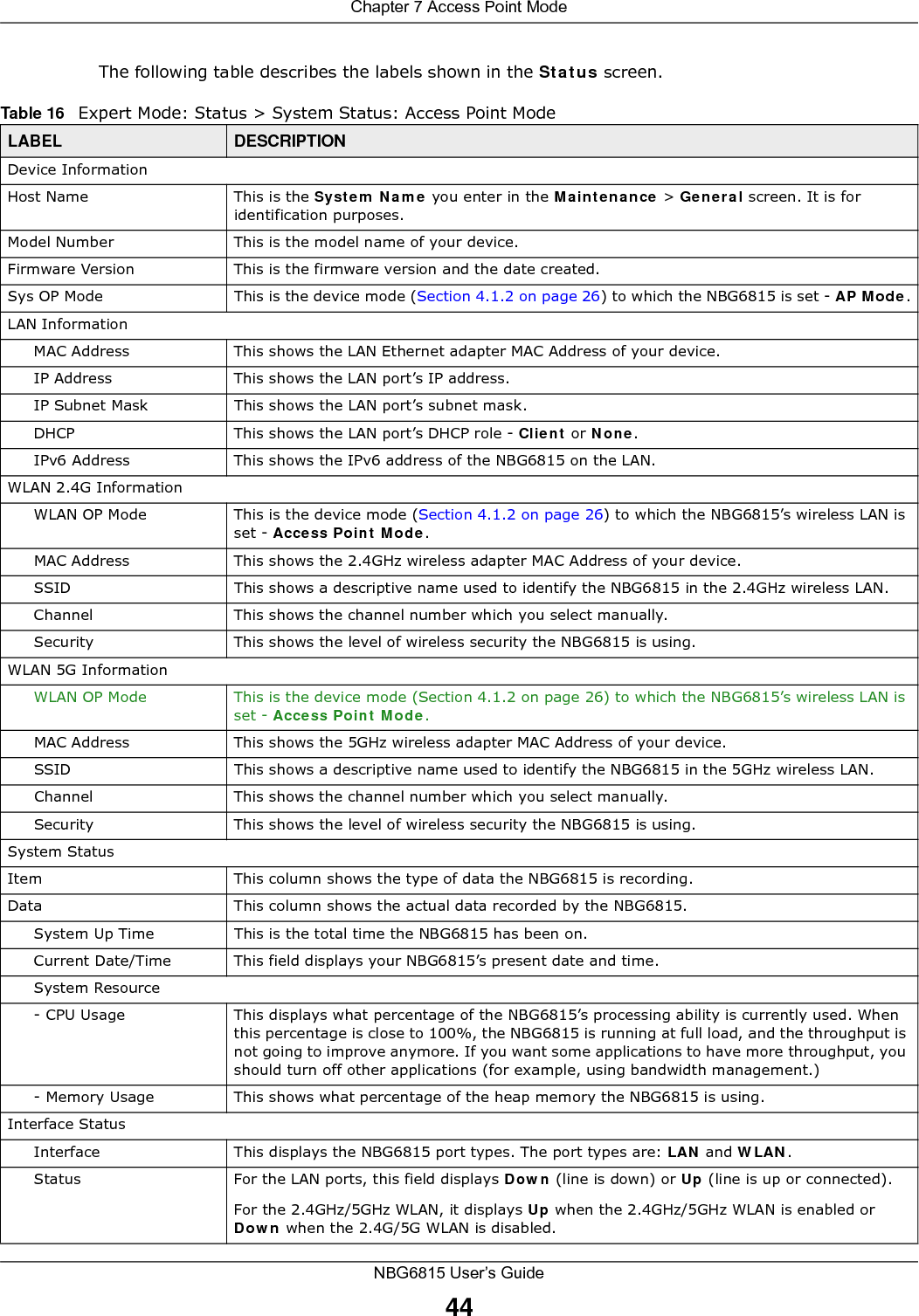
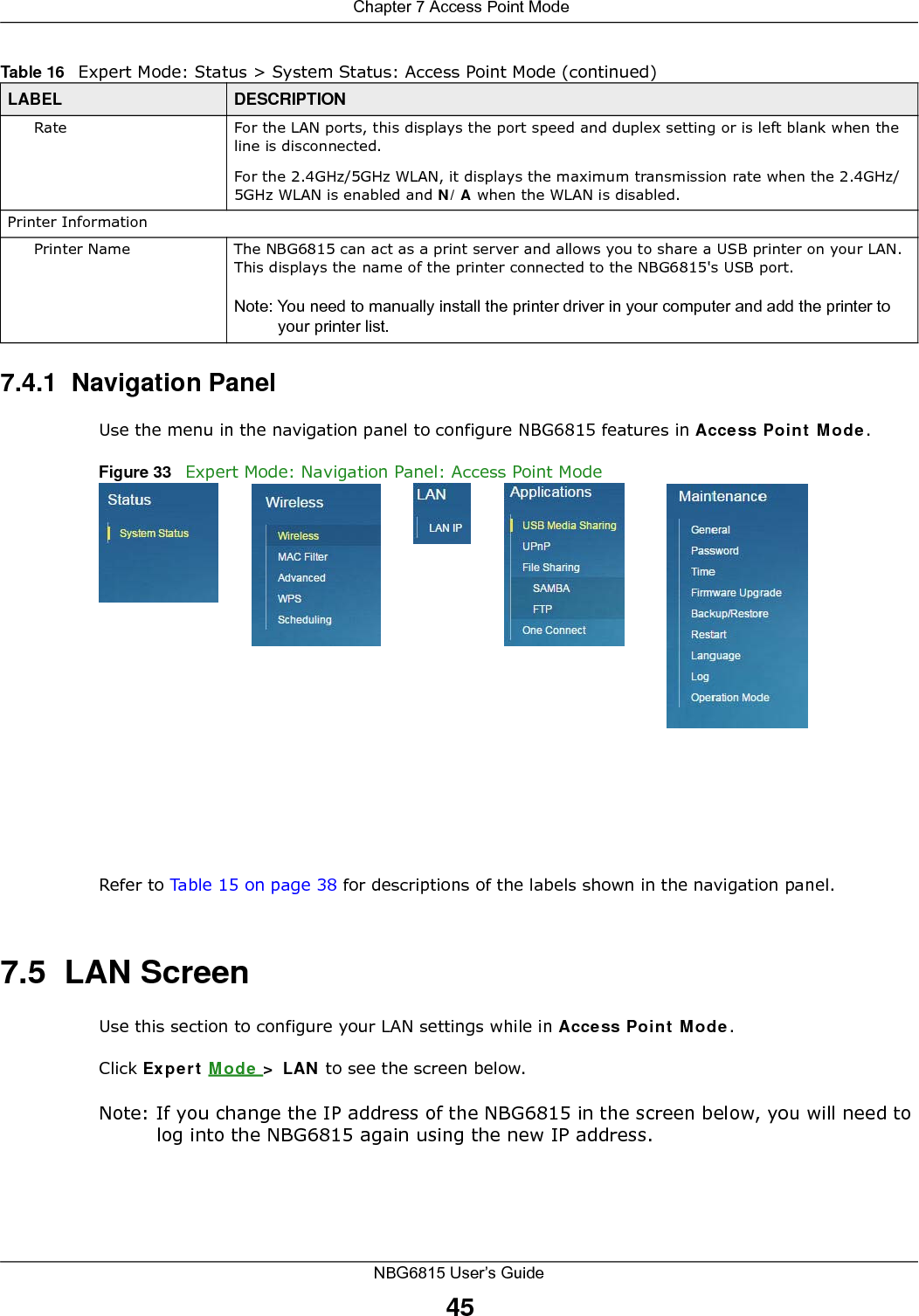
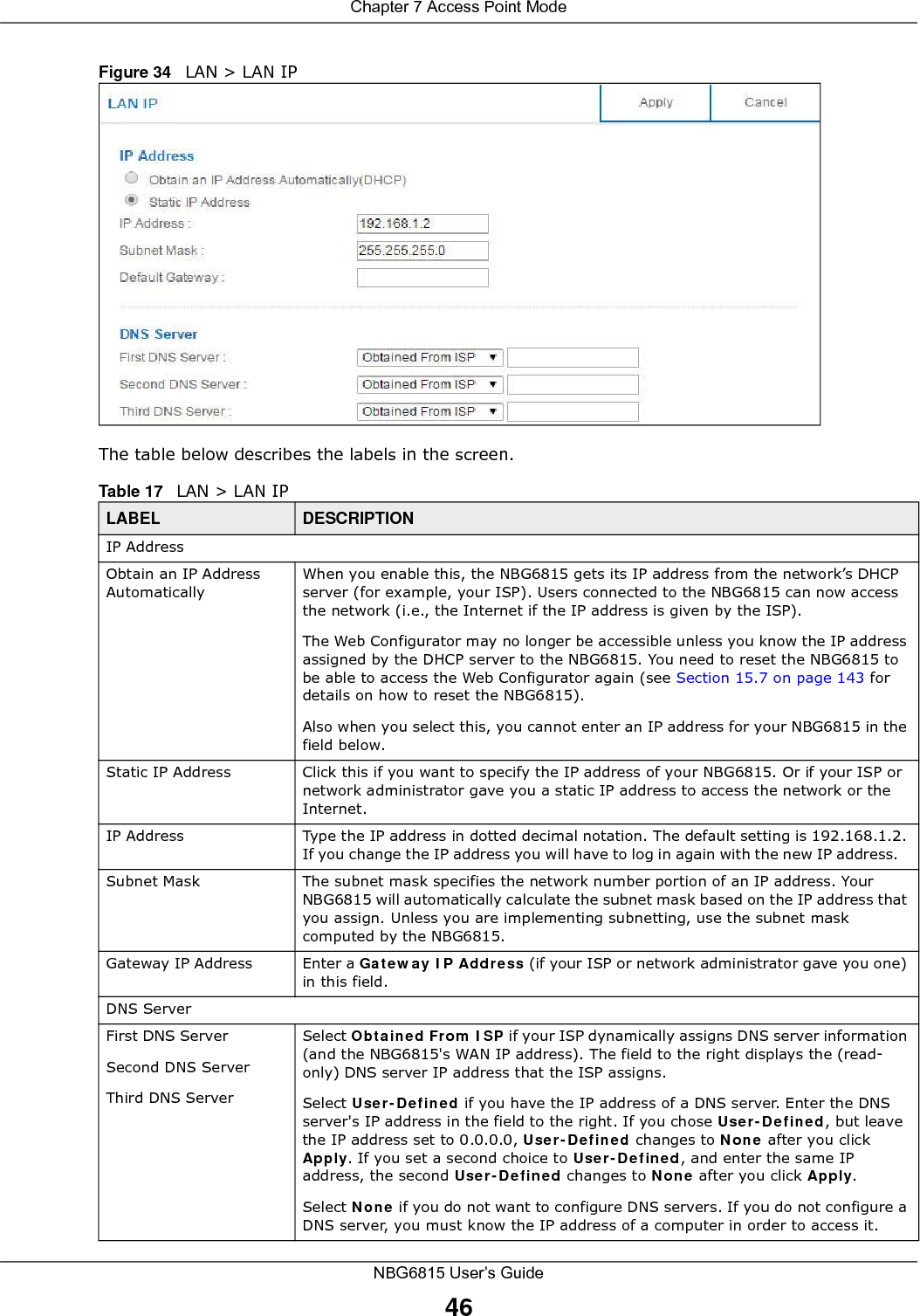
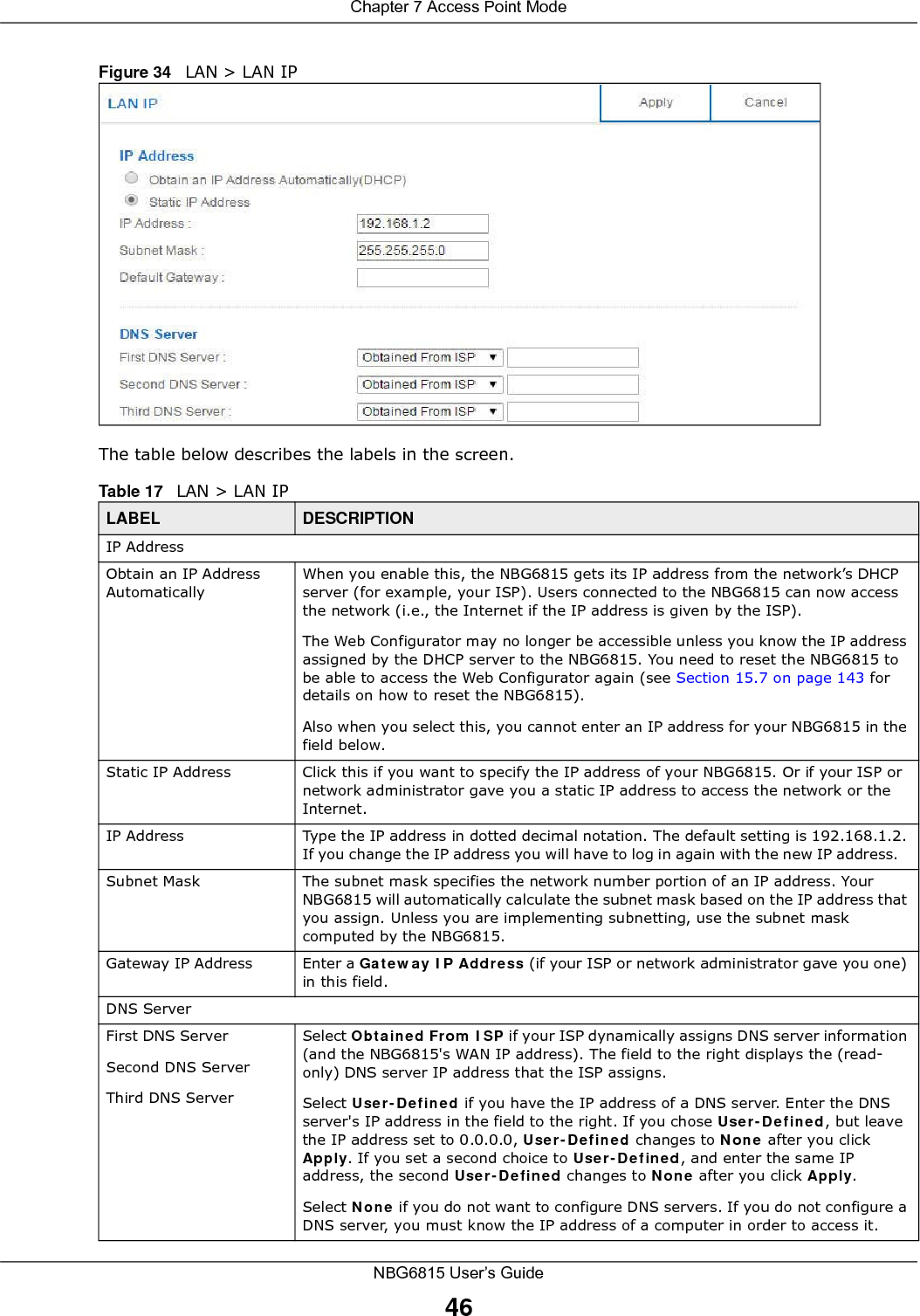
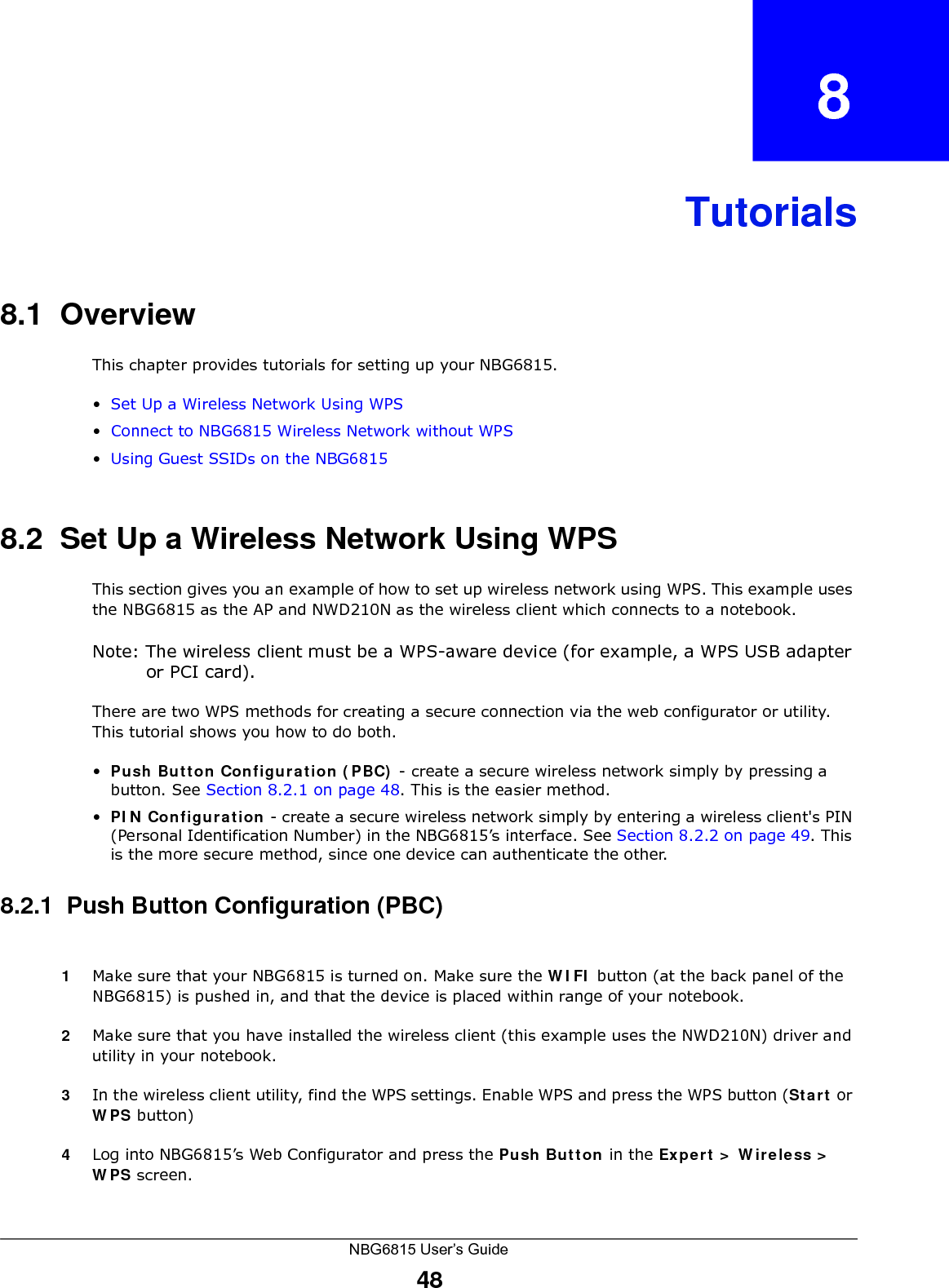
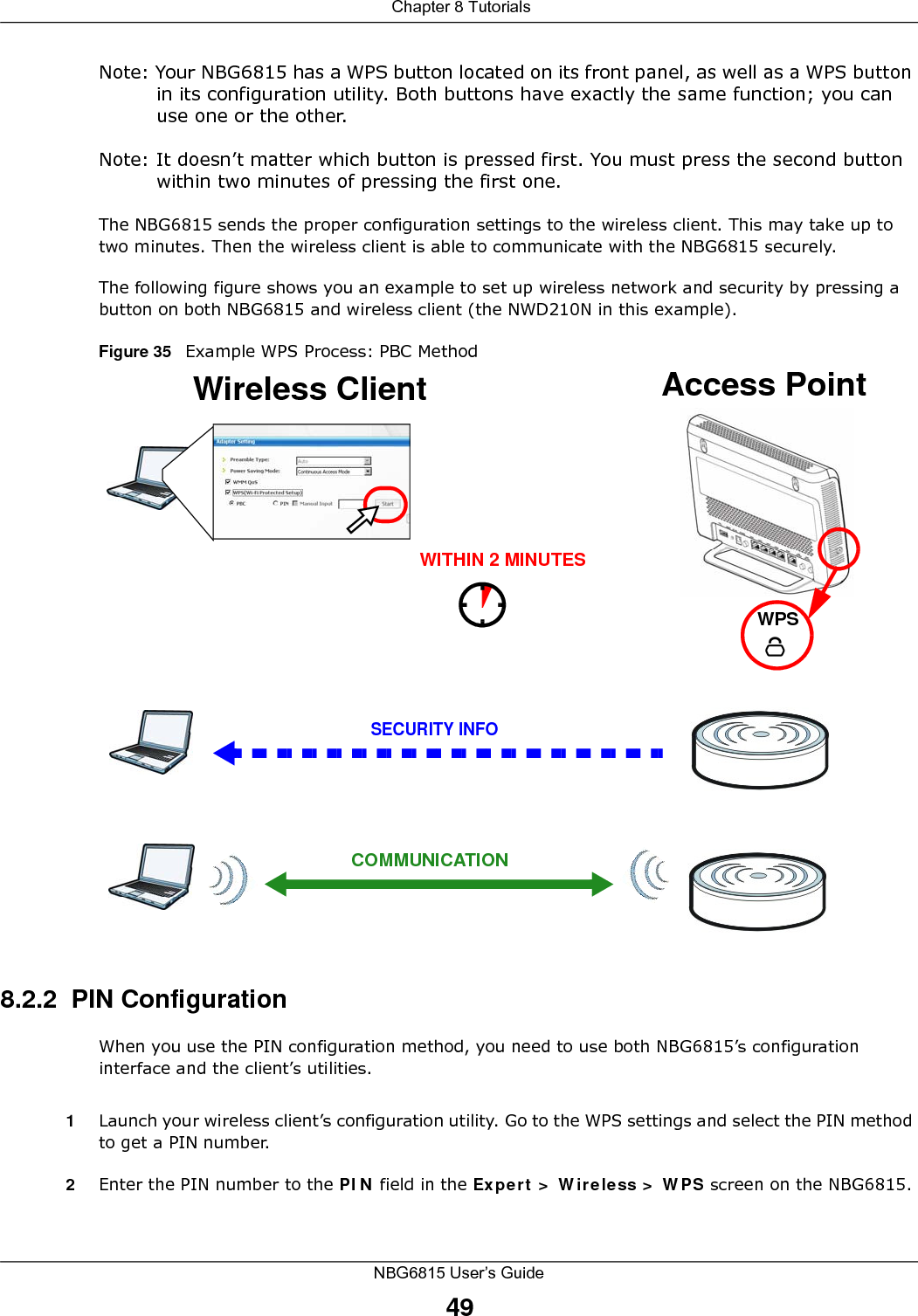
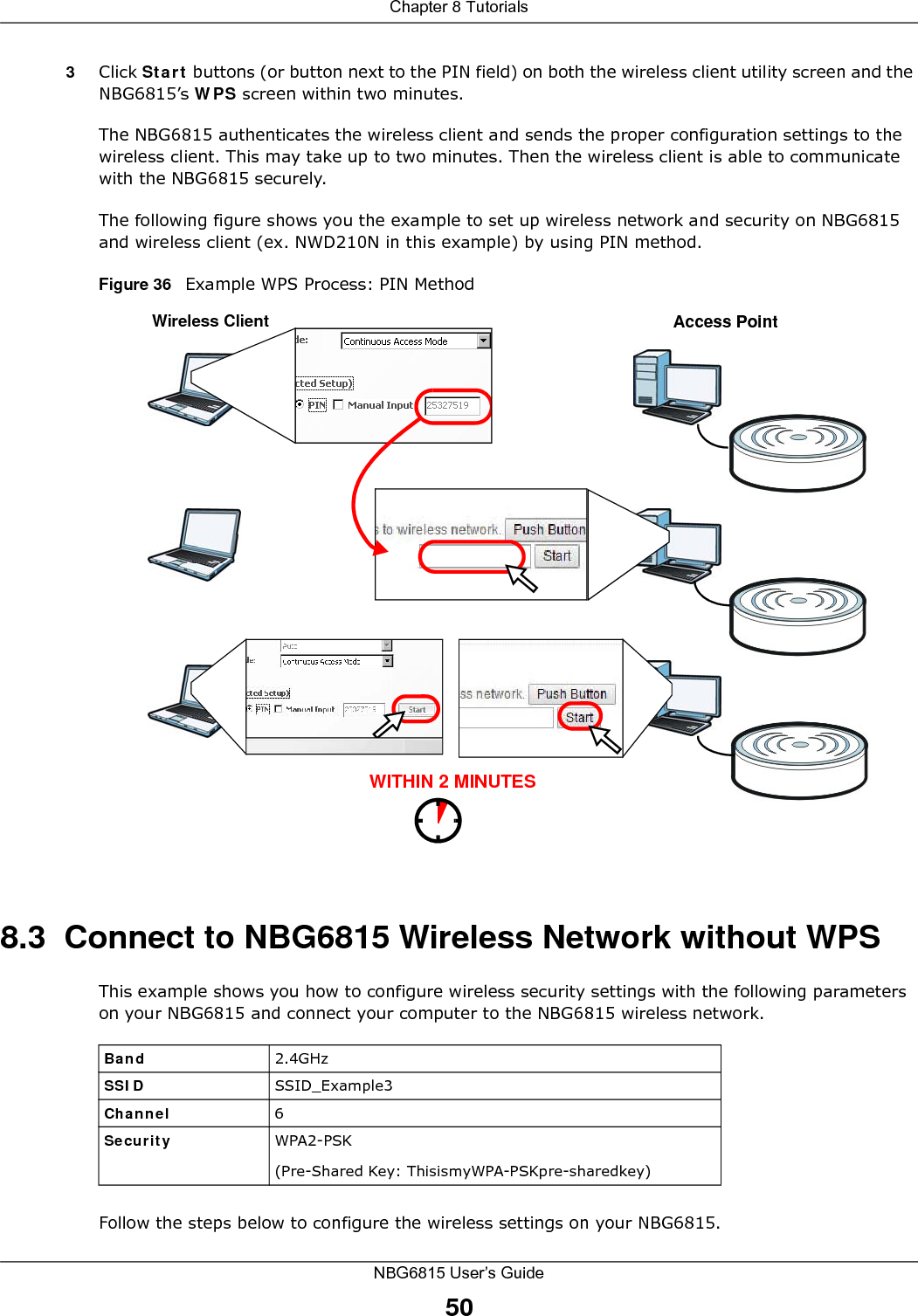
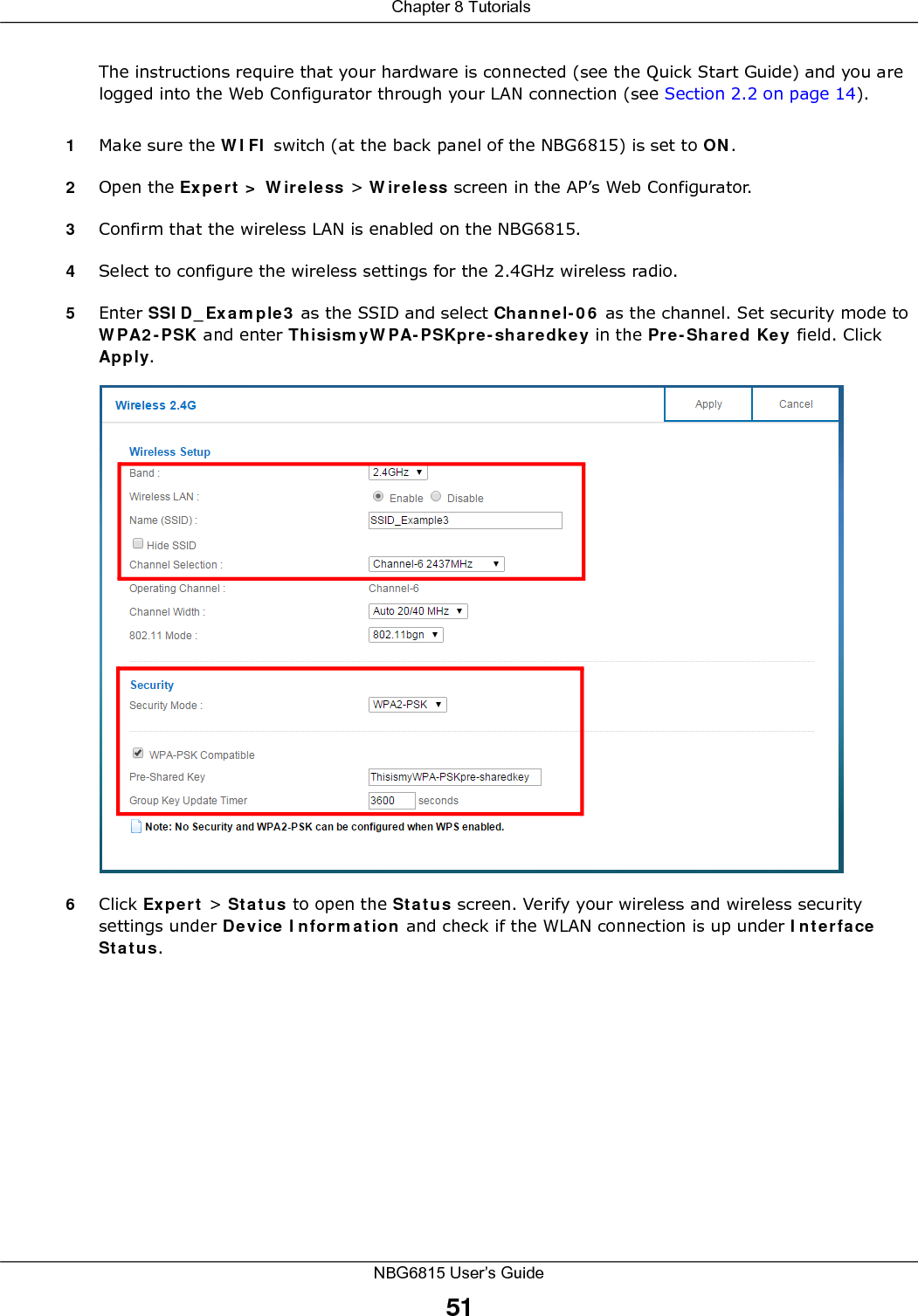
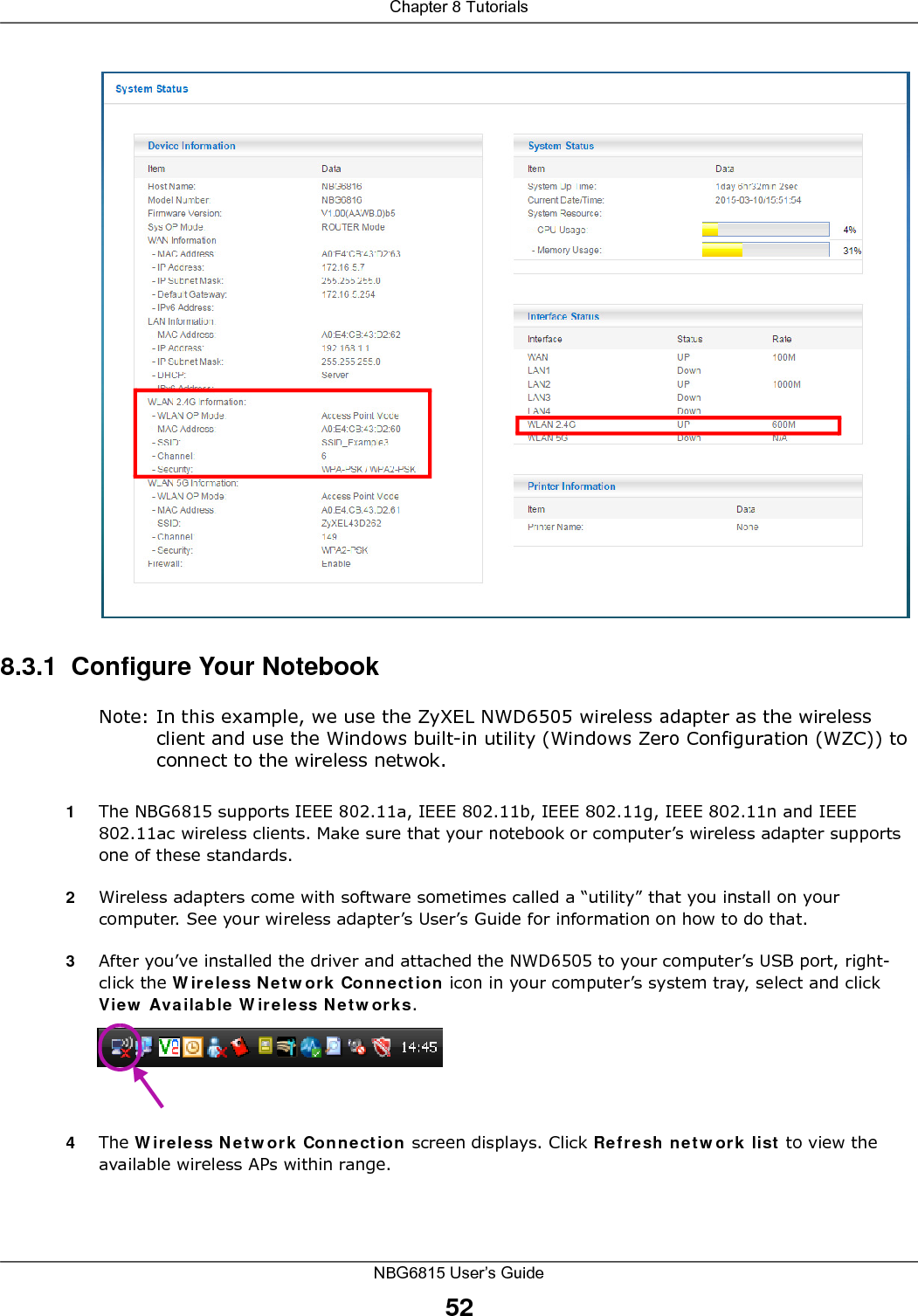
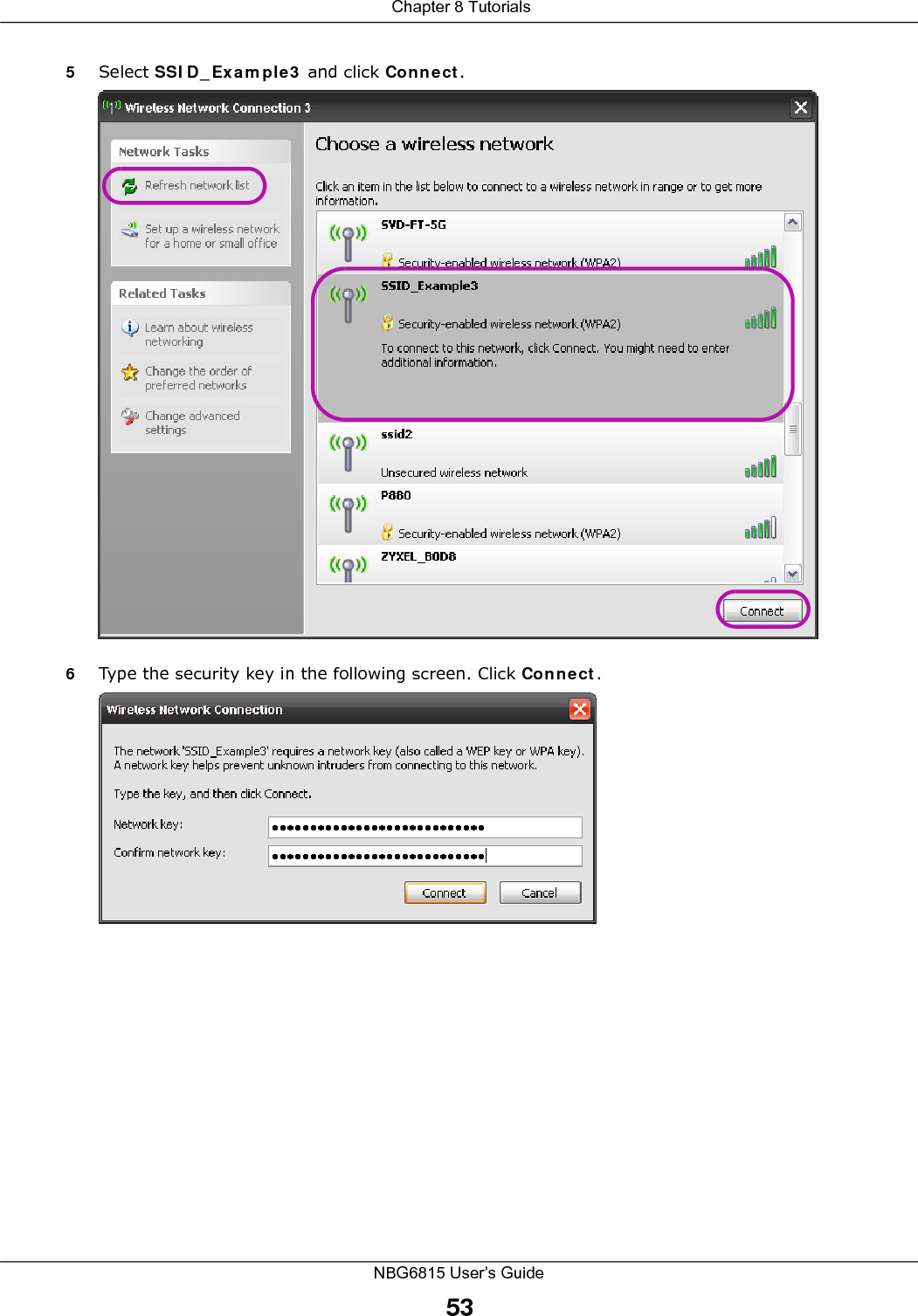
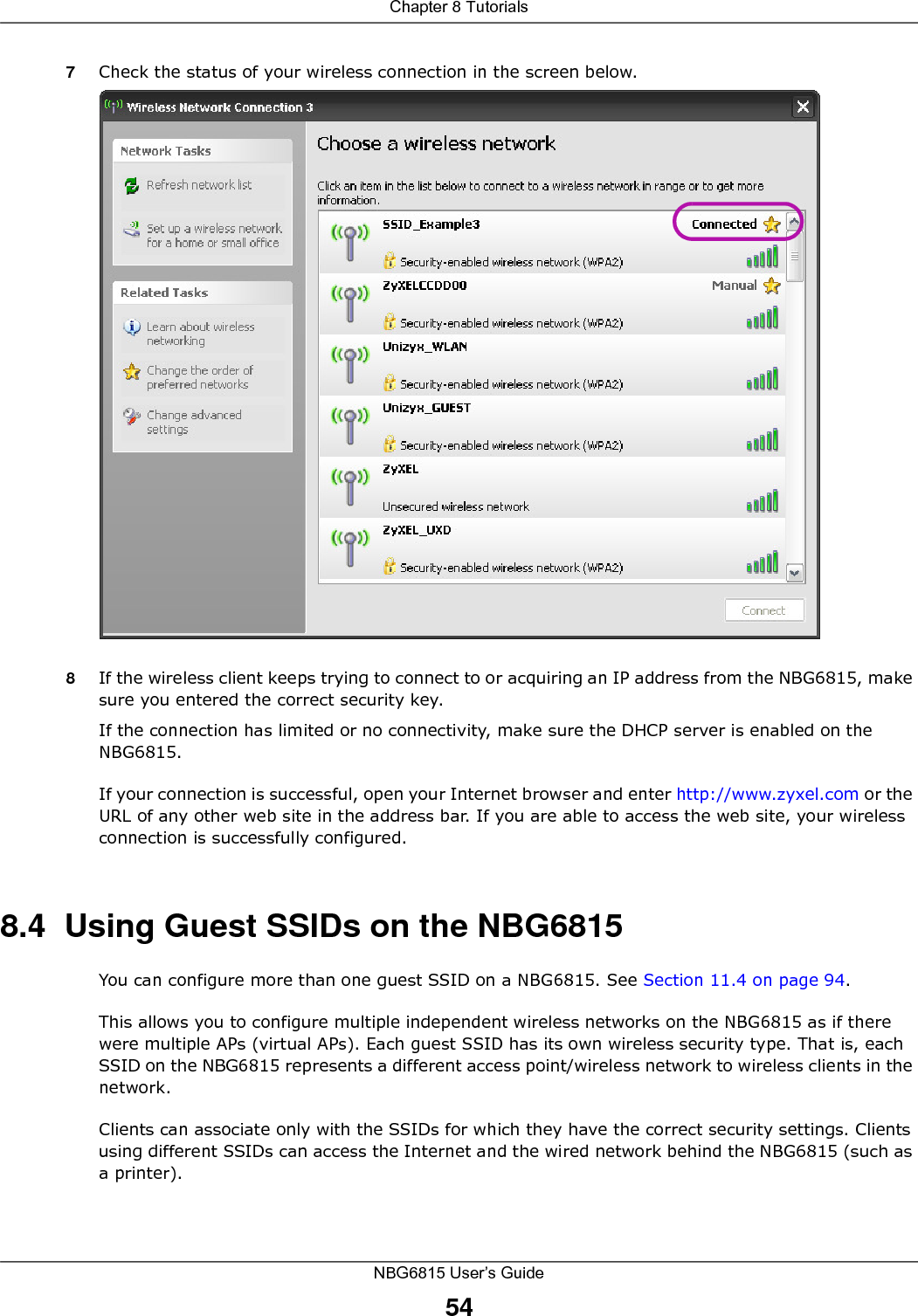
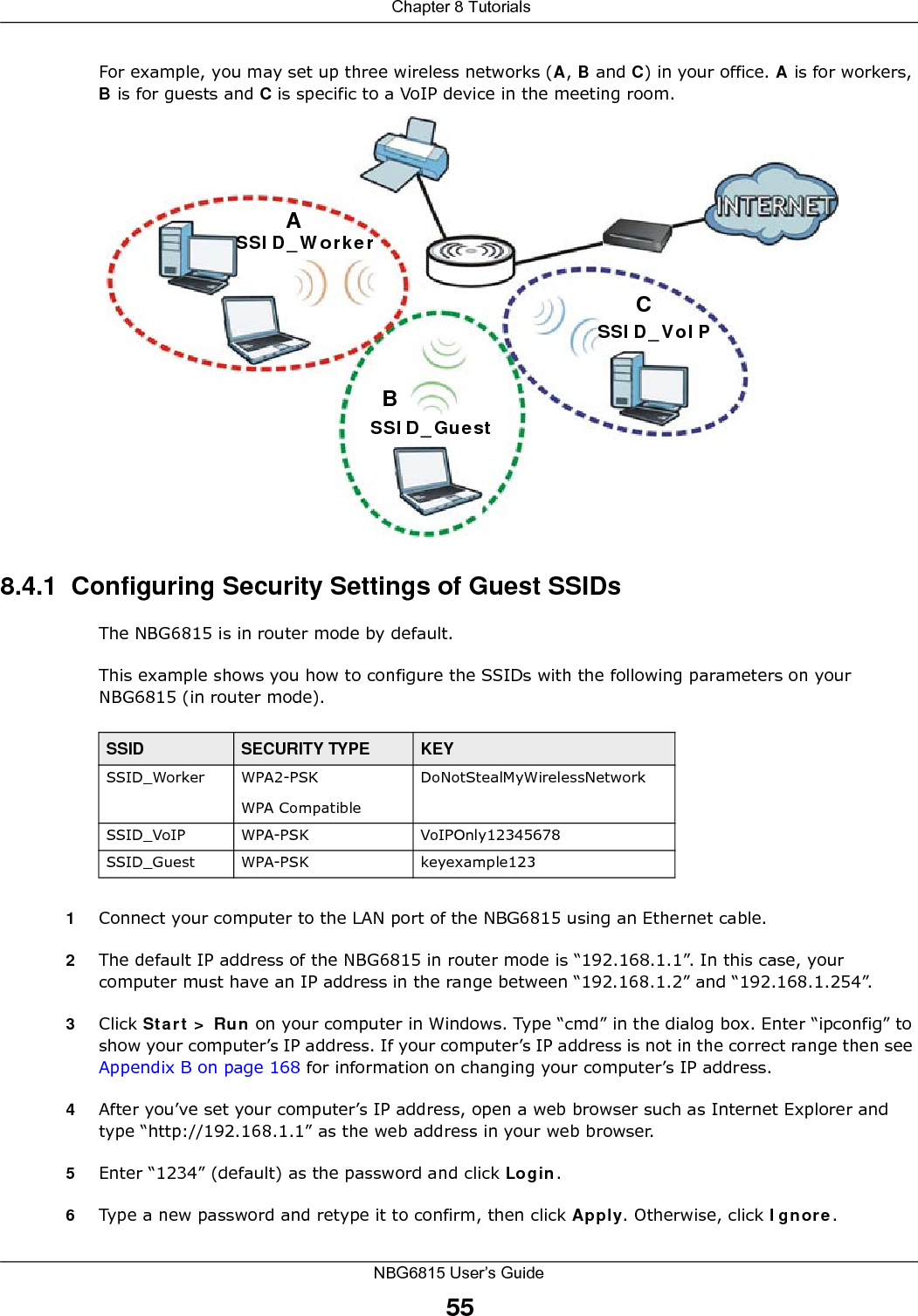
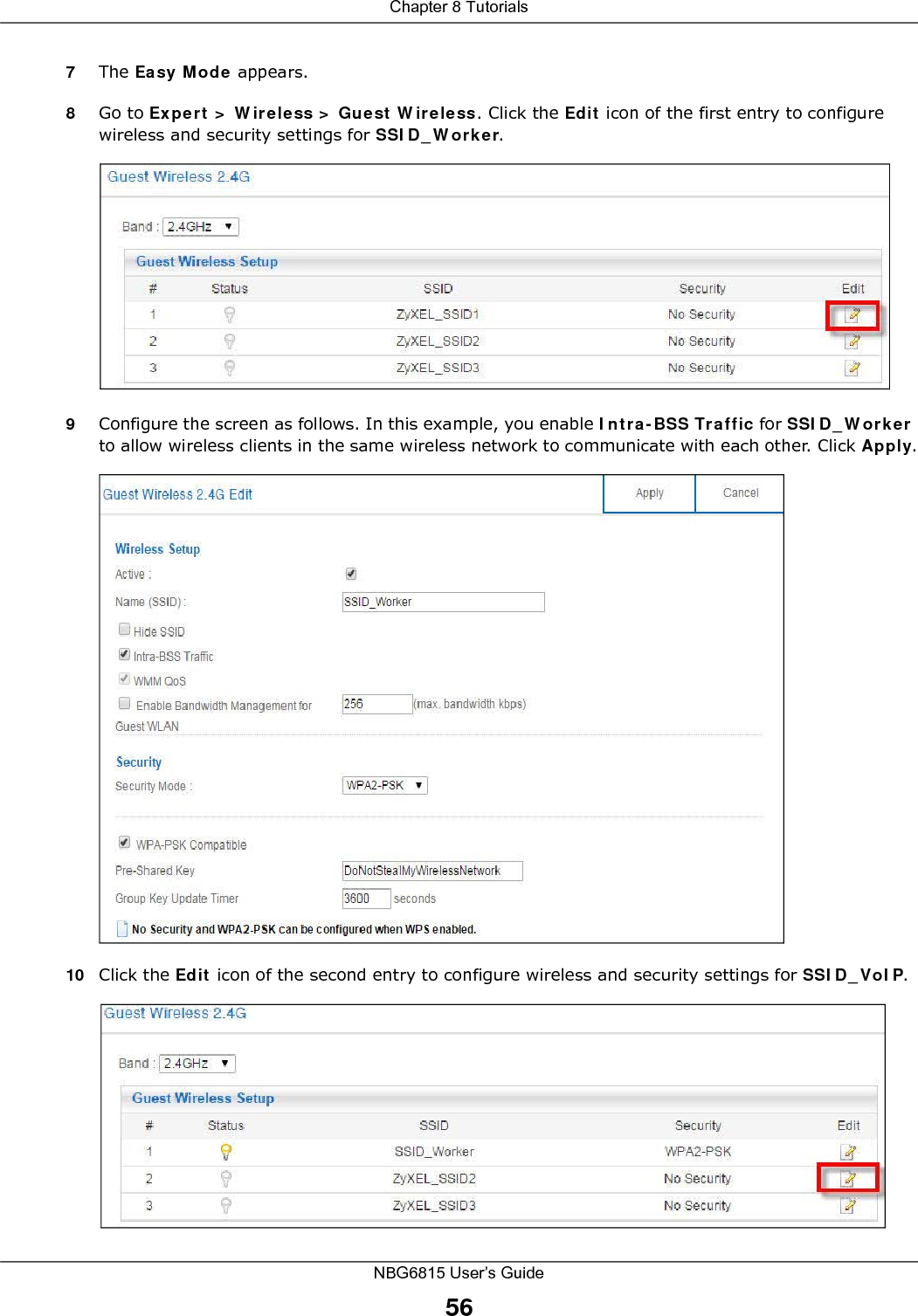
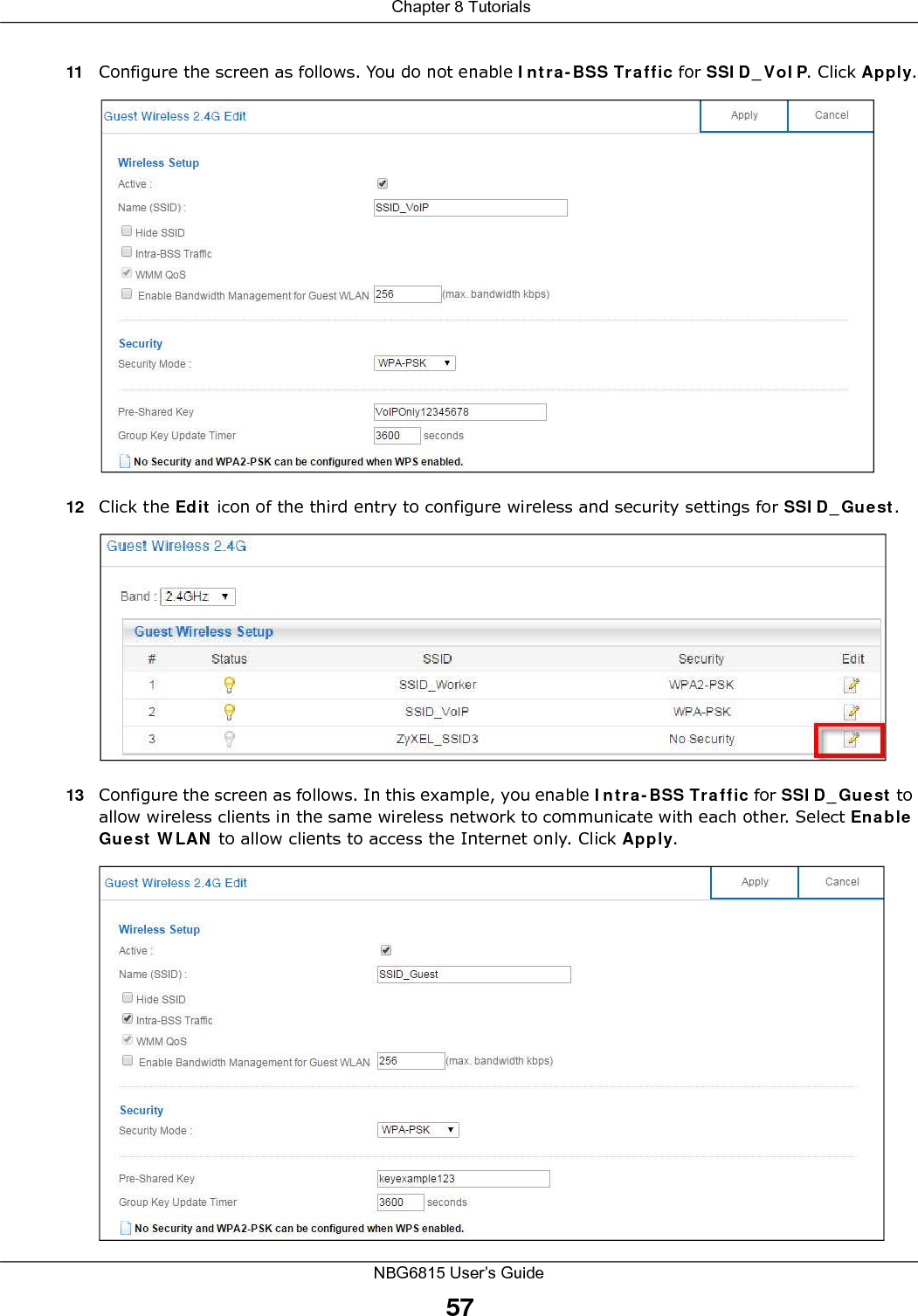

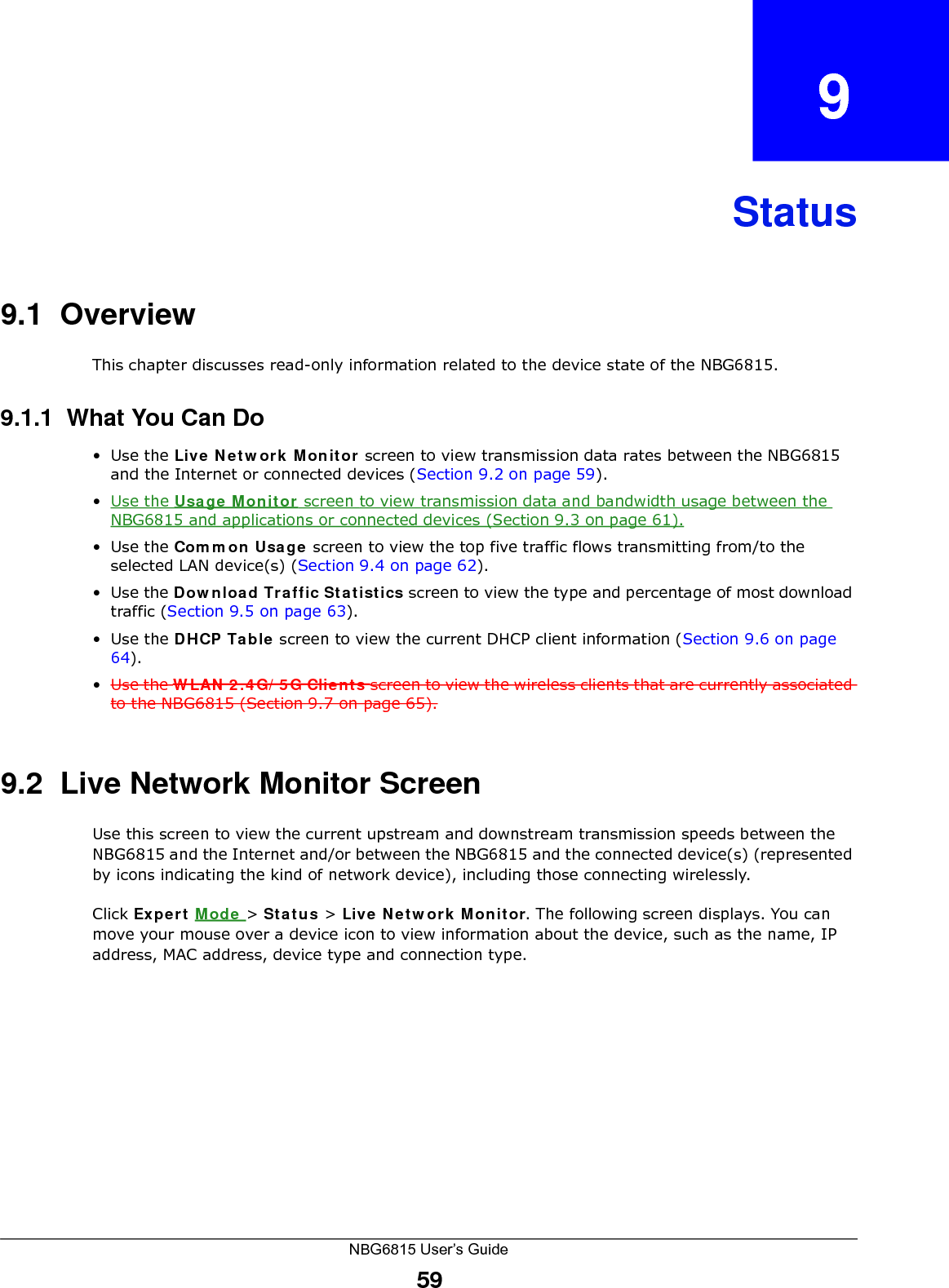
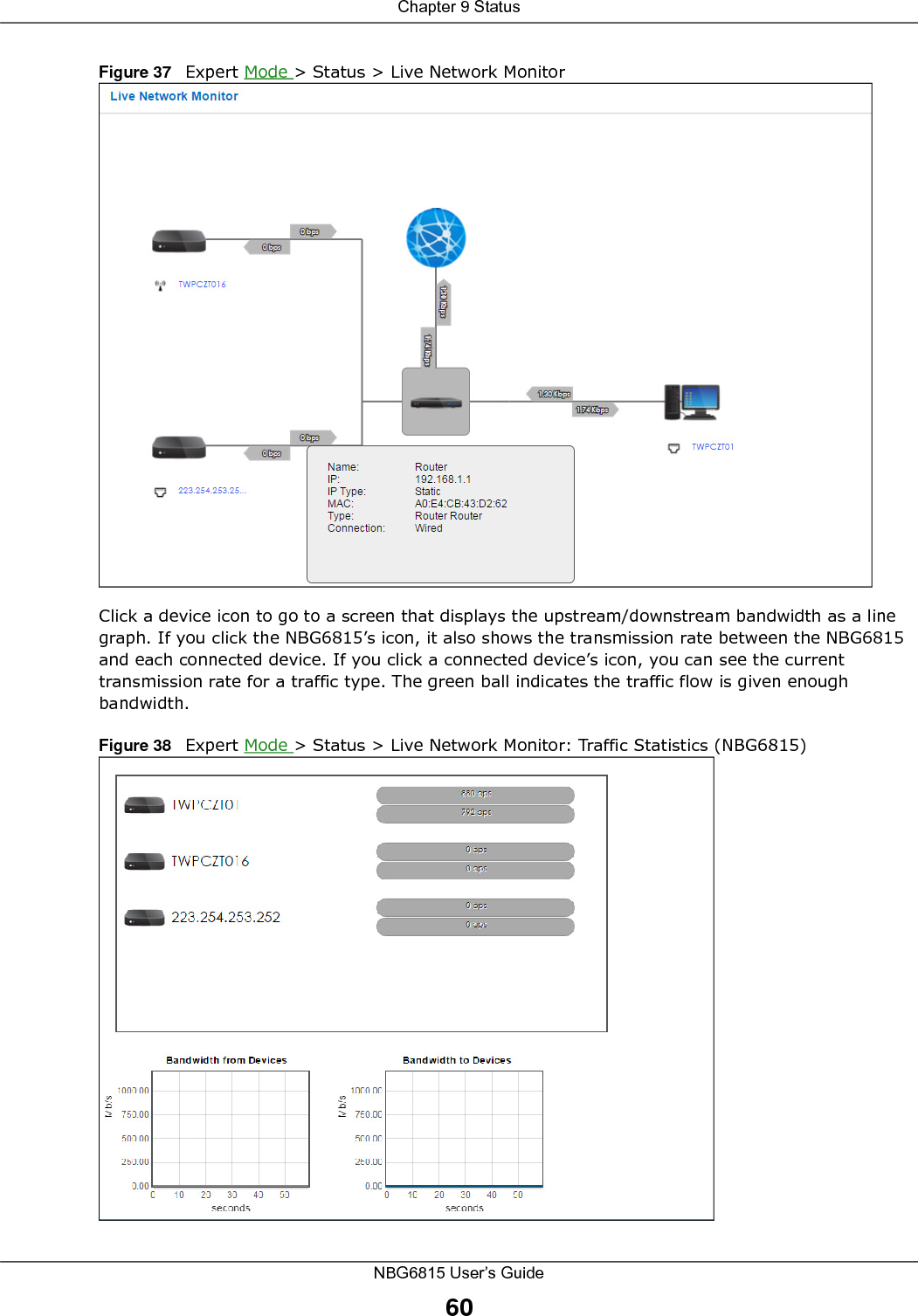
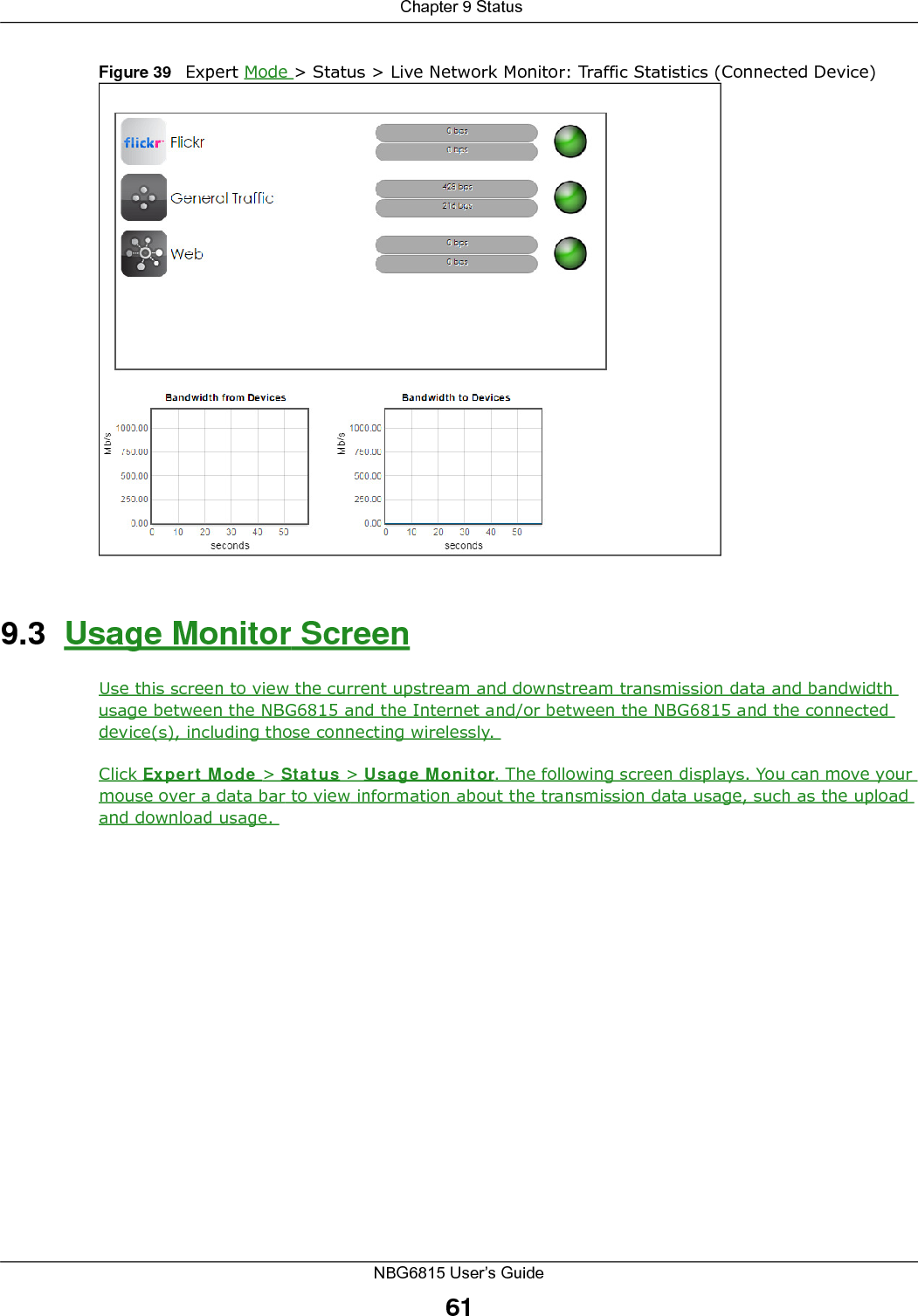
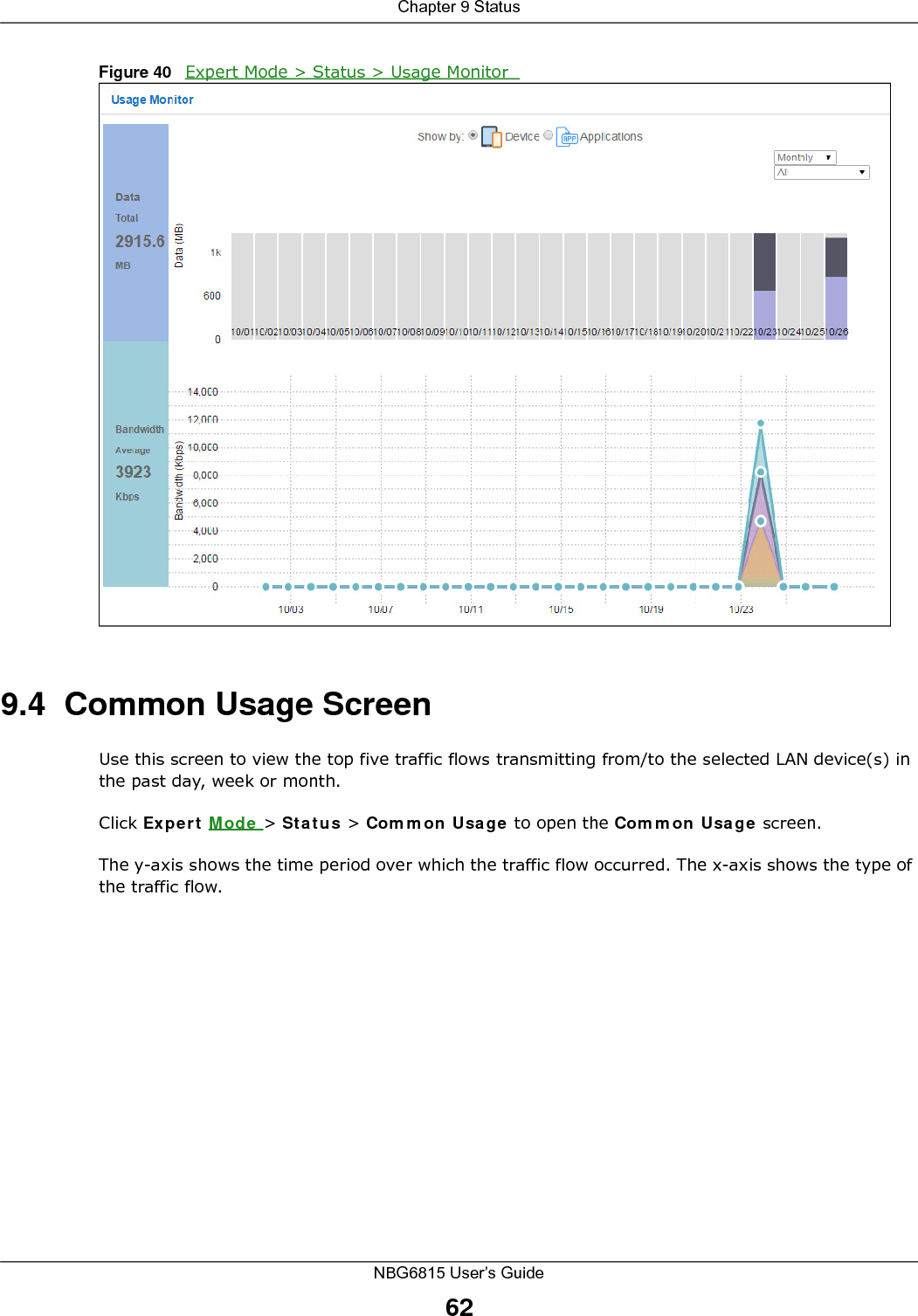
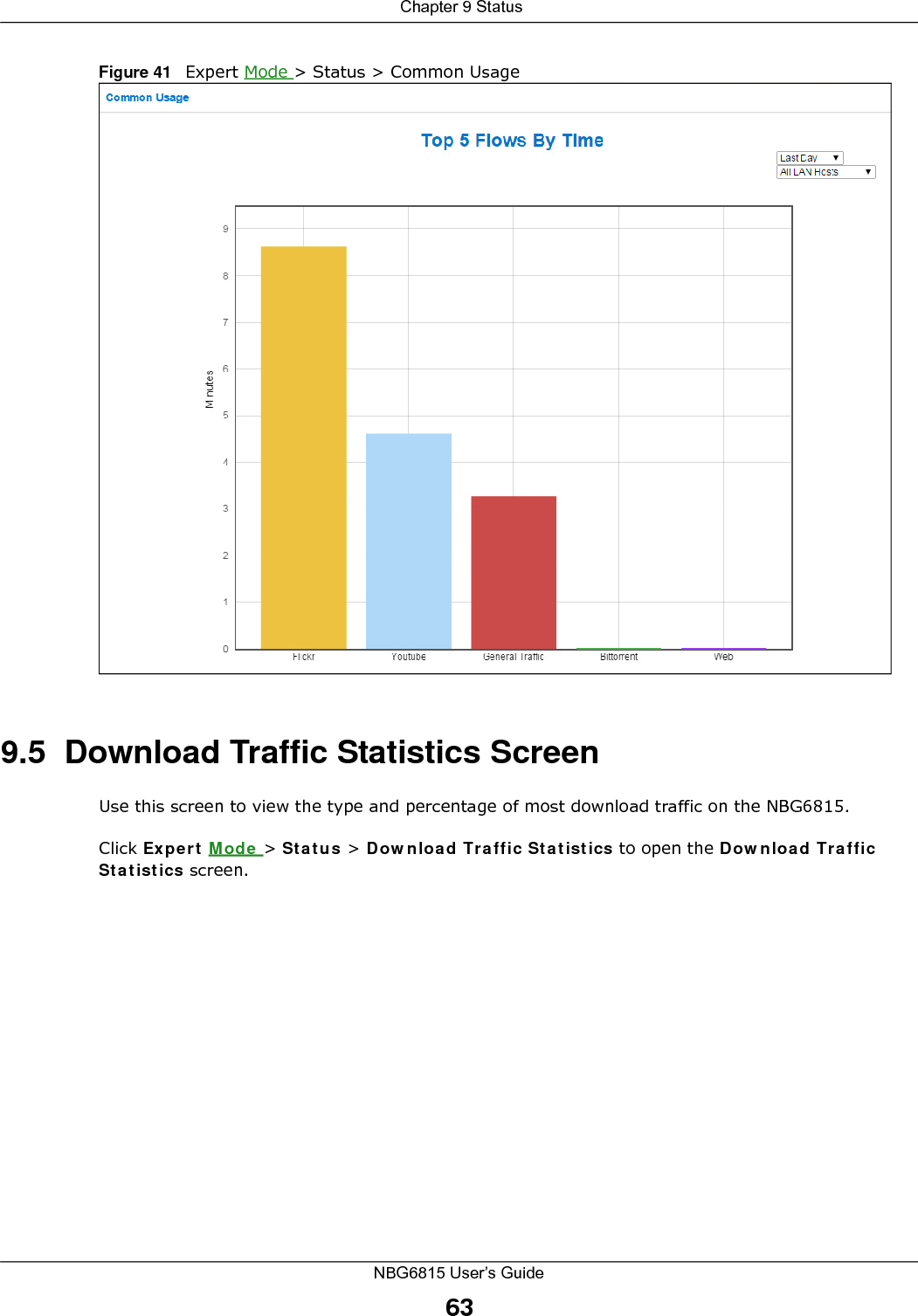
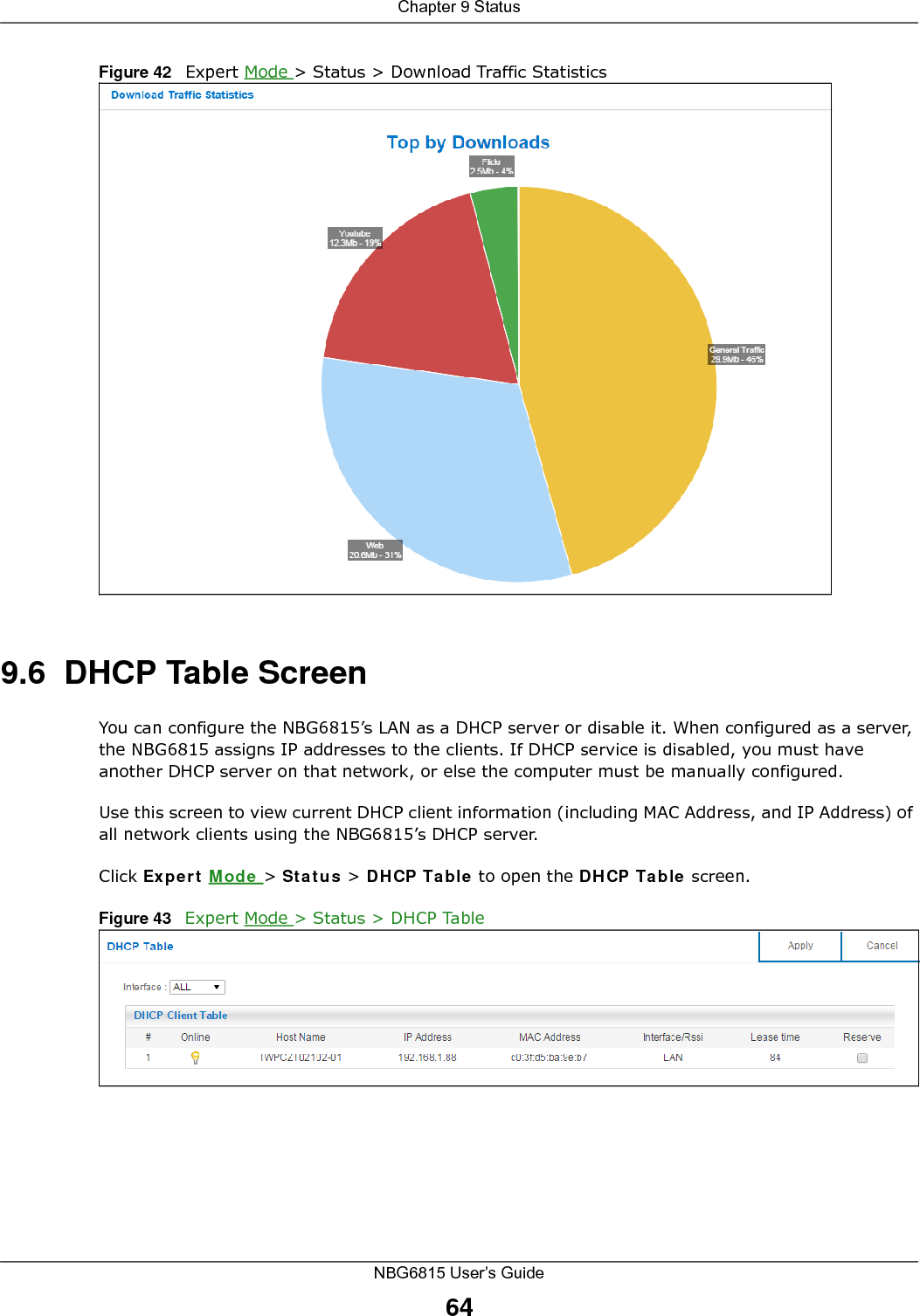
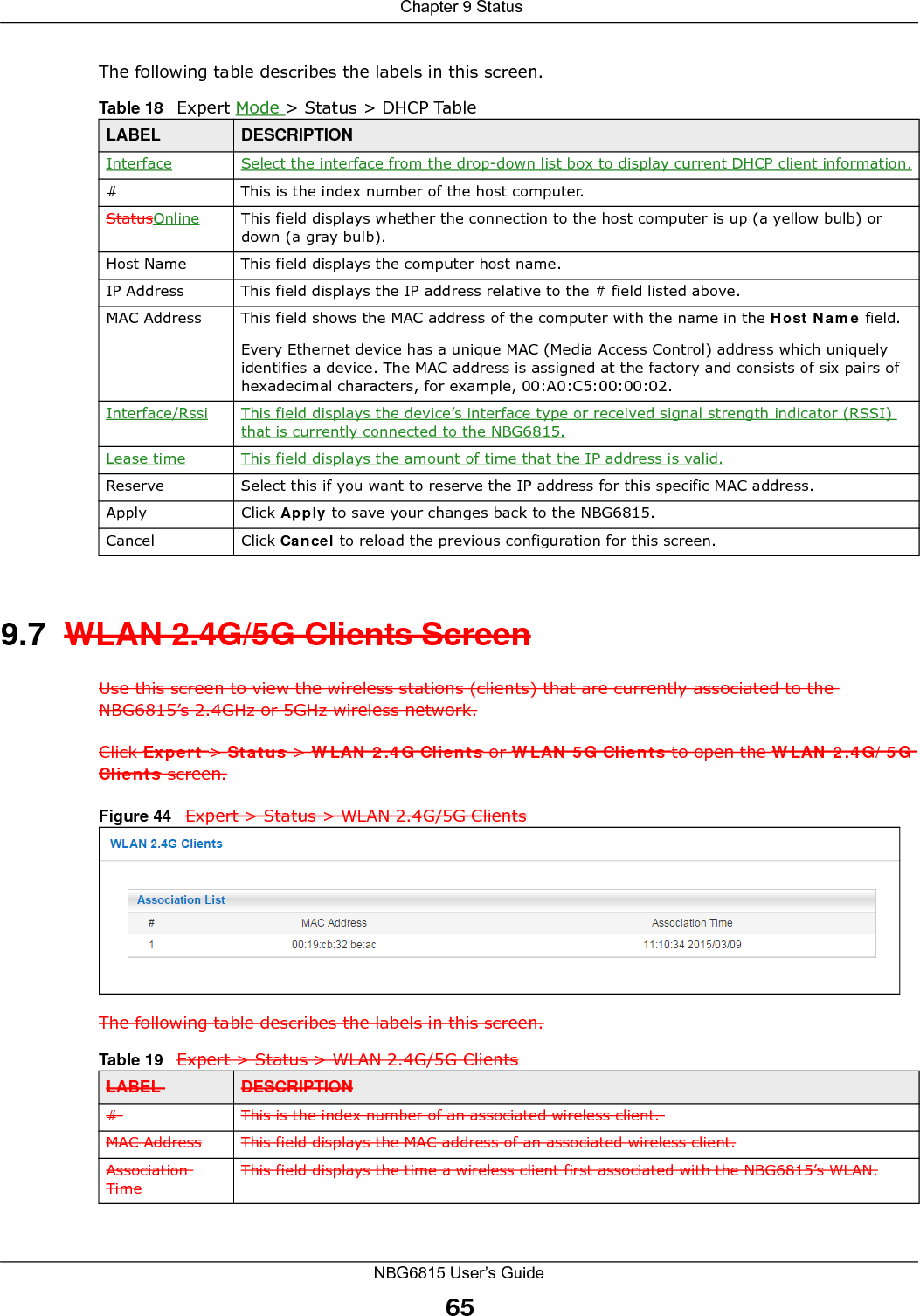

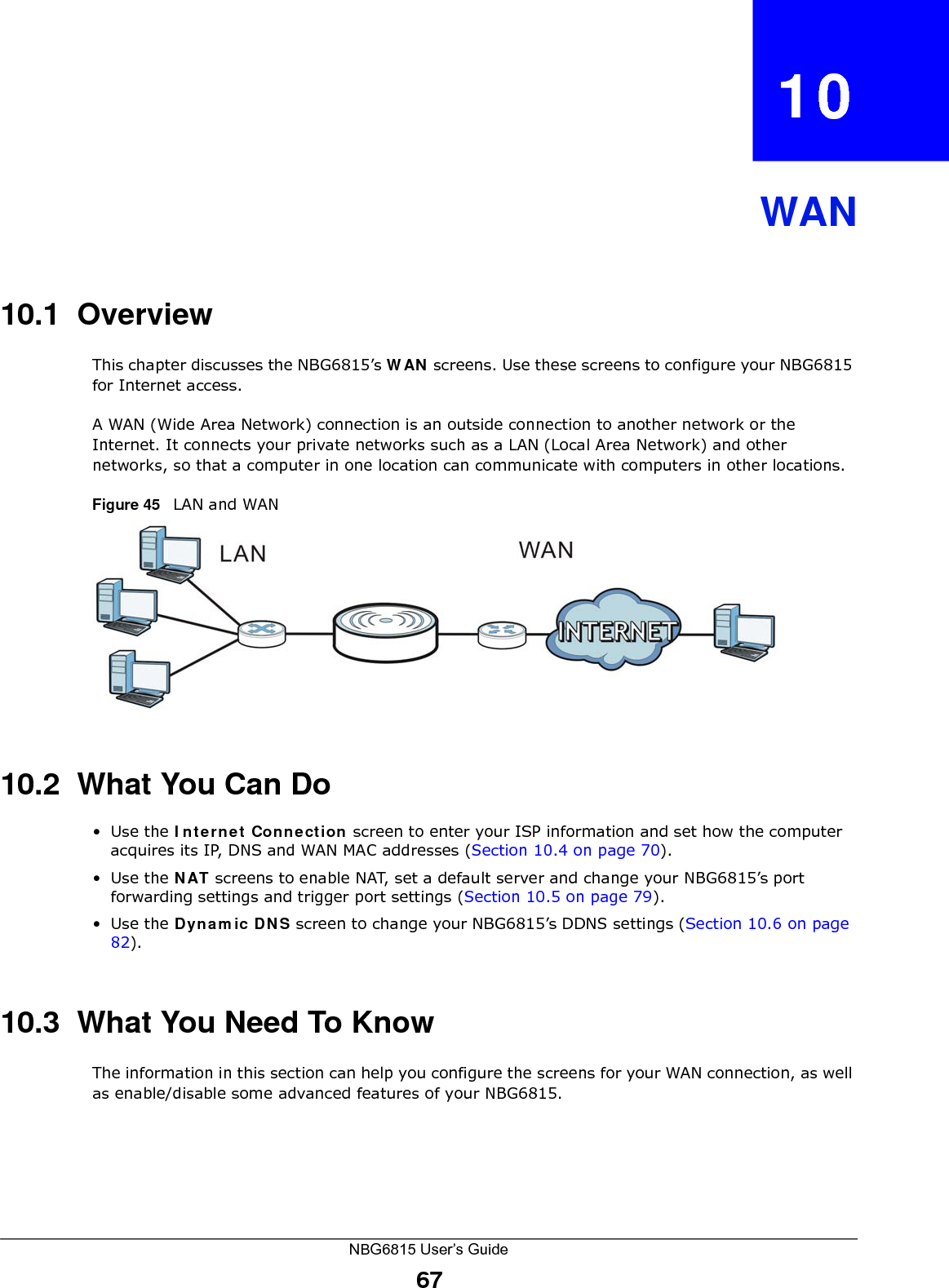
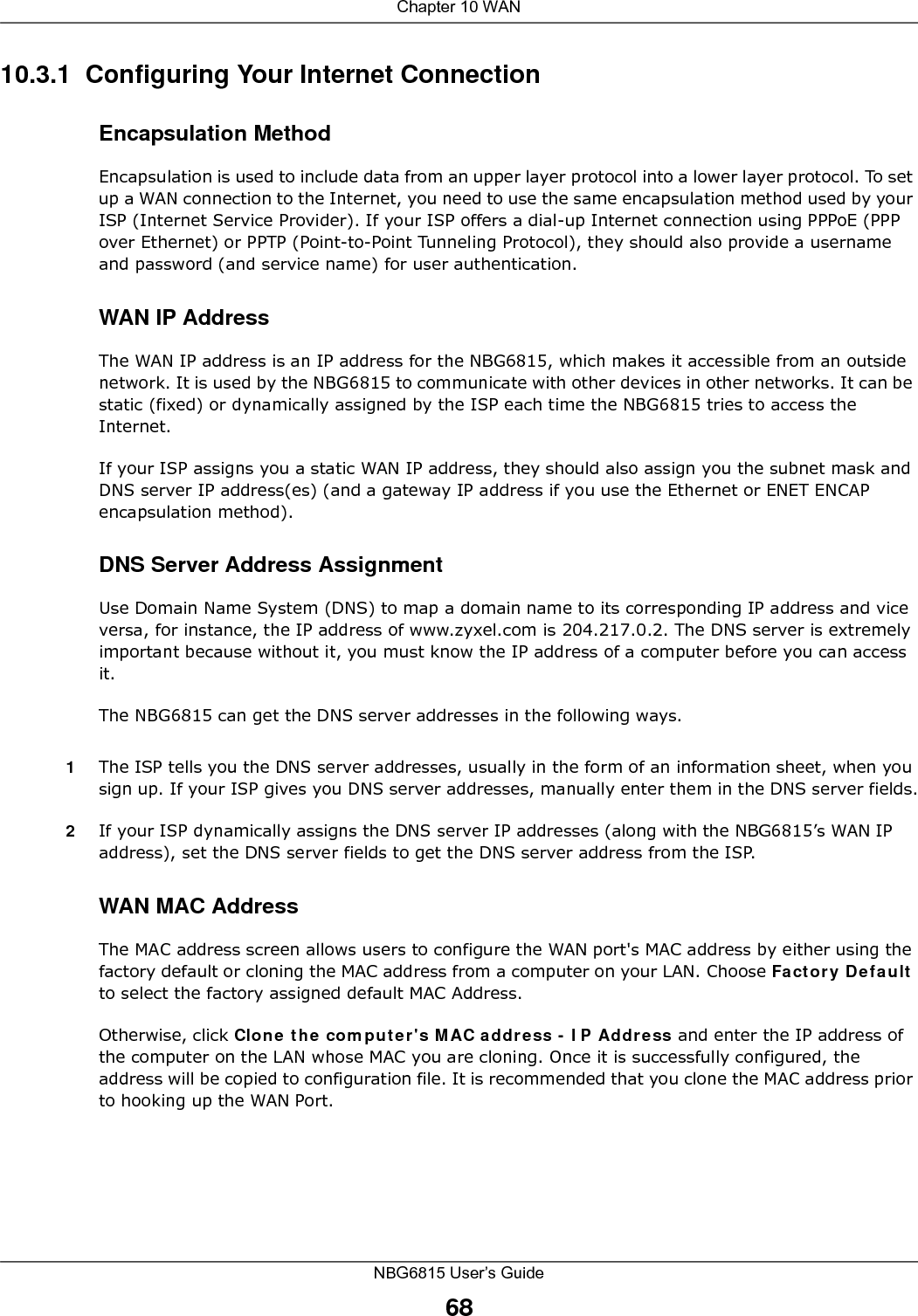
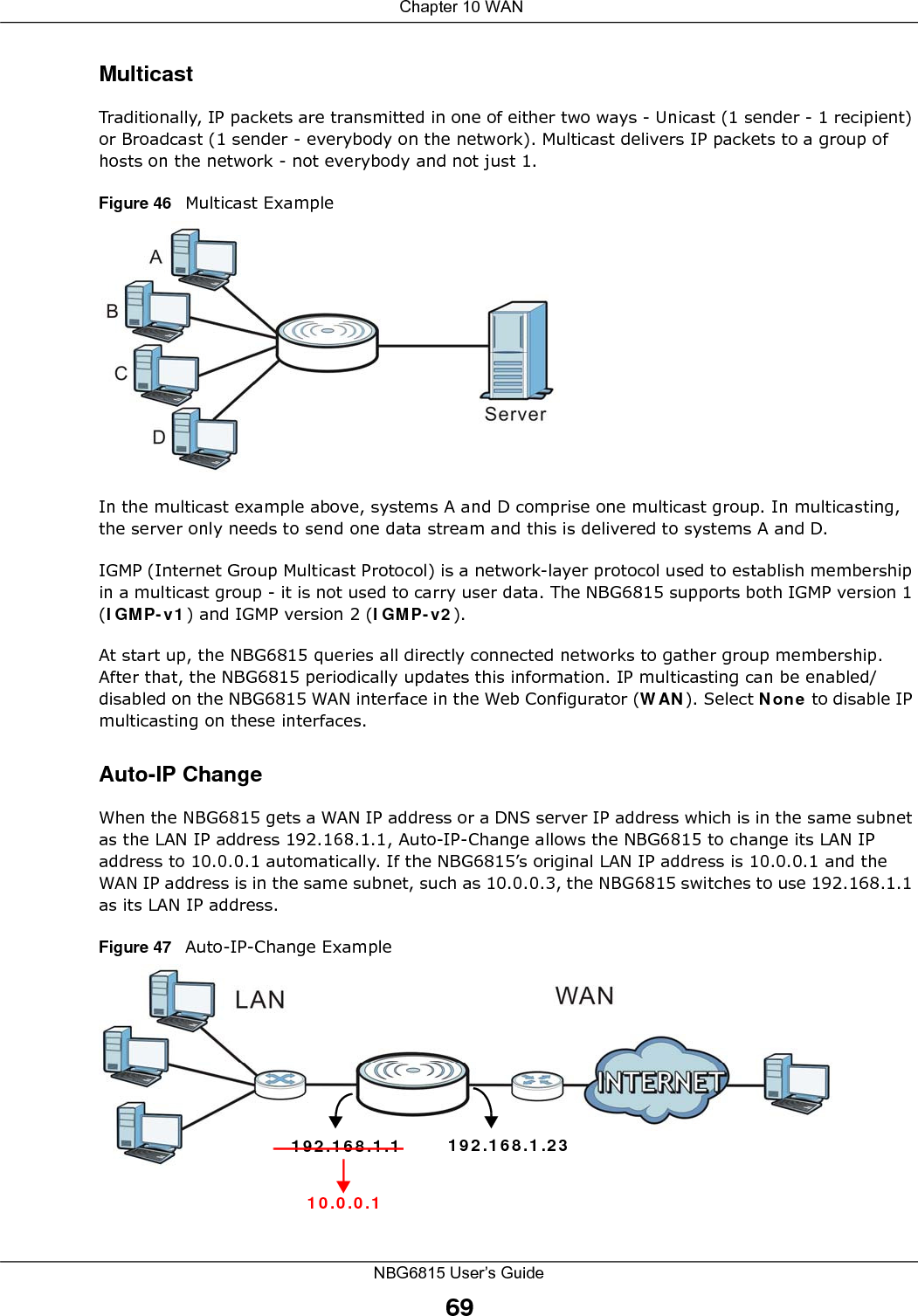
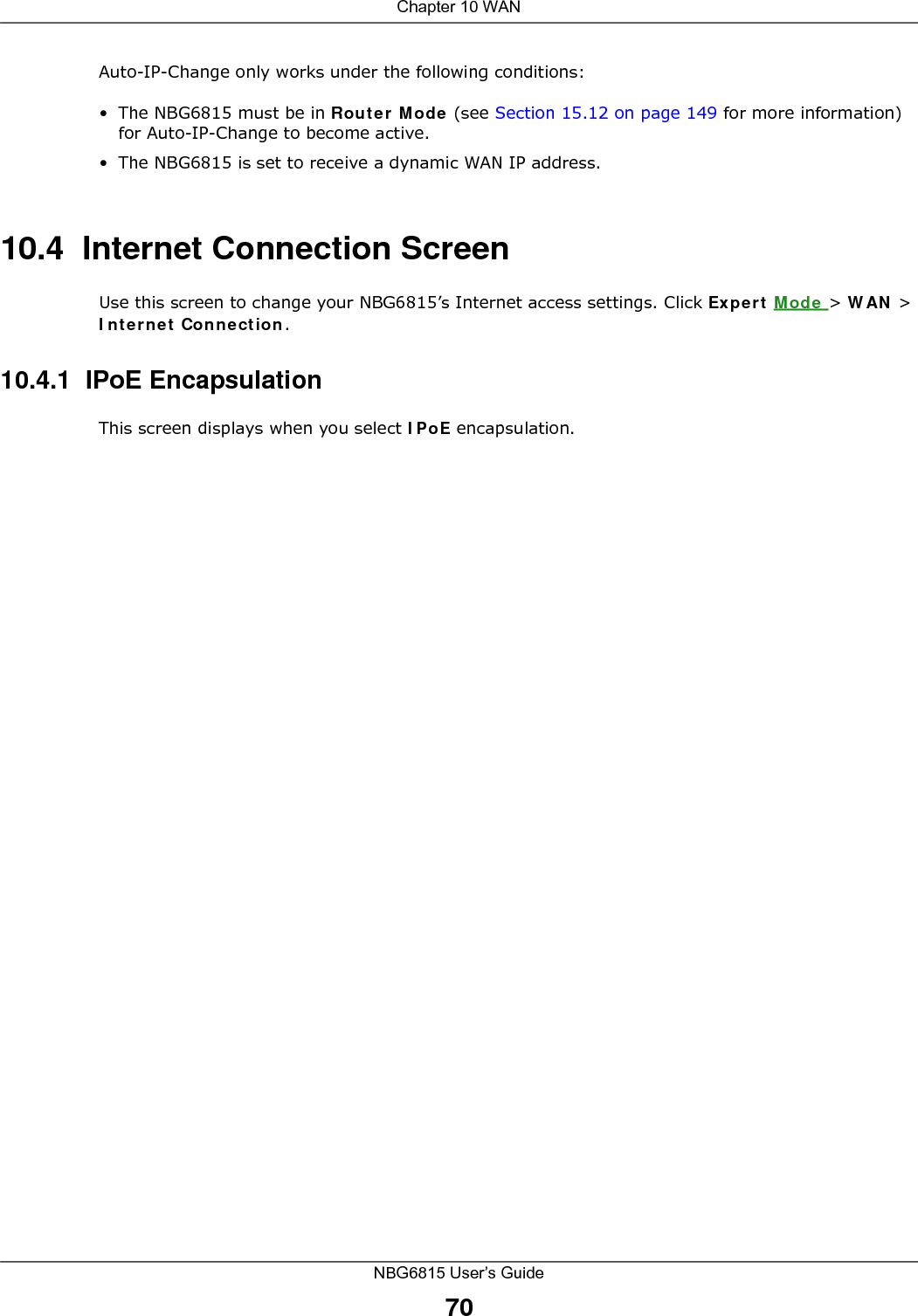
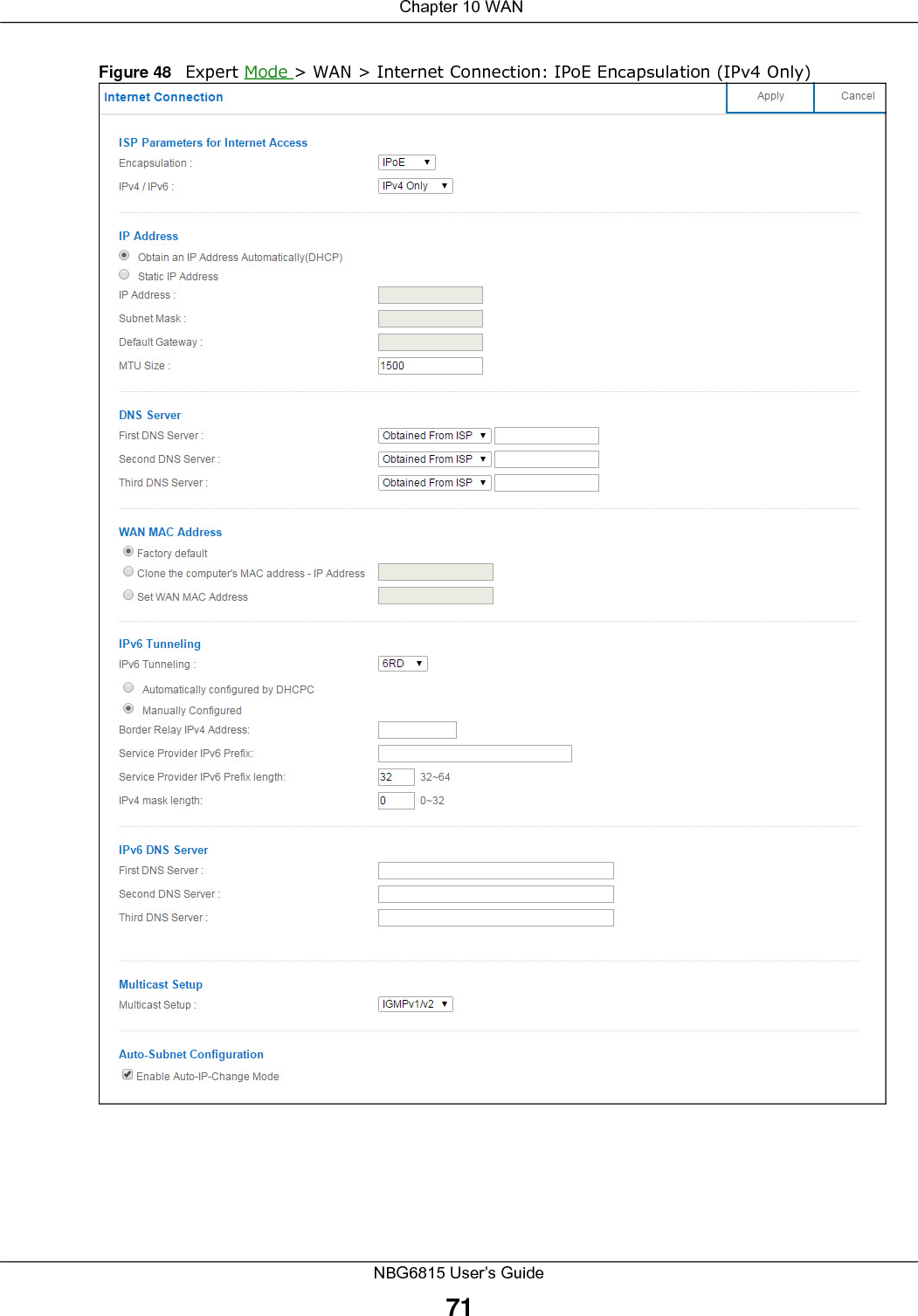
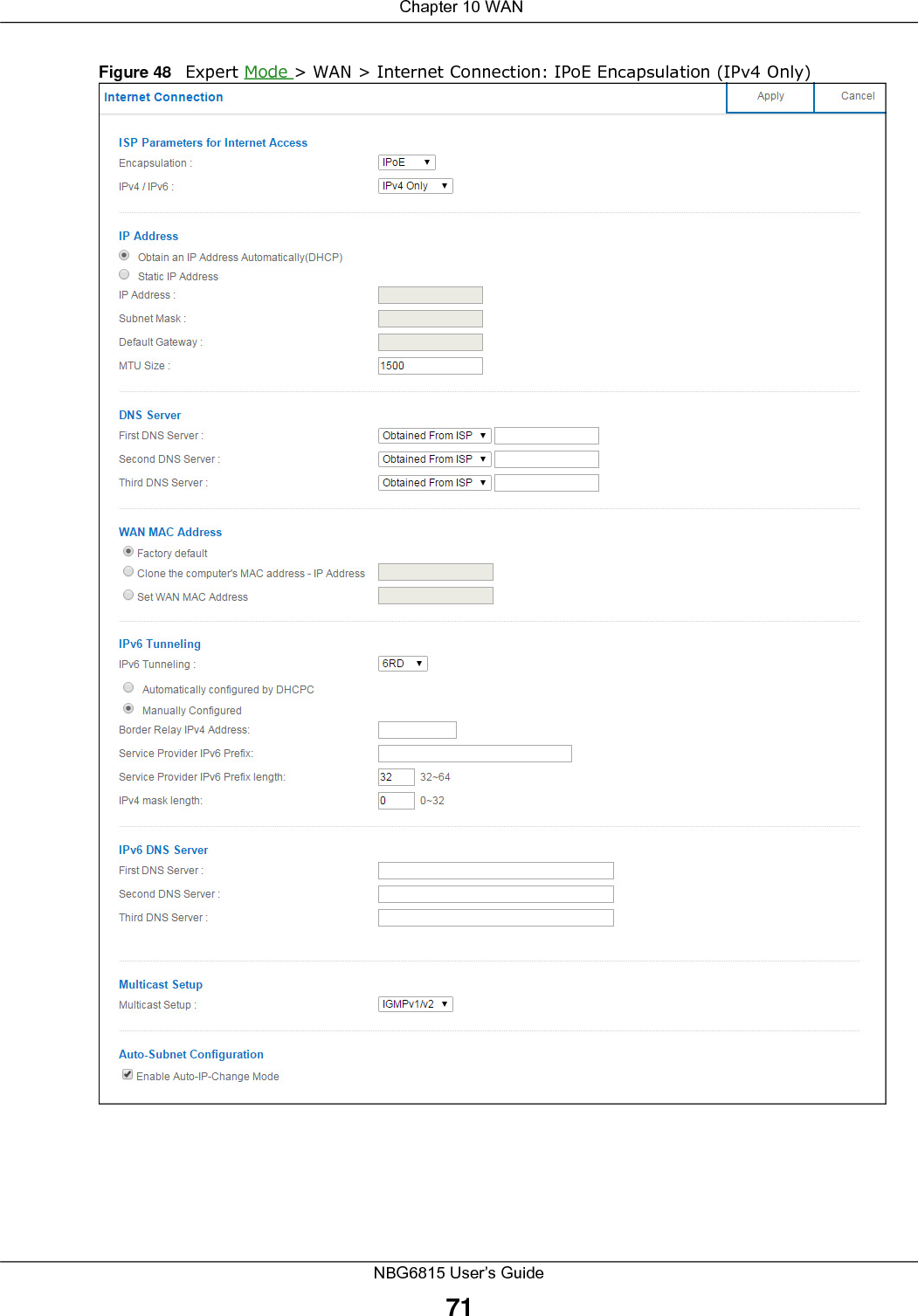
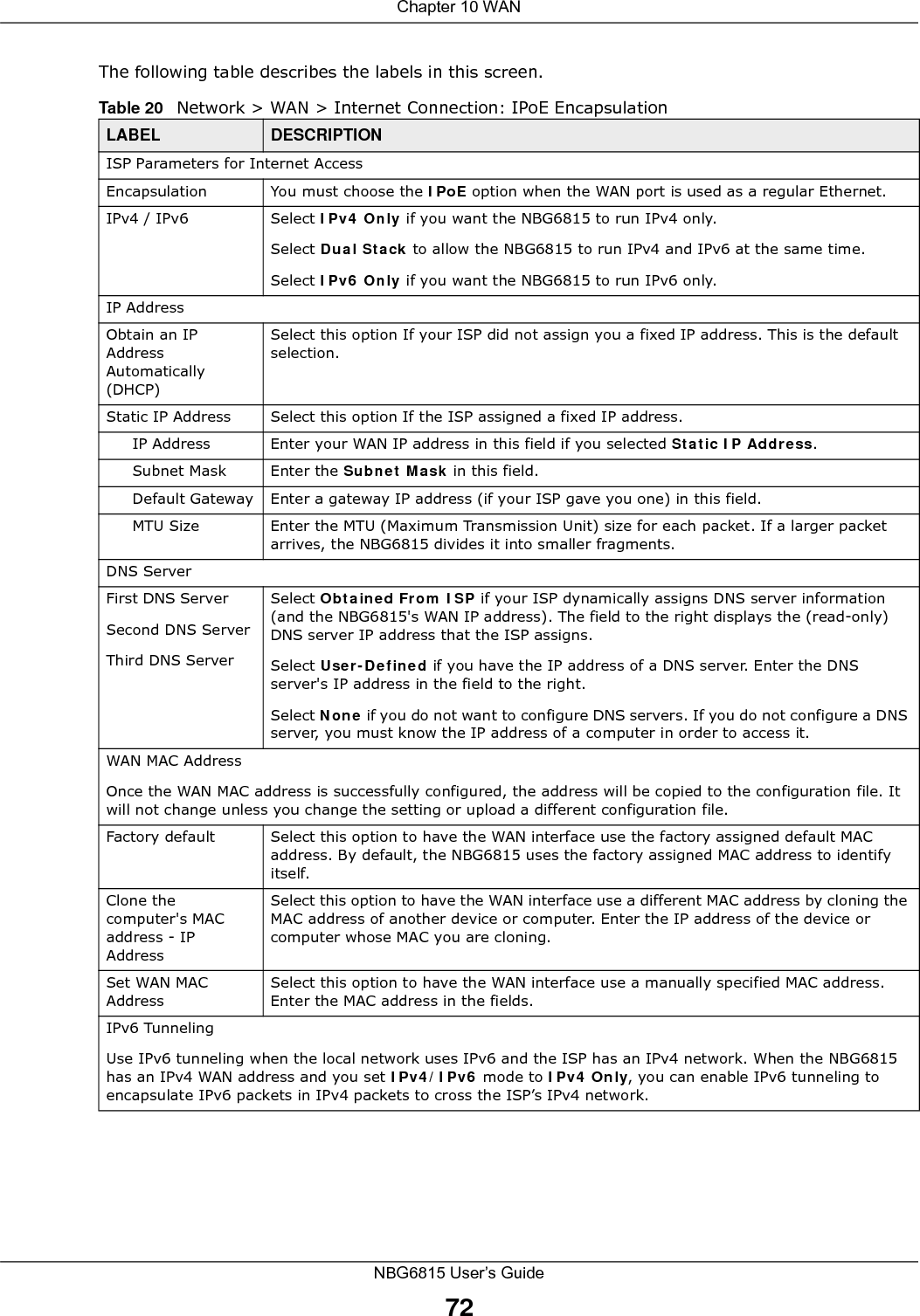
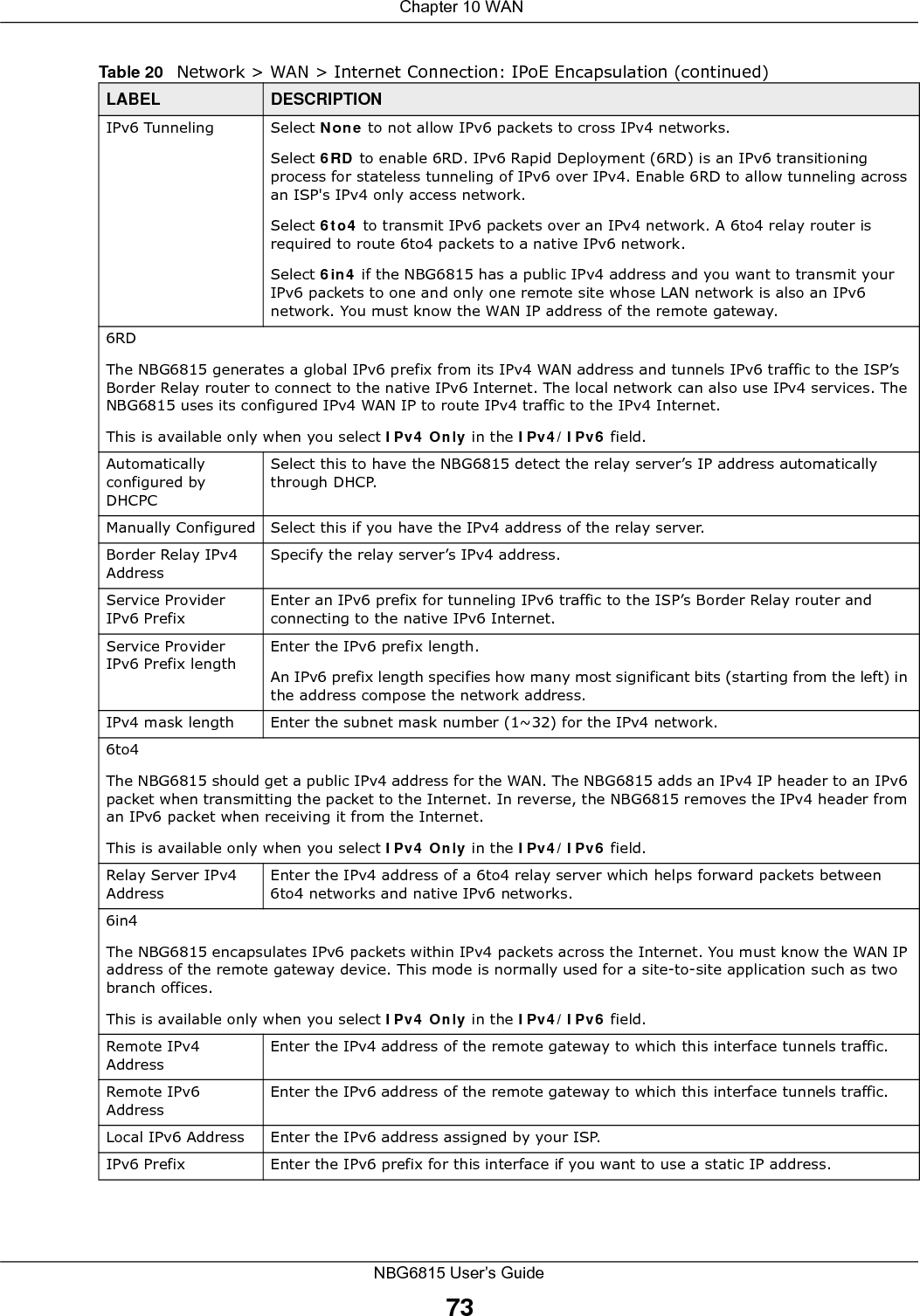
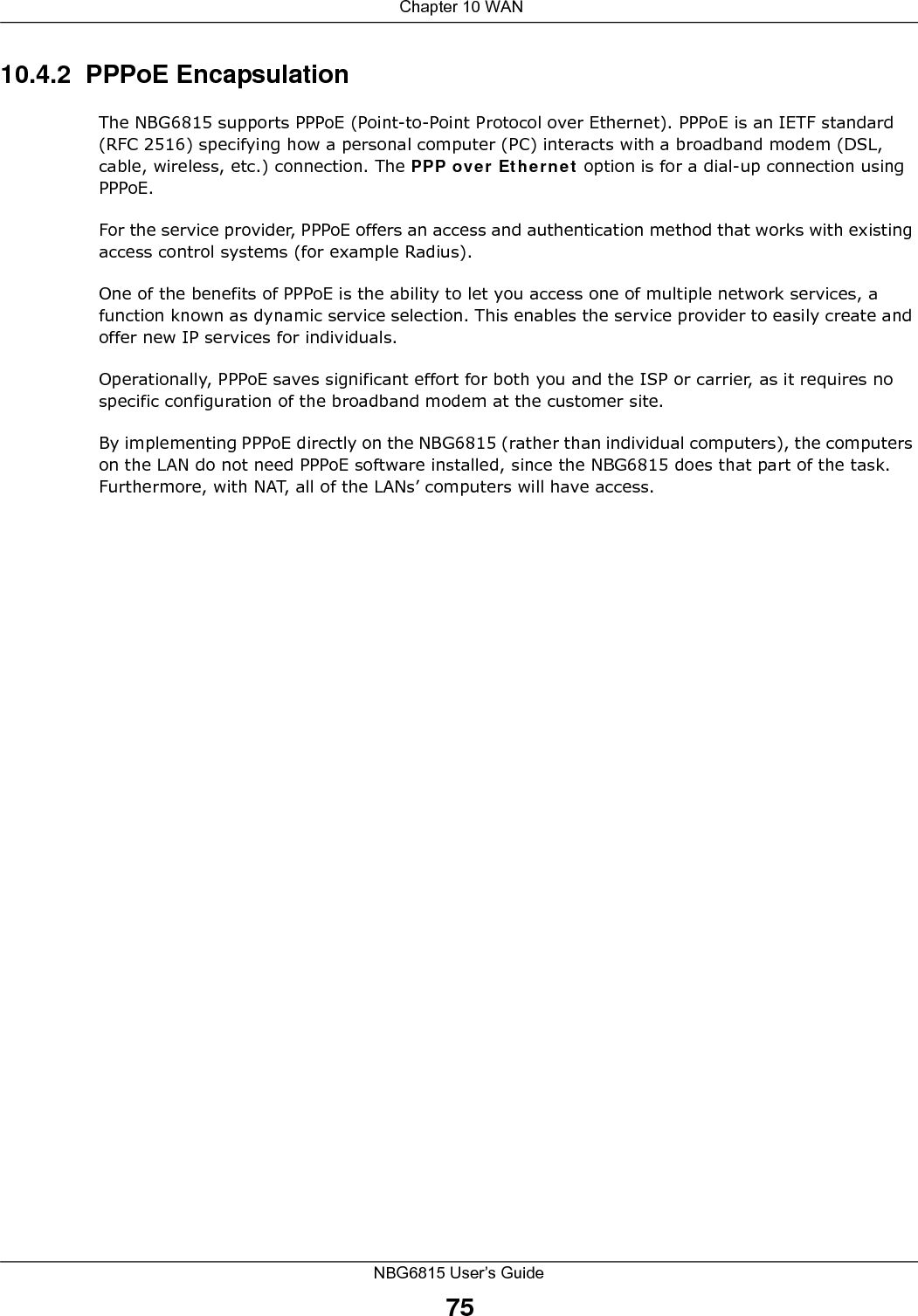
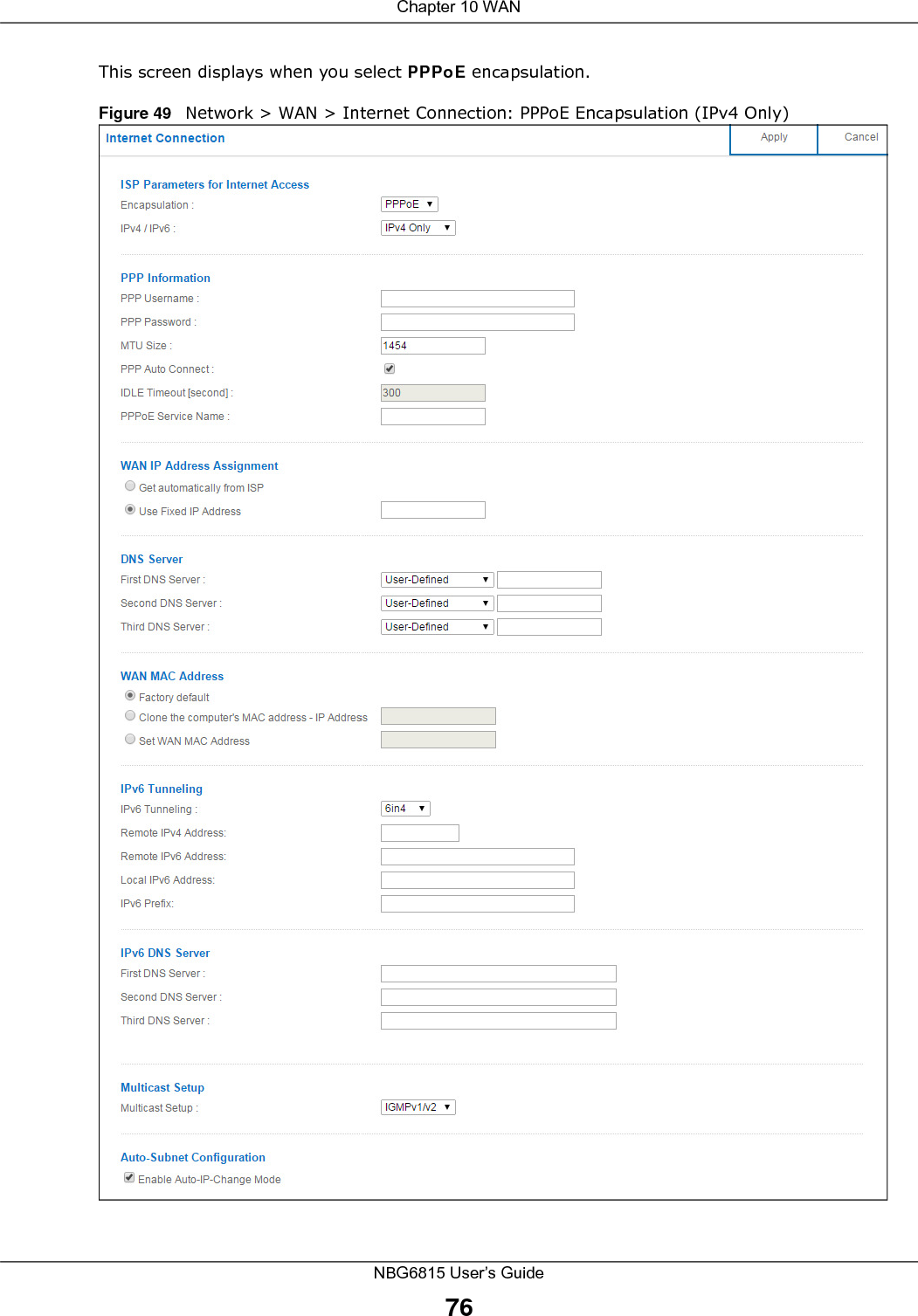
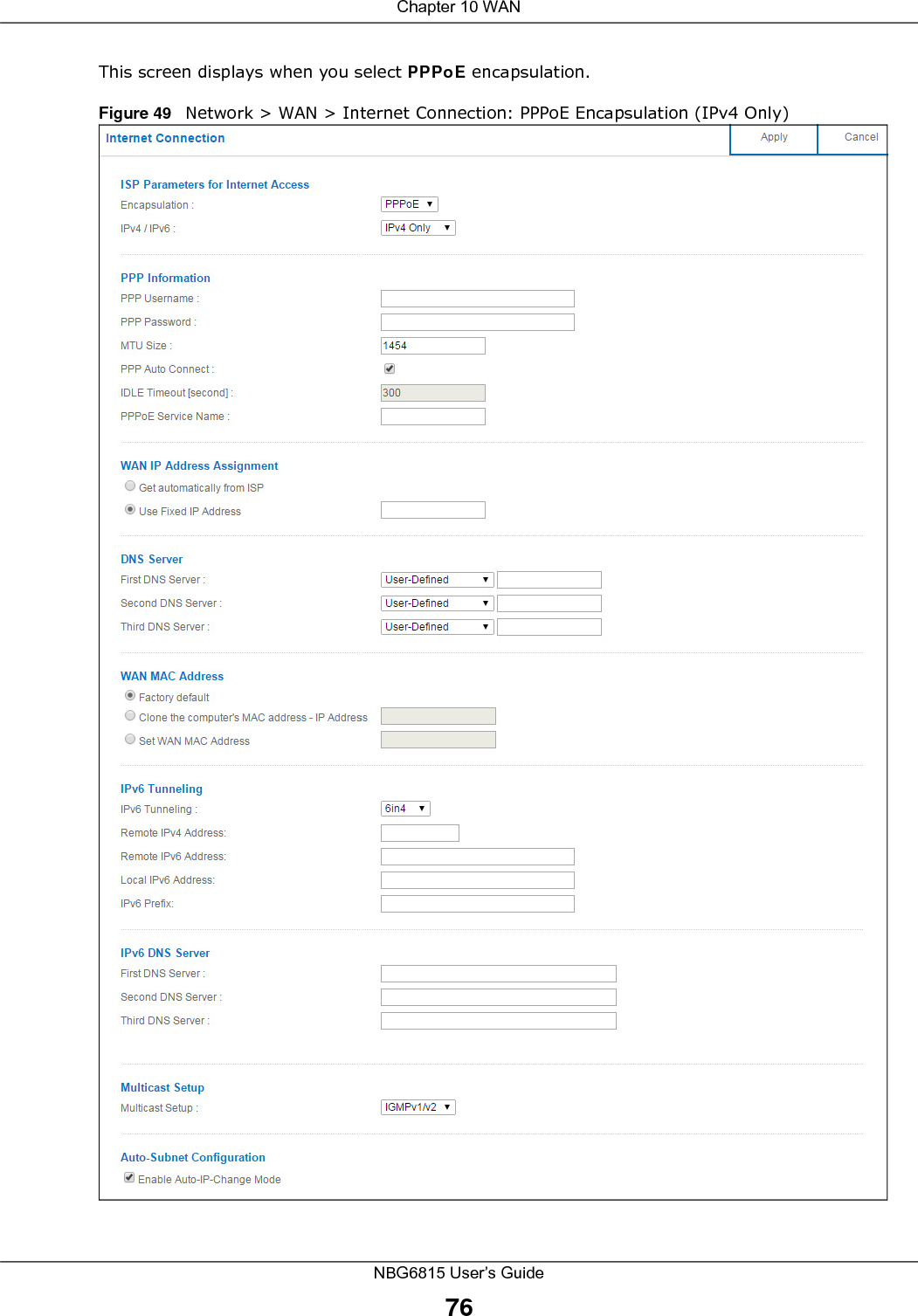
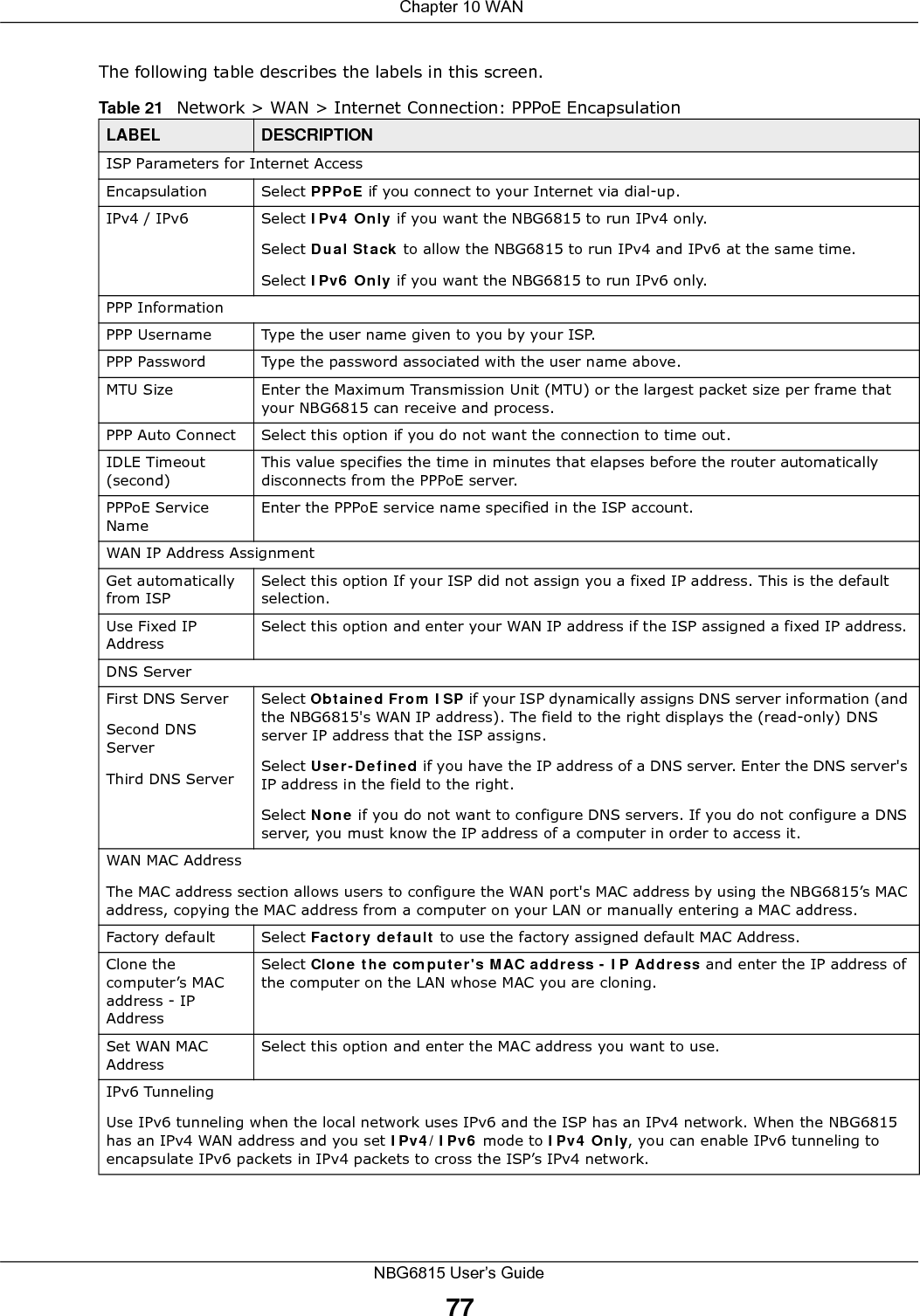
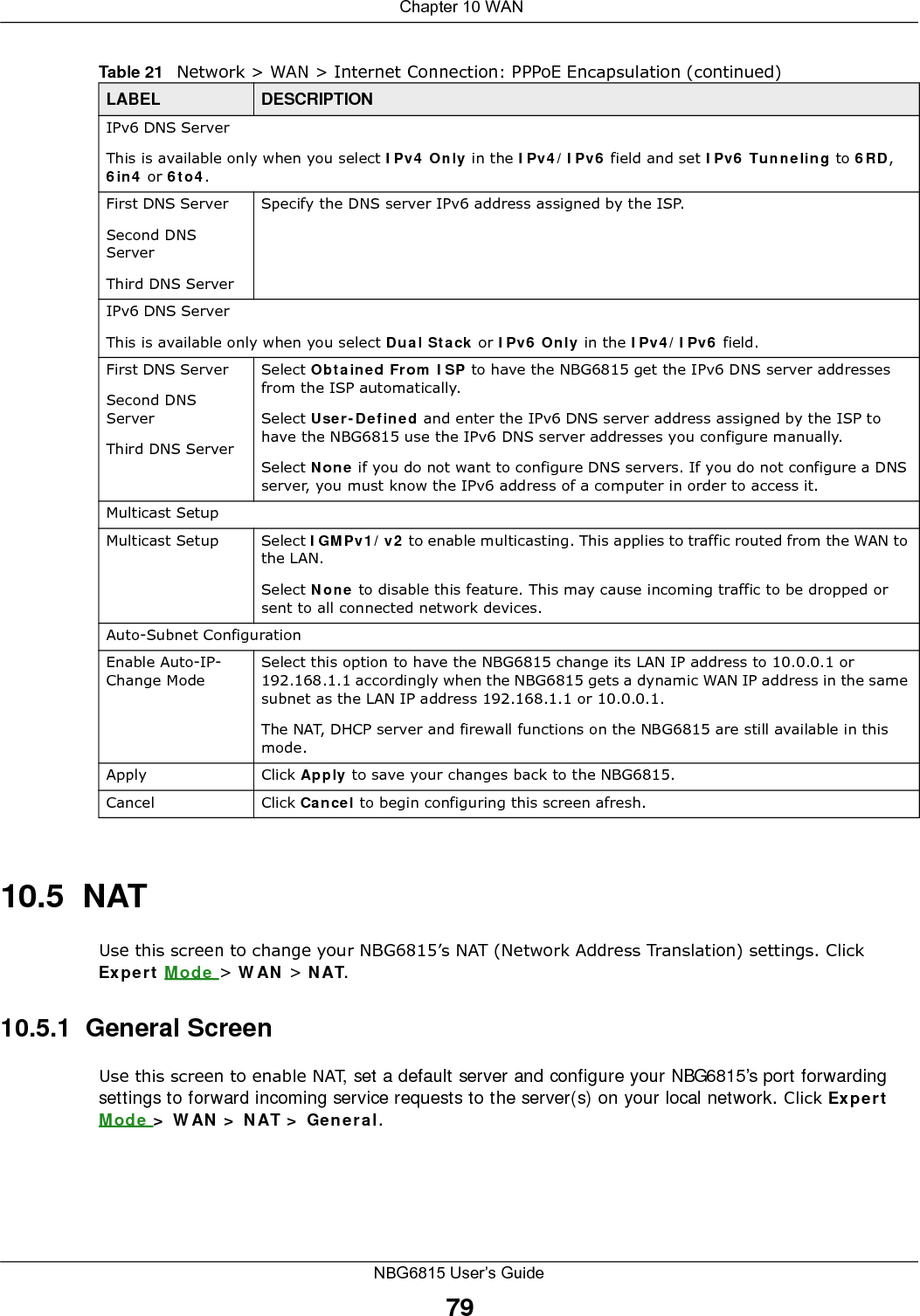
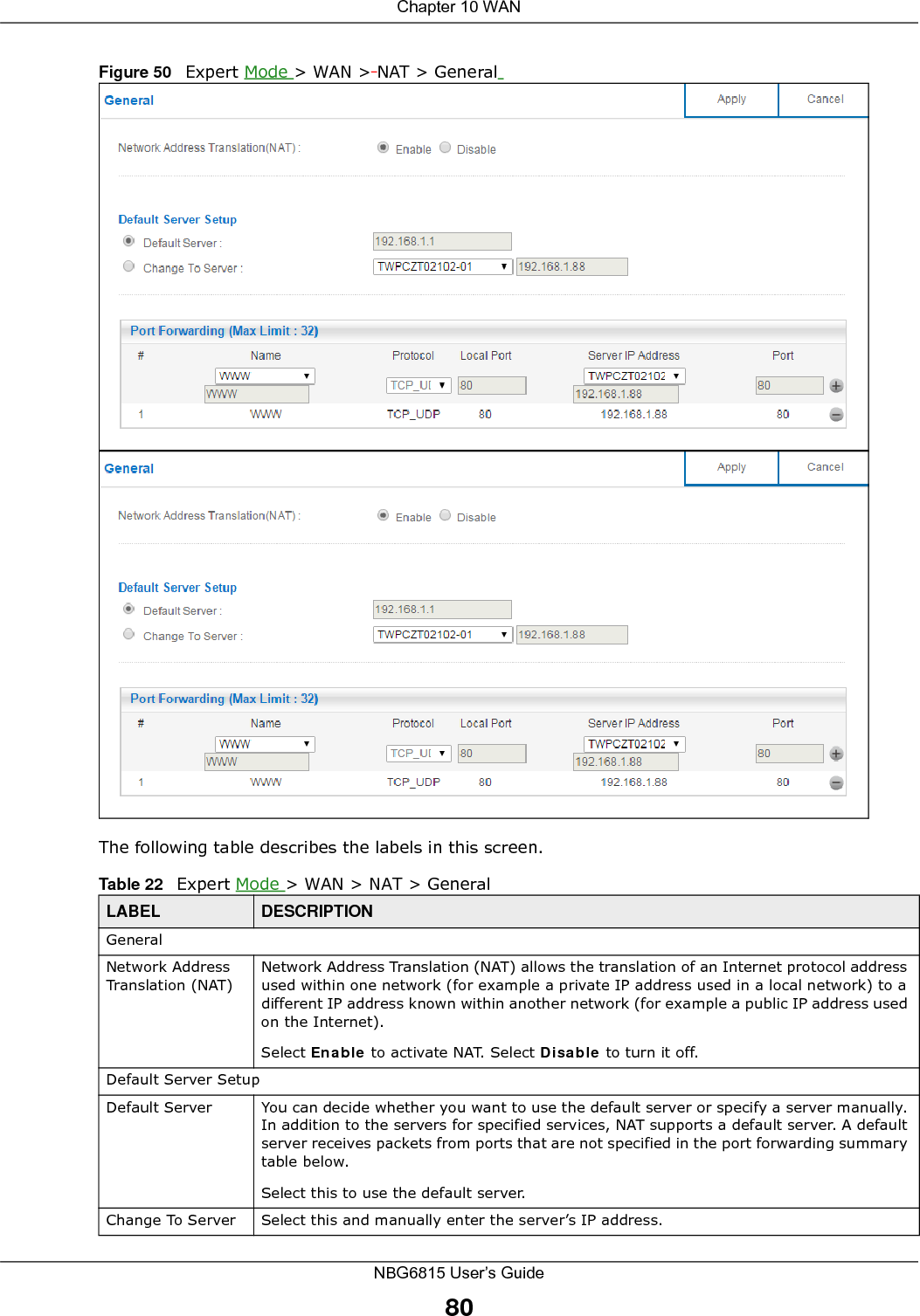
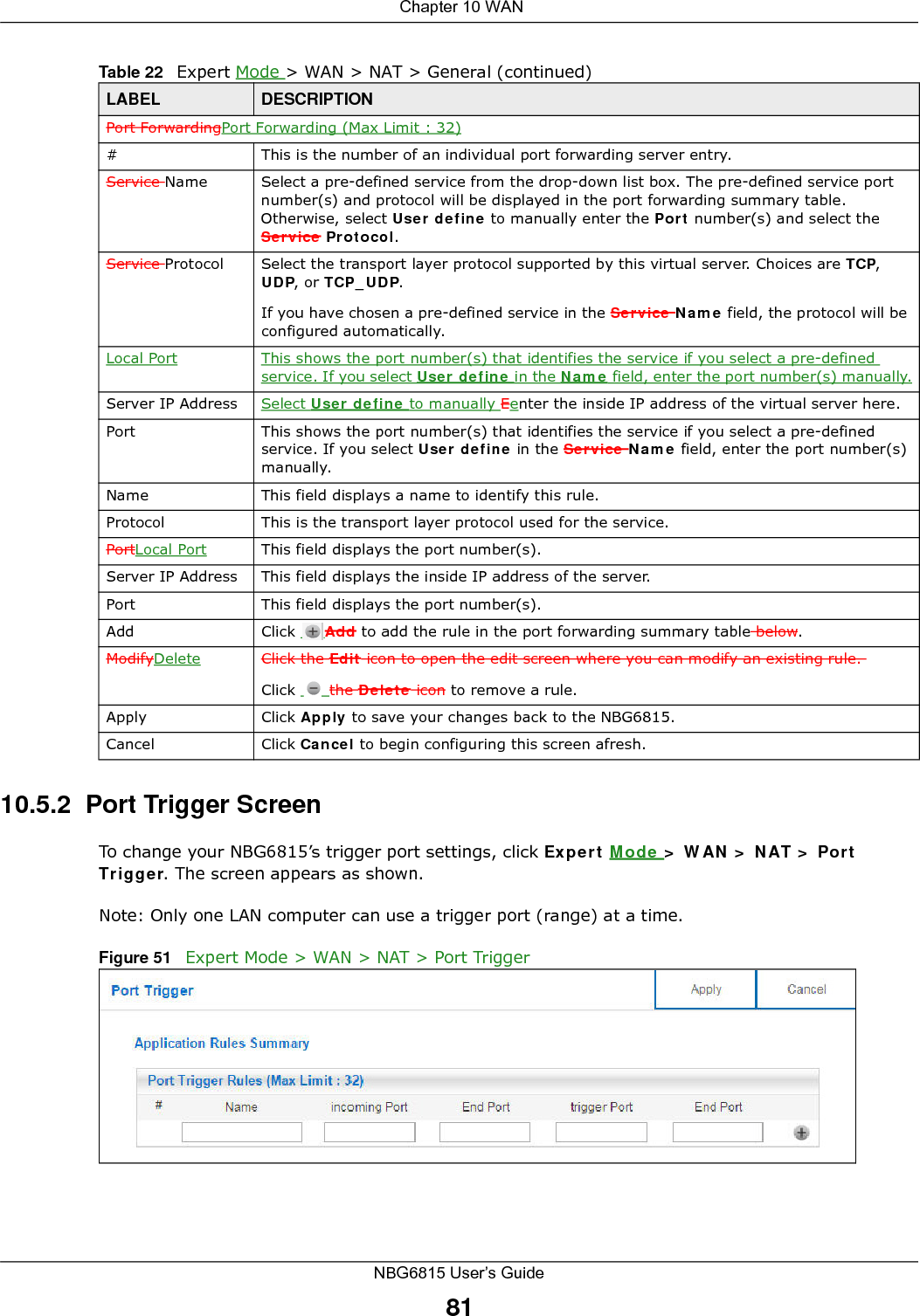
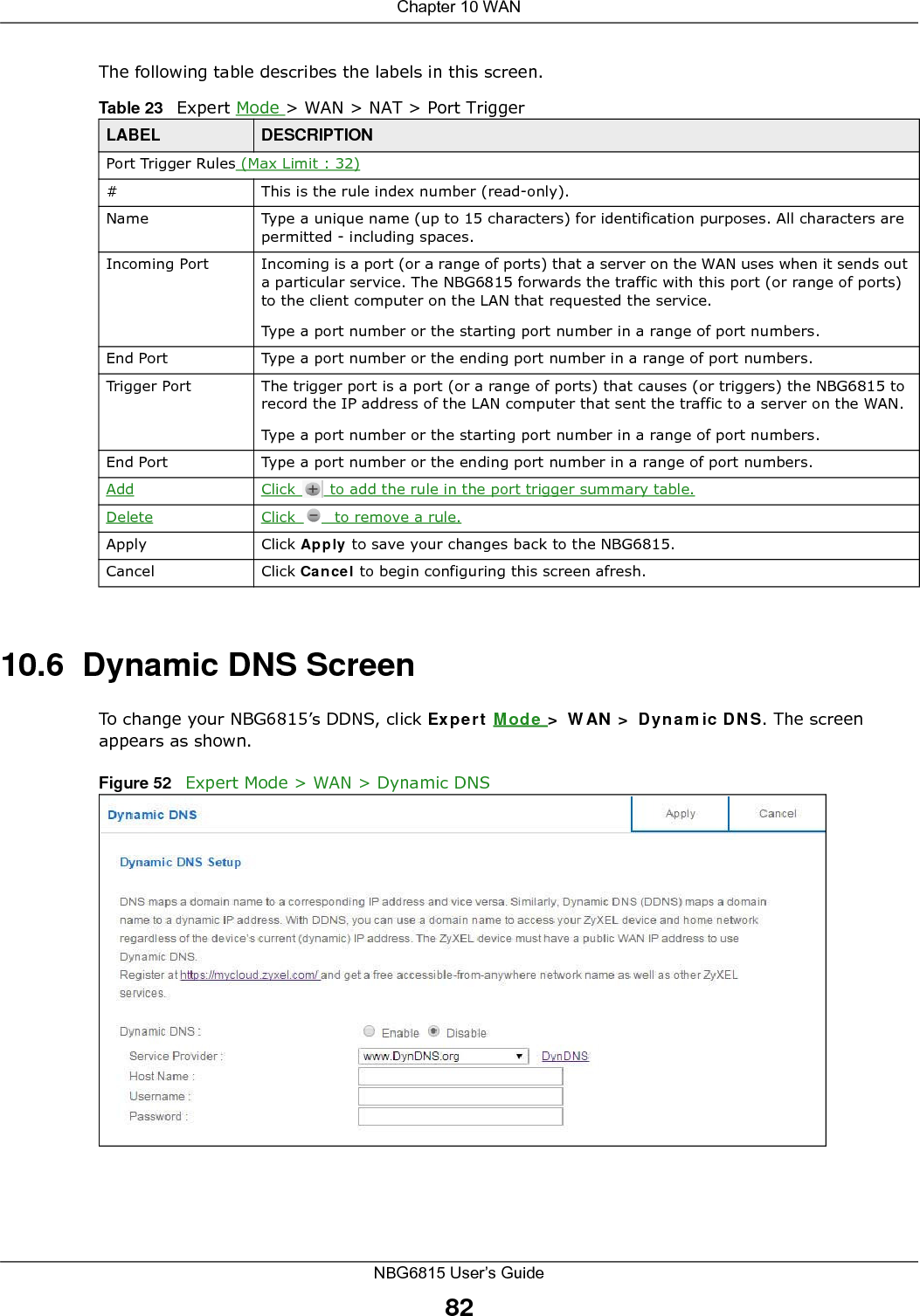
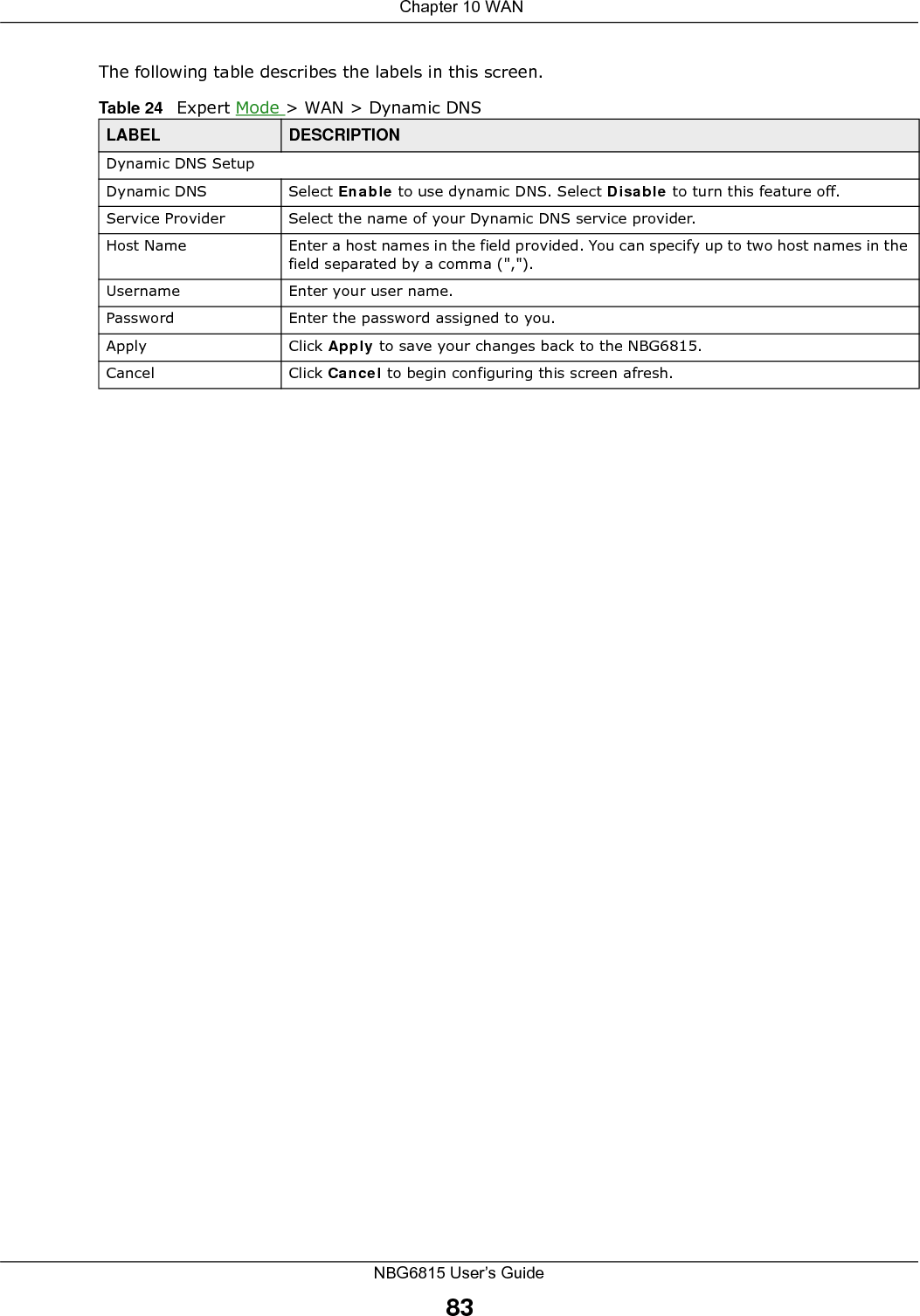
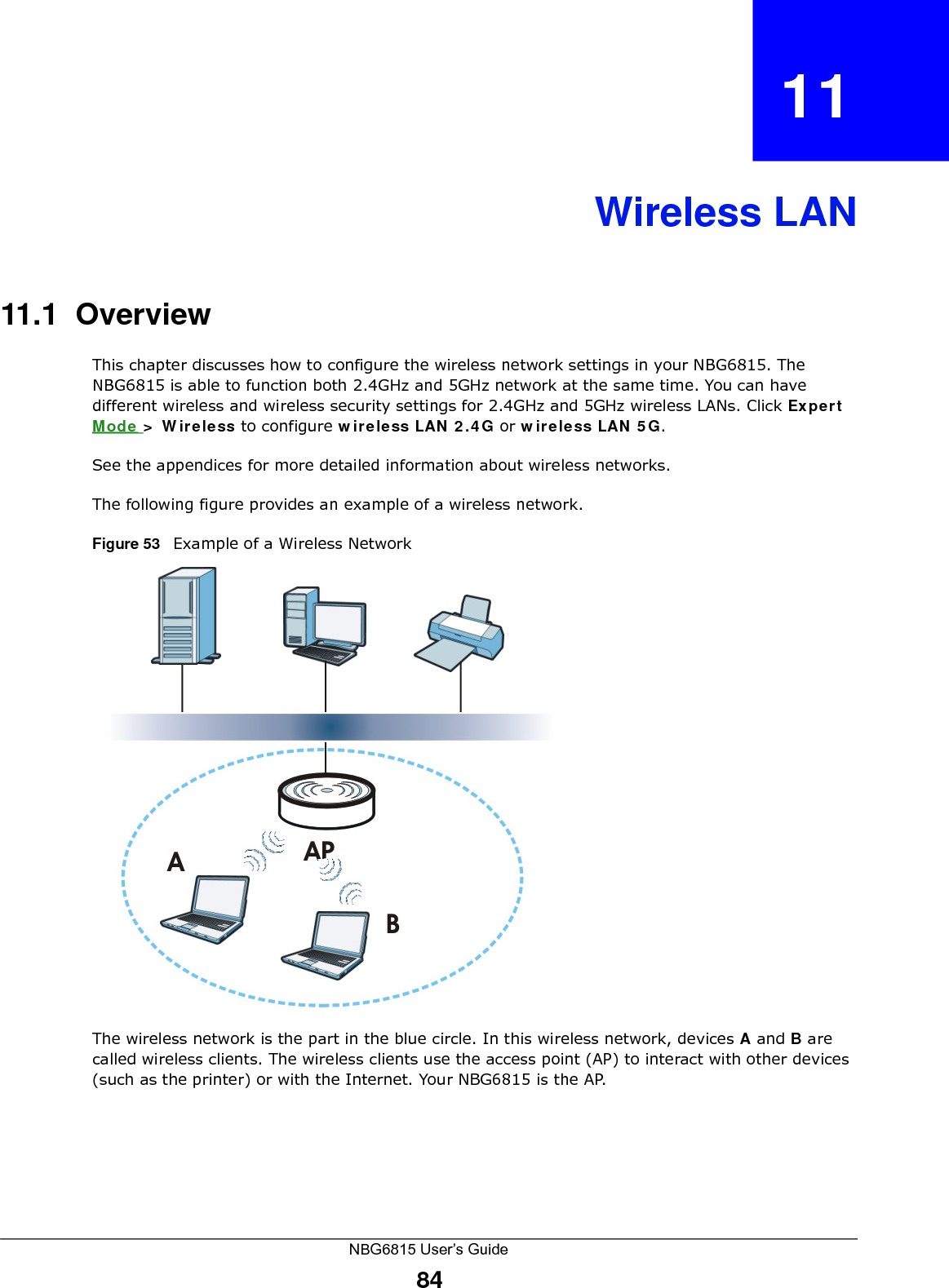
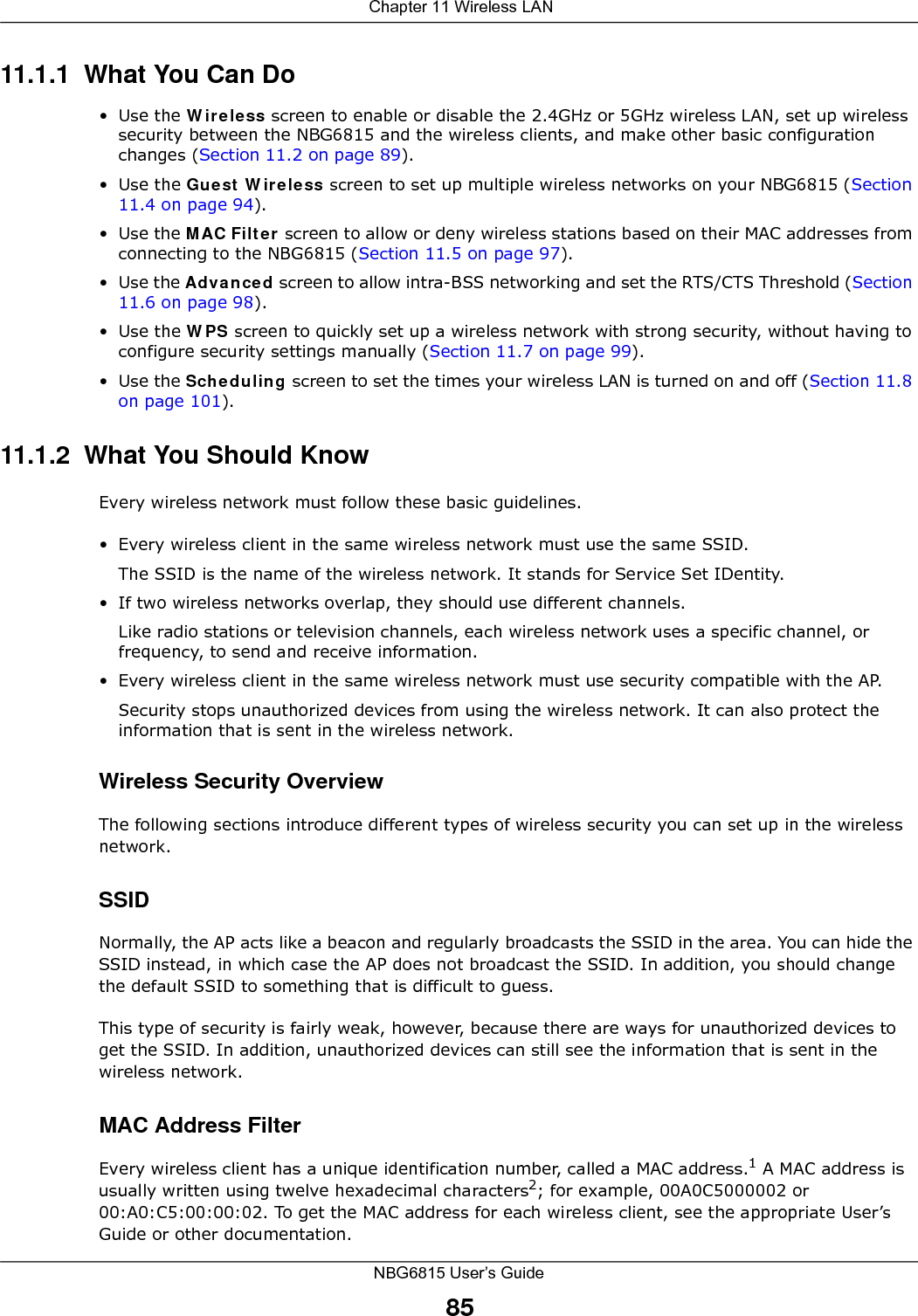
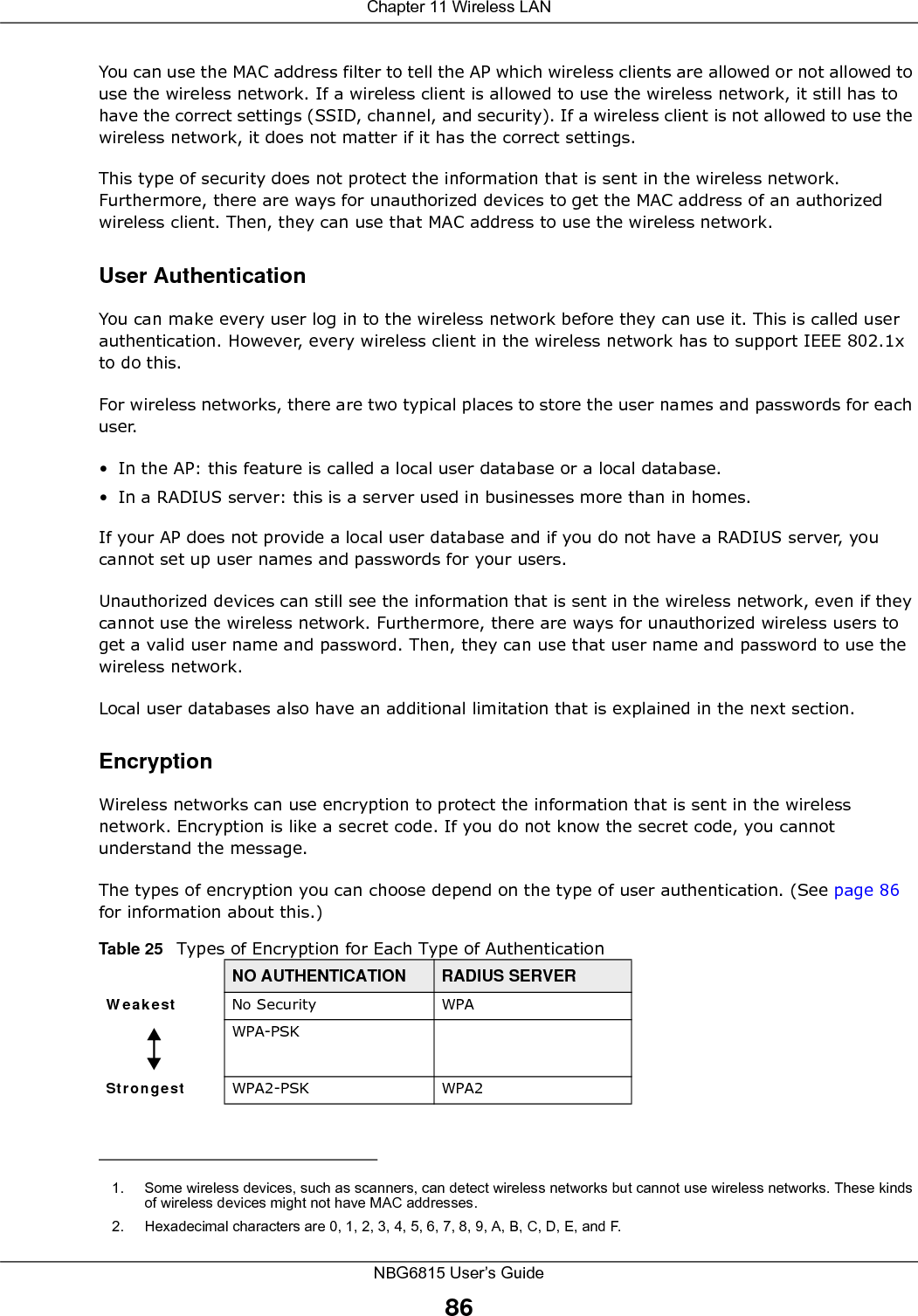
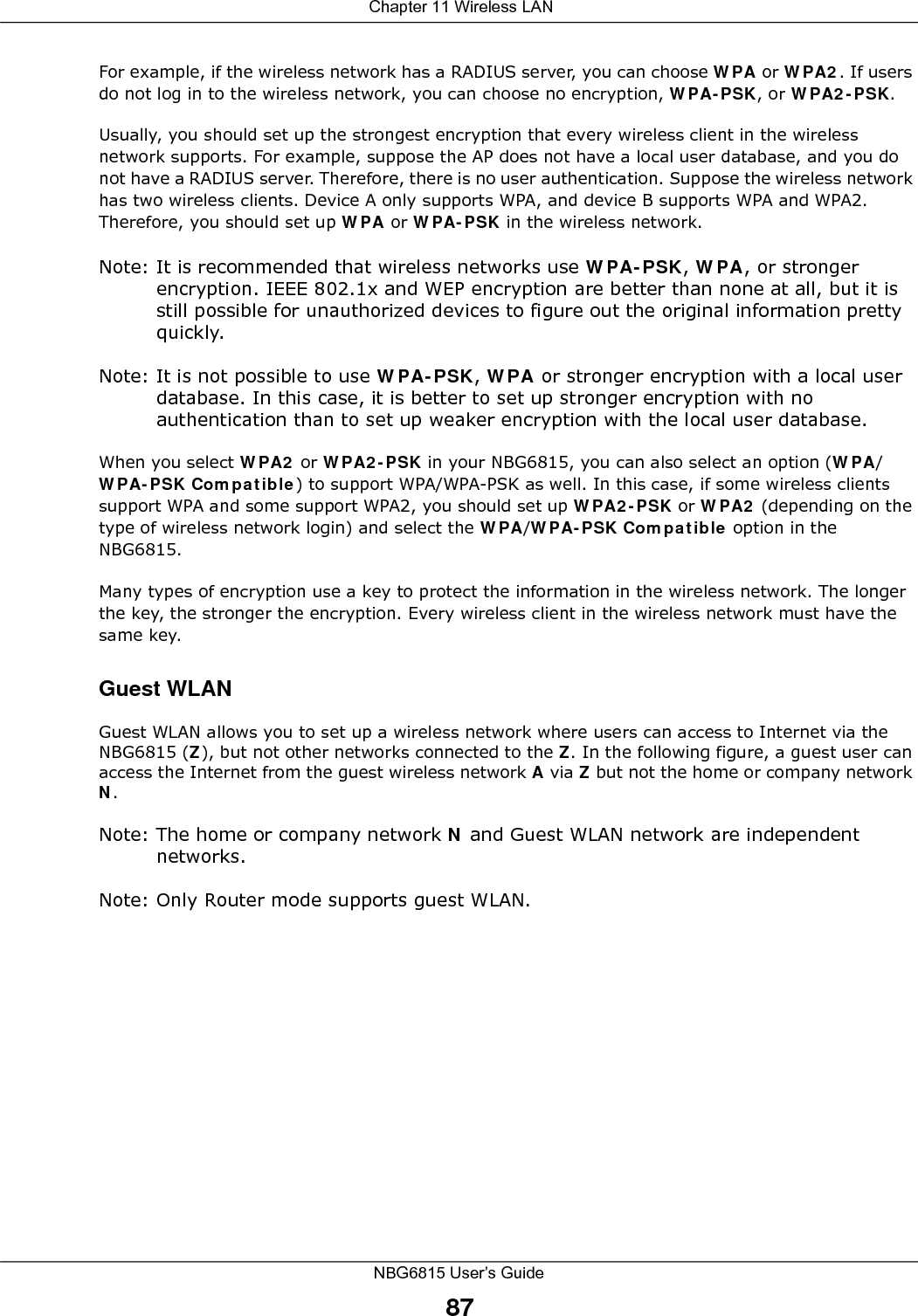
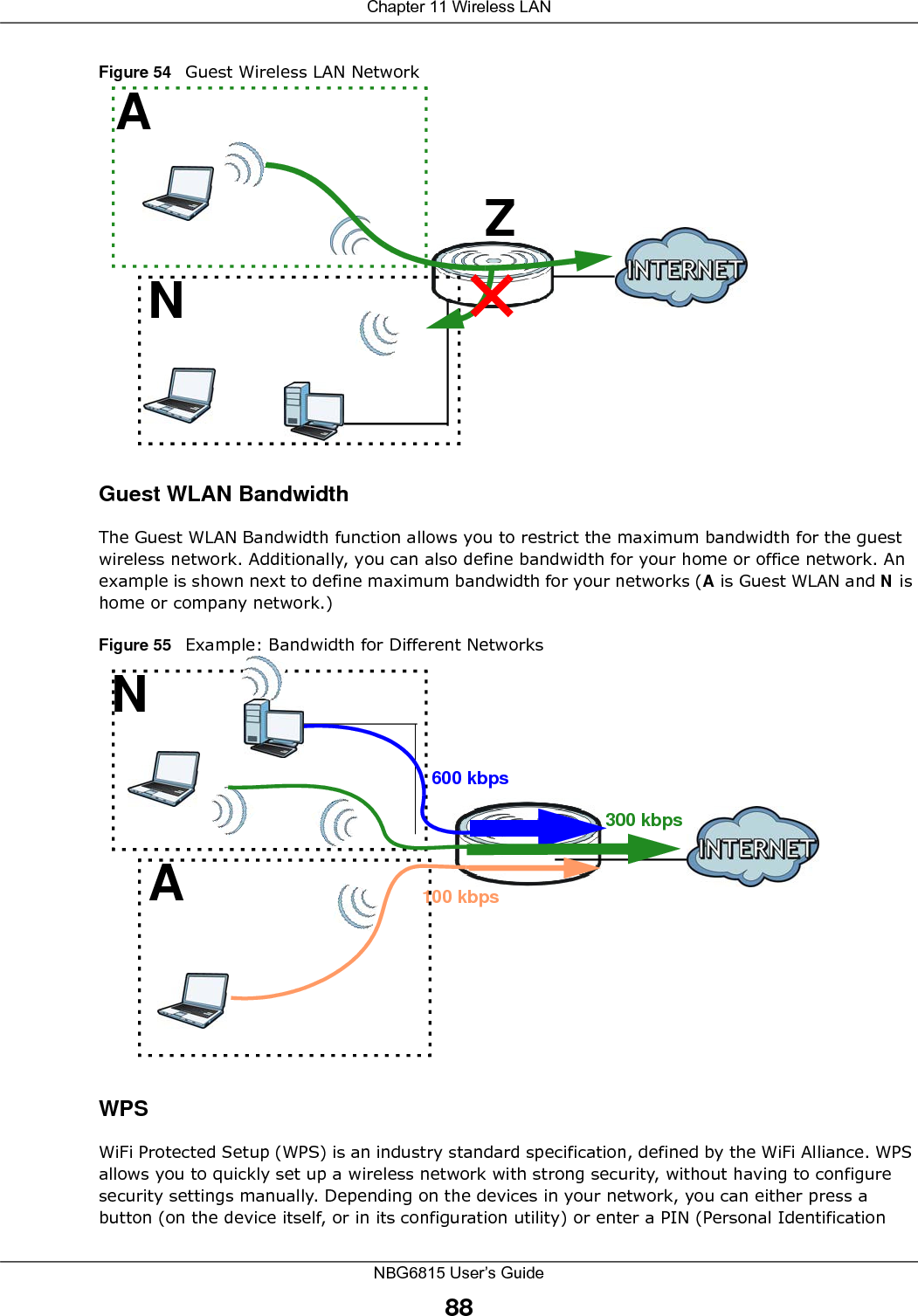

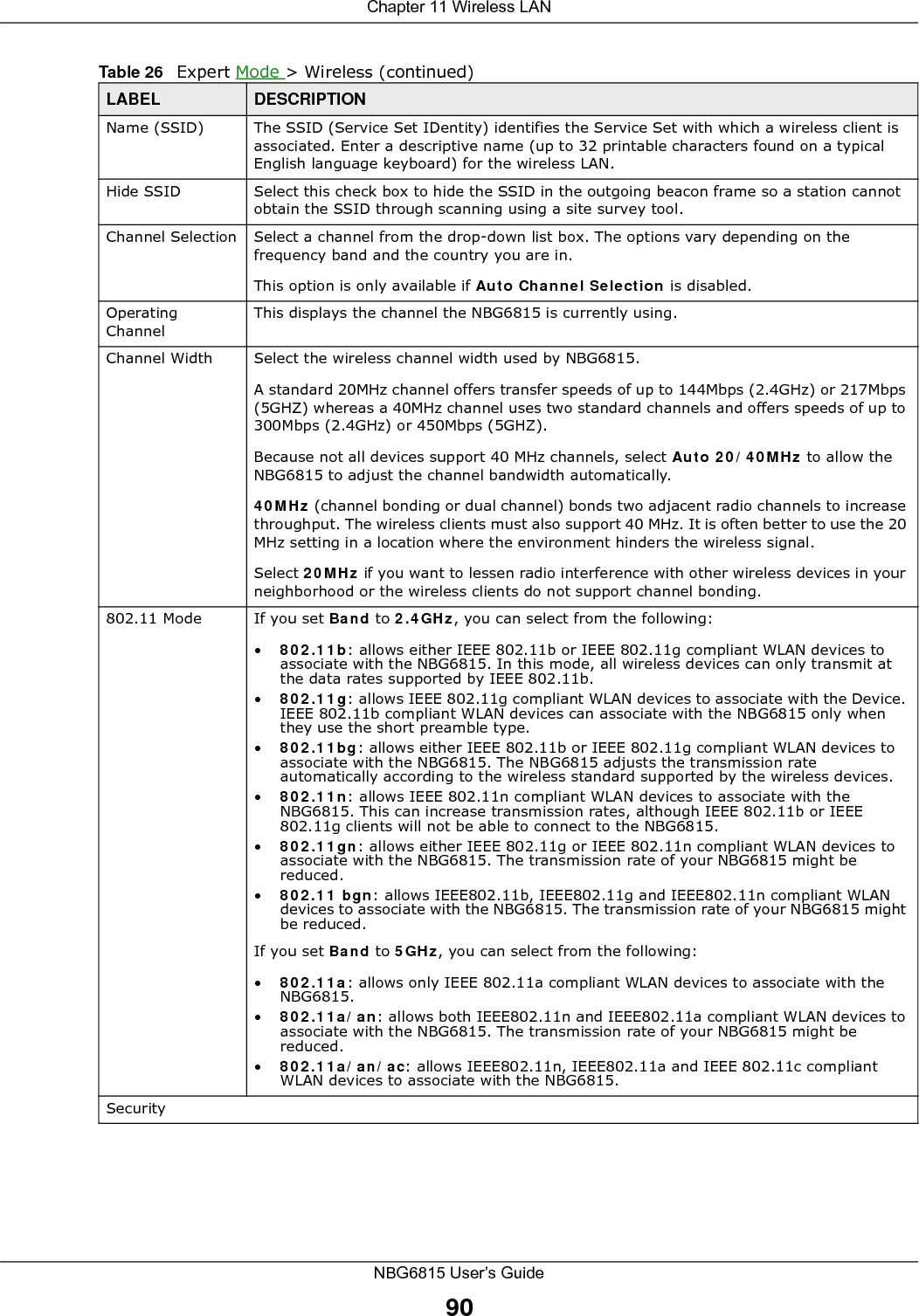
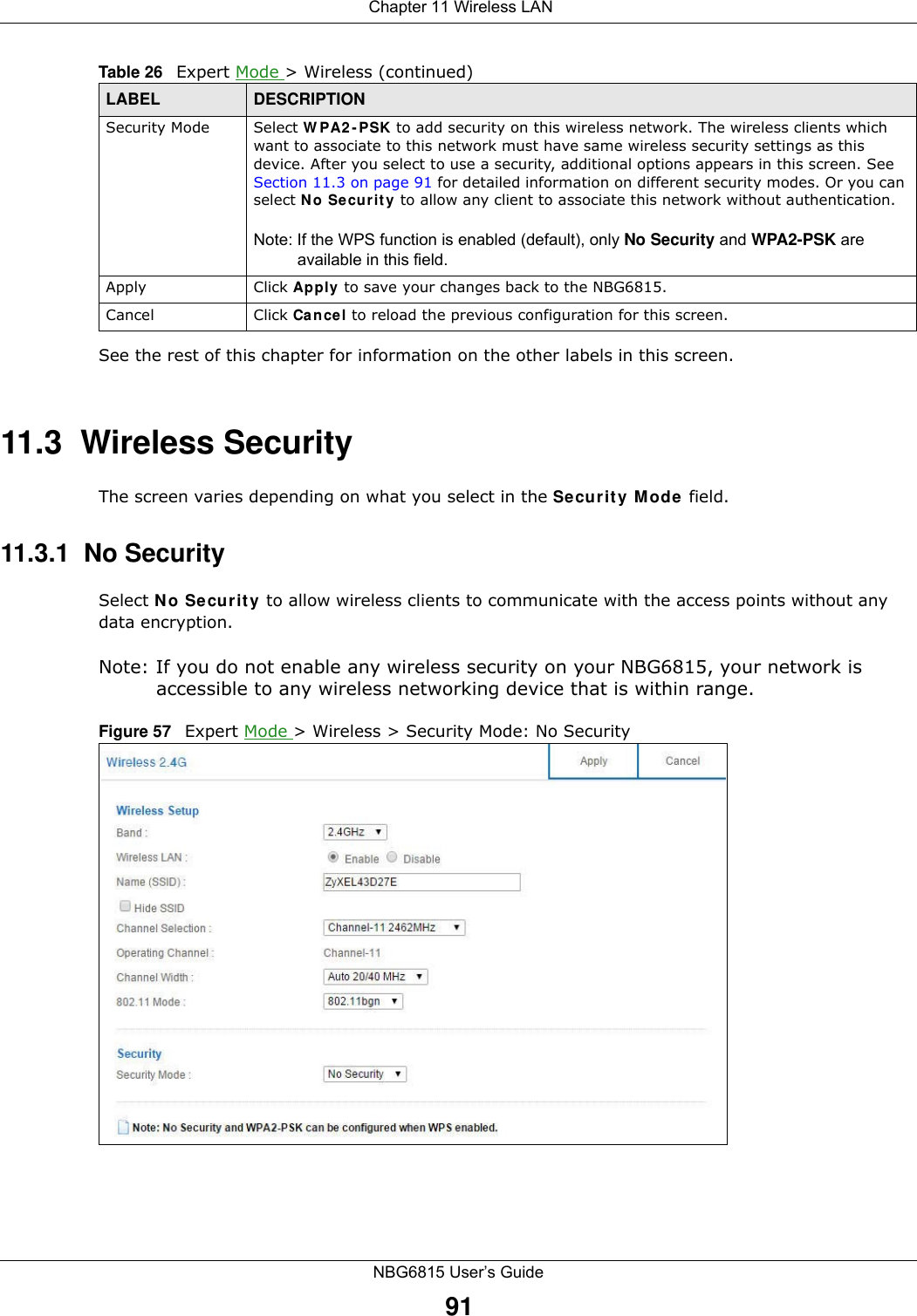
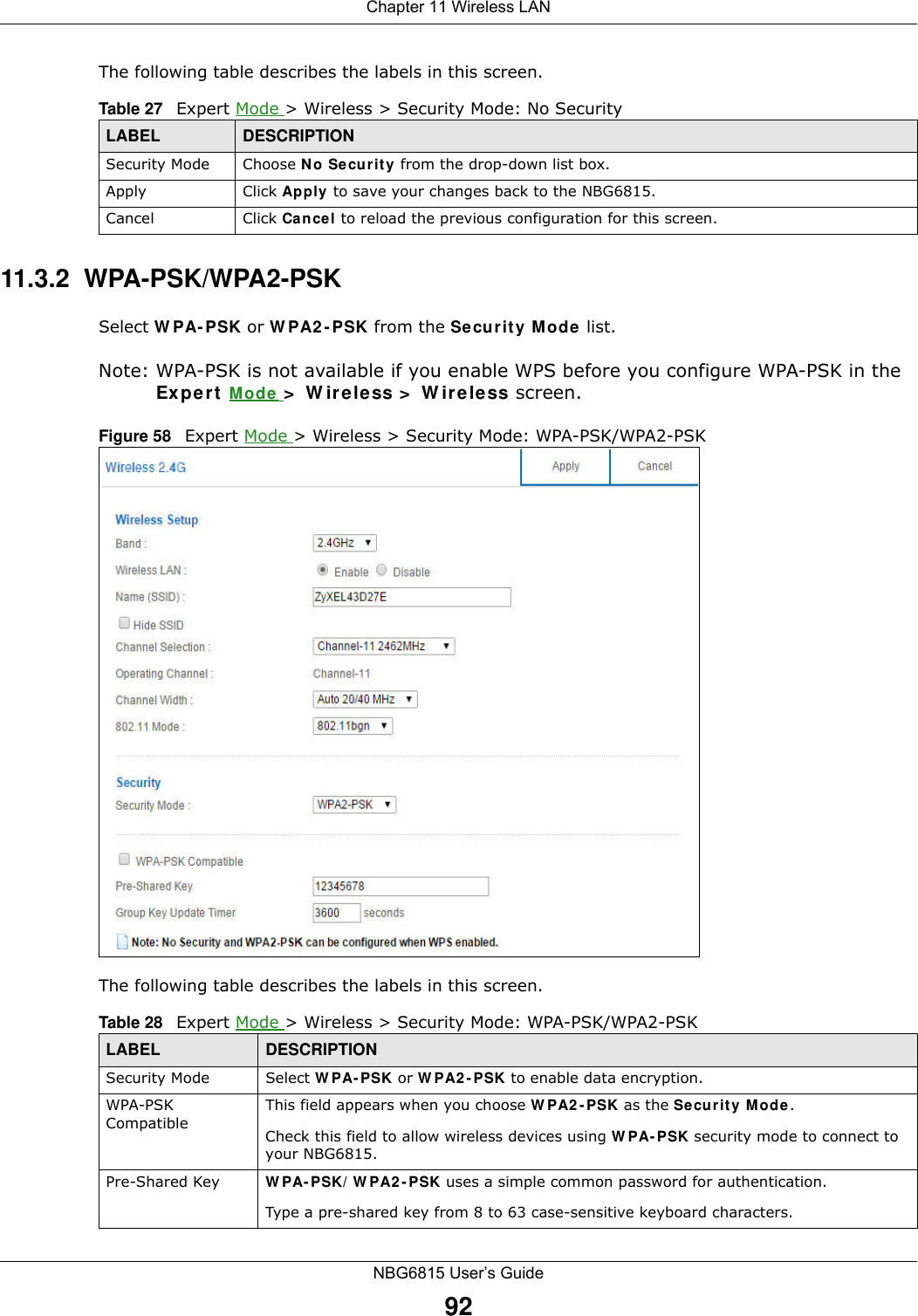
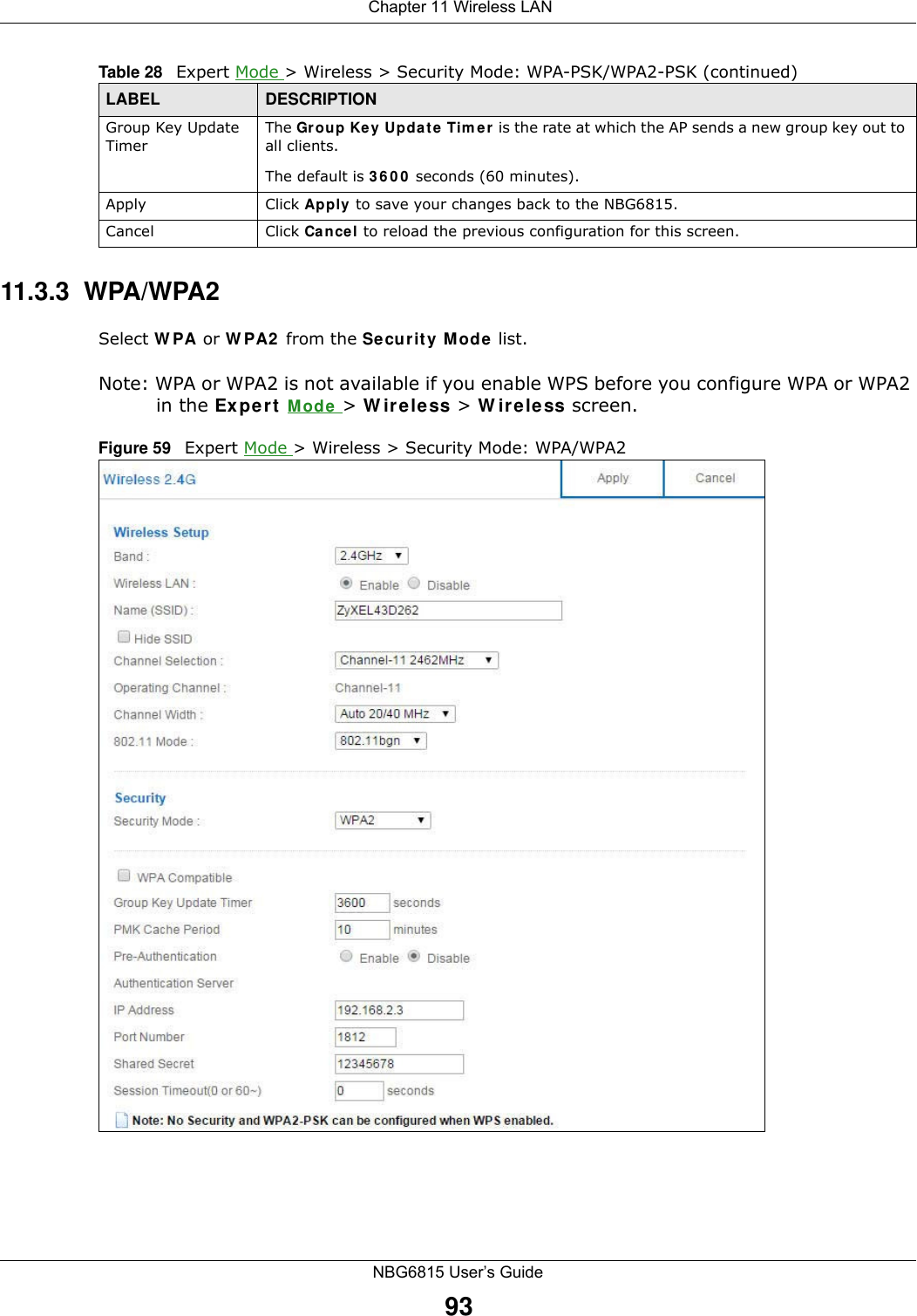
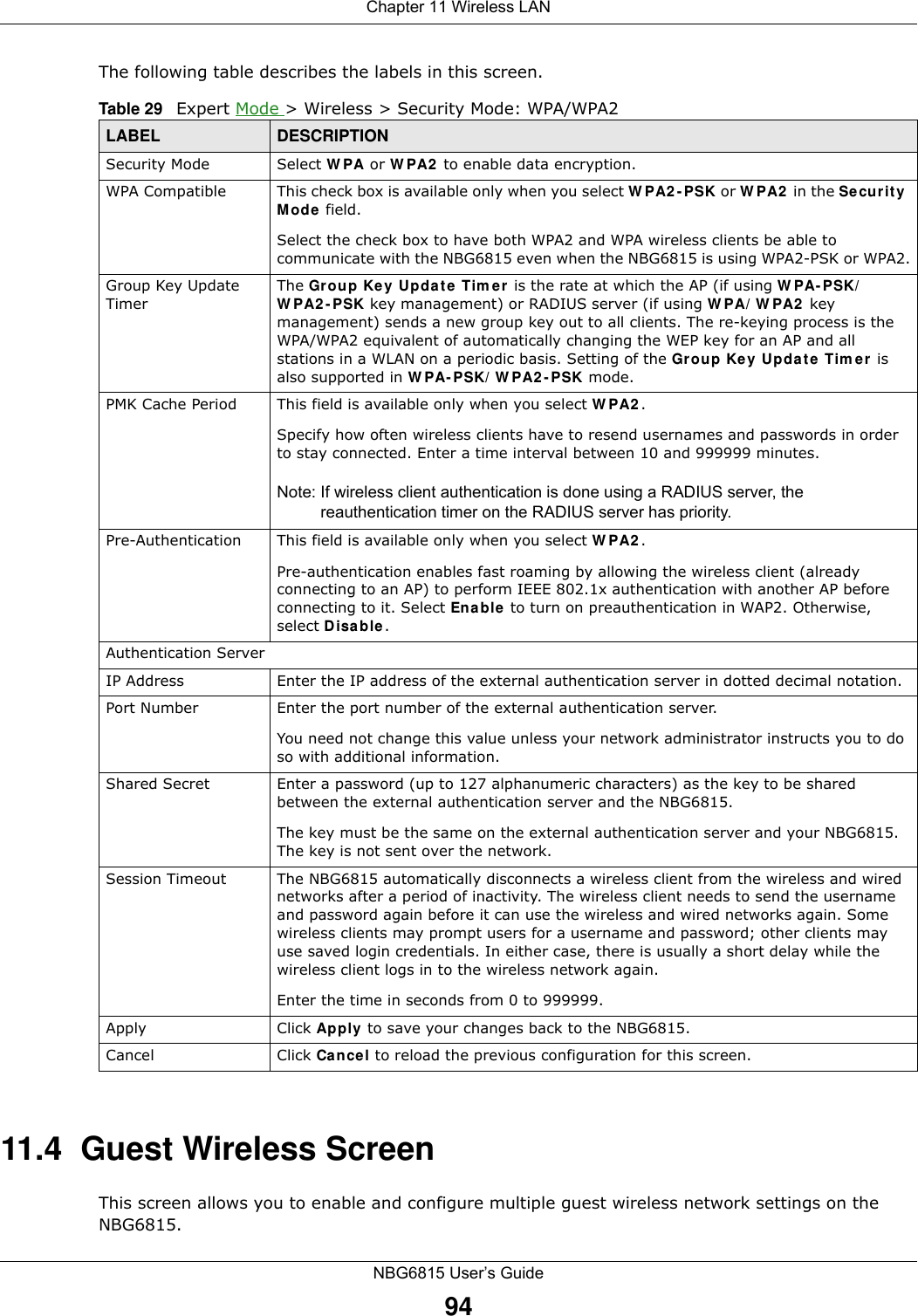
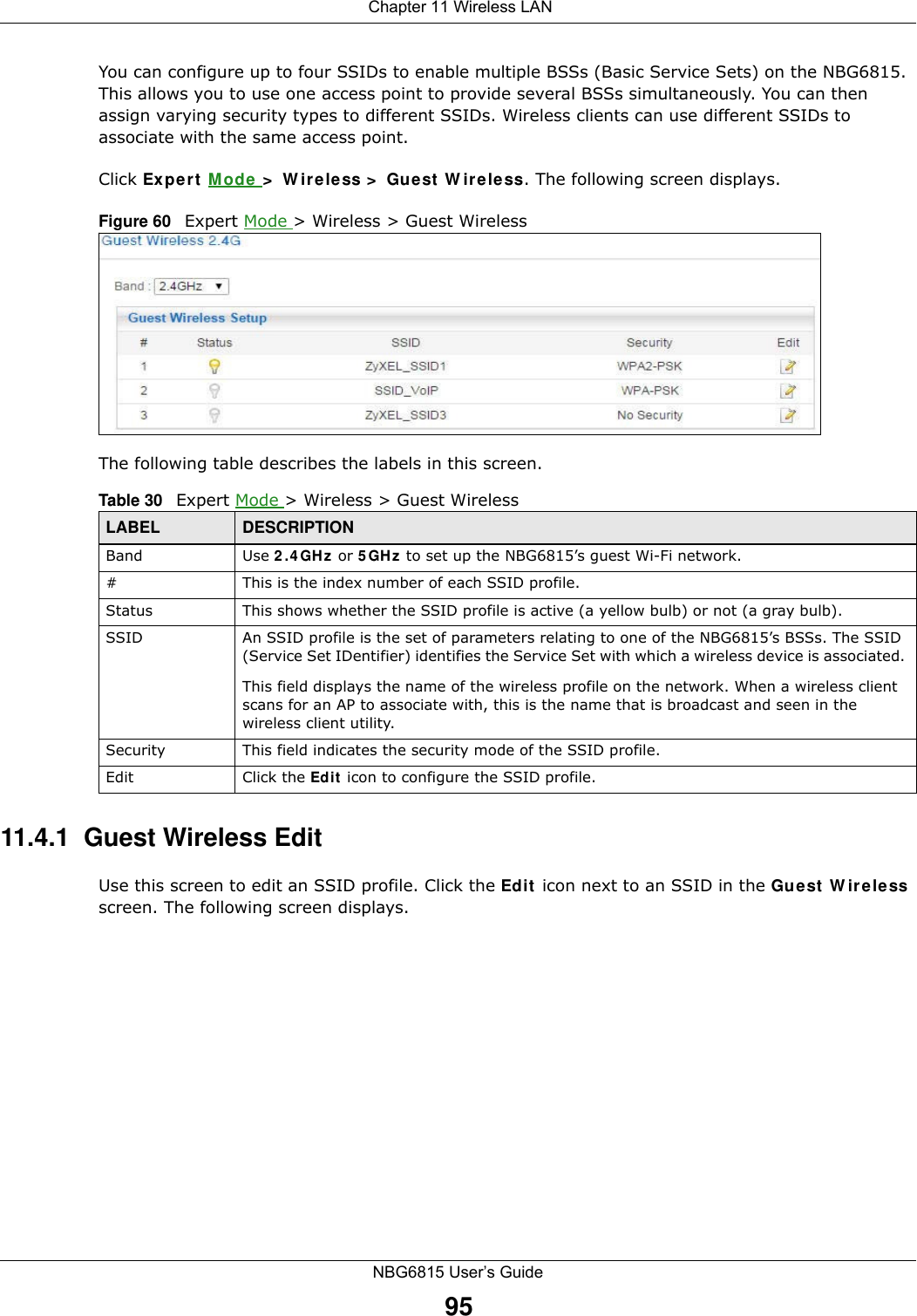
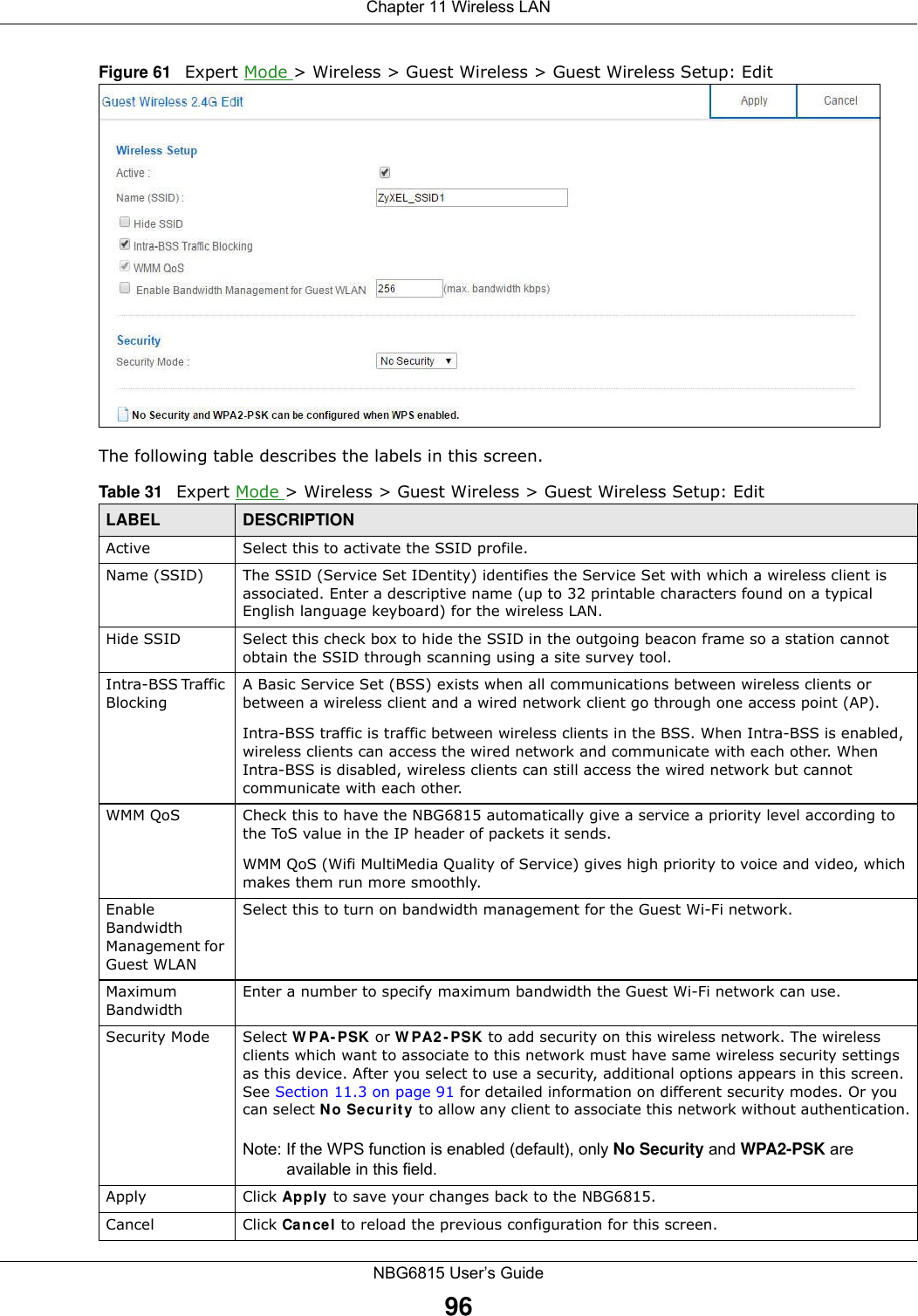
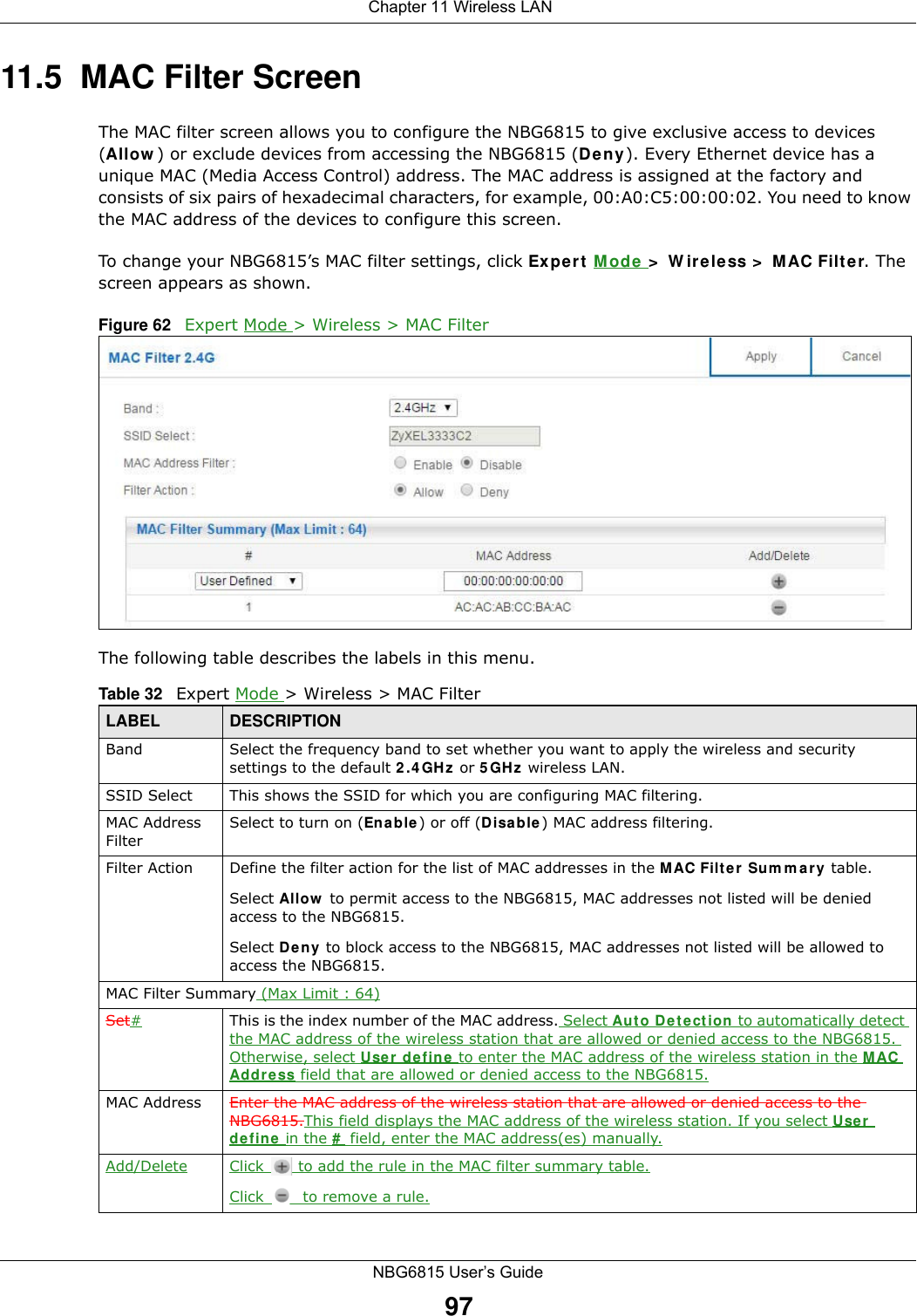
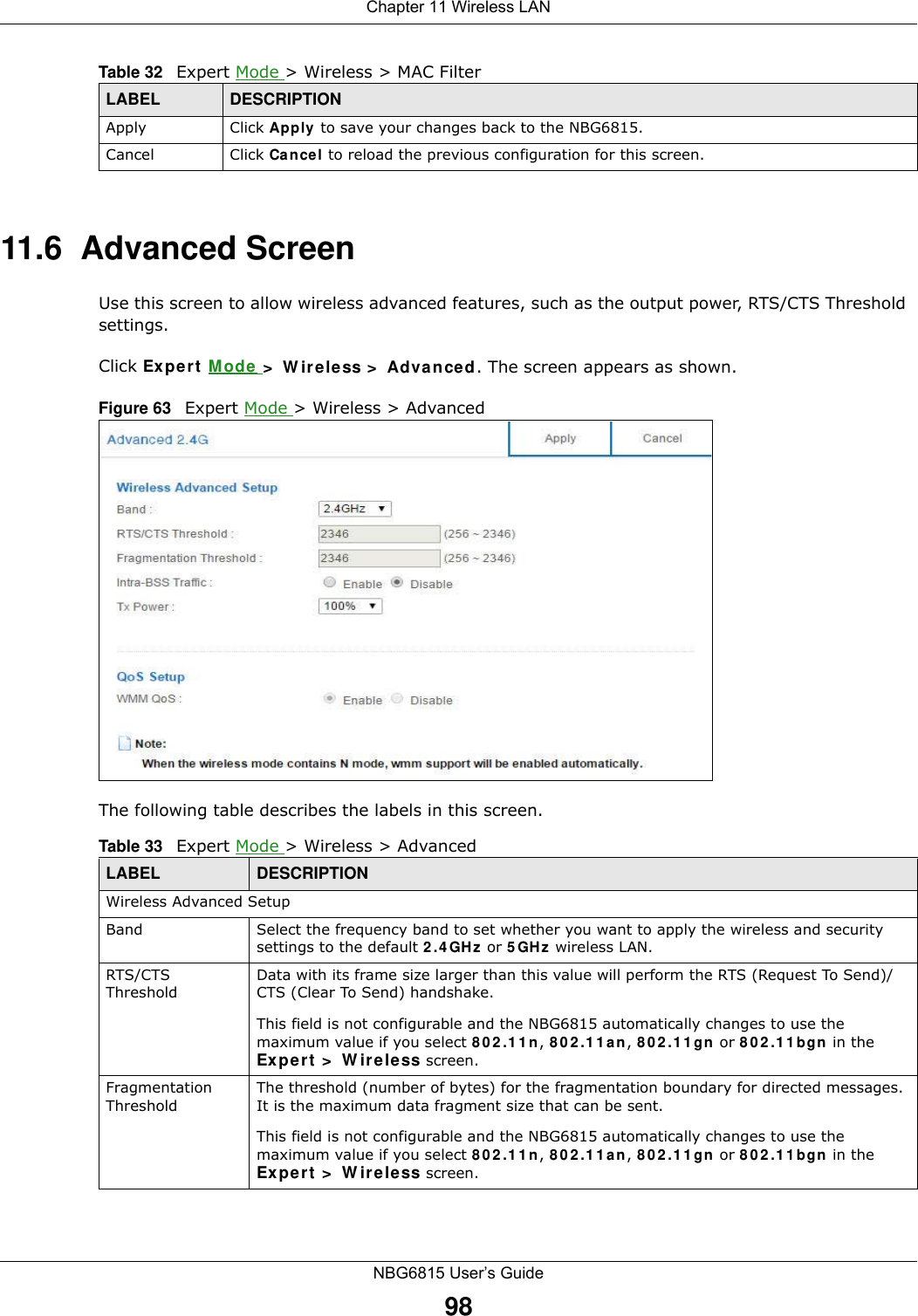
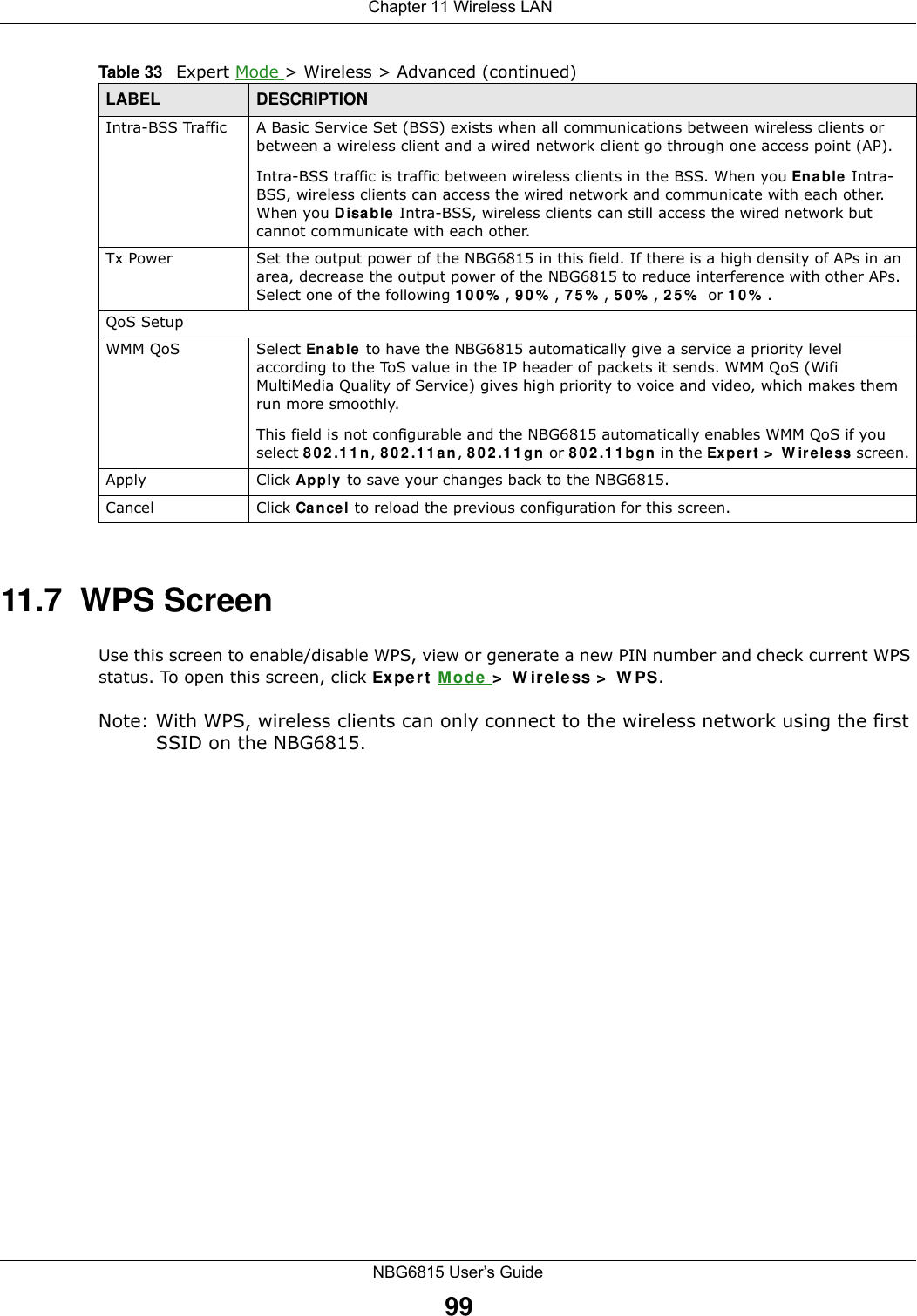
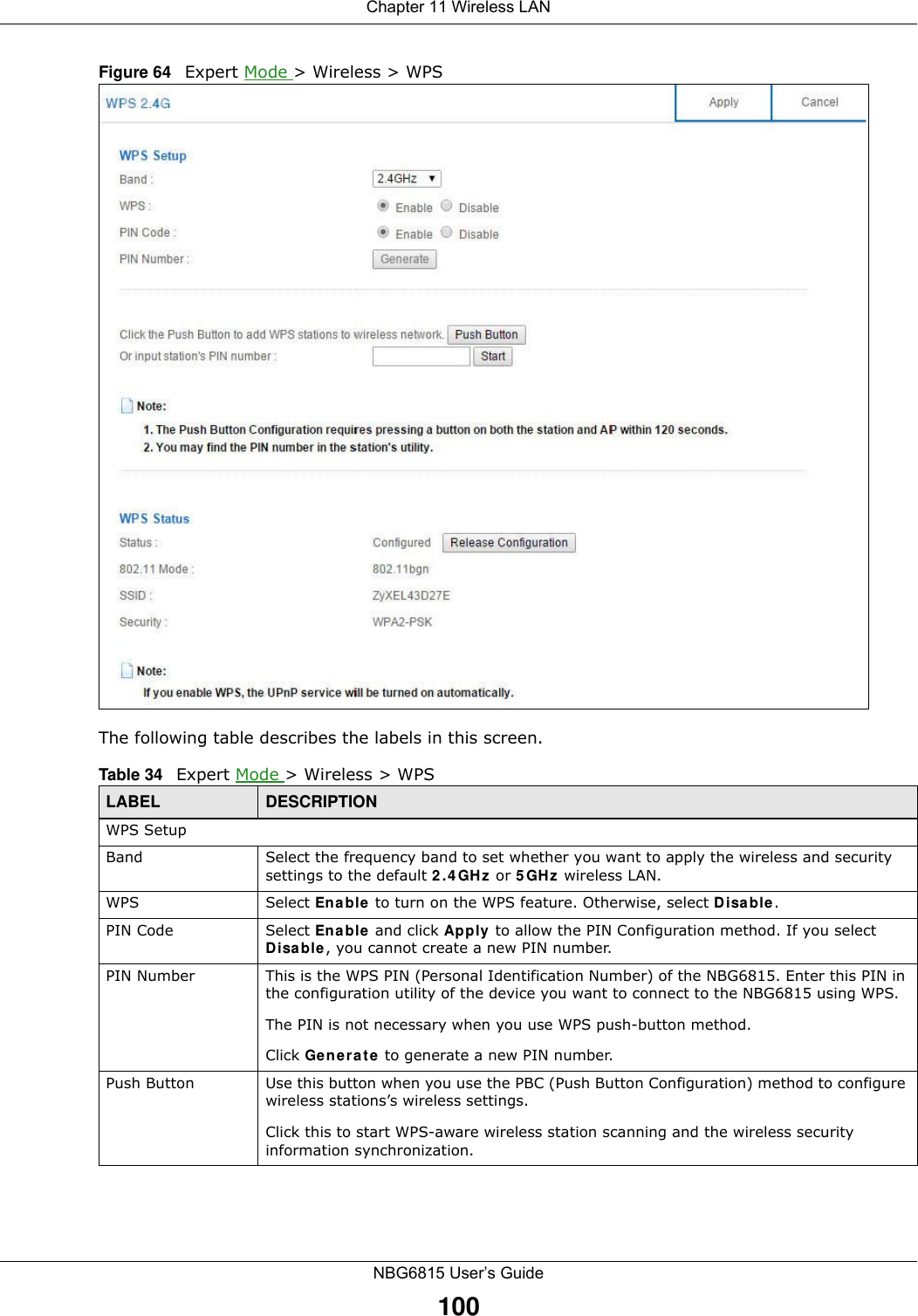
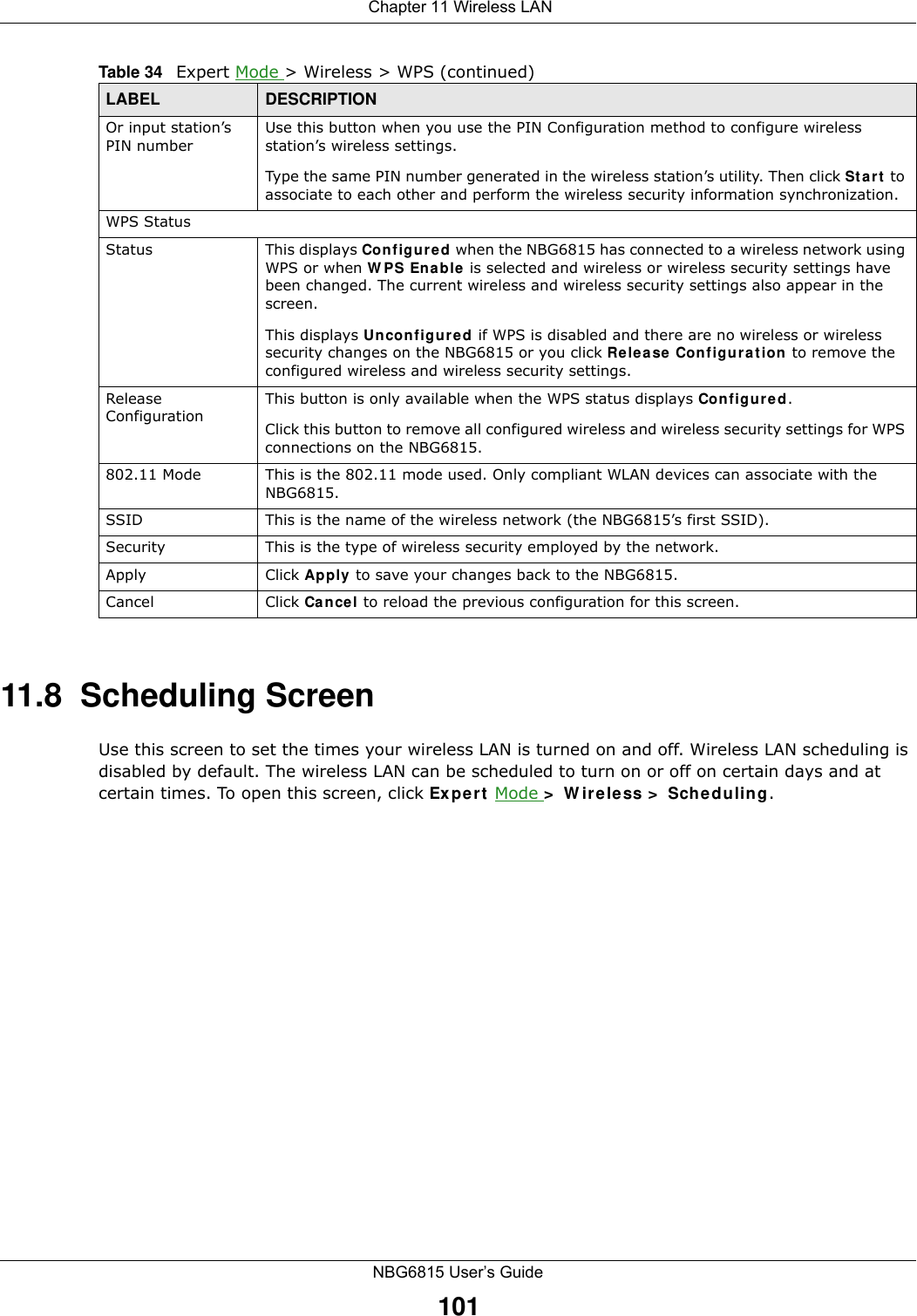
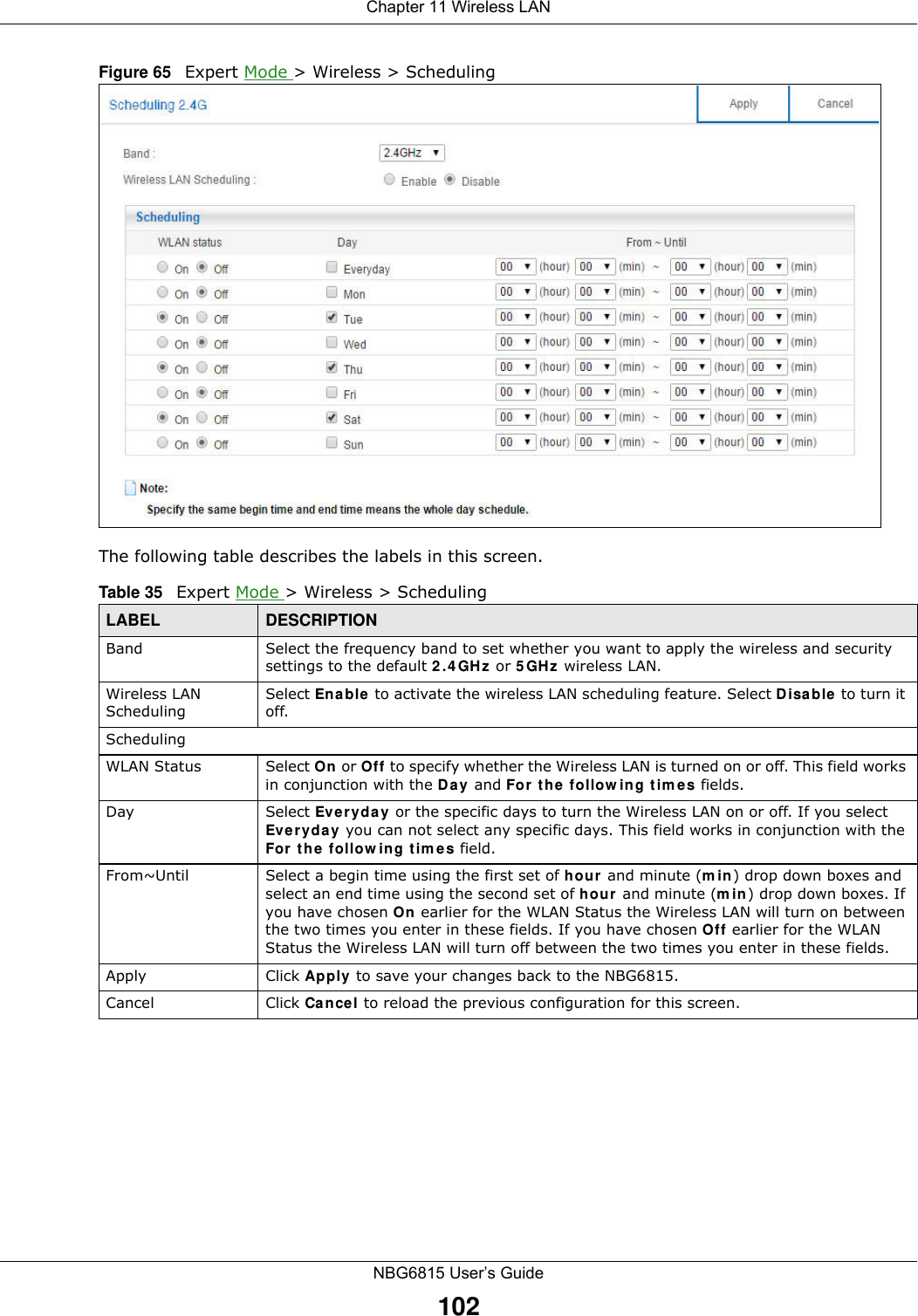
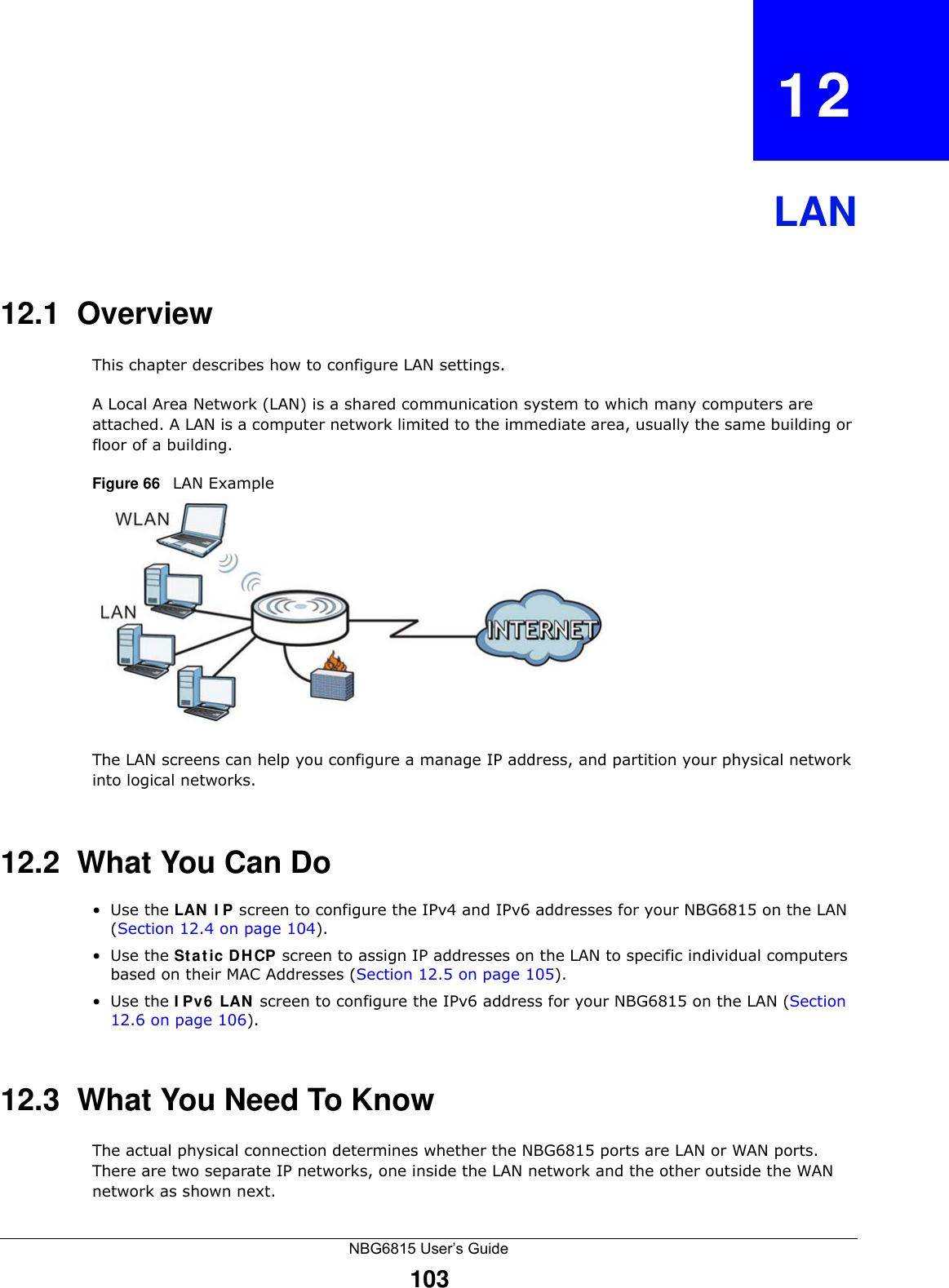
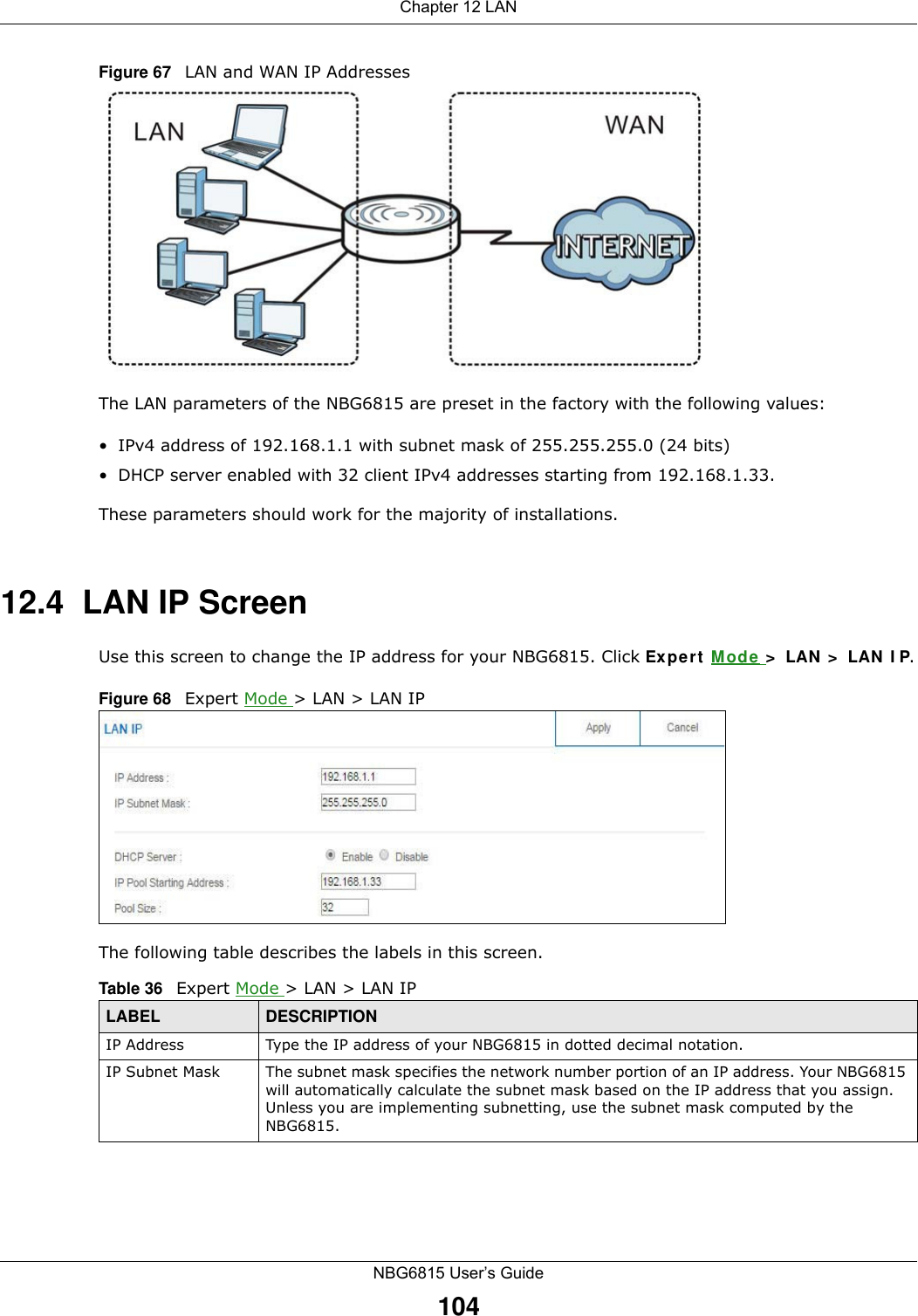
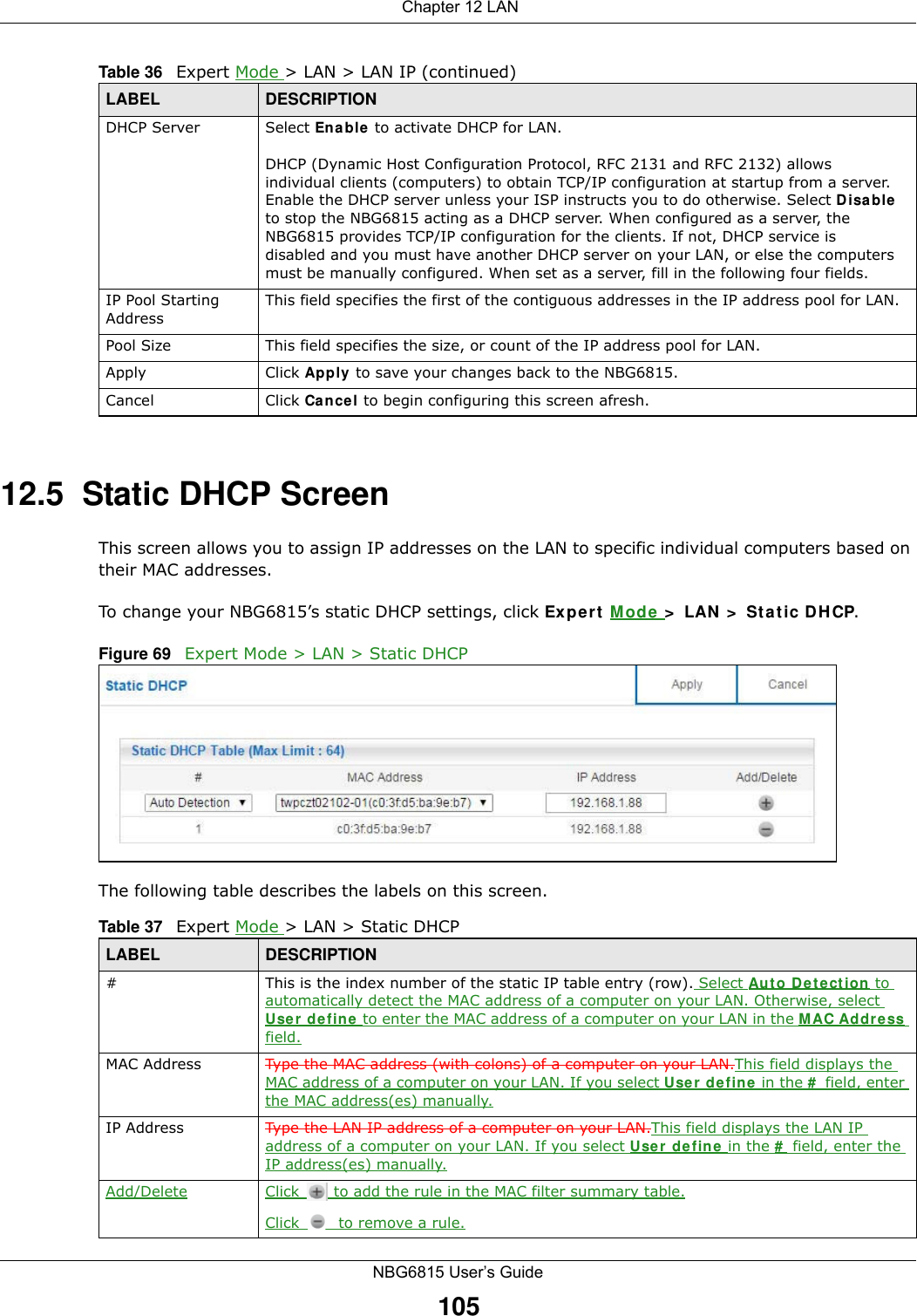
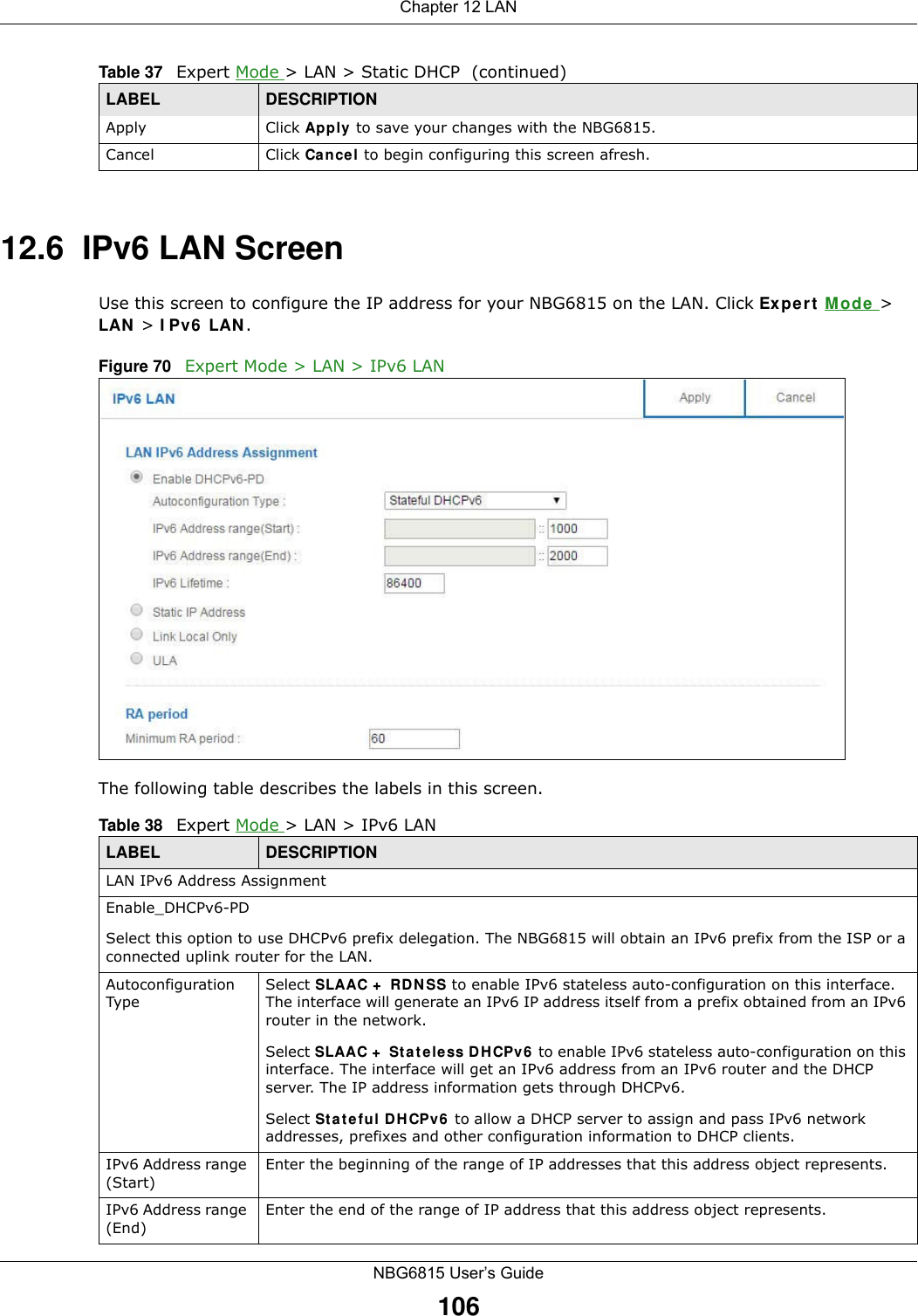
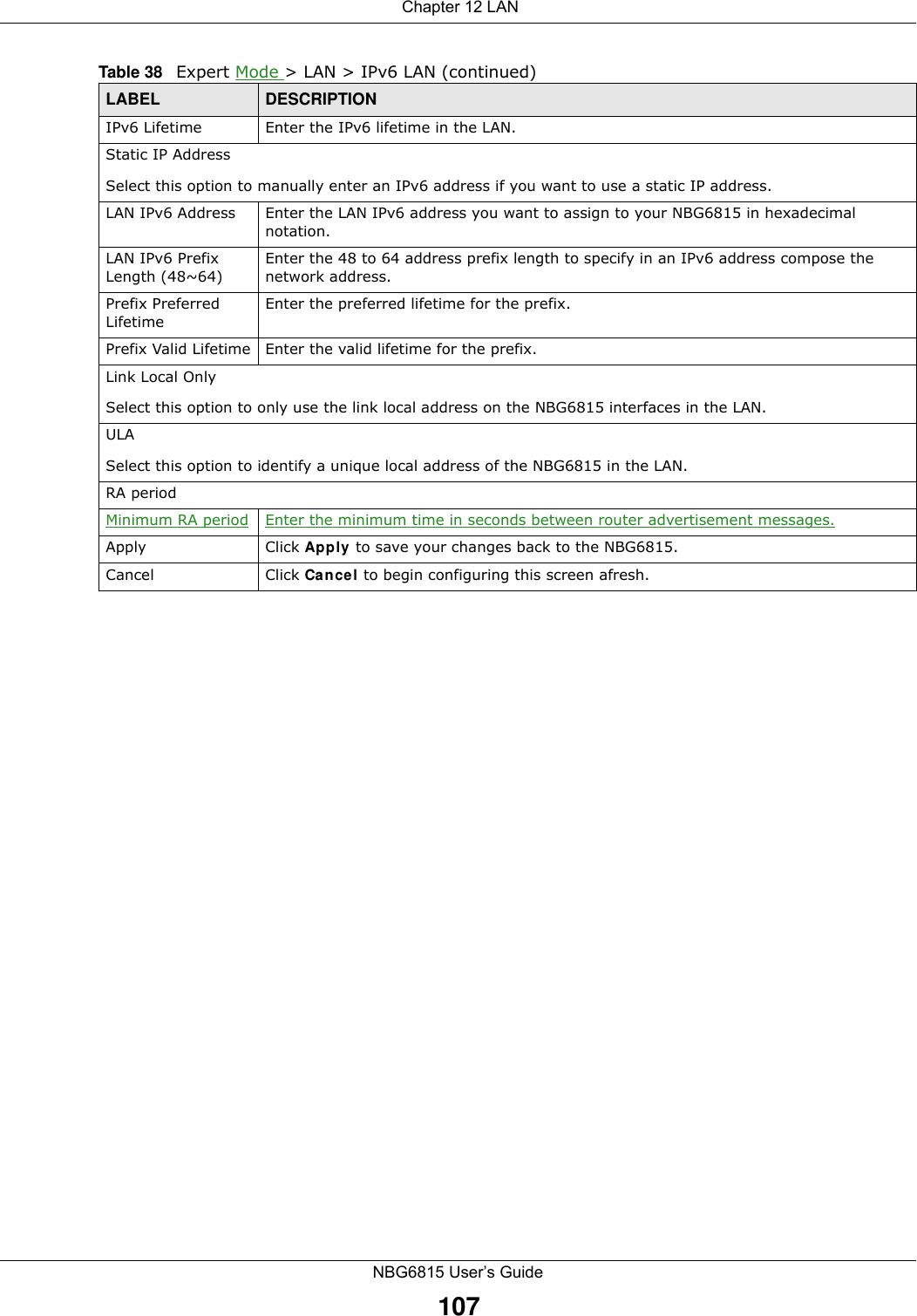
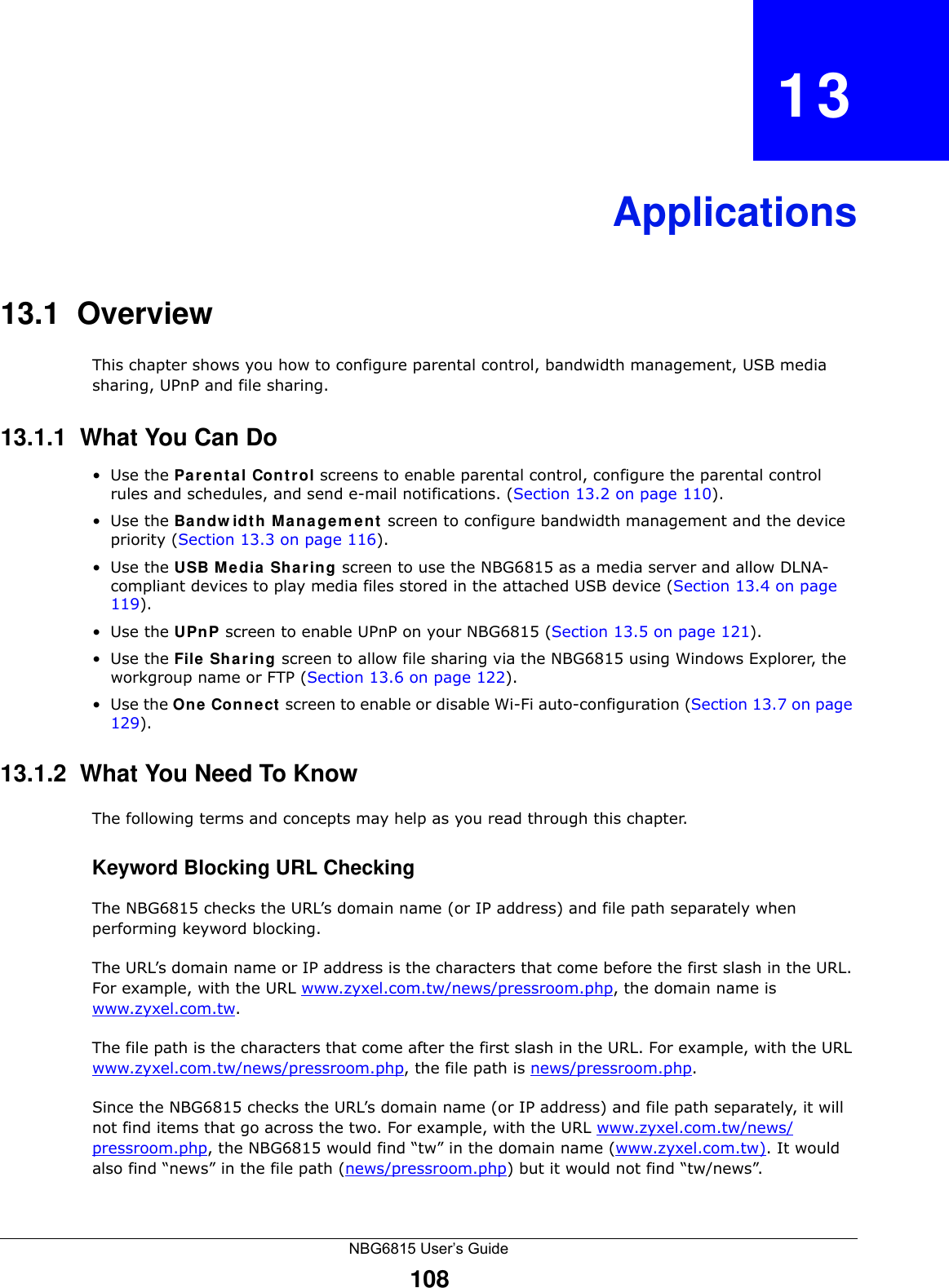
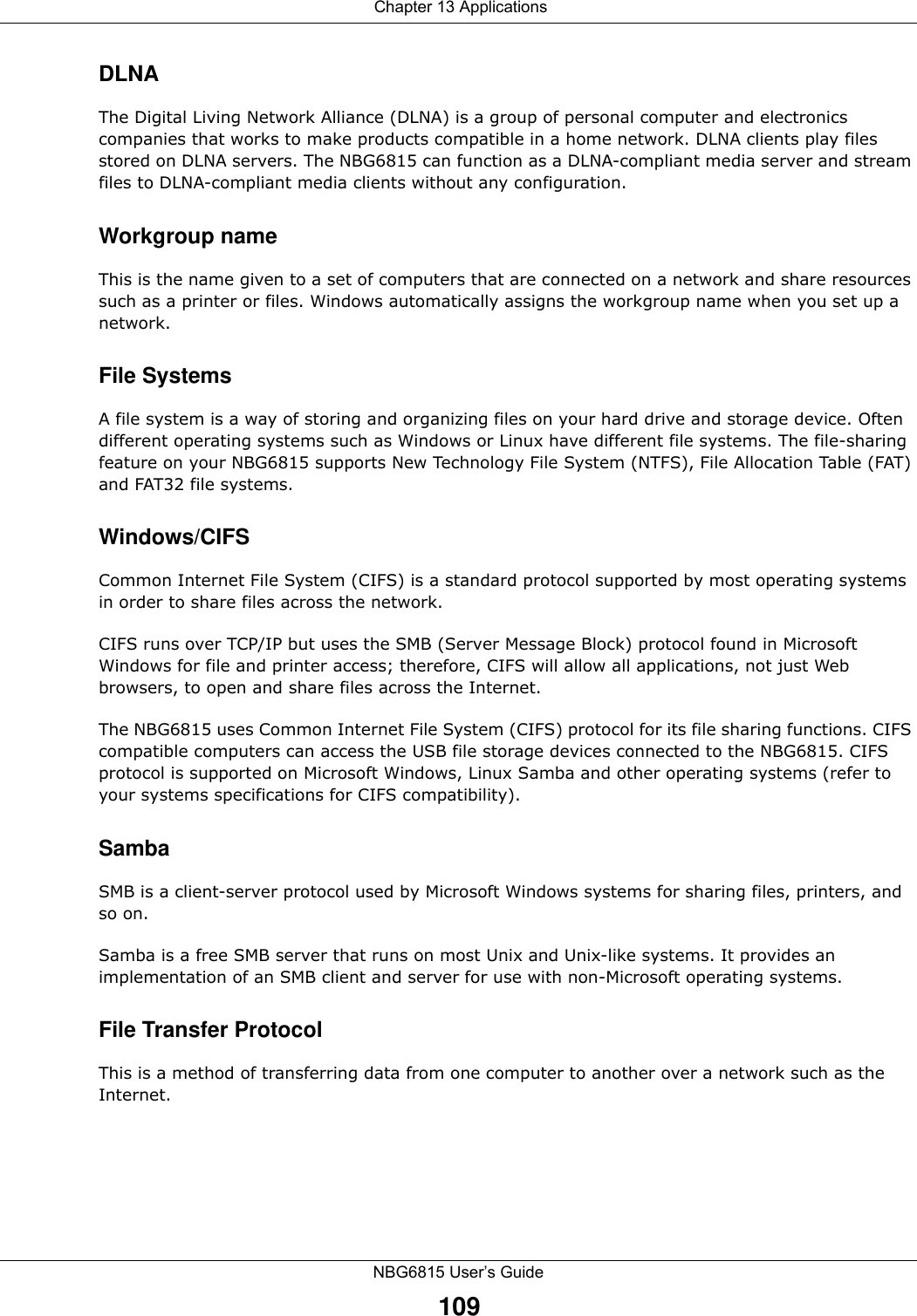
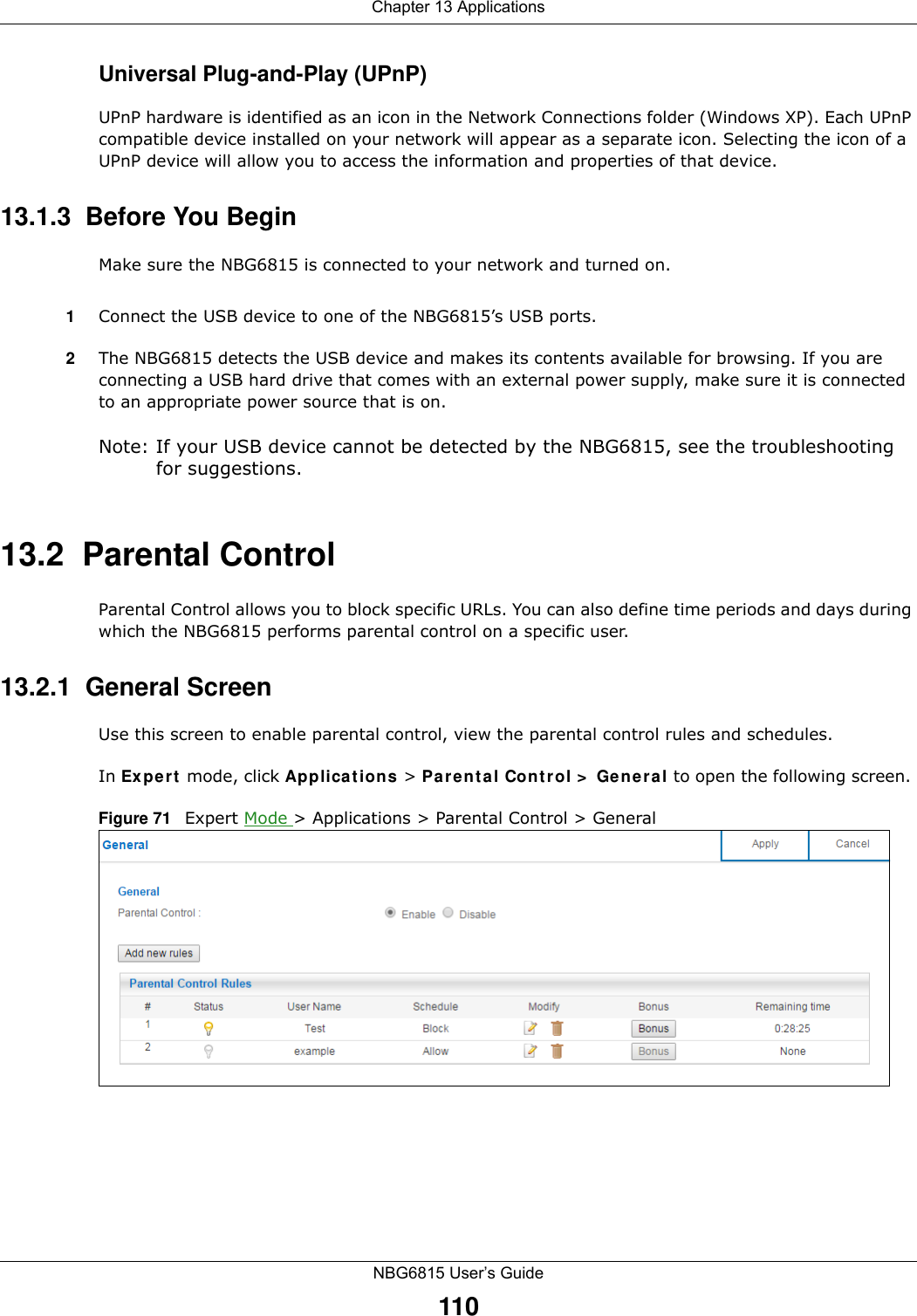
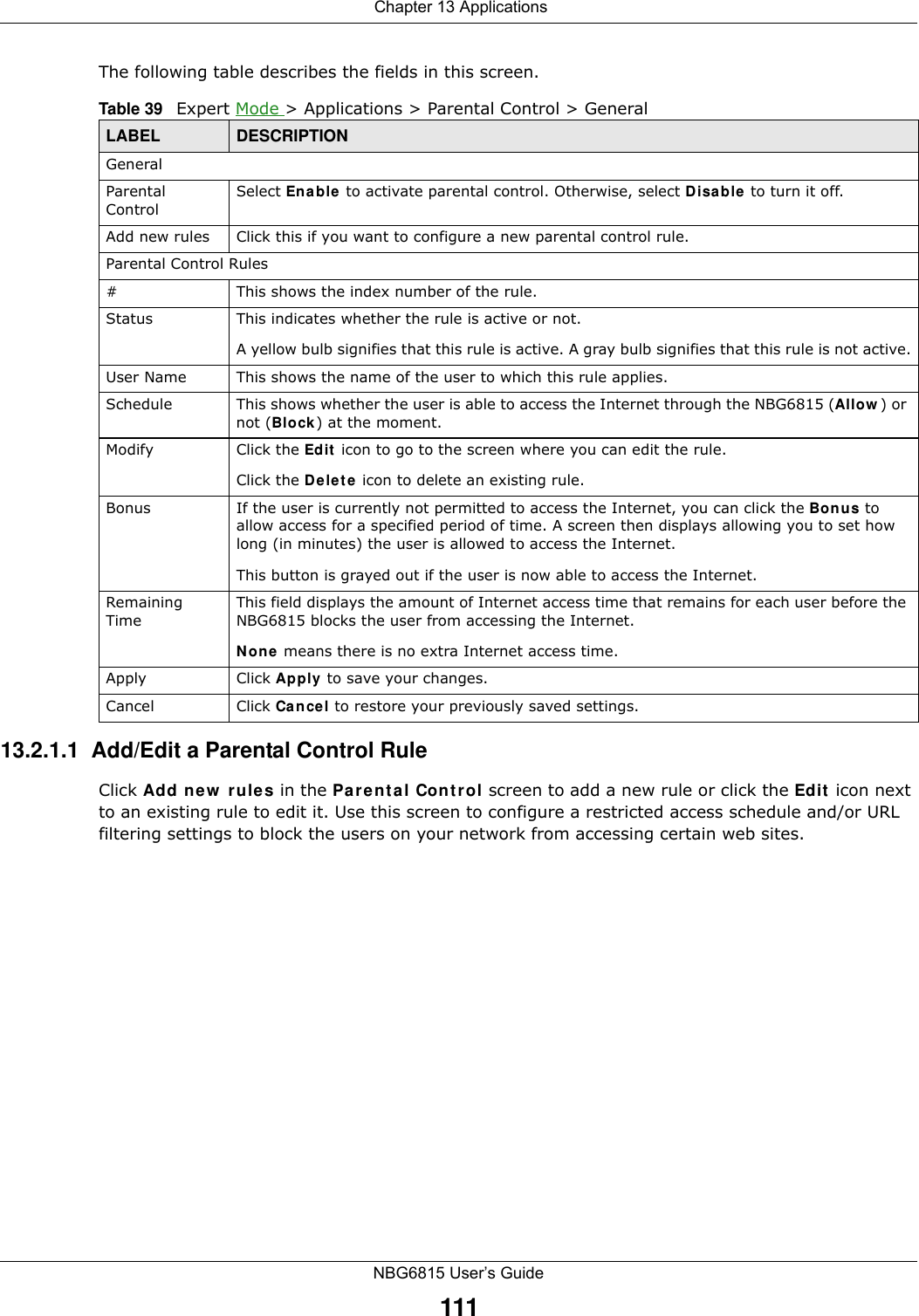
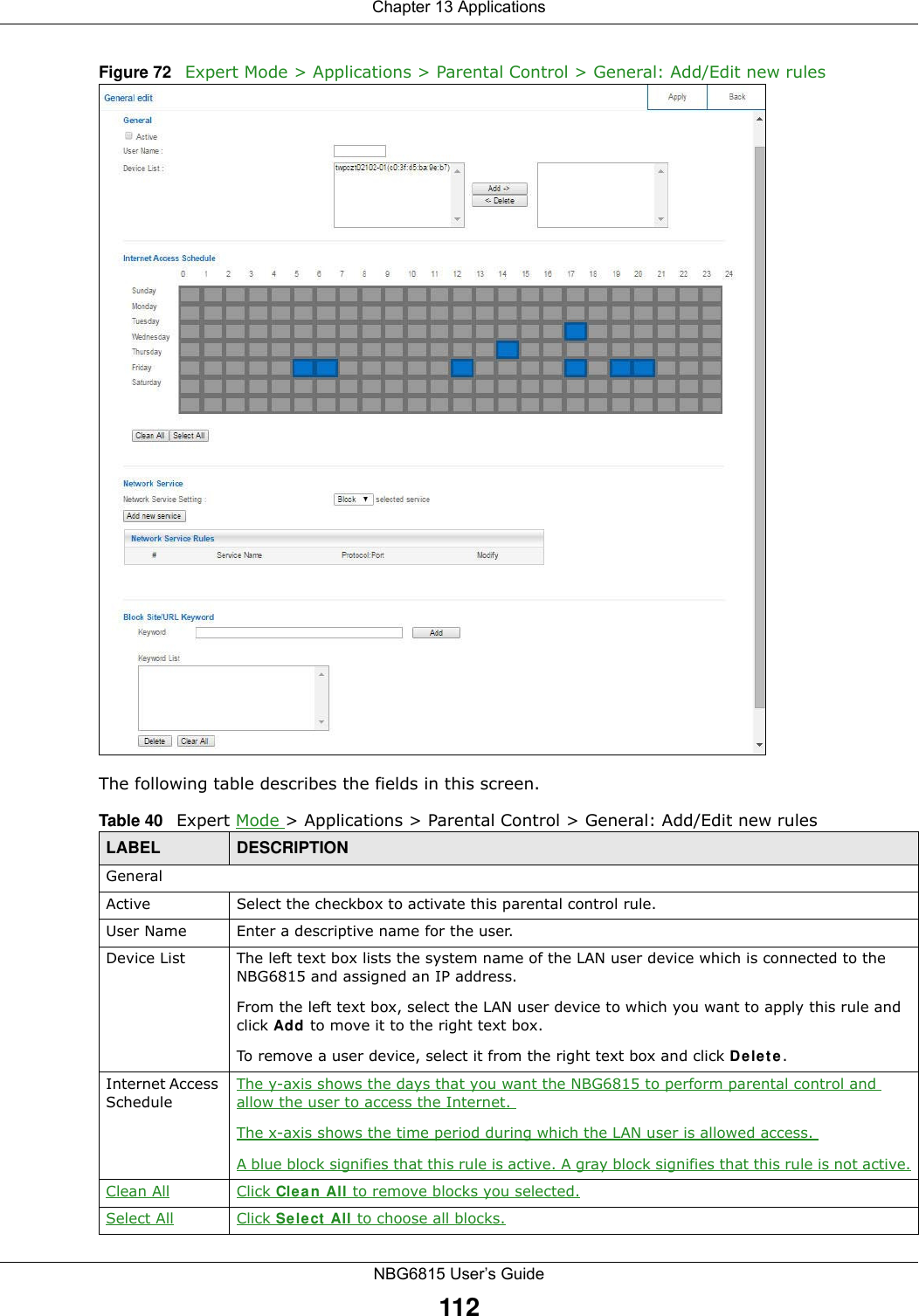

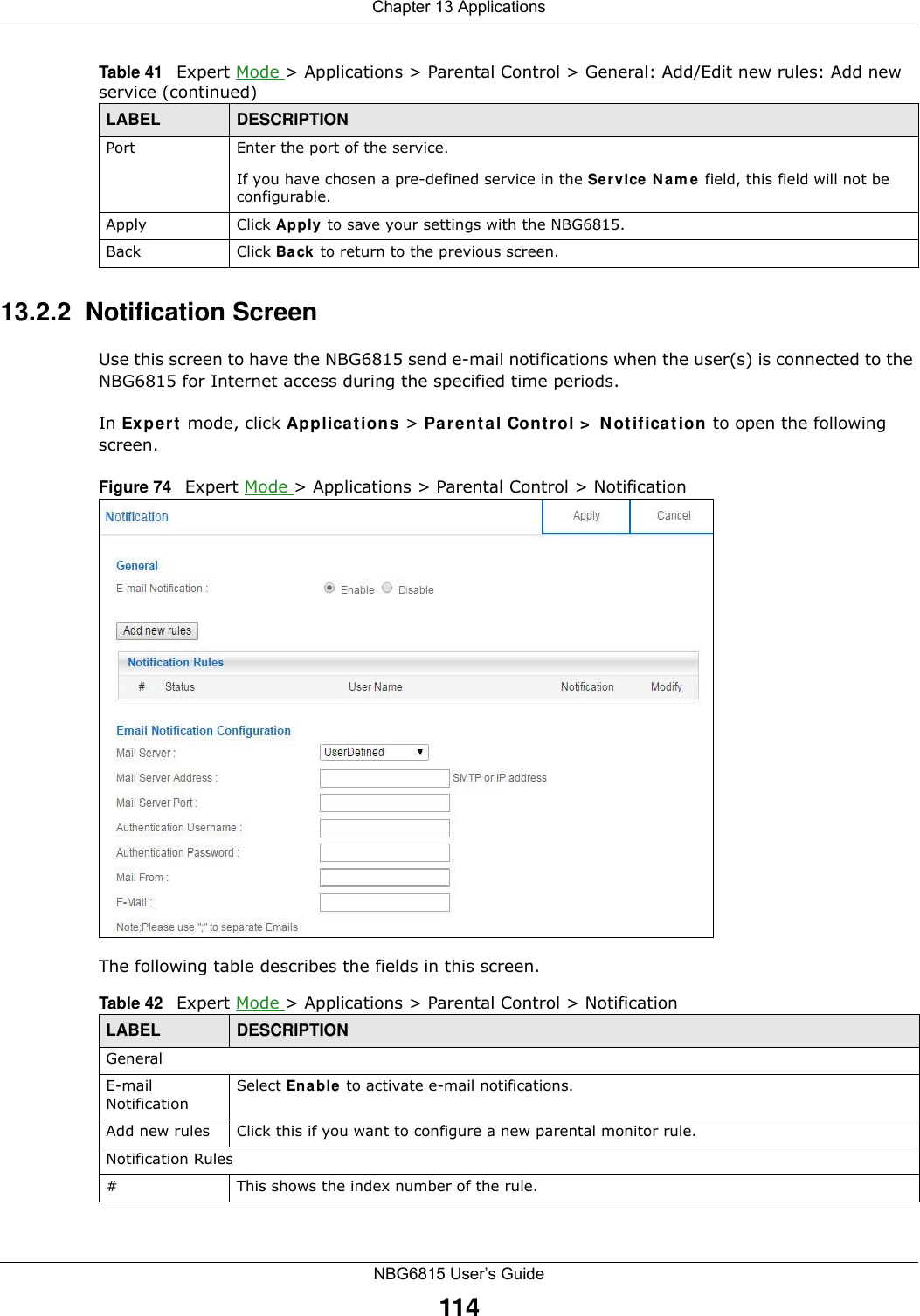
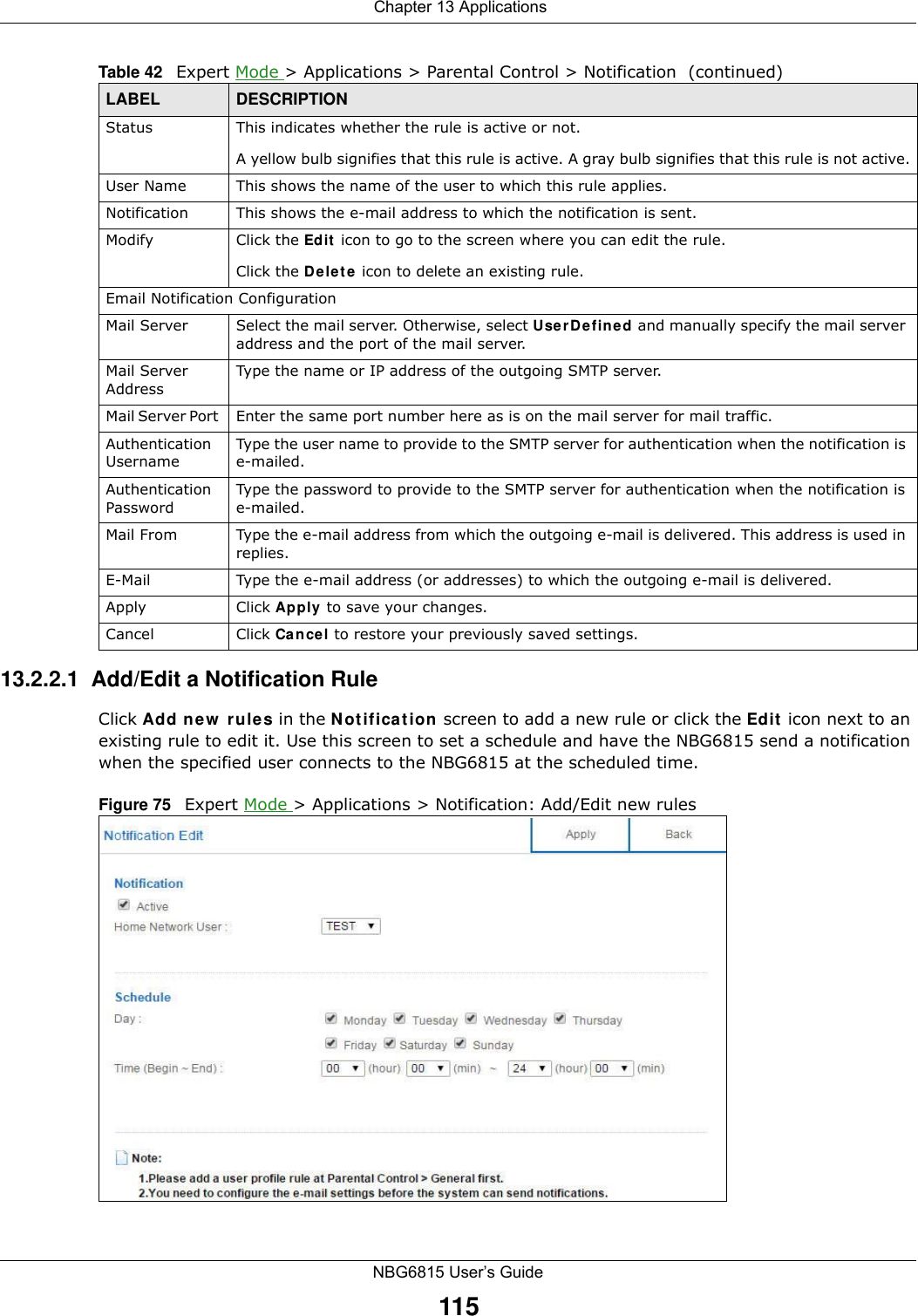
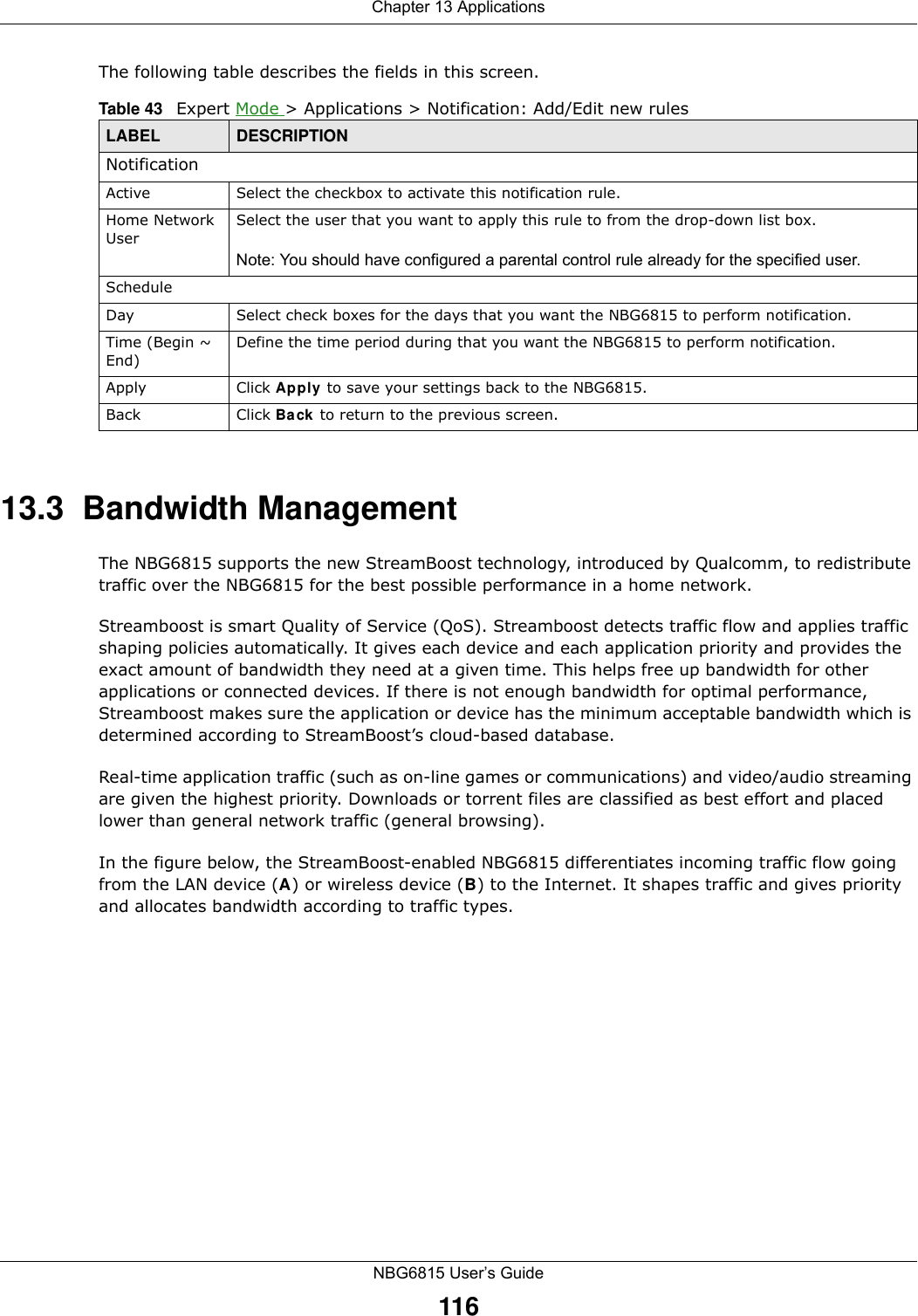
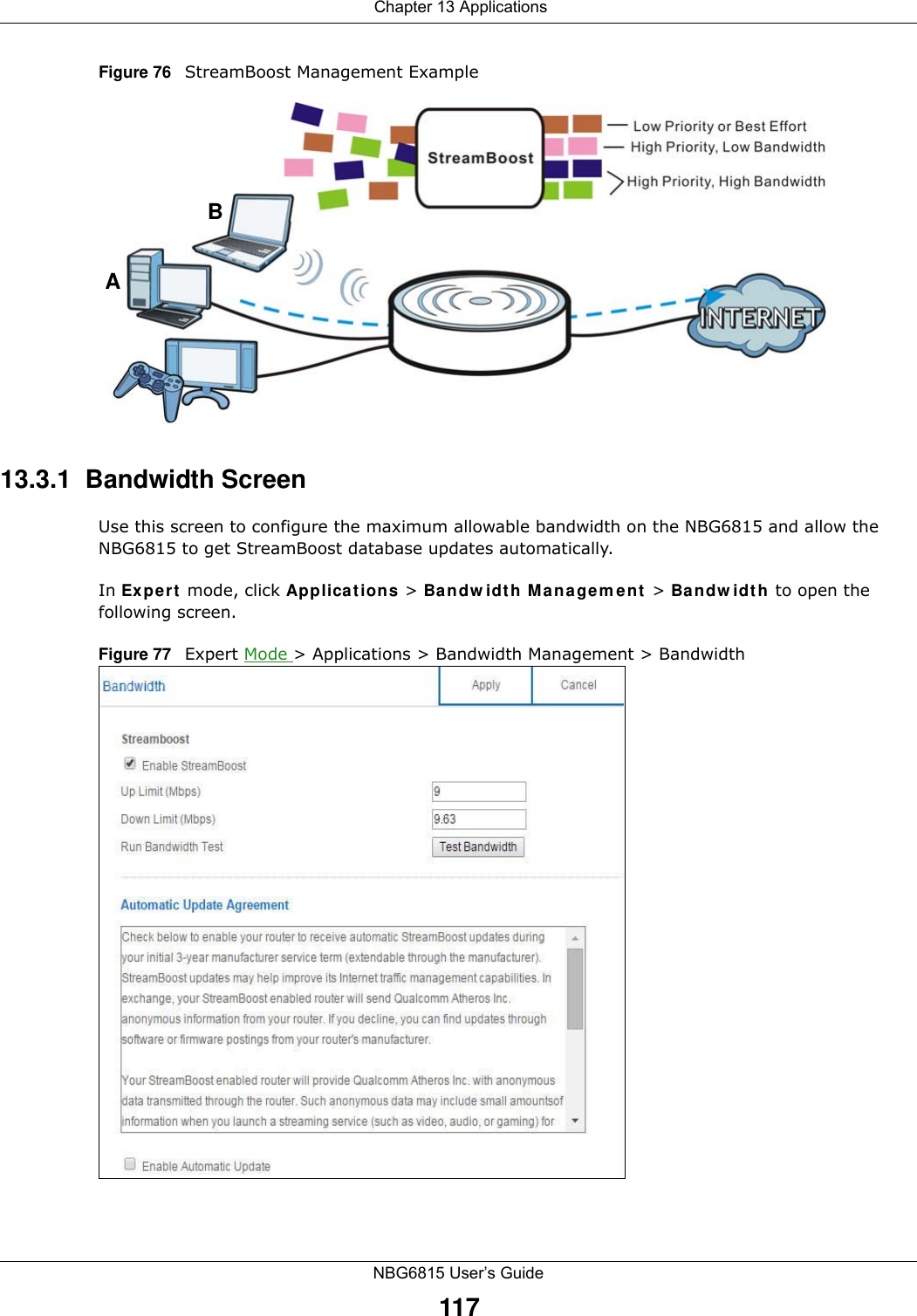
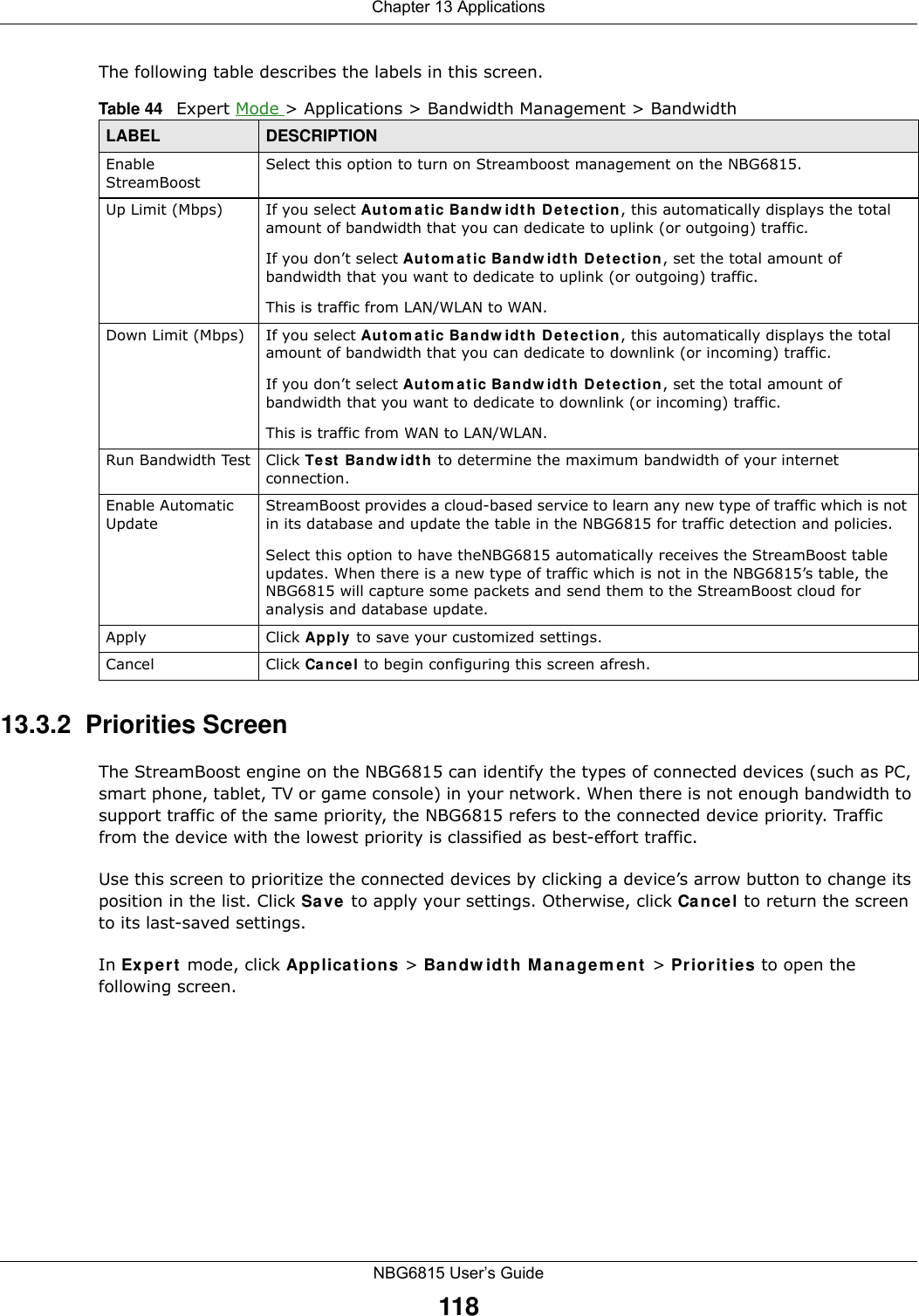
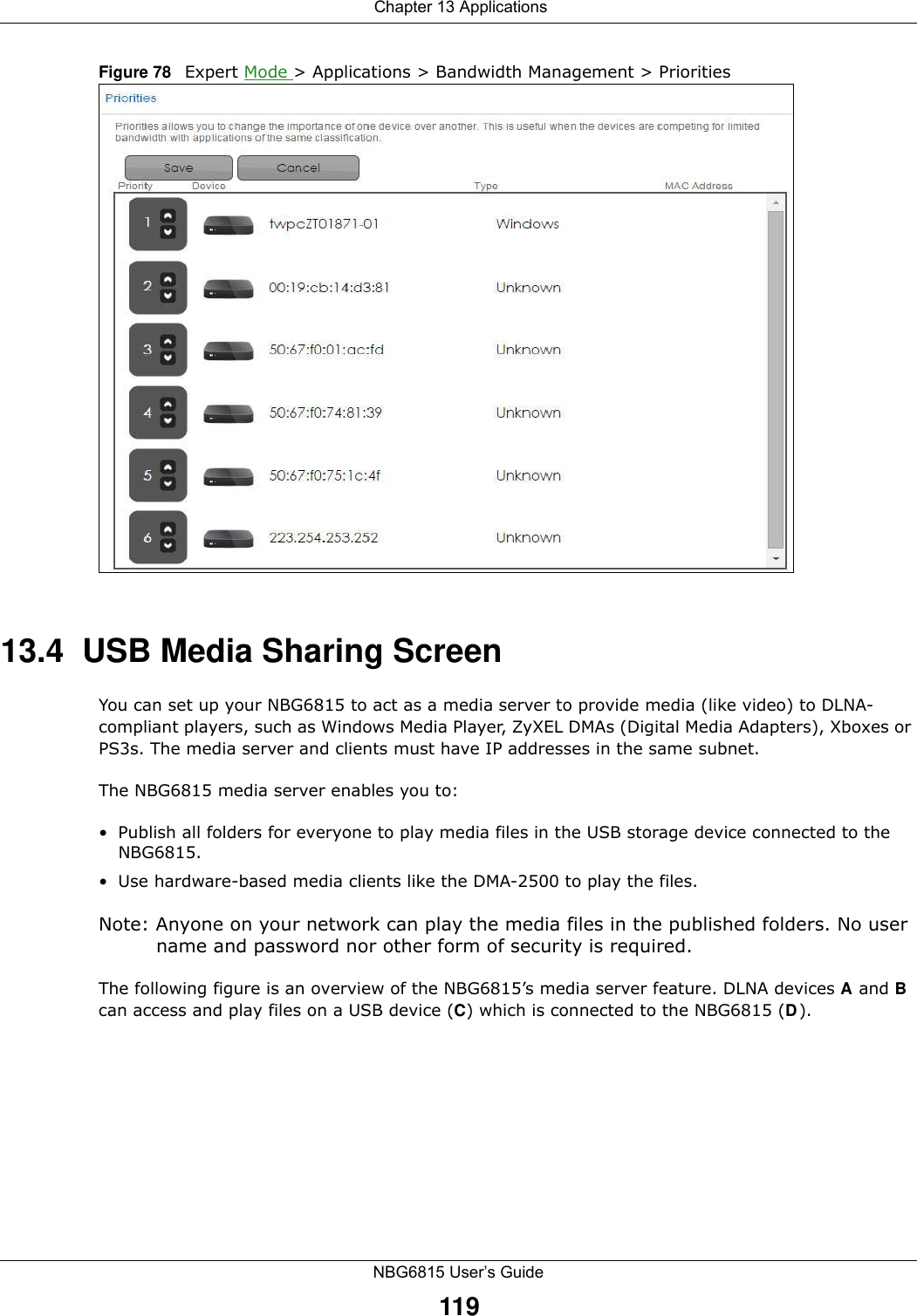
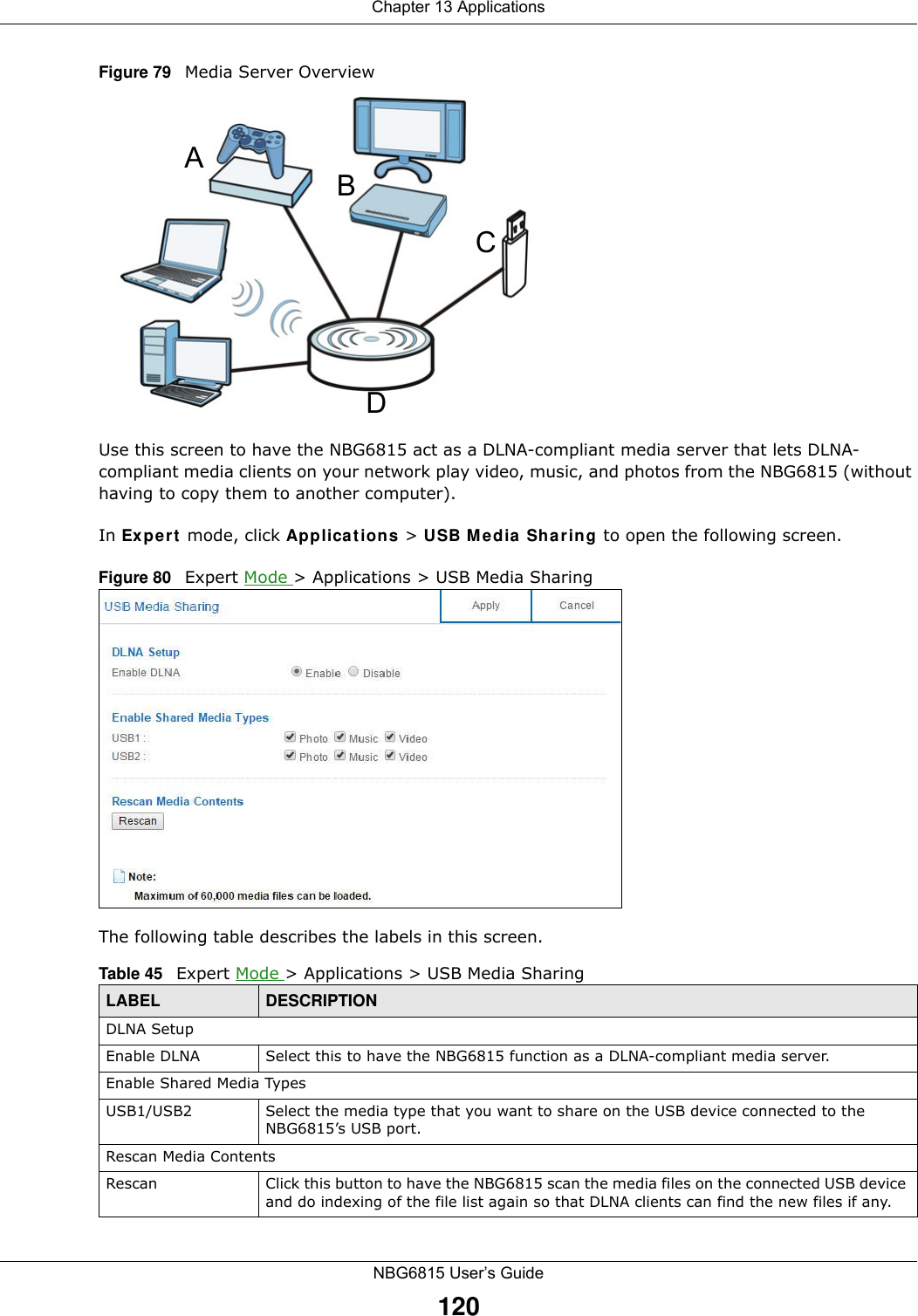
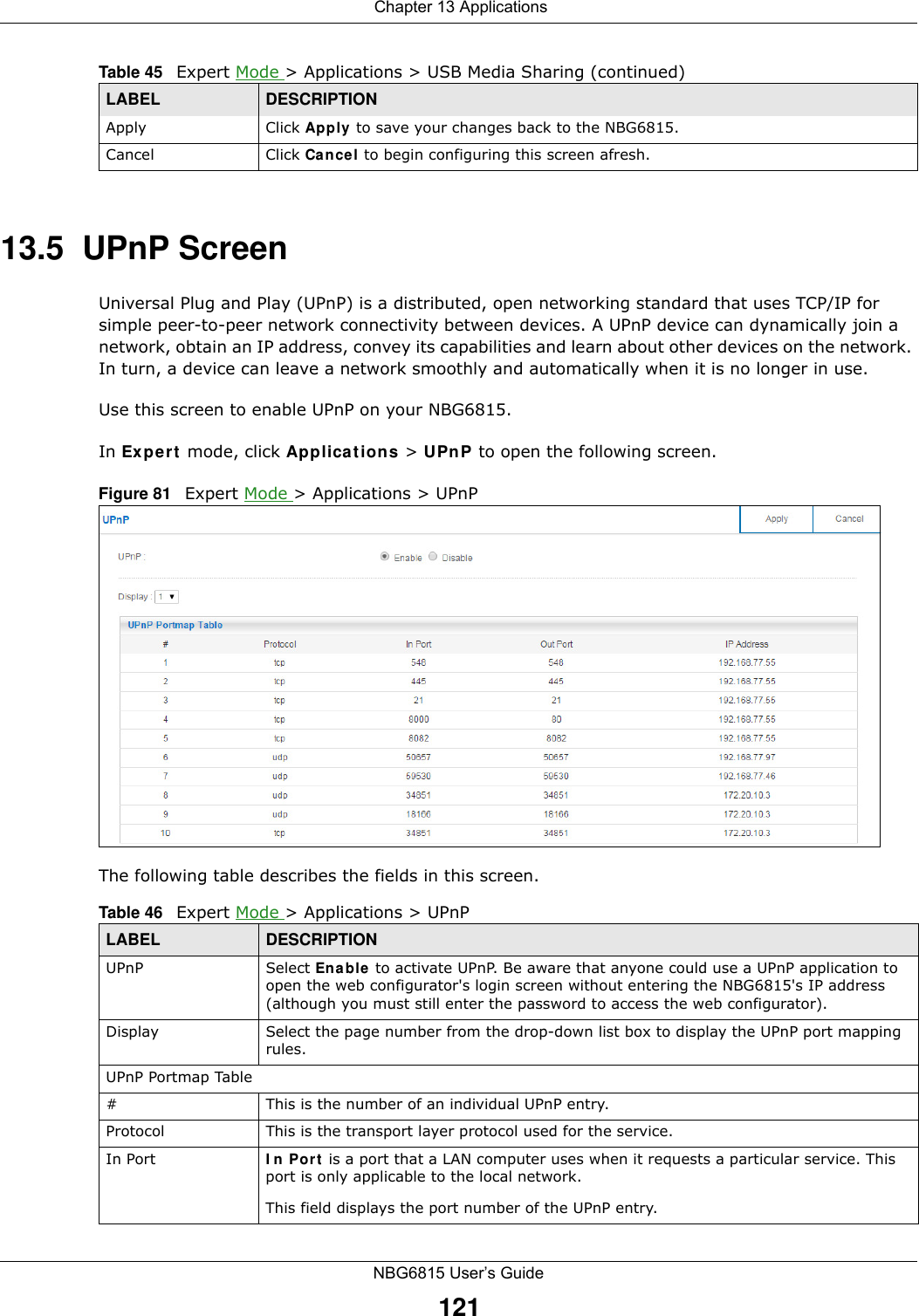
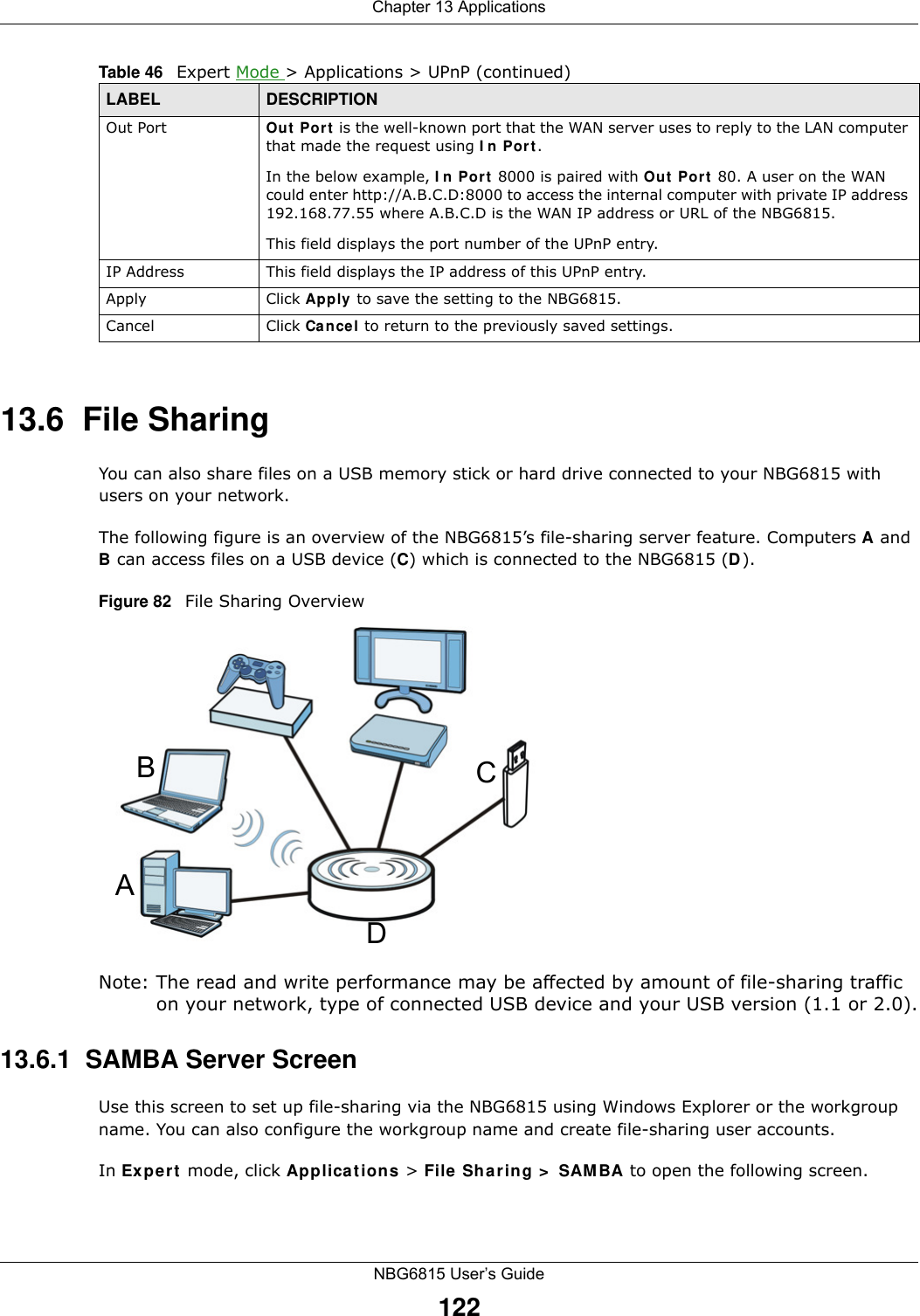
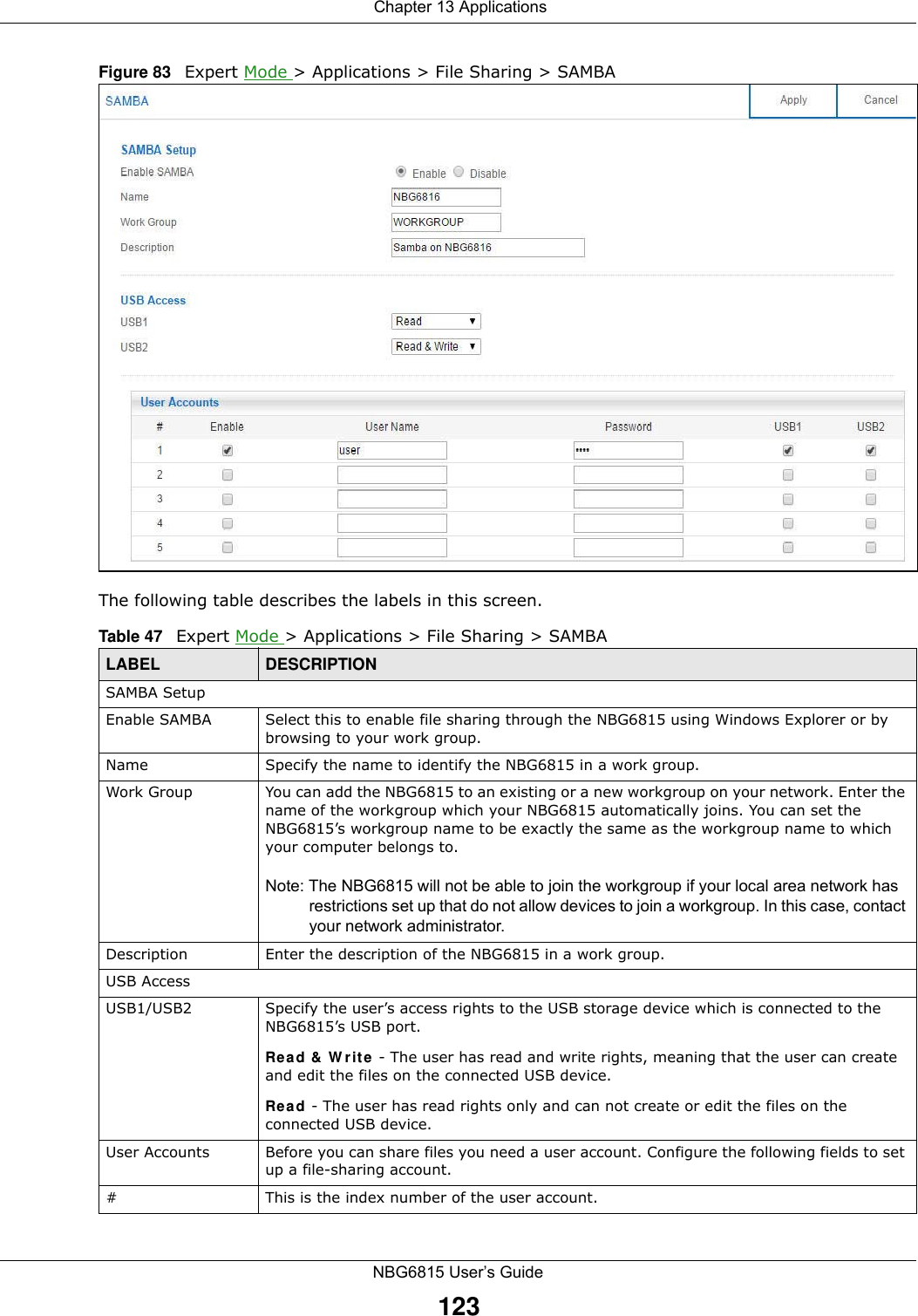
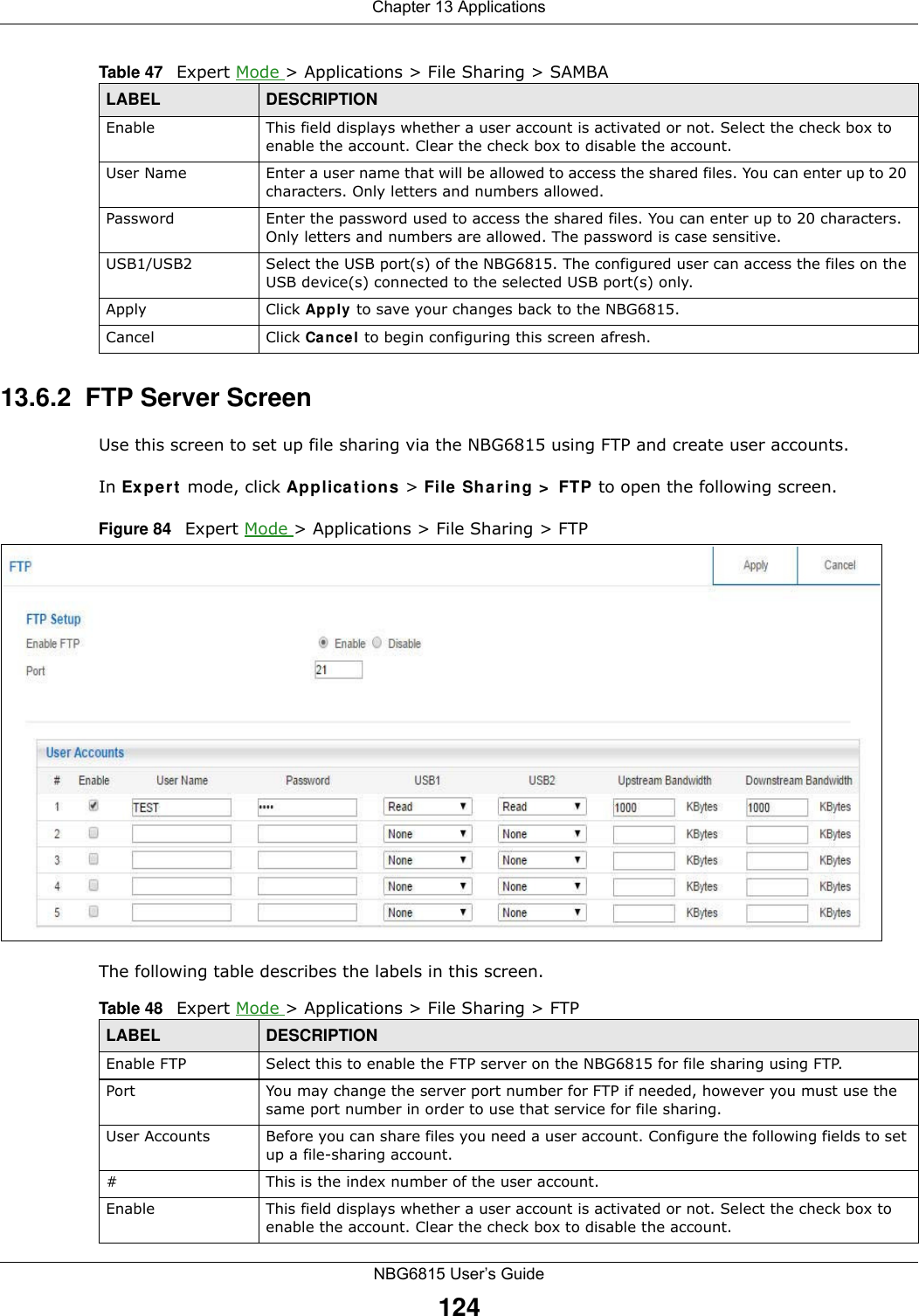
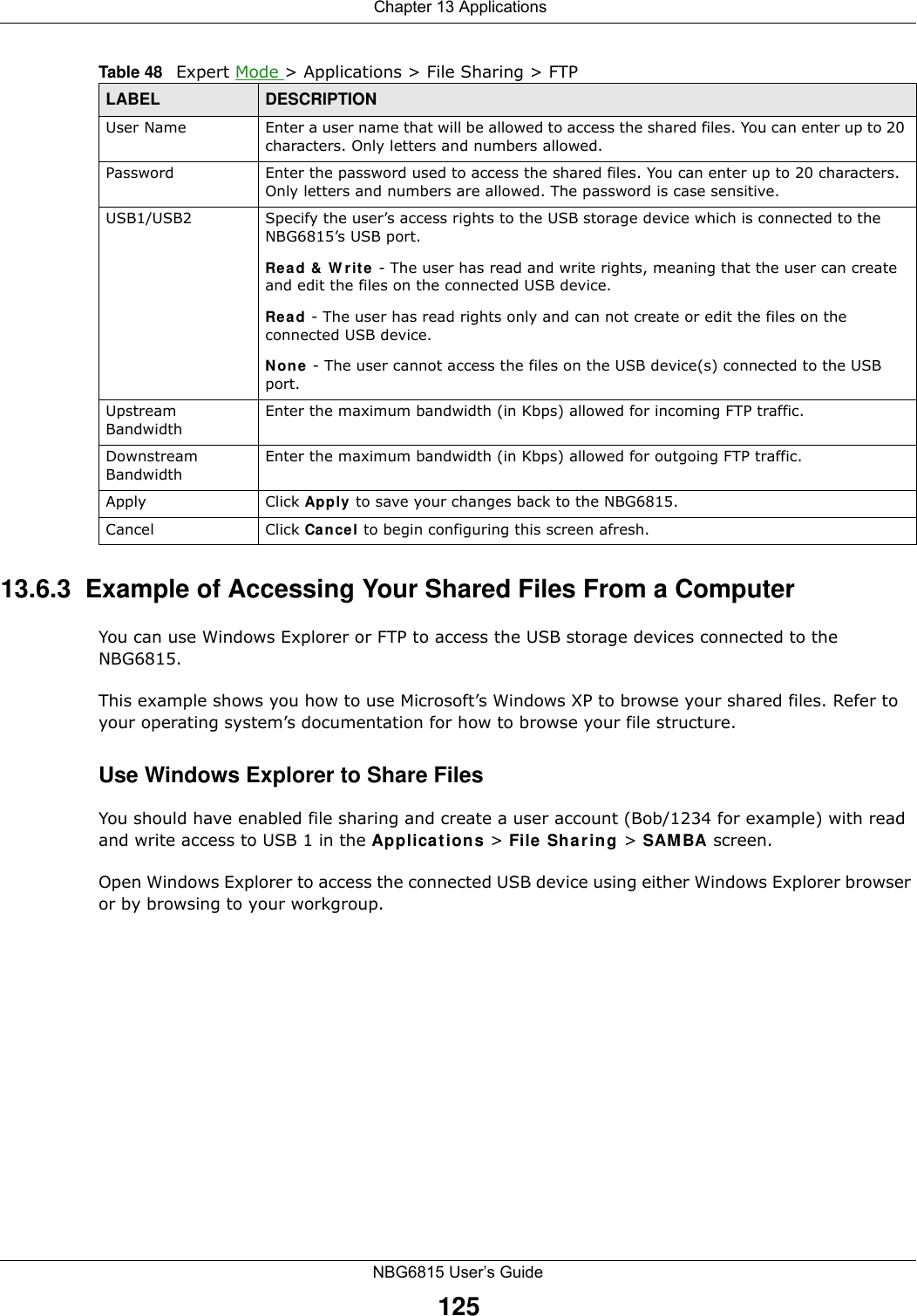
![Chapter 13 ApplicationsNBG6815 User’s Guide1261In Windows Explorer’s Address bar type a double backslash “\\” followed by the IP address of the NBG6815 (the default IP address of the NBG6815 in router mode is 192.168.1.1) and press [ENTER]. A screen asking for password authentication appears. Type the user name and password (Bob and 1234 in this example) and click OK.Note: Once you log into the shared folder via your NBG6815, you do not have to relogin unless you restart your computer.](https://usermanual.wiki/ZyXEL-Communications/NBG6815.User-manual-1/User-Guide-2825178-Page-126.png)
![Chapter 13 ApplicationsNBG6815 User’s Guide1272You can also use the workgroup name to access files by browsing to the workgroup folder using the folder tree on the left side of the screen. It is located under My Network Places. In this example the workgroup name is the default “Workgroup”. Use FTP to Share FilesYou can use FTP to access the USB storage devices connected to the NBG6815. In this example, we use the web browser to share files via FTP from the LAN. The way or screen you log into the FTP server (on the NBG6815) varies depending on your FTP client. See your FTP client documentation for more information. You should have enabled file sharing and create a user account (Bob/1234 for example) with read and write access to USB 1 in the Applications > File Sharing > FTP screen.1In your web browser’s address or URL bar type “ftp://” followed by the IP address of the NBG6815 (the default LAN IP address of the NBG6815 in router mode is 192.168.1.1) and click Go or press [ENTER].](https://usermanual.wiki/ZyXEL-Communications/NBG6815.User-manual-1/User-Guide-2825178-Page-127.png)
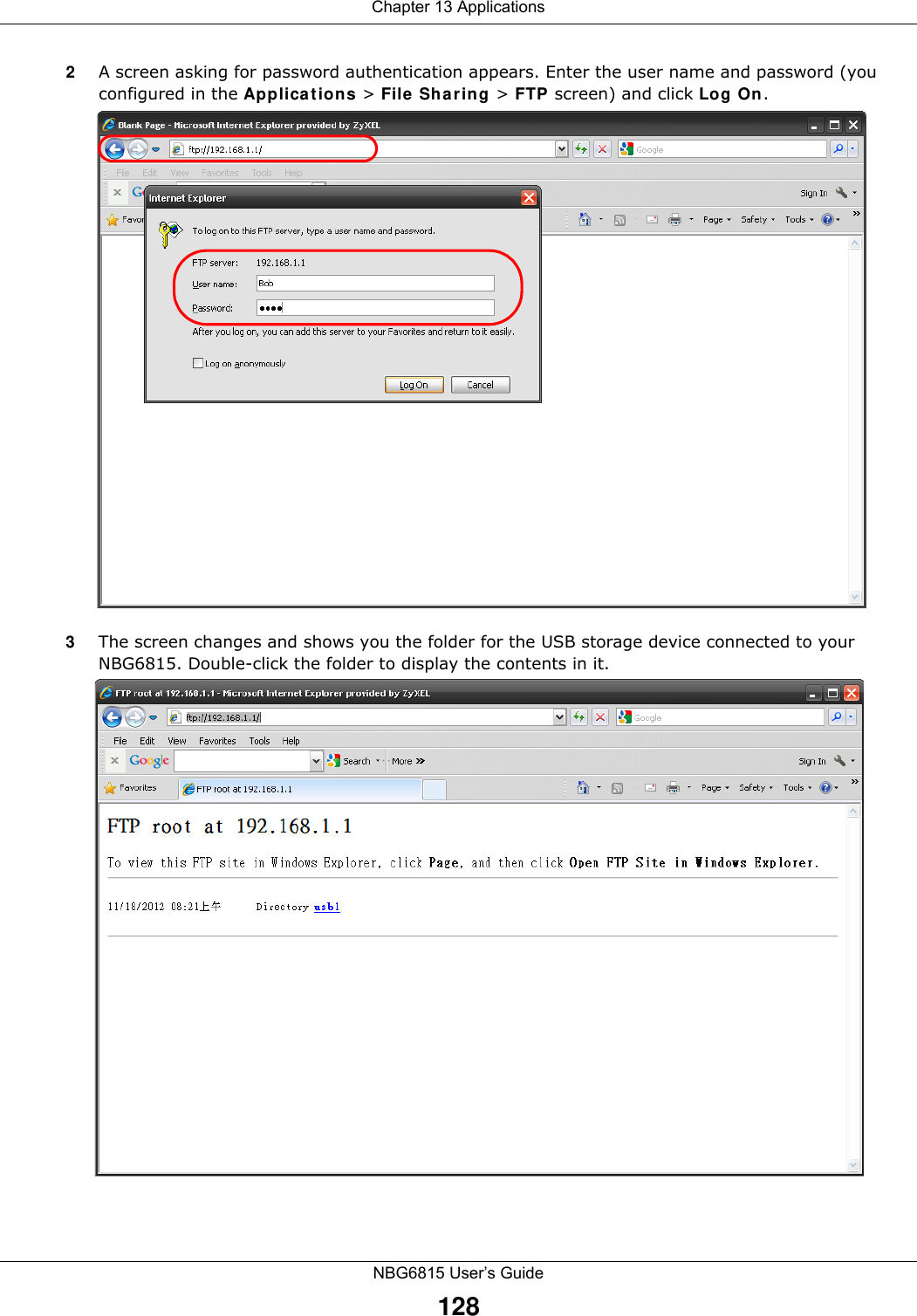
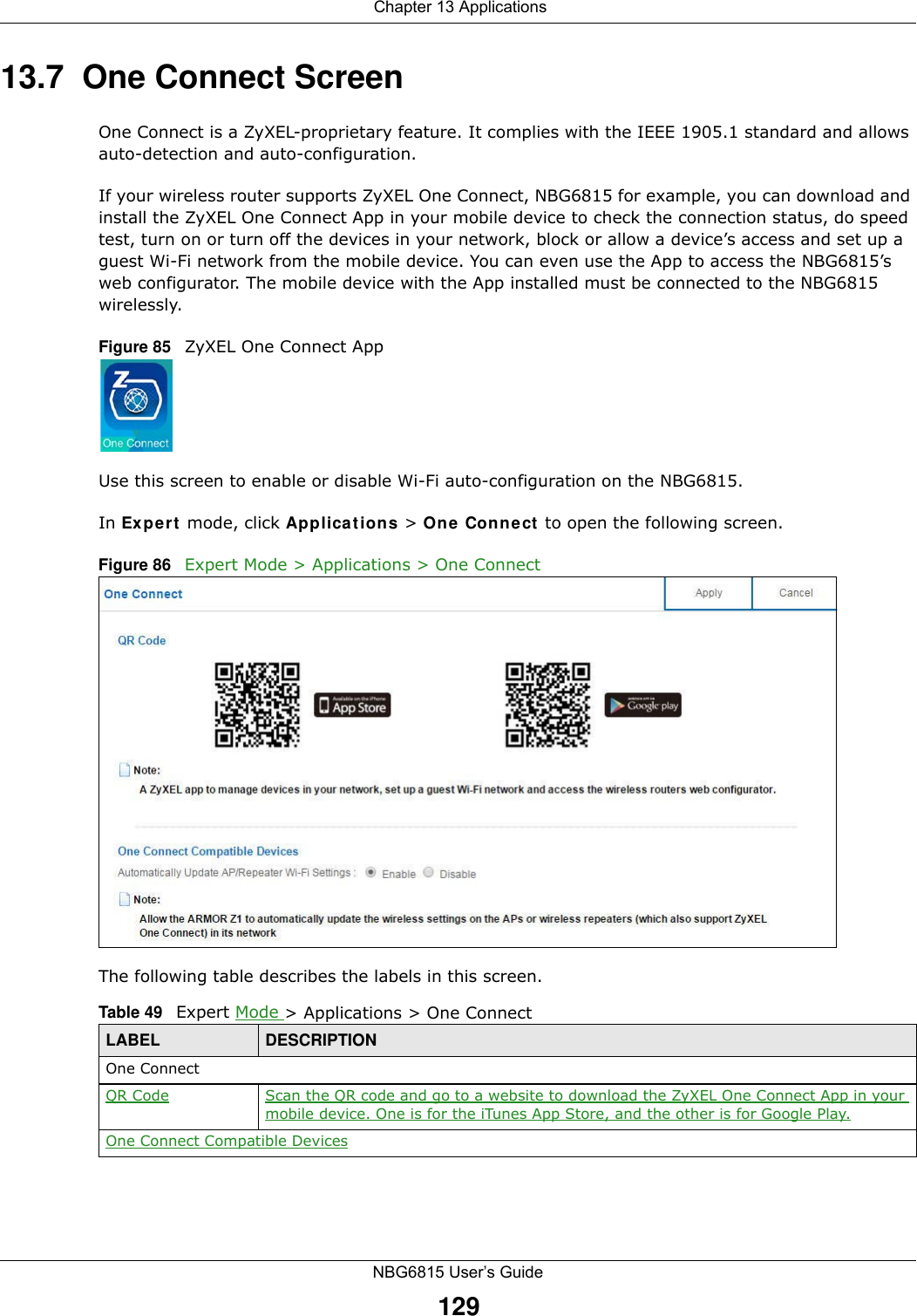
![Chapter 13 ApplicationsNBG6815 User’s Guide13013.8 Technical ReferenceThe following section contains additional technical information about the NBG6815 features described in this chapter.Customizing Keyword Blocking URL CheckingYou can use commands to set how much of a website’s URL the content filter is to check for keyword blocking. See the appendices for information on how to access and use the command interpreter.Domain Name or IP Address URL CheckingBy default, the NBG6815 checks the URL’s domain name or IP address when performing keyword blocking.This means that the NBG6815 checks the characters that come before the first slash in the URL.For example, with the URL www.zyxel.com.tw/news/pressroom.php, content filtering only searches for keywords within www.zyxel.com.tw.Full Path URL CheckingFull path URL checking has the NBG6815 check the characters that come before the last slash in the URL.For example, with the URL www.zyxel.com.tw/news/pressroom.php, full path URL checking searches for keywords within www.zyxel.com.tw/news/.Use the ip urlfilter customize actionFlags 6 [disable | enable] command to extend (or not extend) the keyword blocking search to include the URL's full path.File Name URL CheckingFilename URL checking has the NBG6815 check all of the characters in the URL.For example, filename URL checking searches for keywords within the URL www.zyxel.com.tw/news/pressroom.php.Auto-configurationAutomatically Update AP/Repeater Wi-Fi SettingsSelect Enable to allow the NBG6815 to automatically update the wireless settings on the APs or wireless repeaters (which also support ZyXEL One Connect) in its network. Select Disable to turn this feature off if you want to have the APs or repeaters in the network use different wireless settings.Apply Click Apply to save your changes back to the NBG6815.Cancel Click Cancel to begin configuring this screen afresh.Table 49 Expert Mode > Applications > One Connect LABEL DESCRIPTION](https://usermanual.wiki/ZyXEL-Communications/NBG6815.User-manual-1/User-Guide-2825178-Page-130.png)
![Chapter 13 ApplicationsNBG6815 User’s Guide131Use the ip urlfilter customize actionFlags 8 [disable | enable] command to extend (or not extend) the keyword blocking search to include the URL's complete filename.NAT TraversalUPnP NAT traversal automates the process of allowing an application to operate through NAT. UPnP network devices can automatically configure network addressing, announce their presence in the network to other UPnP devices and enable exchange of simple product and service descriptions. NAT traversal allows the following:• Dynamic port mapping• Learning public IP addresses• Assigning lease times to mappingsWindows Messenger is an example of an application that supports NAT traversal and UPnP. See the NAT chapter for more information on NAT.Cautions with UPnPThe automated nature of NAT traversal applications in establishing their own services and opening firewall ports may present network security issues. Network information and configuration may also be obtained and modified by users in some network environments. When a UPnP device joins a network, it announces its presence with a multicast message. For security reasons, the NBG6815 allows multicast messages on the LAN only.All UPnP-enabled devices may communicate freely with each other without additional configuration. Disable UPnP if this is not your intention.](https://usermanual.wiki/ZyXEL-Communications/NBG6815.User-manual-1/User-Guide-2825178-Page-131.png)
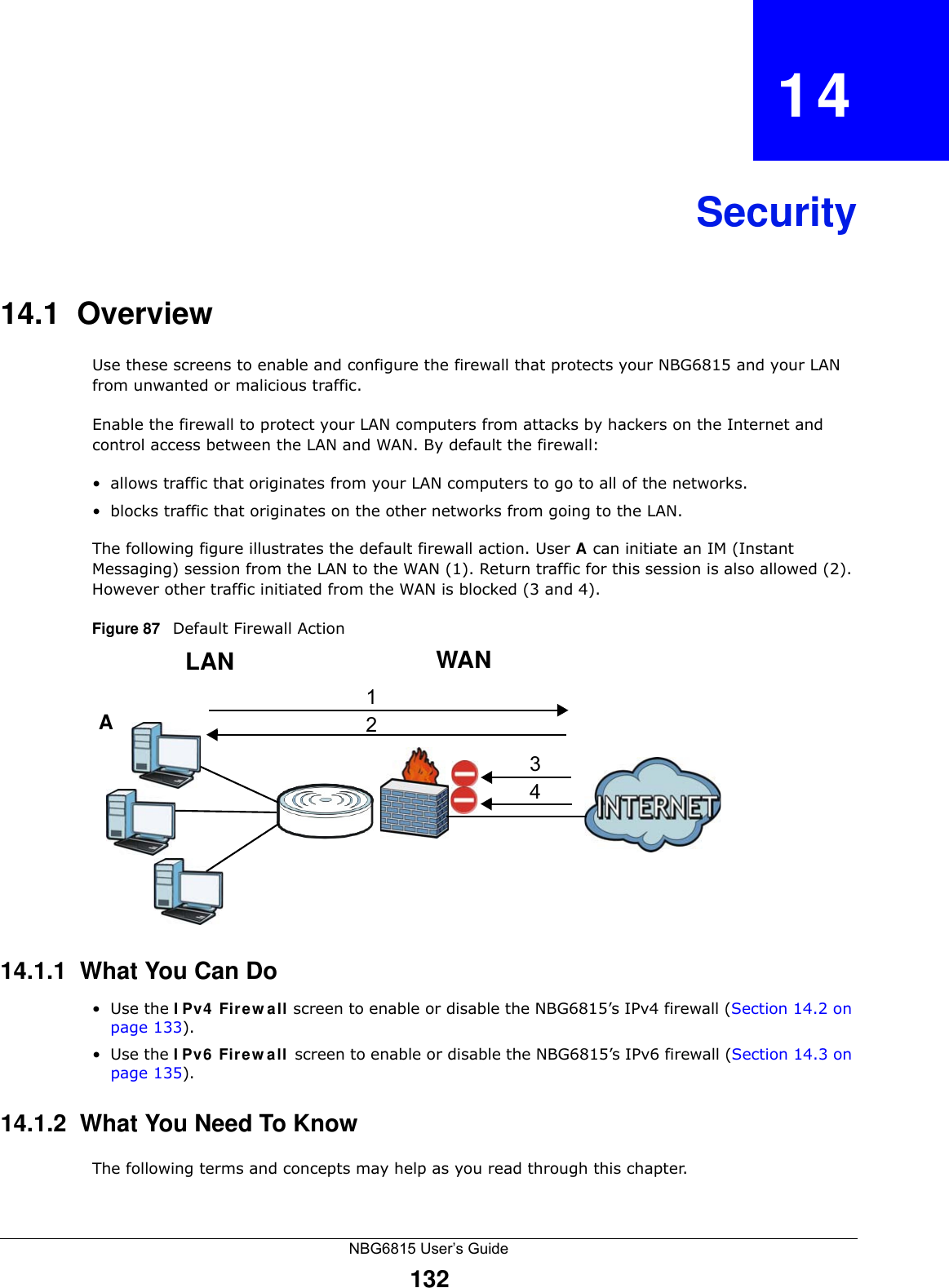
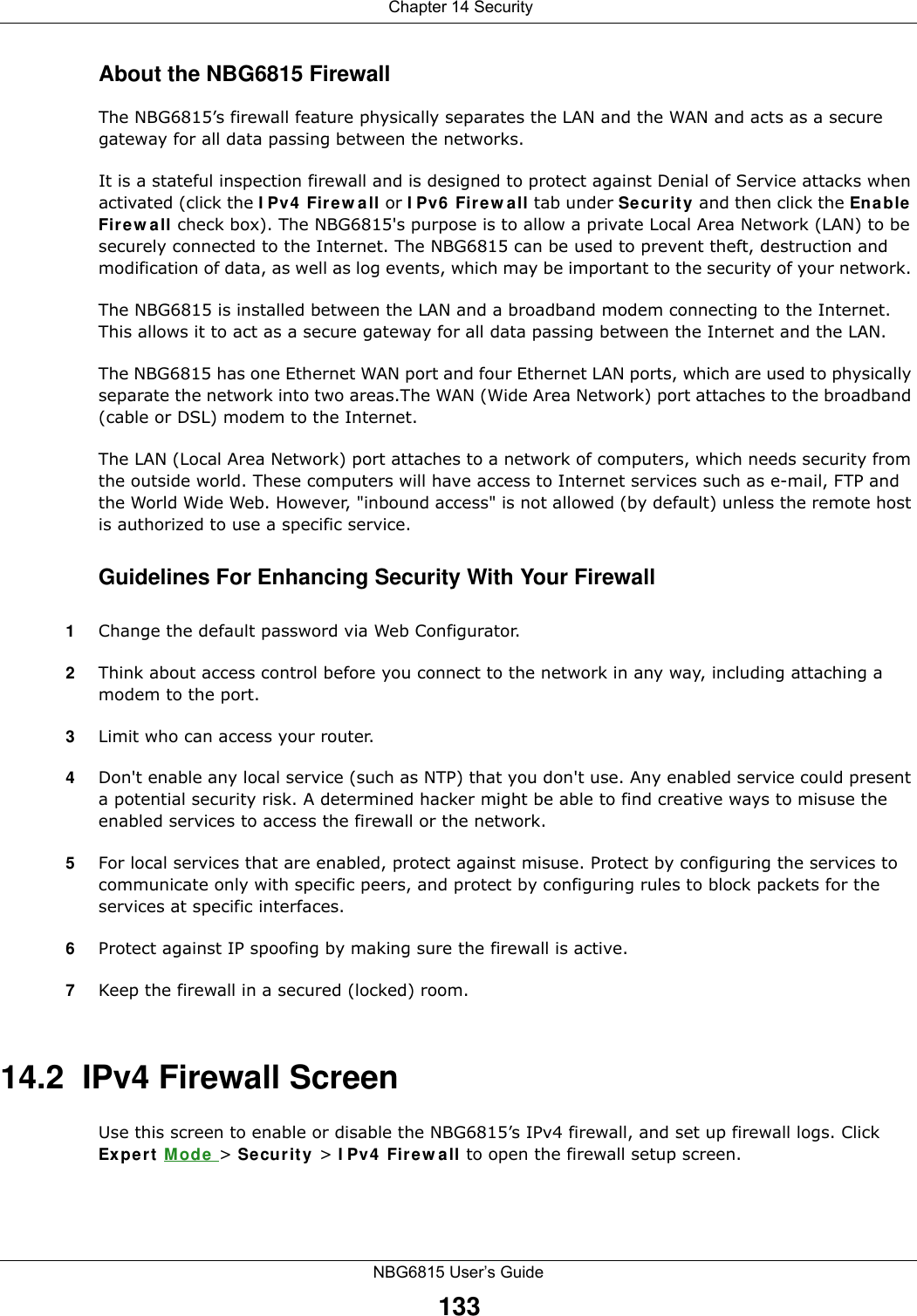
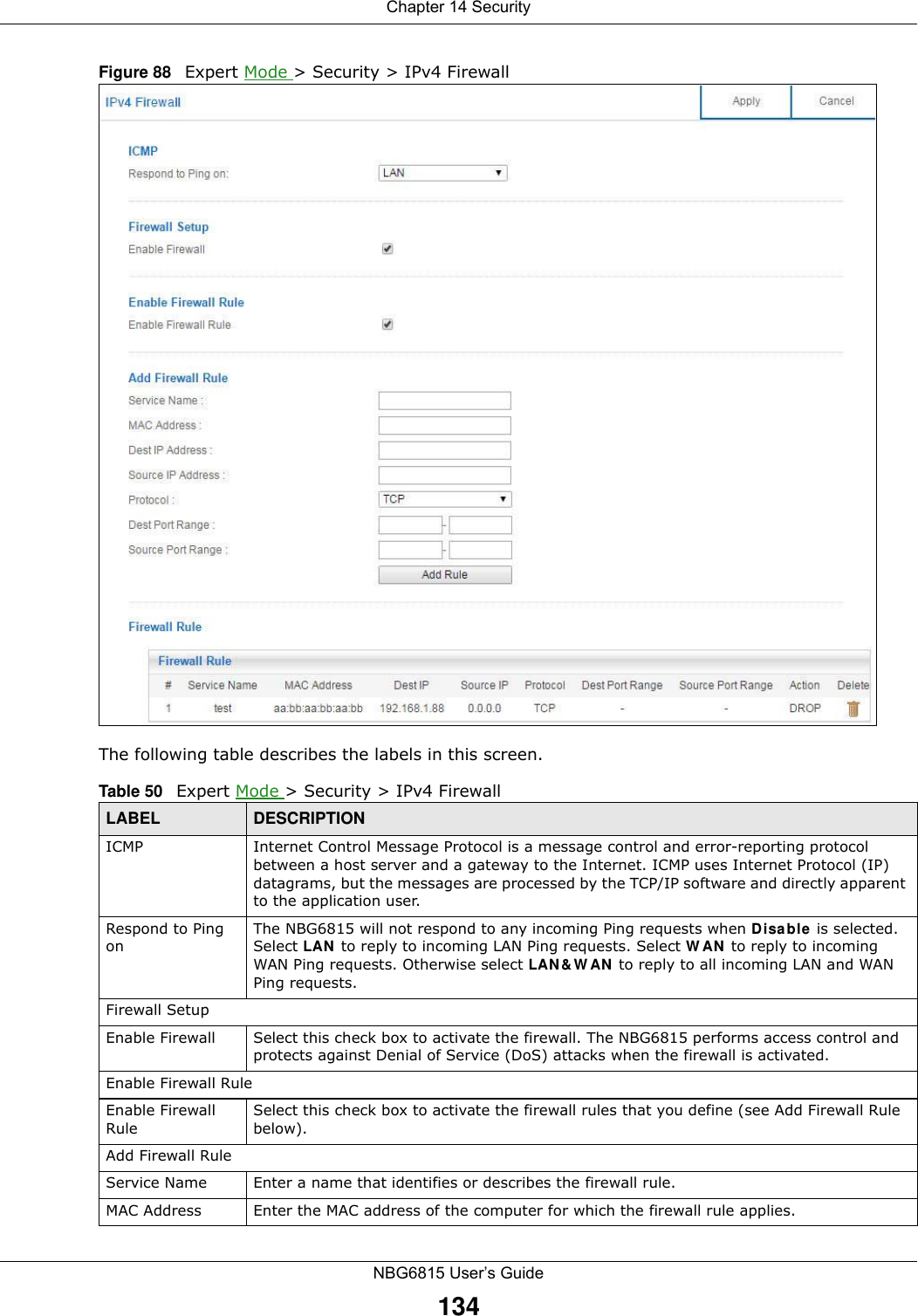
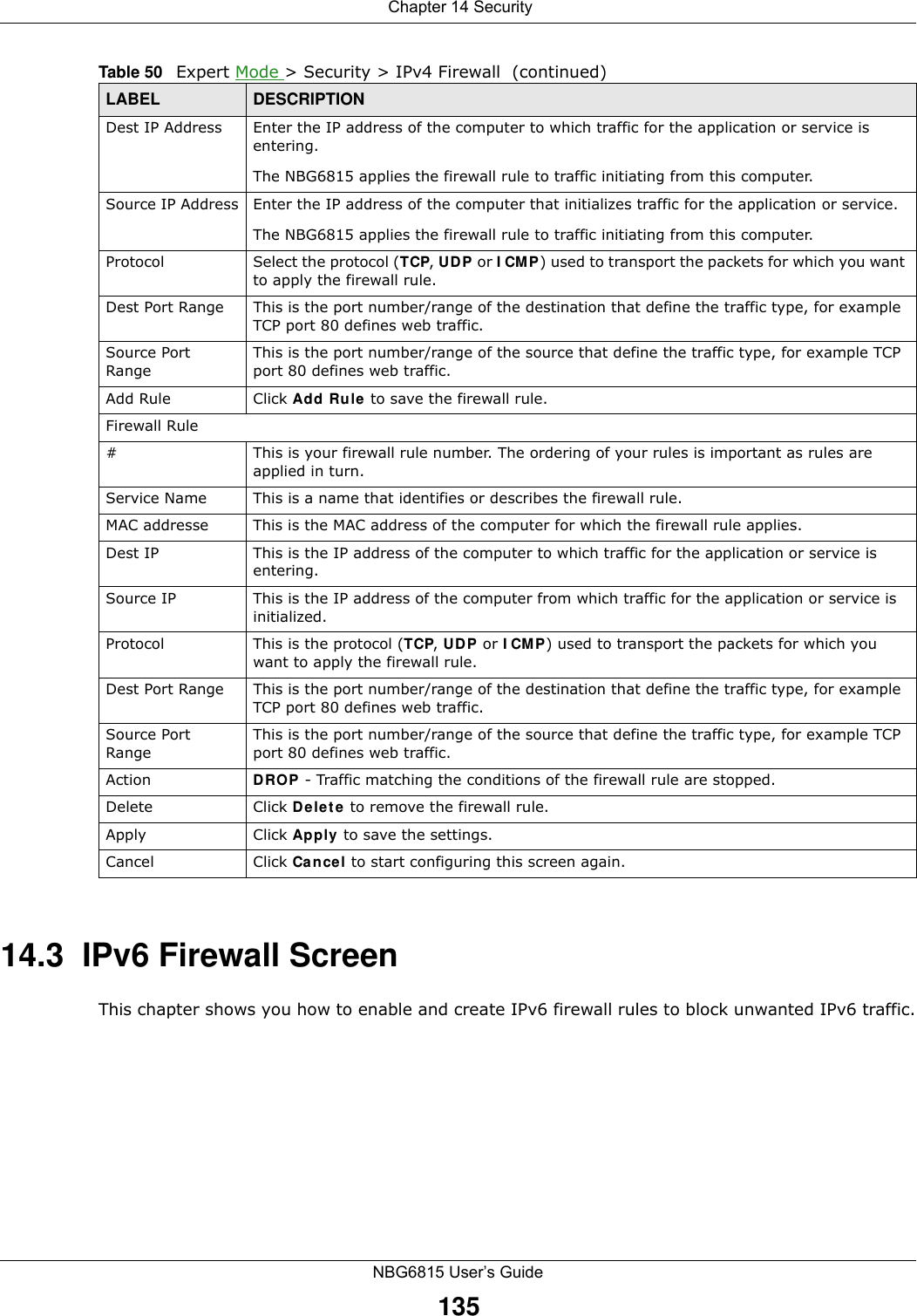
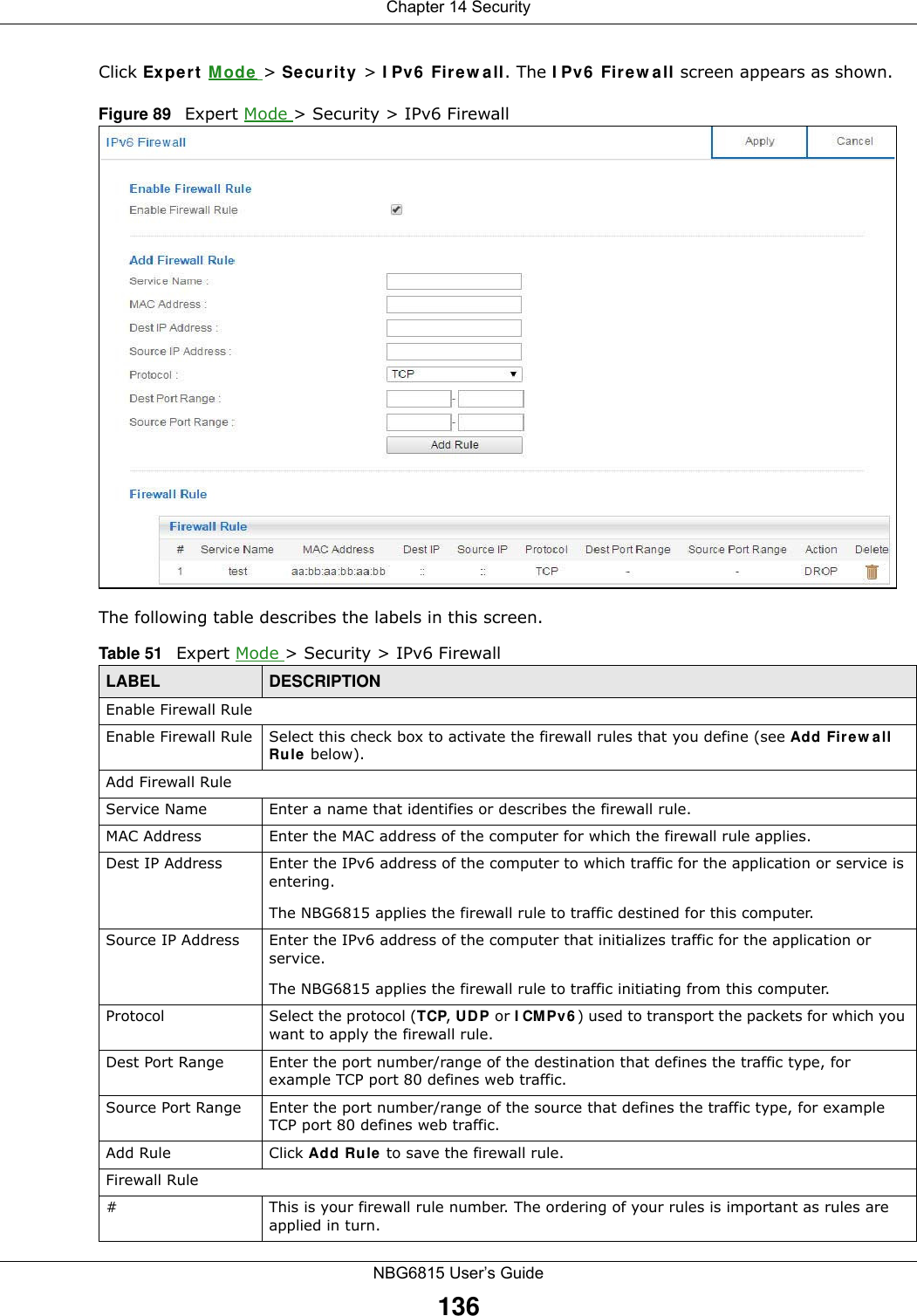
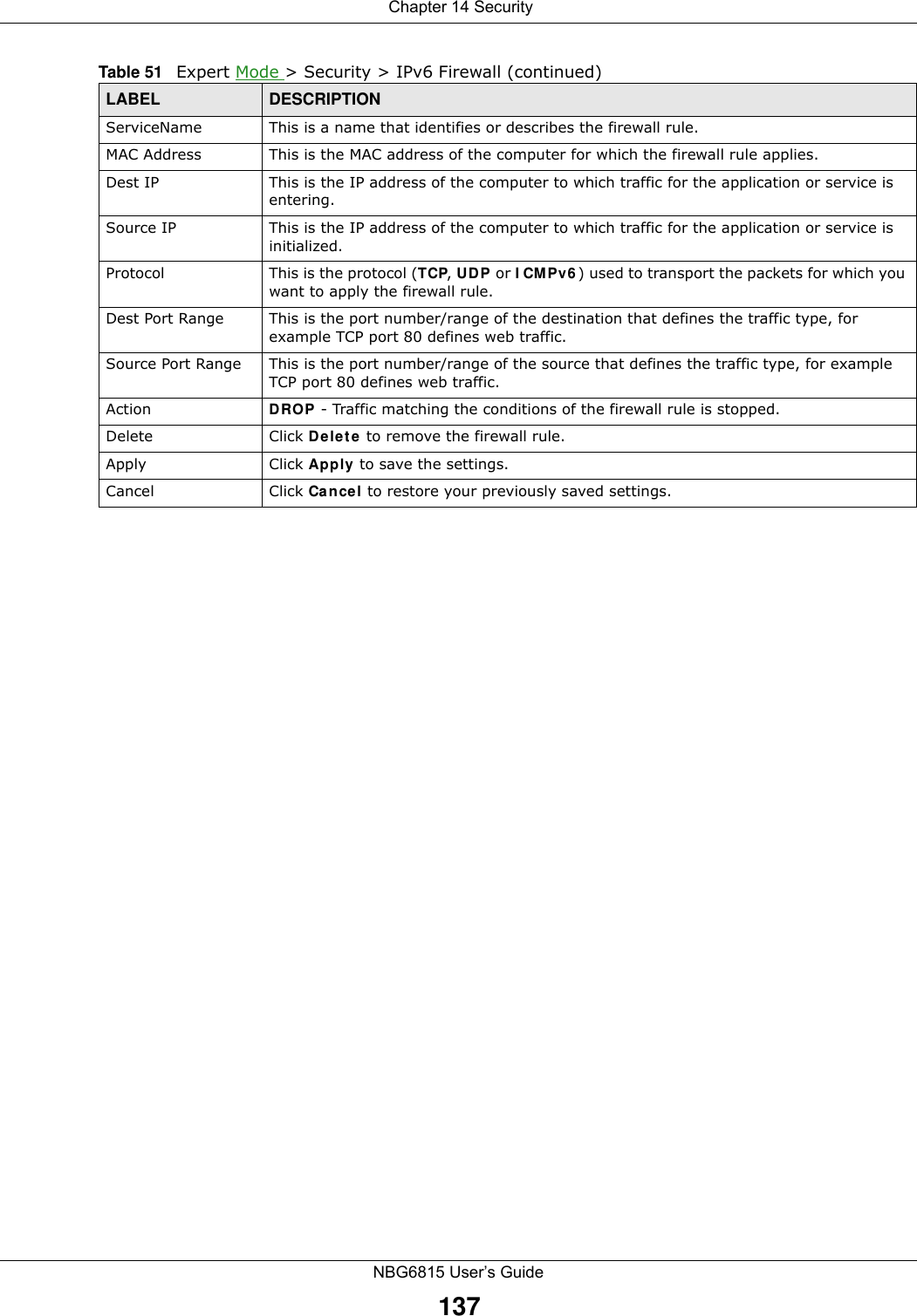
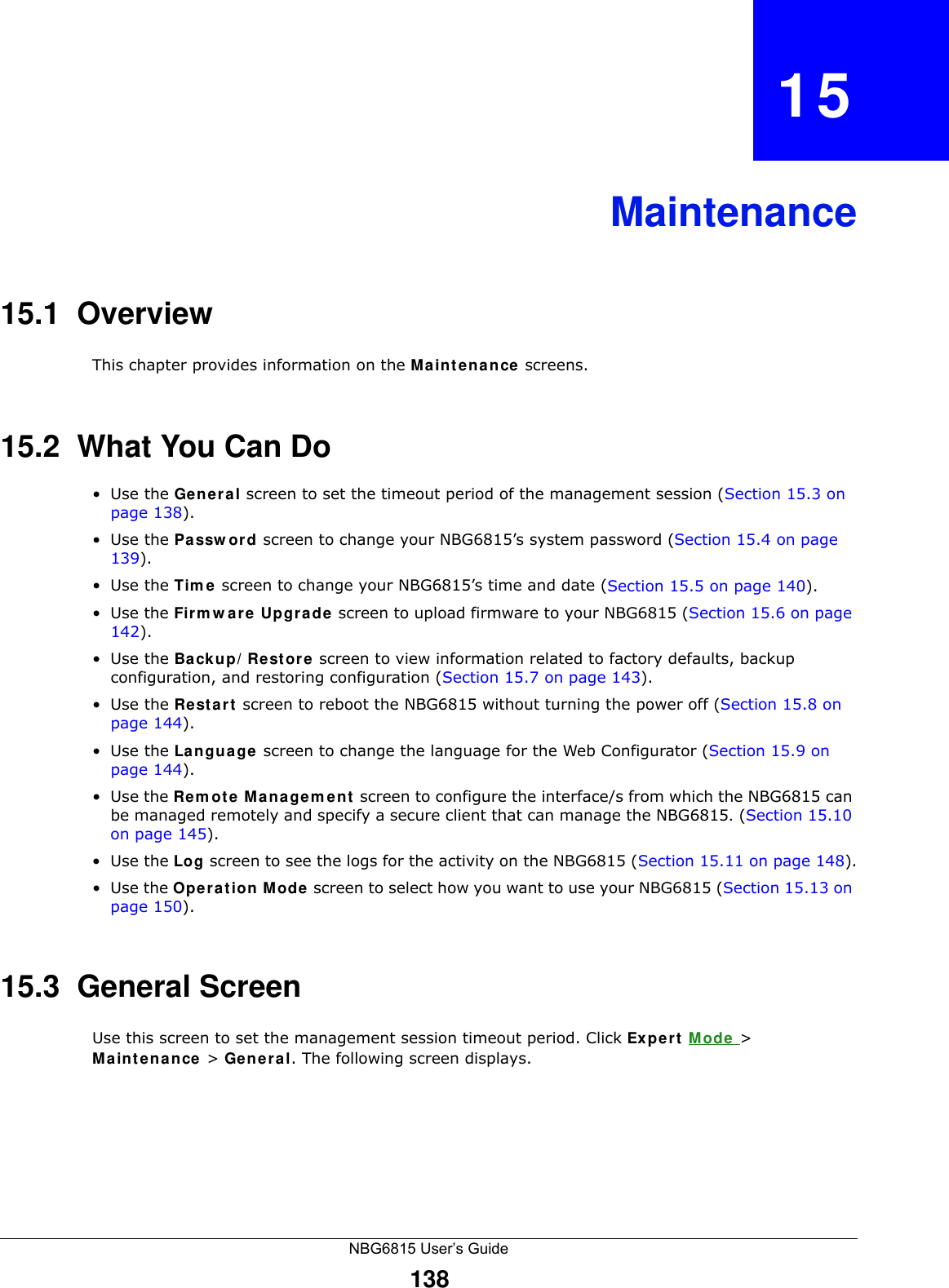
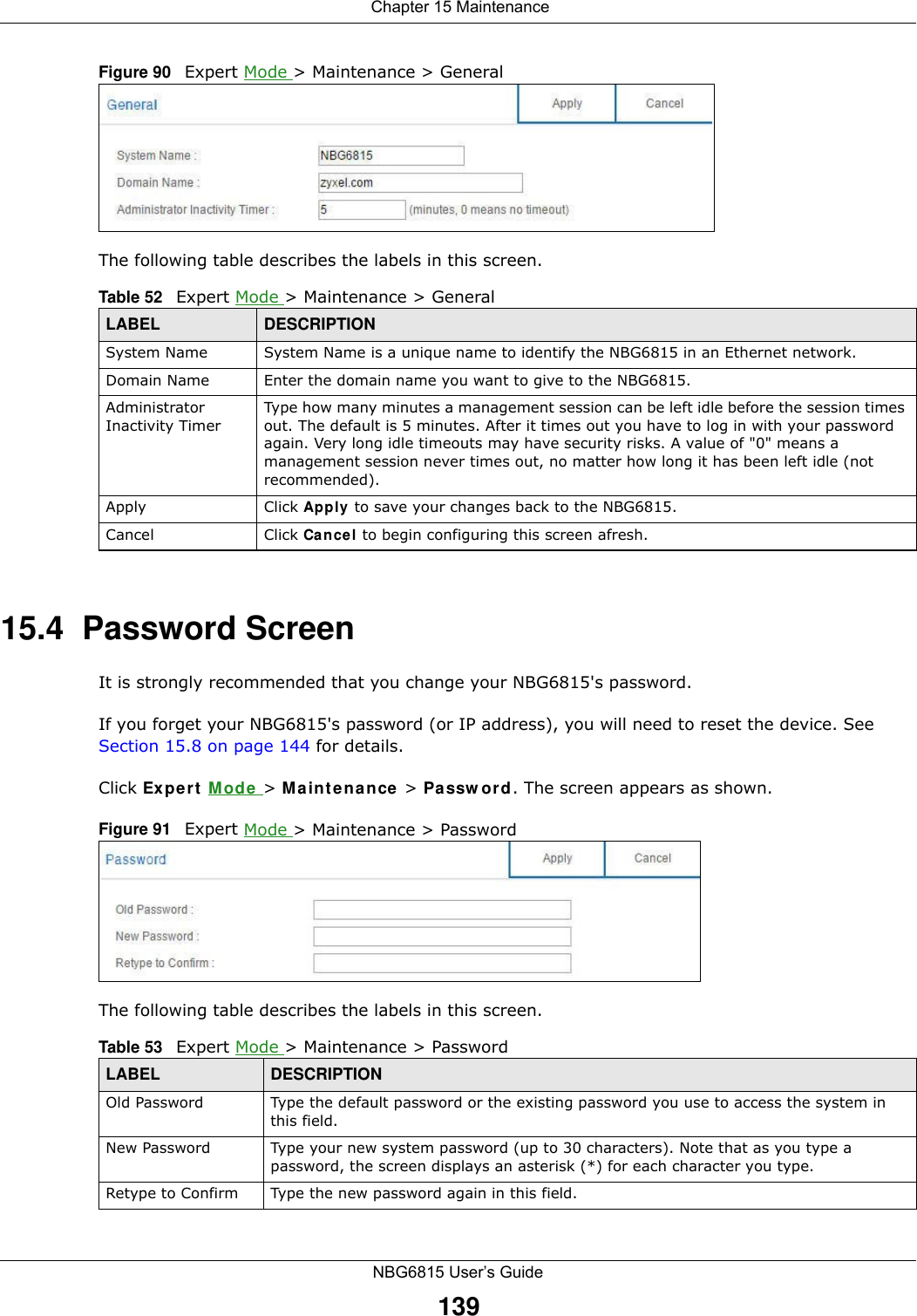
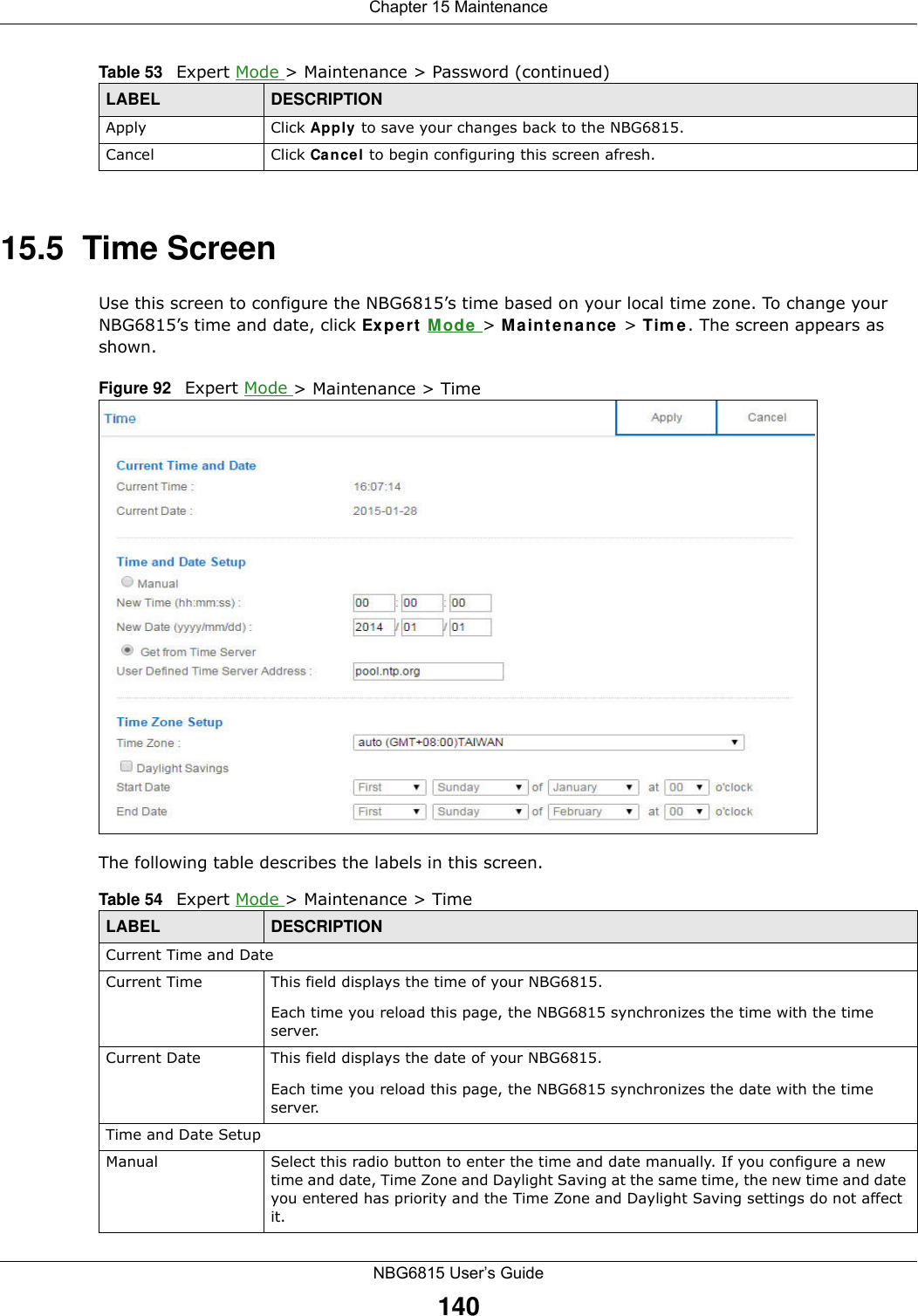
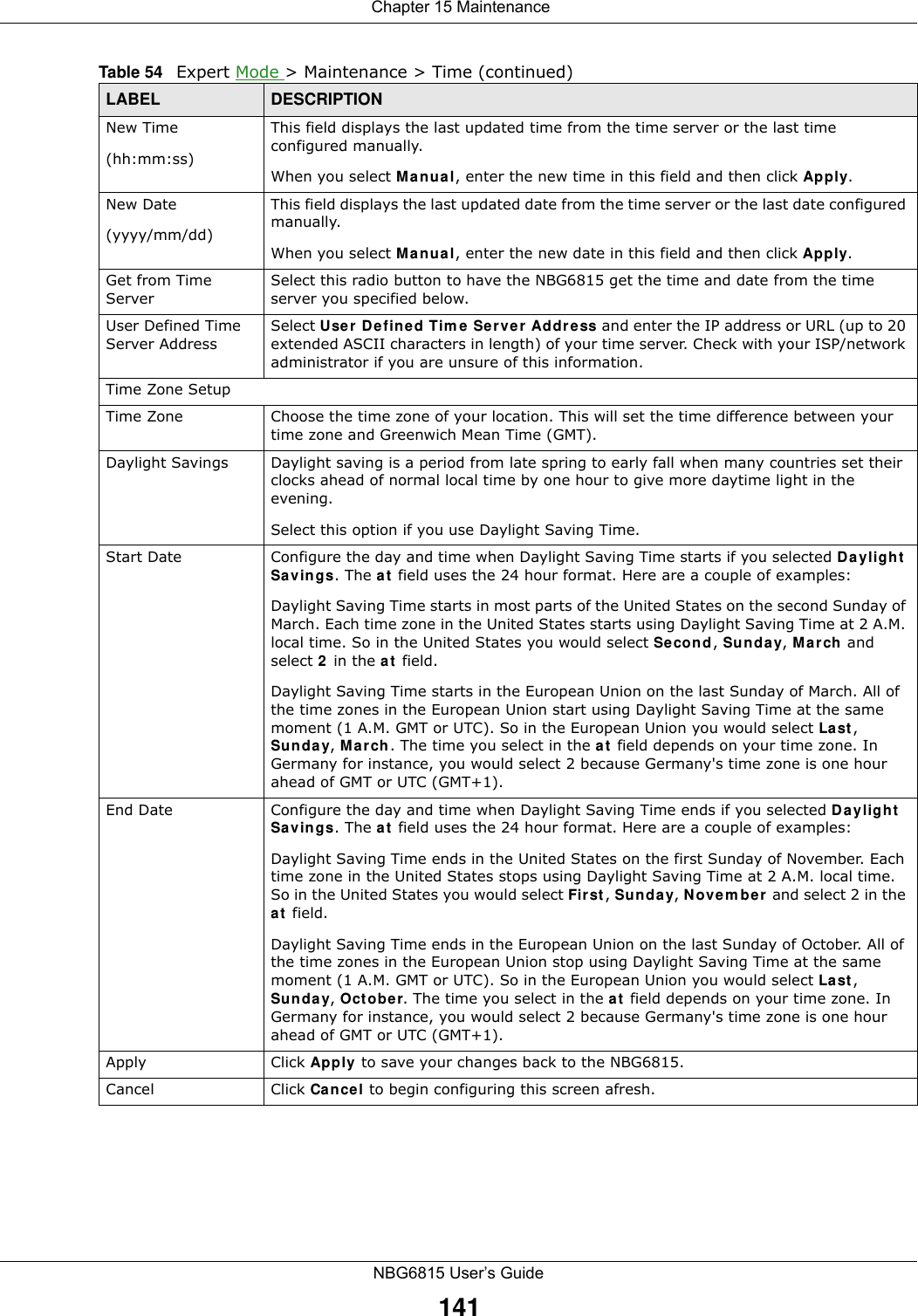
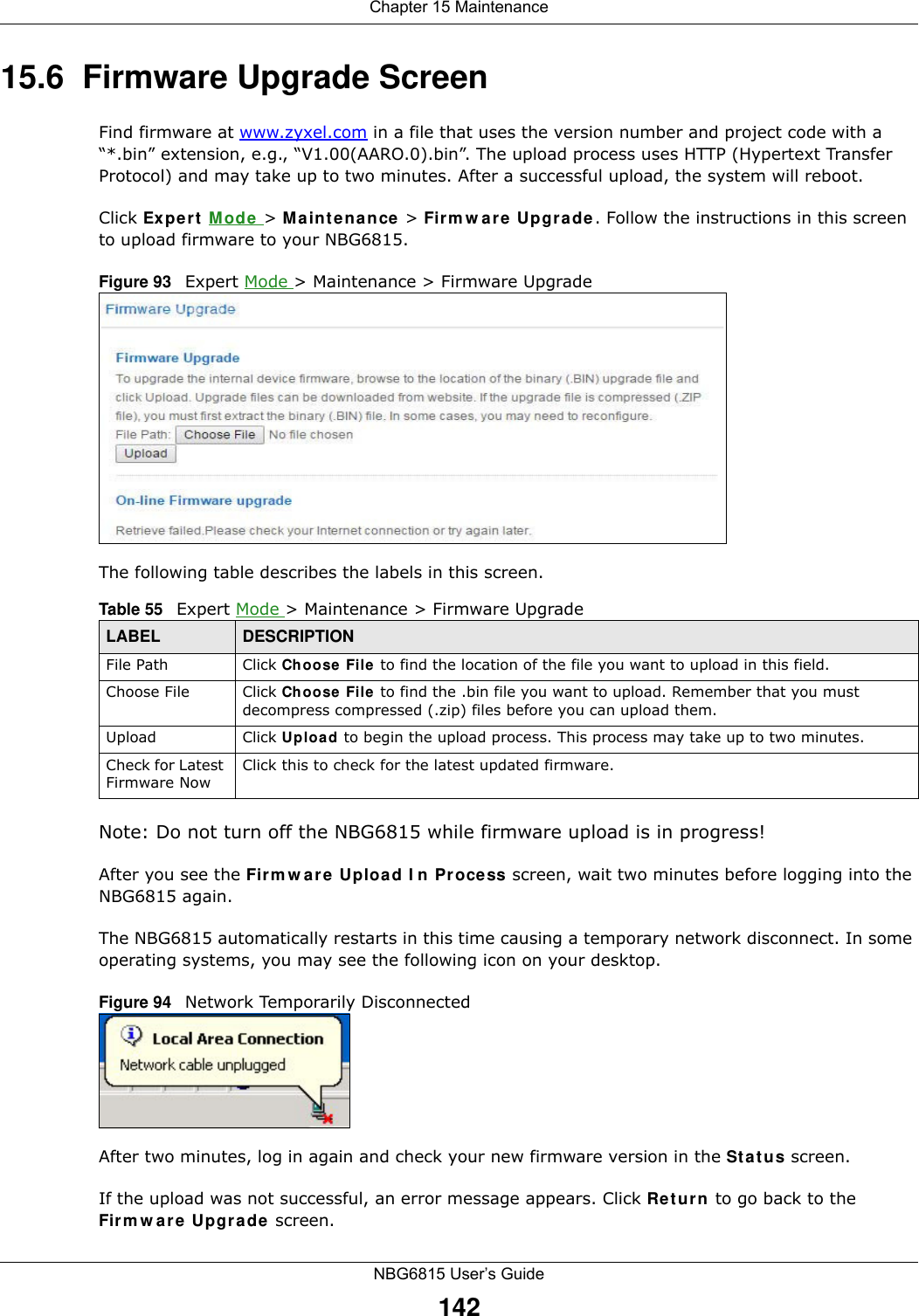
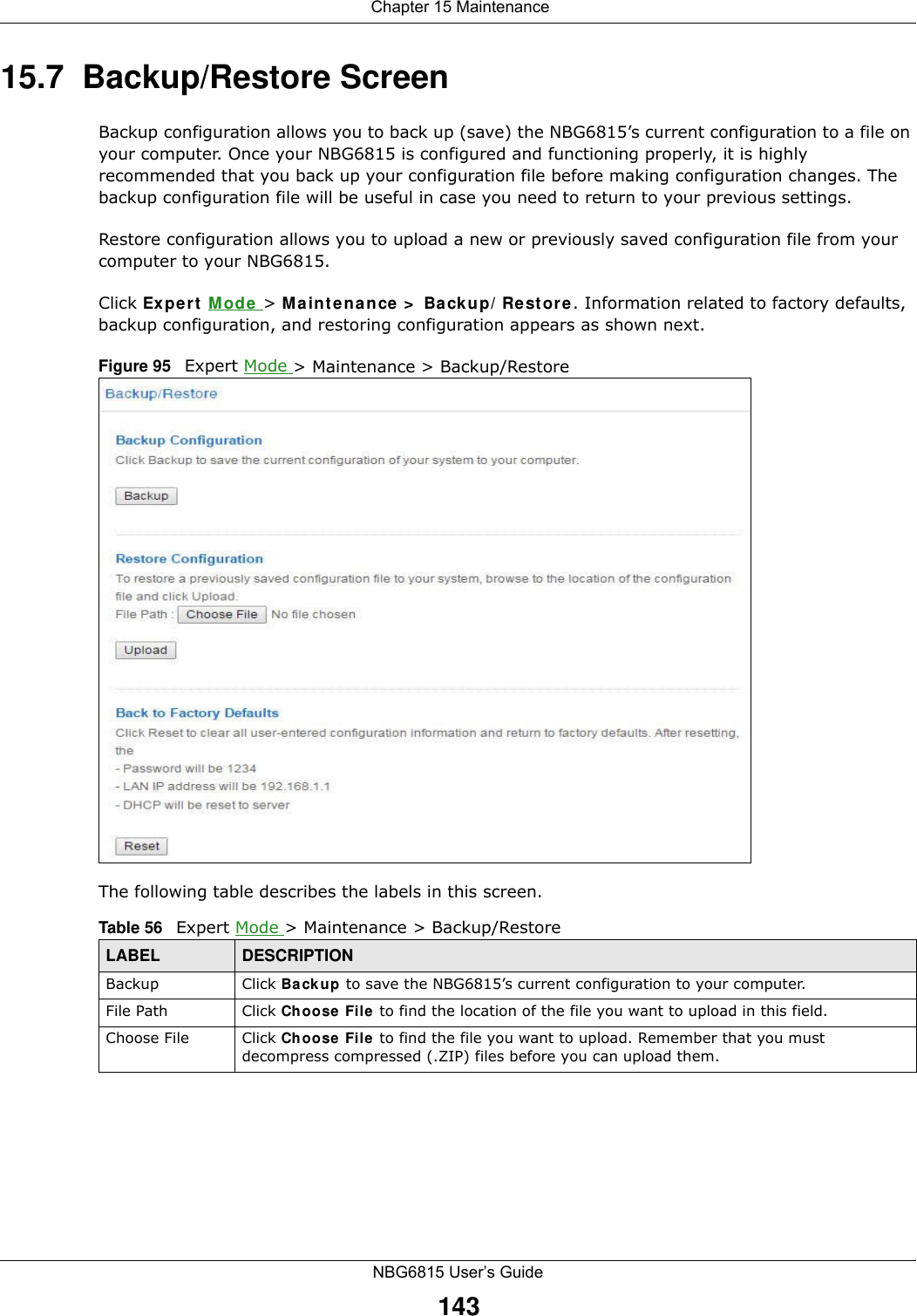
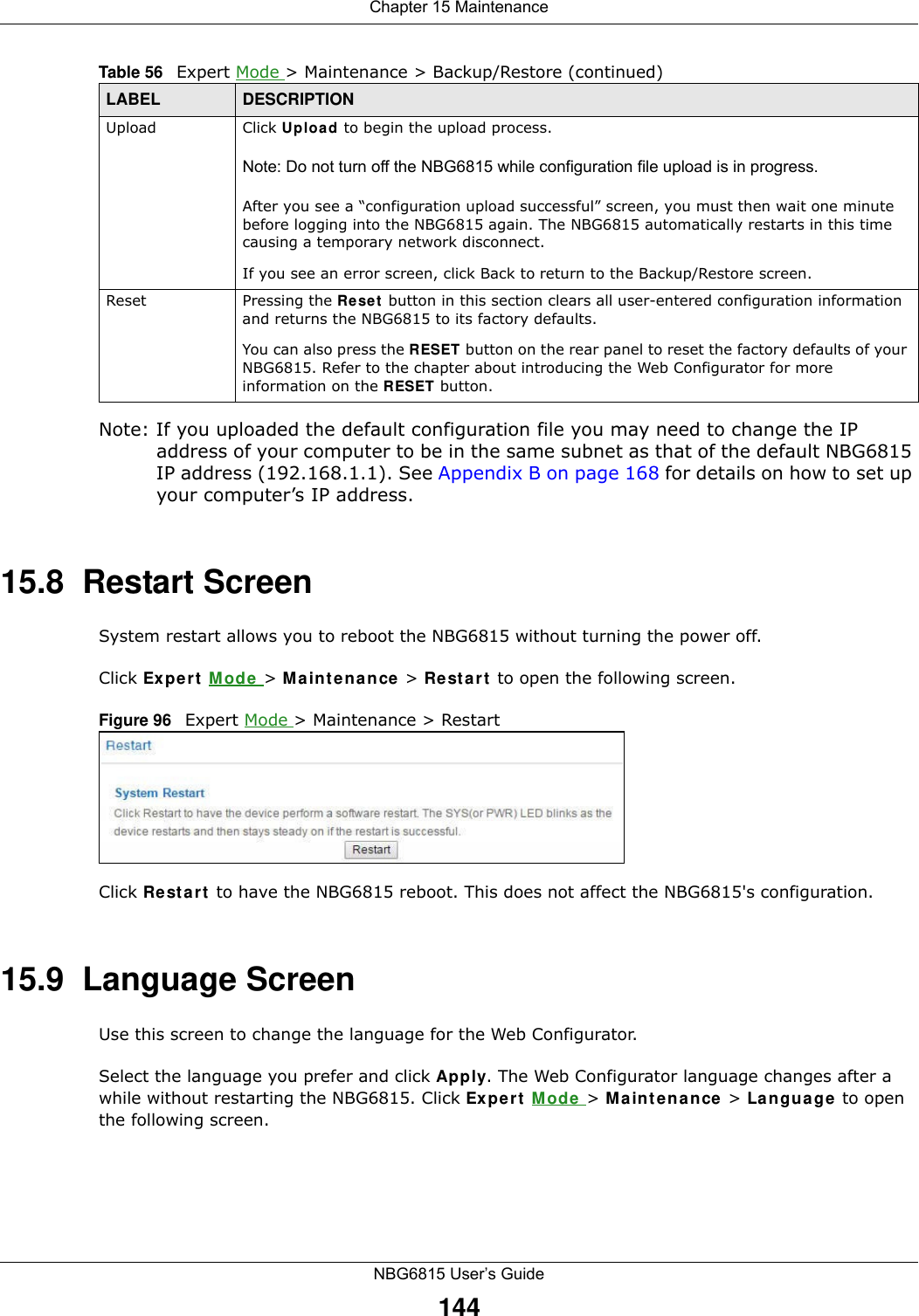
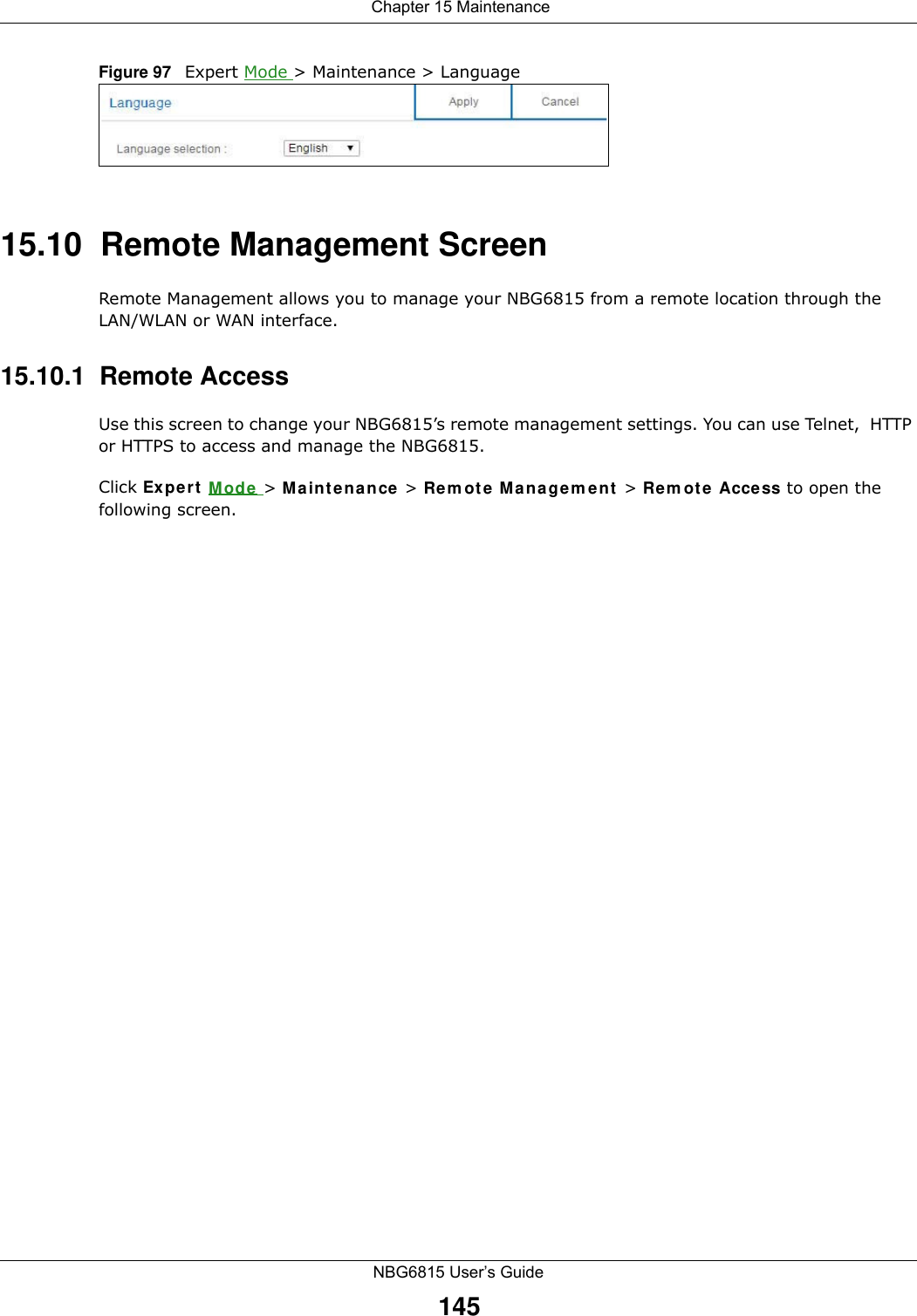
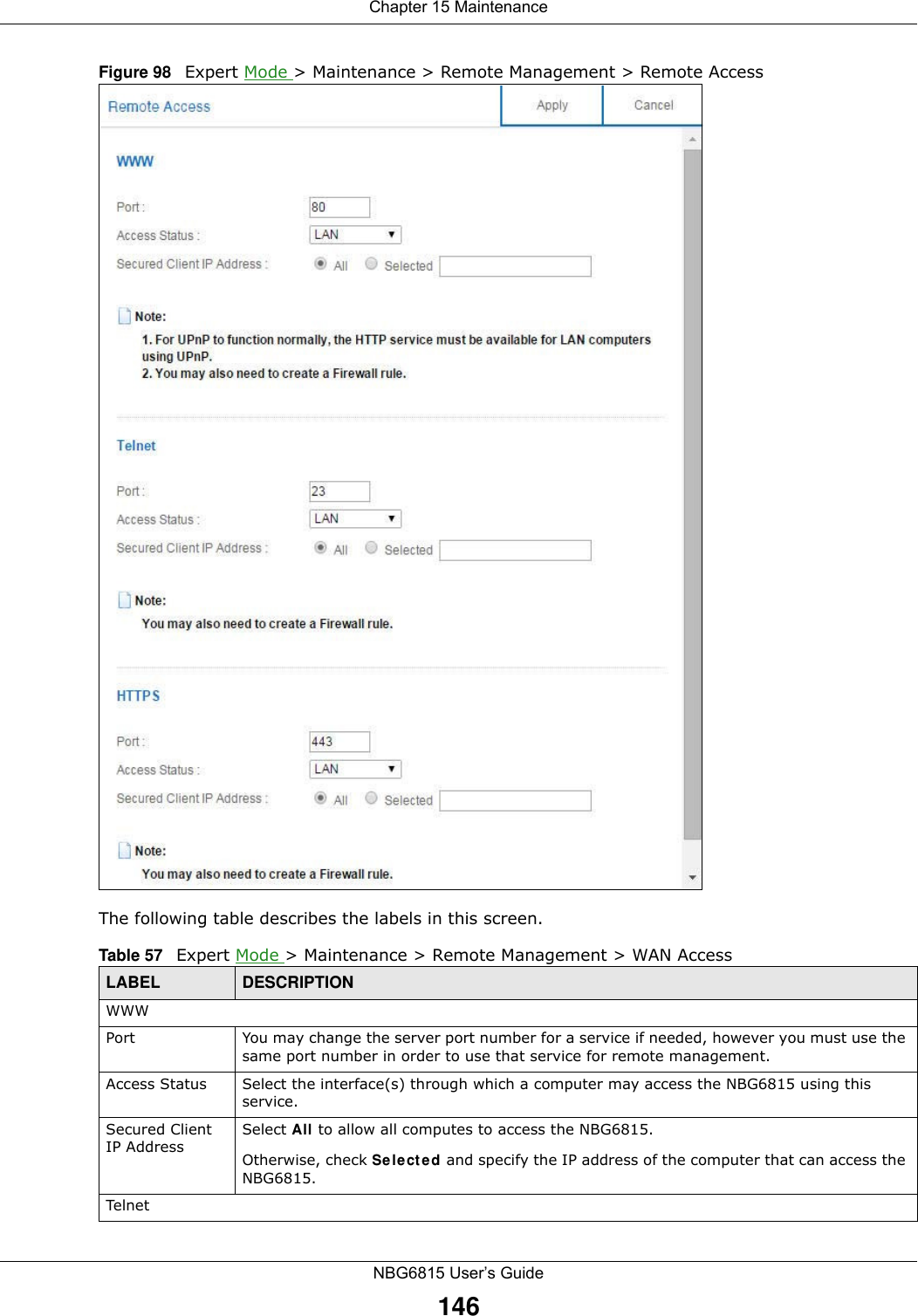
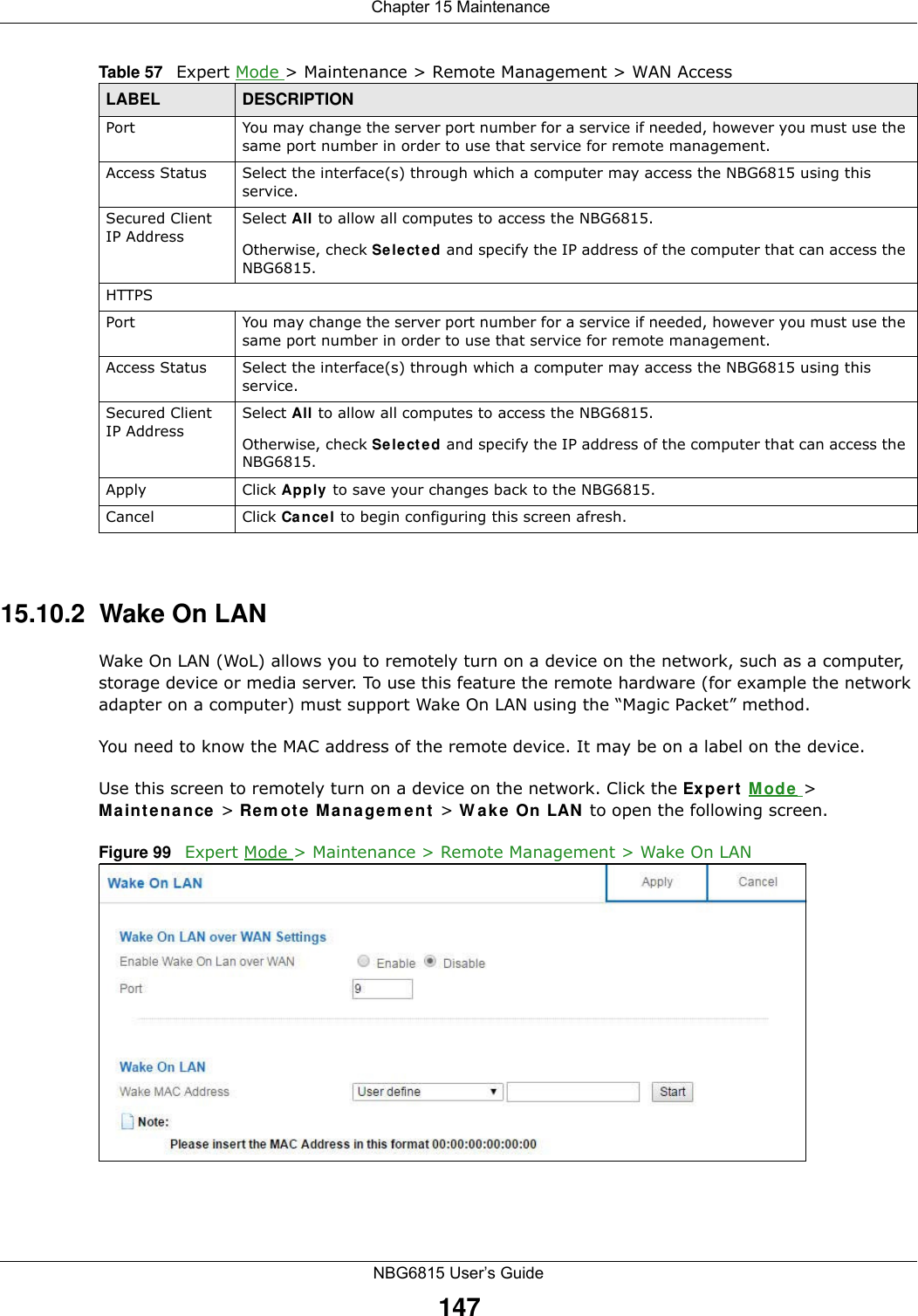
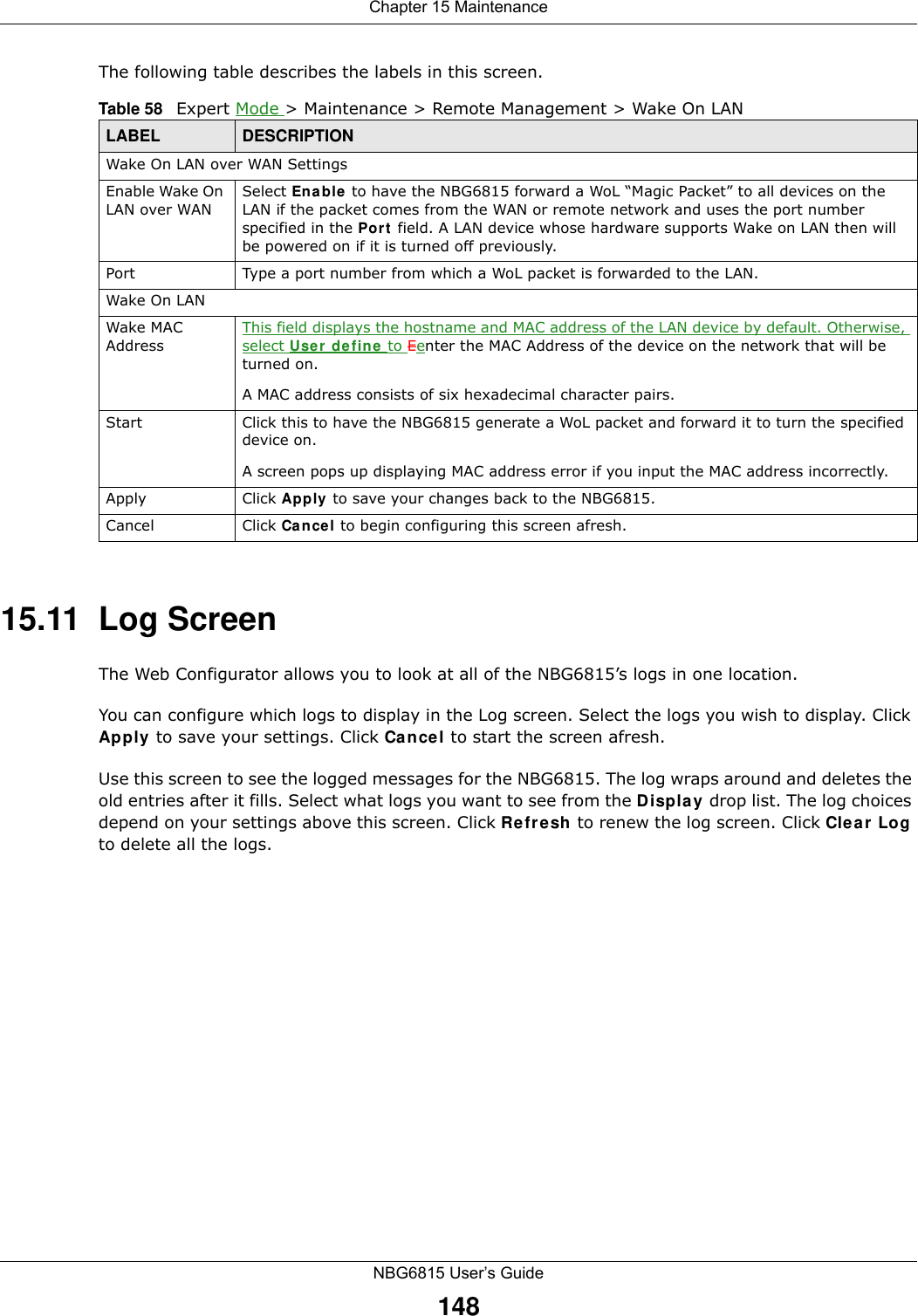
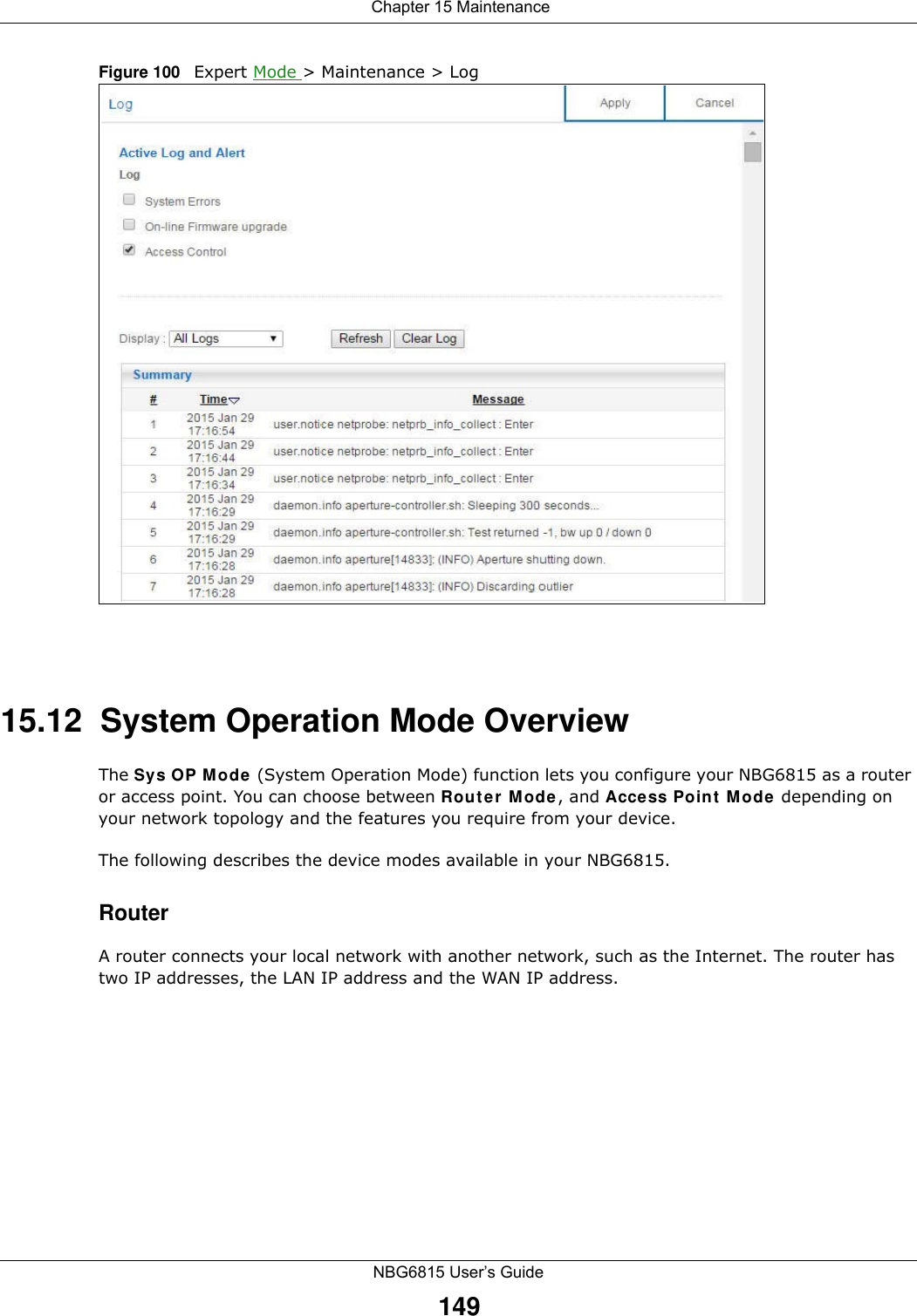
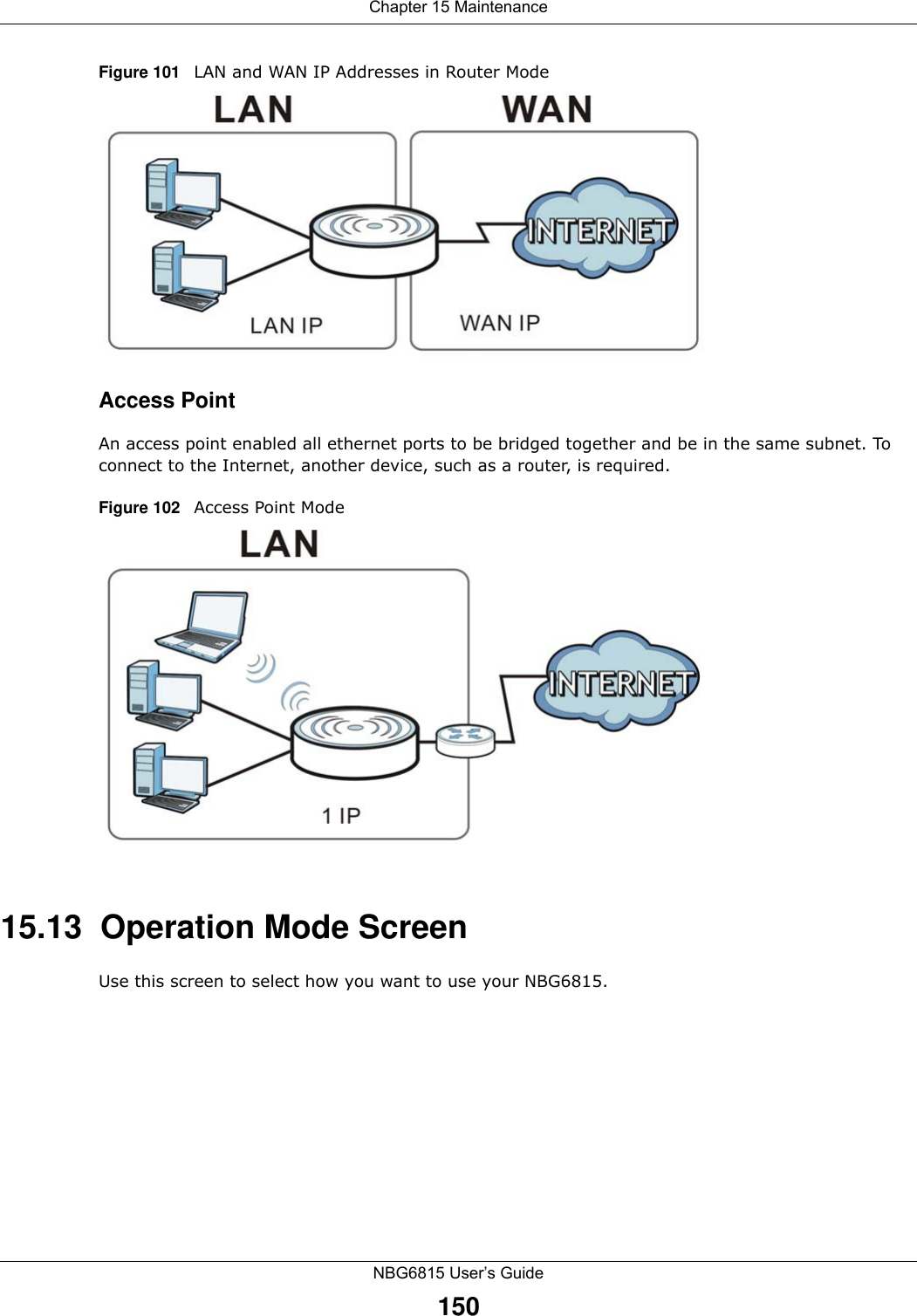
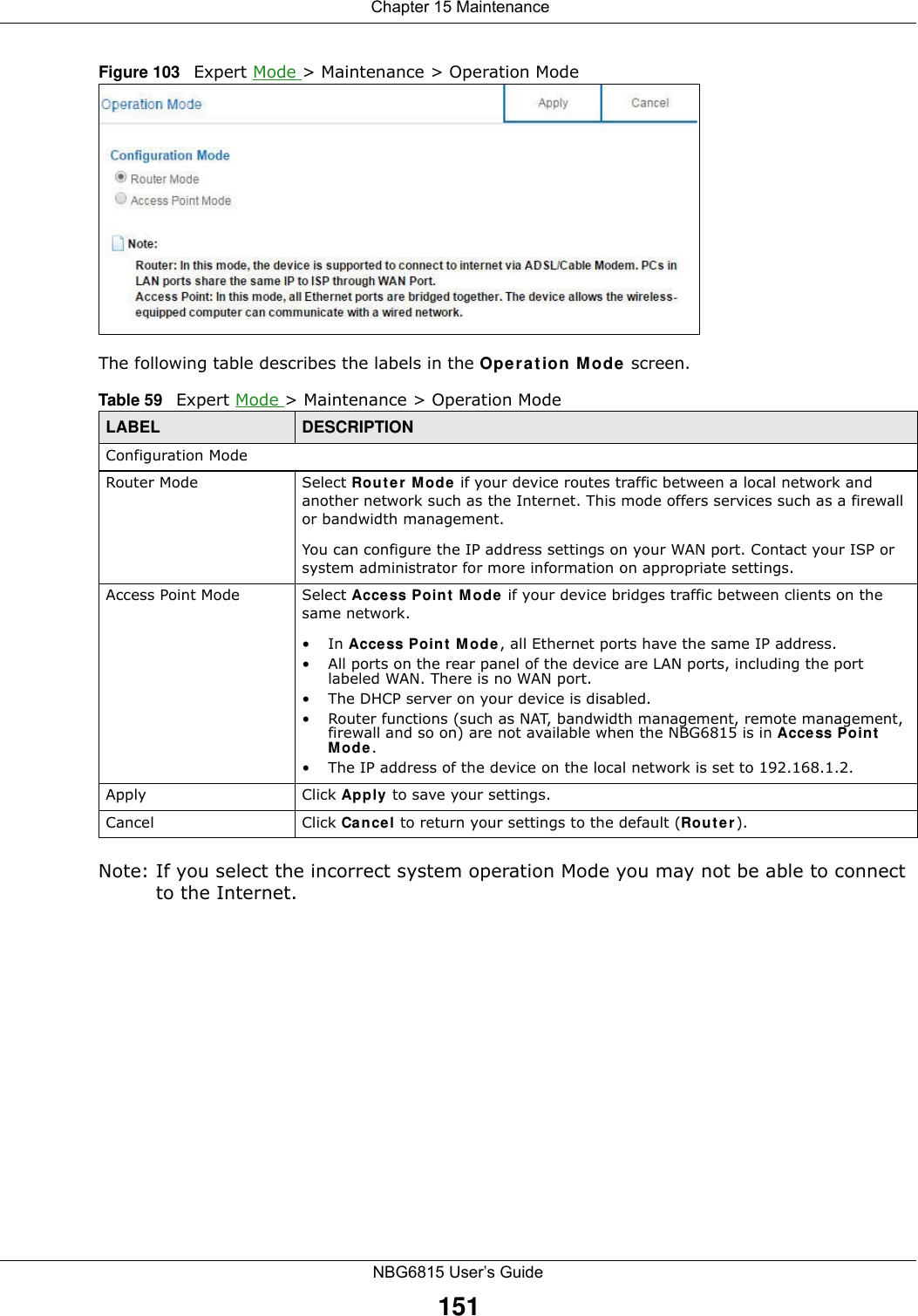
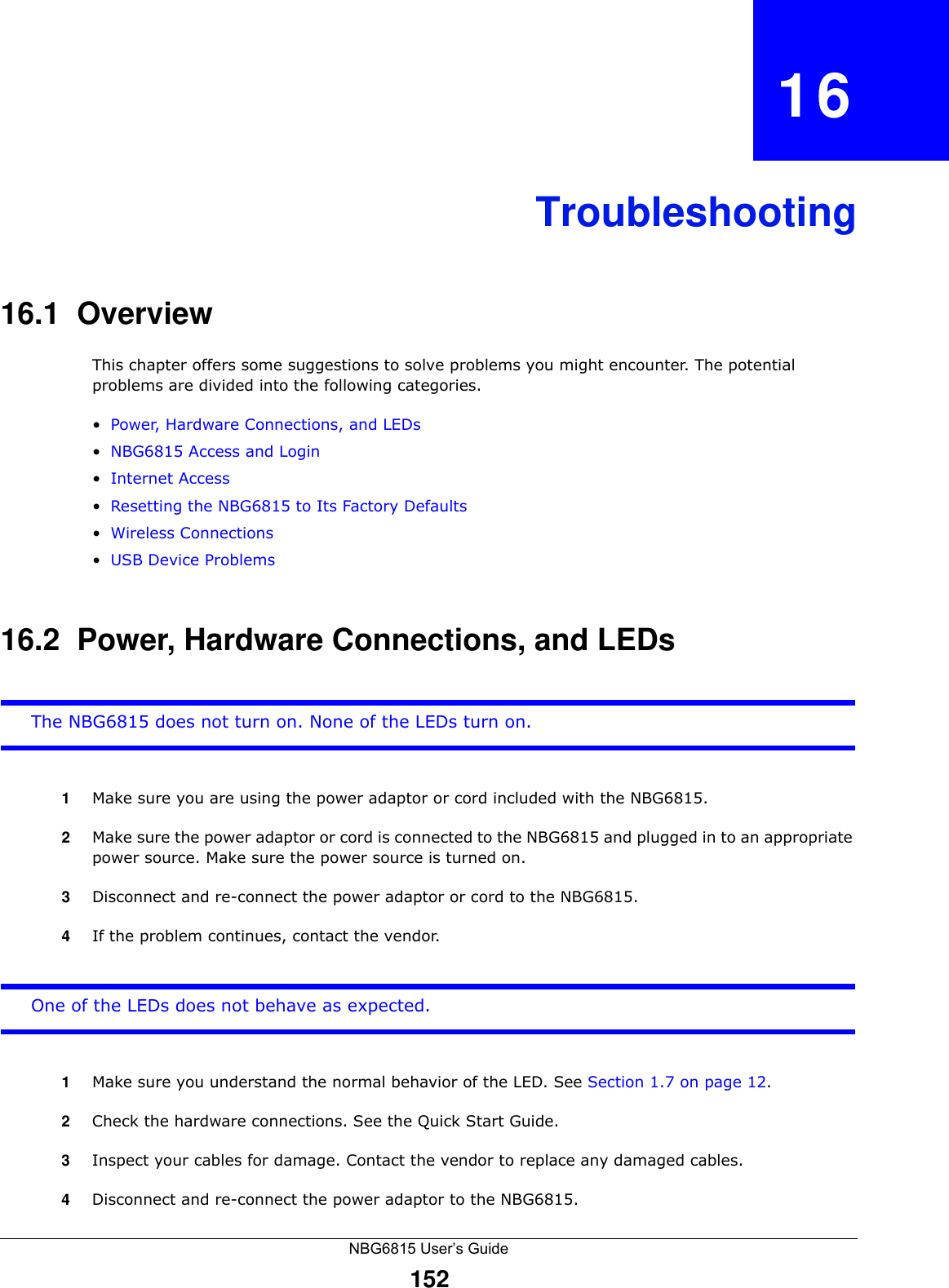
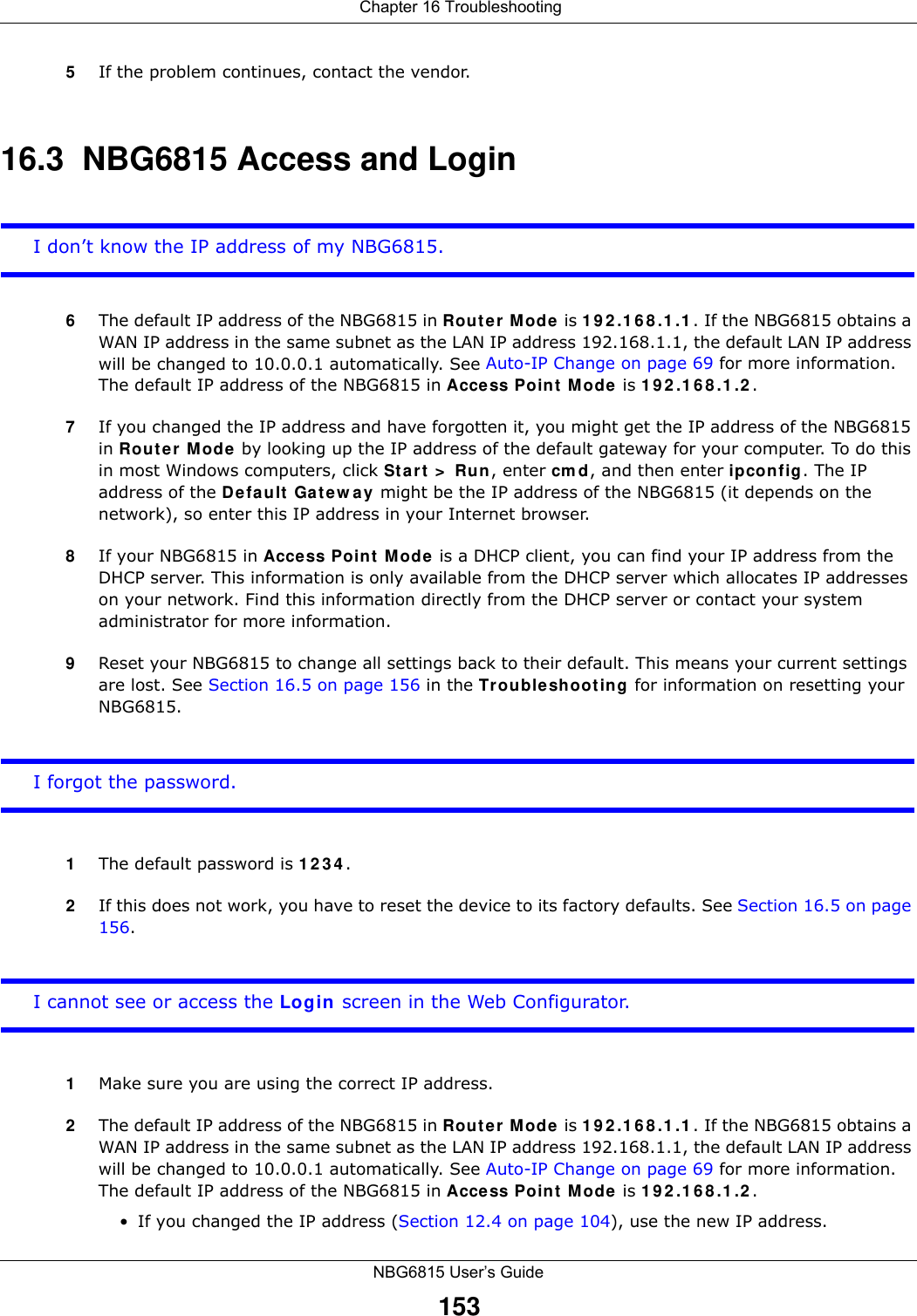
![Chapter 16 TroubleshootingNBG6815 User’s Guide154• If you changed the IP address and have forgotten it, see the troubleshooting suggestions for I don’t know the IP address of my NBG6815.3Check the hardware connections, and make sure the LEDs are behaving as expected. See the Quick Start Guide. 4Make sure your Internet browser does not block pop-up windows and has JavaScript and Java enabled. See Appendix A on page 159.5Make sure your computer is in the same subnet as the NBG6815. (If you know that there are routers between your computer and the NBG6815, skip this step.)• If there is a DHCP server on your network, make sure your computer is using a dynamic IP address. See Section 12.4 on page 104. • If there is no DHCP server on your network, make sure your computer’s IP address is in the same subnet as the NBG6815. See Section 12.4 on page 104.6Reset the device to its factory defaults, and try to access the NBG6815 with the default IP address. See Section 1.5 on page 11.7If the problem continues, contact the network administrator or vendor, or try one of the advanced suggestions.Advanced Suggestions• Try to access the NBG6815 using another service, such as Telnet. If you can access the NBG6815, check the remote management settings and firewall rules to find out why the NBG6815 does not respond to HTTP.• If your computer is connected to the WAN port or is connected wirelessly, use a computer that is connected to a LAN/ETHERNET port.I can see the Login screen, but I cannot log in to the NBG6815.1Make sure you have entered the password correctly. The default password is 1234. This field is case-sensitive, so make sure [Caps Lock] is not on. 2This can happen when you fail to log out properly from your last session. Try logging in again after 5 minutes.3Disconnect and re-connect the power adaptor or cord to the NBG6815. 4If this does not work, you have to reset the device to its factory defaults. See Section 16.5 on page 156.16.4 Internet AccessI cannot access the Internet.](https://usermanual.wiki/ZyXEL-Communications/NBG6815.User-manual-1/User-Guide-2825178-Page-154.png)
![Chapter 16 TroubleshootingNBG6815 User’s Guide1551Check the hardware connections, and make sure the LEDs are behaving as expected. See the Quick Start Guide.2Go to Expert > Maintenance > Operation Mode. Check your System Operation Mode setting. • If the NBG6815 is in Router Mode, make sure the WAN port is connected to a broadband modem or router with Internet access. Your computer and the NBG6815 should be in the same subnet.• If the NBG6815 is in Access Point Mode, make sure the WAN port is connected to a broadband modem or router with Internet access and your computer is set to obtain an dynamic IP address.3If the NBG6815 is in Router Mode, make sure you entered your ISP account information correctly in the wizard or the WAN screen. These fields are case-sensitive, so make sure [Caps Lock] is not on.4If you are trying to access the Internet wirelessly, make sure the wireless settings in the wireless client are the same as the settings in the AP.5Disconnect all the cables from your device, and follow the directions in the Quick Start Guide again. 6If the problem continues, contact your ISP.I cannot access the Internet anymore. I had access to the Internet (with the NBG6815), but my Internet connection is not available anymore.1Check the hardware connections, and make sure the LEDs are behaving as expected. See the Quick Start Guide and Section 1.7 on page 12. 2Reboot the NBG6815.3If the problem continues, contact your ISP. The Internet connection is slow or intermittent.1There might be a lot of traffic on the network. Look at the LEDs, and check Section 1.7 on page 12. If the NBG6815 is sending or receiving a lot of information, try closing some programs that use the Internet, especially peer-to-peer applications.2Check the signal strength. If the signal strength is low, try moving the NBG6815 closer to the AP if possible, and look around to see if there are any devices that might be interfering with the wireless network (for example, microwaves, other wireless networks, and so on).3Reboot the NBG6815.4If the problem continues, contact the network administrator or vendor, or try one of the advanced suggestions.Advanced Suggestion](https://usermanual.wiki/ZyXEL-Communications/NBG6815.User-manual-1/User-Guide-2825178-Page-155.png)
